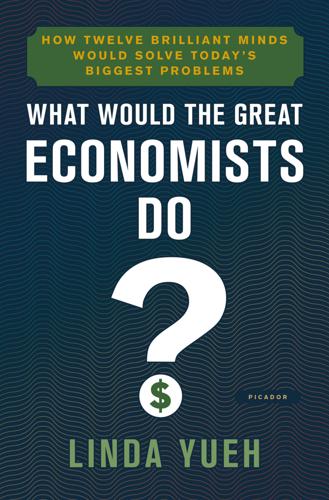
What Would the Great Economists Do?: How Twelve Brilliant Minds Would Solve Today's Biggest Problems
by
Linda Yueh
Published 4 Jun 2018
North, Institutions, Institutional Change and Economic Performance, p. 140. 12 – Robert Solow: Do We Face a Slow-Growth Future? 1. Nobelprize.org, 1987, ‘Robert M. Solow – Biographical’, Nobel Media AB 2014; www.nobelprize.org/nobel_prizes/economic-sciences/laureates/1987/solow-bio.html 2. Barnaby J. Feder, 1987, ‘Man in the News: Robert Merton Solow; Tackling Everyday Economic Problems’, The New York Times, 22 October. 3. Ibid. 4. Nobelprize.org, ‘Robert M. Solow – Biographical’. 5. Robert Solow, 1956, ‘A Contribution to the Theory of Economic Growth’, Quarterly Journal of Economics, 70(1), pp. 65–94; Robert Solow, 1957, ‘Technical Change and the Aggregate Production Function’, Review of Economics and Statistics, 39(3), pp. 312–20. 6.
…
Solow – Prize Lecture: Growth Theory and After’, Nobel Media AB 2014; www.nobelprize.org/nobel_prizes/economic-sciences/laureates/1987/solow-lecture.html 15. Ibid. 16. Ibid. 17. Ibid. 18. Ibid. 19. Robert Solow, 1989, ‘How Economic Ideas Turn to Mush’, in The Spread of Economic Ideas, eds. David Colander and A. W. Coats, Cambridge: Cambridge University Press, pp. 75–84. 20. Clement, ‘Interview with Robert Solow’. 21. Feder, ‘Man in the News’. 22. Clement, ‘Interview with Robert Solow’. Epilogue: The Future of Globalization 1. ‘Globalization and Rapid Change Sparked Backlash, Says Obama’, Financial Times, 15 November 2016. 2.
…
It’s especially pressing for rich countries, where the working-age population is ageing or even shrinking and having better-skilled workers is even more important. How to raise productivity lies at the heart of whether or not we’re doomed to a stagnant future. What would Robert Solow, whose pioneering work has helped us to understand what generates economic growth, make of the prospect of low productivity and a slow-growth future for major economies? The life and times of Robert Solow Robert Solow was born in 1924 in Brooklyn. The son of Jewish immigrants, his was the first generation of the family to go to college. He attributes his intellectual awakening to the New York City public school system, where a teacher got him interested in nineteenth-century French and Russian novelists.

Tyler Cowen - Stubborn Attachments A Vision for a Society of Free, Prosperous, and Responsible Individuals
by
Meg Patrick
From Morality to Virtue. Oxford: Oxford University Press. 129 Smart, J.C.C. and Williams, Bernard. Utilitarianism: For and Against. Cambridge: Cambridge University Press, 1973. Solow, Robert M. 1956. “A Contribution to the Theory of Economic Growth.” Quarterly Journal of Economics 70(1): 65-94. Solow, Robert M. 1957. “Technical Change and the Aggregate Production Function.” The Review of Economics and Statistics 39(3): 312-320. Solow, Robert, 1974. “The Economics of Resources or the Resources of Economics,” American Economic Review 64, 1-14. Stanczyk, Lucas. “Productive Justice.” Philosophy and Public Affairs, 40, 2, 2012.
…
The details of this distinction are complicated, however, because economic models provide differing accounts of which changes alter growth rates, as opposed to bringing one-off changes or improvements. The most prominent economic approach to growth, the Solow model, is named after MIT economist and Nobel Laureate Robert Solow, who laid out the basics of the model in the 1950s. 74 The Solow model, in its most basic form, postulates a stripped-down economy-wide production function based on constant returns to scale. National output is the result of capital inputs, labor inputs, and technological progress, which renders both capital and labor more effective.49 In this model the primary way to increase ongoing growth is to induce a higher rate of technological innovation.
…
Washington, DC: American Psychological Association. Argyle, M. (1999). Causes and correlates of happiness. In D. Kahneman, E. Diener, & N. Schwarz (Eds.). Well-being: The foundations of hedonic psychology. New York; Russell Sage Foundation Arrow, Kenneth J., Edward Leamer, Howard Schuman, and Robert Solow. 1994. “Comments of Proposed NOAA Scope Test,” Appendix D of Comments of Proposed NOAA/DOI Regulations on Natural Resource Damage Assessment, U.S. Environmental Protection Agency. 112 Arrow, Kenneth J. and Maureen L. Cropper, Christian Gollier, Ben Groom, Geoffrey M. Heal, Richard G. Newell, William D.

Stubborn Attachments: A Vision for a Society of Free, Prosperous, and Responsible Individuals
by
Tyler Cowen
Published 15 Oct 2018
From Morality to Virtue. Oxford: Oxford University Press. Smart, J.C.C., and Bernard Williams. 1973. Utilitarianism: For and Against. Cambridge: Cambridge University Press. Solow, Robert M. 1956. “A Contribution to the Theory of Economic Growth.” Quarterly Journal of Economics 70, no. 1: 65–94. Solow, Robert M. 1957. “Technical Change and the Aggregate Production Function.” The Review of Economics and Statistics 39, no. 3: 312–320. Solow, Robert M. 1974. “The Economics of Resources or the Resources of Economics.” American Economic Review 64: 1–14. Stanczyk, Lucas. 2012. “Productive Justice.” Philosophy and Public Affairs 40, no. 2.
…
The details of this distinction are complicated, however, because economic models provide differing accounts of which changes alter growth rates, as opposed to bringing one-off changes or improvements. The most prominent economic approach to growth, the Solow model, is named after MIT economist and Nobel Laureate Robert Solow, who laid out the basics of the model in the 1950s. The Solow model postulates a stripped-down economy-wide production function based on constant returns to scale. National output is the result of capital inputs, labor inputs, and technological progress, which renders both capital and labor more effective.10 In this model, the primary way to increase ongoing growth is to induce a higher rate of technological innovation.
…
.: American Psychological Association. Argyle, M. 1999. “Causes and Correlates of Happiness.” In Well-Being: The Foundations of Hedonic Psychology, edited by Daniel Kahneman, Edward Diener, and Nelson Schwarz. New York: Russell Sage Foundation. Arrow, Kenneth J., Edward Leamer, Howard Schuman, and Robert Solow. 1994. “Comments of Proposed NOAA Scope Test.” Appendix D of Comments of Proposed NOAA/DOI Regulations on Natural Resource Damage Assessment. U.S. Environmental Protection Agency. Arrow, Kenneth J., Maureen L. Cropper, Christian Gollier, Ben Groom, Geoffrey M. Heal, Richard G. Newell, William D.
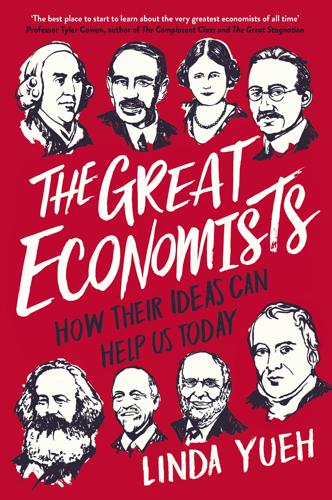
The Great Economists: How Their Ideas Can Help Us Today
by
Linda Yueh
Published 15 Mar 2018
North, Institutions, Institutional Change and Economic Performance, p. 140. Chapter 12 – Robert Solow: Do We Face a Slow-Growth Future? 1. Nobelprize.org, 1987, ‘Robert M. Solow – Biographical’, Nobel Media AB 2014; www.nobelprize.org/nobel_prizes/economic-sciences/laureates/1987/solow-bio.html 2. Barnaby J. Feder, 1987, ‘Man in the News: Robert Merton Solow; Tackling Everyday Economic Problems’, The New York Times, 22 October. 3. Ibid. 4. Nobelprize.org, ‘Robert M. Solow – Biographical’. 5. Robert Solow, 1956, ‘A Contribution to the Theory of Economic Growth’, Quarterly Journal of Economics, 70(1), pp. 65–94; Robert Solow, 1957, ‘Technical Change and the Aggregate Production Function’, Review of Economics and Statistics, 39(3), pp. 312–20. 6.
…
Solow – Prize Lecture: Growth Theory and After’, Nobel Media AB 2014; www.nobelprize.org/nobel_prizes/economic-sciences/laureates/1987/solow-lecture.html 15. Ibid. 16. Ibid. 17. Ibid. 18. Ibid. 19. Robert Solow, 1989, ‘How Economic Ideas Turn to Mush’, in The Spread of Economic Ideas, eds. David Colander and A. W. Coats, Cambridge: Cambridge University Press, pp. 75–84. 20. Clement, ‘Interview with Robert Solow’. 21. Feder, ‘Man in the News’. 22. Clement, ‘Interview with Robert Solow’. Epilogue: The Future of Globalization 1. ‘Globalization and Rapid Change Sparked Backlash, Says Obama’, Financial Times, 15 November 2016. 2. Jon Huang, Samuel Jacoby, Michael Strickland and K.
…
It’s especially pressing for rich countries, where the working-age population is ageing or even shrinking and having better-skilled workers is even more important. How to raise productivity lies at the heart of whether or not we’re doomed to a stagnant future. What would Robert Solow, whose pioneering work has helped us to understand what generates economic growth, make of the prospect of low productivity and a slow-growth future for major economies? The life and times of Robert Solow Robert Solow was born in 1924 in Brooklyn. The son of Jewish immigrants, his was the first generation of the family to go to college. He attributes his intellectual awakening to the New York City public school system, where a teacher got him interested in nineteenth-century French and Russian novelists.
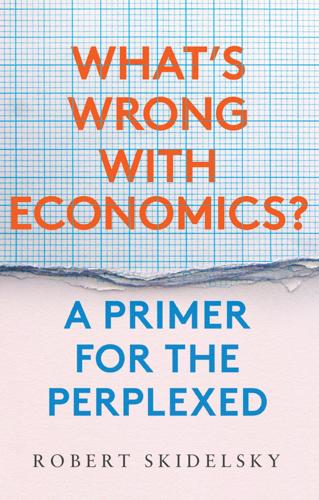
What's Wrong With Economics: A Primer for the Perplexed
by
Robert Skidelsky
Published 3 Mar 2020
Samuelson, Paul (1970). Economics (8th ed.), New York: McGraw-Hill. Samuelson, Paul and Solow, Robert M. (1960). ‘Analytical Aspects of Anti-Inflation Policy’, American Economic Review, 50 (2): 177–94. Schelling, Thomas (2006 [1978]). Micromotives and Macrobehavior, New York: W.W. Norton. Skoufias, Emmanuel, Parker, Susan W., Behrman, Jere R. and Pessino, Carola (2001). ‘Conditional Cash Transfers and Their Impact on Child Work and Schooling: Evidence from the PROGRESA Program in Mexico’, Economía, Vol. 2 (1): 45–96. Solow, Robert (1985). ‘Economic History and Economics’, American Economic Review, Vol. 75 (2): 328–31.
…
But the wholesale formalisation of economics rests entirely on the premise that the variables of interest can readily be expressed as mathematical quantities. Many behavioural facts such as friendship or love of power do not lend themselves to such treatment. The tight logical relations, therefore, simply exhibit the theoreticians’ prowess in tight logical reasoning. As Robert Solow (b.1924) has pointed out, ‘there is enough for us to do without pretending to a degree of completeness and precision which we cannot deliver’. The functions of analytic economics are ‘to organise incomplete knowledge, see connections that the untrained eye might miss, tell plausible causal stories with the help of a few basic principles, make rough quantitative judgments about consequences of economic policy and other events.
…
Denison’s use of time-series to estimate relationships of key inputs (labour, capital, education, efficiency) in the growth of output.4 But as we have already argued in Chapter 5, econometrics is vastly oversold as a way of testing theories: in addition to model specification problems, as soon as you get enough observations, too much time has passed to assume conditions are stationary. For example, do high taxes hinder economic growth? The evidence is inconclusive. Much of economics can never be ‘proved’. Robert Solow offers a devastating critique of the identification of economic history with econometrics. Econometrics, he says, is ‘history blind’. The best and brightest in the profession proceed as if economics is the physics of society. There is a single universally valid model. It only needs to be applied.
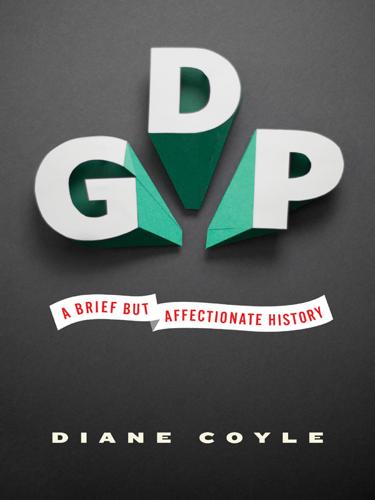
GDP: A Brief but Affectionate History
by
Diane Coyle
Published 23 Feb 2014
In the 1950s, when the economic theory of growth was in its early stages, the figures were available for just a few of the most developed economies. Early theories of how economies grow, and how the process of economic development occurs, set out by economists such as Roy Harrod and Evsey Domar, Robert Solow, and Paul Rosenstein-Rodan in the 1950s had little empirical evidence available with which to test their theories. So it is not surprising that the theories, although expressed in the elegant algebra beloved of modern economists, were simple. Solow’s model of growth remained the basic work-horse theory until the 1980s.
…
Because separately, telecommunications technology has been revolutionized by a sequence of innovations such as fiber-optic cables, and in particular mobile telephony and other wireless communications. This epoch of the information and communications revolution has spanned forty years. THE NEW ECONOMY BOOM It was obvious by the mid-1980s that a lot of businesses were buying and using computers, but what effect this was having on the economy was not at all apparent. Robert Solow wrote a frequently quoted New York Times Book Review article in 1987 claiming, “You can see the computer age everywhere but the productivity statistics.”4 In fact, it took the convergence of a number of separate streams of technological innovation, plus the investment in new computer and communications equipment, plus the reorganization of businesses to use these new tools, before any benefit in terms of productivity or GDP could occur.
…
The Sino-U.S. bilateral trade imbalance has been greatly inflated,” according to one study of the statistics.7 Value-added trade statistics are now becoming available, and their study is likely to change the big picture we hold in our minds about the shape of the world economy. PRODUCTIVITY If economists were to play a game of word association, the one that would leap to mind on hearing productivity would be puzzle. I already quoted Robert Solow’s famous 1987 version of the productivity puzzle: “You can see the computer age everywhere but in the productivity figures.” As discussed in chapter 5, the New Economy era from the mid-1990s to 2001 did see productivity growth increase in the official figures, although that has slowed down again in the postcrisis economy.
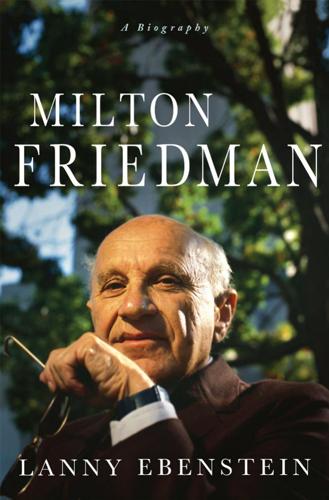
Milton Friedman: A Biography
by
Lanny Ebenstein
Published 23 Jan 2007
In the review, Koopmans argued that because Burns and Mitchell had no theory of a business cycle, they had no determinate idea of what data to gather or hypotheses to test. In a contemporary conference comment, Friedman made reference to the “desultory skirmishing between what have been loosely designated as the National Bureau and the Cowles Commission techniques of investigating business cycles.”8 Robert Solow, who received the Nobel Prize in Economics in 1987, relates an anecdote about the response to Cowles Commission member Lawrence Klein’s Economic Fluctuations in the United States (1950) at a Cowles seminar, which gives an idea of relations between Friedman and the commission: “There was formal discussion.
…
Milton received a Fulbright fellowship to spend the 1953–54 academic year as a visiting fellow at Cambridge University, the citadel of Keynesianism, where John Maynard Keynes had lived and where many of his former students and colleagues continued to teach. Jan and David turned eleven and nine during this year abroad. Friedman’s understanding of Keynes and his work, and British life, developed during this Cambridge sojourn. In discussing Friedman’s monetary views, Robert Solow makes an interesting reference to Friedman’s opposition to “English Keynesian economics,”5 which was even more inclined than its American cousin to view money as of little importance in determining economic activity and the price level. As in much of American and British English, there are subtle differences in meaning in economics terminology.
…
Over the foreseeable future, stabilization policy will be performed by Federal Reserve monetary policy.”5 Todd Buchholz comments that in the 1985 edition of Economics, Samuelson and Nordhaus “conceded that ‘early Keynesianism has benefited from “the rediscovery of money.” Money definitely matters. In their early enthusiasm about the role of fiscal policy, many Keynesians unjustifiably downgraded the role of money.’ Samuelson and Nordhaus did not mention the names of any perpetrators”!6 Samuelson, Modigliani, and Robert Solow have all spent much of their careers at the Massachusetts Institute of Technology (MIT), one of the leading centers in academic economics for much of the postwar era. Friedman has criticized MIT’s mathematical methodological approach. Commenting in 1988 on differences between his own methodology and that at MIT, he says that at MIT economics is viewed as a “branch of mathematics... as an intellectual game and exercise.”7 By way of contrast, his own approach, using Marshall’s phrase, is to look at economics as “an engine of analysis.”8 John Kenneth Galbraith was, with Keynes and Friedman, one of the three best-known economists in the twentieth century.

Capitalism Without Capital: The Rise of the Intangible Economy
by
Jonathan Haskel
and
Stian Westlake
Published 7 Nov 2017
SSRN Electronic Journal. doi:10.2139/ssrn.2837524. Smil, Vaclav. 2005. Creating the Twentieth Century: Technical Innovations of 1867–1914 and Their Lasting Impact. Oxford University Press. doi: 10.1093/0195168747.001.0001. Solow, Robert M. 1957. “Technical Change and the Aggregate Production Function.” Review of Economics and Statistics 39 (3): 312–20. doi:10.2307/1926047. Solow, Robert M. 1987. “We’d Better Watch Out.” New York Times Book Review. http://www.standupeconomist.com/pdf/misc/solow-computer-productivity.pdf. ———. 2014. “Thomas Piketty Is Right: Everything You Need to Know about ‘Capital in the Twenty-First Century.’ ” New Republic, April 22, 2014. https://newrepublic.com/article/117429/capital-twenty-first-century-thomas-piketty-reviewed.
…
Over the course of the 1980s, economists had been wrestling with a puzzle. Since the mid-1970s productivity growth in developed countries had been disappointingly low. This was despite the advent of widely hyped new computer technologies that were supposedly going to transform business for the better. Robert Solow, who contributed more to the study of economic growth than most, famously pointed out in 1987 that the impact of the Computer Age could be seen everywhere but in the productivity statistics (Solow 1987). Goaded by these criticisms, statistical agencies, led by the US Bureau of Economic Analysis (BEA), began to examine their treatment of information and information technology more closely.
…
Piketty argues that in the postwar period, political choices reduced r: in particular, high taxes on the rich and government policies that encouraged full employment and union rights. The reversal of those policies and the fall of economic growth have shifted economies to where r now exceeds g and will continue to do so. Box 6.2. An Outline of Piketty’s r > g Condition A sketch of Piketty’s argument, from a brilliant review by the economist Robert Solow (2014), is this. We want to find out whether the slice of the economic pie going to capital, the capital/income ratio, is rising or falling. Suppose national income is 100 and growing at, say, 2 percent. So income is growing from 100 to 102. At the same time saving and, therefore, investing grows capital as well: suppose saving is 10 percent of income this year.

Hubris: Why Economists Failed to Predict the Crisis and How to Avoid the Next One
by
Meghnad Desai
Published 15 Feb 2015
This research led to discoveries of constants and regularities and as a result the capital–output ratio was found to be around 3. So if the economy saved and invested 15 percent of the national income, the resulting growth would be 5 percent (15 divided by 3). Growth, at least in the US economy, had been more or less continuous except for the years of the Depression. Robert Solow used the Cobb-Douglas production function to try and explain growth. To his astonishment, he found that if you valued the labor input at the real wage level and capital stock at its rental, the resulting income growth was only one-eighth of the total growth. Thus seven-eighths was unexplained – “residual.”
…
The interwar period had witnessed levels of unemployment that were unprecedented by pre–1914 standards, and post–1945 there was little variation in the level of unemployment as governments were wedded to a Keynesian policy. Researchers in the UK and US took up the task of estimating the “Phillips curve” using contemporary data. Paul Samuelson and his MIT colleague Robert Solow, two of the foremost US economists, presented a paper entitled “Analytical Aspects of an Anti-Inflation Policy” before the American Economic Association Conference in 1959.16 This was perceived as an official seal of approval to the Phillips curve as a policy tool. Figure 4 The Phillips curve Phillips had provided Keynesians with the answer to what caused prices to rise: inflation.
…
In the eighteenth century, Adam Smith provided a definitive answer to the hotly debated question: Where does growth come from? He showed that the best source of national growth was the productivity of a country’s workers. When growth seemed automatic, it was easy to put faith in steady technical progress, as Robert Solow did in his pioneering work. But what the world needs now is another bout of Schumpeterian innovations. Only this can transform the prospects for the DEs and the world. But whether companies will want to innovate when prices are falling is a question that needs to be addressed. There has been a continuing revolution in communications technology ever since the Silicon Valley boom began in the 1980s.
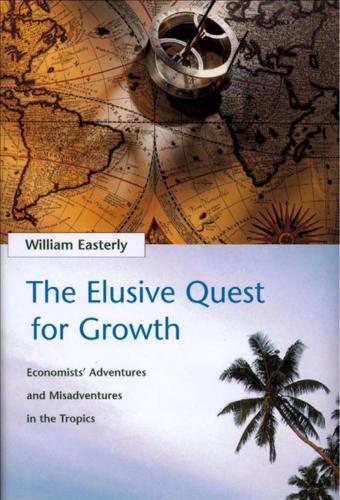
The Elusive Quest for Growth: Economists' Adventures and Misadventures in the Tropics
by
William R. Easterly
Published 1 Aug 2002
Simon, Julian, ed. 1995. The State ofHumanity. Oxford: Blackwell. Slemrod, Joel. 1995. ”Do Cross-Country Studies Teach About Government Involvement, Prosperity, and Economic Growth?” Brookings Papers on Economic Activity 10, no. 2:373-415. Solow, Robert M. 1957. “Technical Change and the Aggregate Production Function.” Review of Economics and Statistics 39:312-320. Solow, Robert M. 1987. Growth Theory: An Exposition. New York: Oxford University Press. (Originally published 1970). Stremlau, John. 1996. ”Dateline Bangalore: Third World Technopolis.” Foreign Policy (Spring): 152-168. Summers, Robert, and Alan Heston. 1991. ”The Penn World Table (Mark 5): An Expanded Set of International Comparisons, 1950-1988.”
…
Although Domar assumed that production capacity was proportional to thestock of machinery, he admitted the assumption was unrealistic and eleven years later, in 1957,complaining of an ”ever-guilty conscience,” he disavowed the theory.15 He said his earlier purpose was to comment on an esoteric debate on business cycles, not to derive ”an empirically meaningful rate of growth.” He said his theory made no sense for long-run growth, and instead he endorsed the new growth theory of Robert Solow (which I discuss in thenext chapter). To sum up, Domar’s model was not intended as a growth model, made no sense as a growth model, and was repudiated as a growth model over fortyyearsagobyitscreator. So it was ironic that Domar’s growth model became, and continues to be today, the most widely applied growth model in economic history.
…
My God has always stood with me," says Parmila in a confident t0ne.l This Page Intentionally Left Blank 3 Solow’s Surprise: Investment Is Not the Key to Growth Politicians are the same all over. They promise to build bridges, even where there are no rivers. Nikita Khrushchev Nobel laureate Robert Solow published his theory of growth in a couple of articles in 1956 and 1957. His conclusion surprised many, and still surprises many today: investment in machinery cannot be a source of growth in the long run. Solow argued that the only possible source of growth in the long run is technological change.
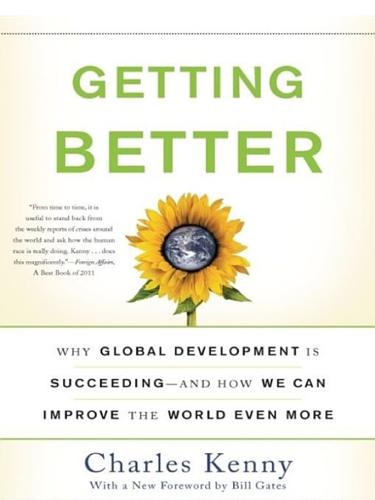
Getting Better: Why Global Development Is Succeeding--And How We Can Improve the World Even More
by
Charles Kenny
Published 31 Jan 2011
For a long time a country’s capital output ratio was used by donors to calculate the foreign aid “requirement” of that country in order to reach a target rate of growth.4 But Domar himself argued that his model was not appropriate for determining long-term growth rates, supporting instead a model developed by Nobel Prize winner Robert Solow. Solow’s model predicted that long-term growth rates were primarily dependent on technological change rather than on investment. Economists define “technology” broadly—as anything that isn’t capital that might affect per-worker growth rates. For example, it can include inventions as usually imagined, like the steam engine or the transistor, but also new processes, like the assembly line, or new ways of doing business, like double-entry bookkeeping.
…
Furthermore, we have learned that technology is central to per capita GDP growth—given that countries can invest in considerable physical capital (roads, factories, power plants) as well as human capital (school and university graduates) and still not see rising average incomes. We’ve also learned that some technologies may be more important than others in promoting output. In particular, given the divergence of global incomes, these technologies must be “sticky” in that they do not flow easily across borders as predicted by Robert Solow. This suggests there may be value in further analysis of such “sticky technologies.” INSTITUTIONS: STICKY TECHNOLOGIES We have seen that “technology” as defined by economists is a very broad concept, covering all sorts of innovation. It covers traditional or invented technologies—Watt’s steam train, Engelbart’s computer mouse—to be sure.
…
At the same time, the common transition pattern implies that there must be an upper limit to the importance not only of different rates of income growth but also of different speeds of policy or institutional change in explaining relatively fast or slow progress in quality of life over time across countries. A model of development that suggests a strong influence of factors common across countries, that predicts convergence of outcomes, and that sees a comparatively minor role for policy differences across countries in explaining variation in outcomes is Robert Solow’s “exogenous growth model” discussed in Chapter 3. We saw that it was abandoned by analysts of economic growth as singularly failing to account for changes in GDP per capita across countries over time. But the model fits far better with the facts of global change in other measures of quality of life where change does appear to be driven by strong global trends and countries further behind are rapidly catching up.
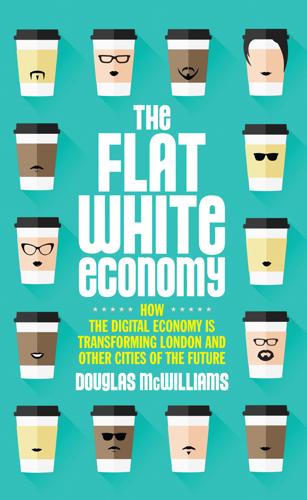
The Flat White Economy
by
Douglas McWilliams
Published 15 Feb 2015
Most other countries likewise account software expenditure in the same way – the difference being that in the UK the FWE sector is larger and the mis-measurement more significant. IT investment as an enabling technology In the 1980s, economic studies seemed not to be able to find much evidence of information technology making much difference to economic growth. This was known at the time as the ‘productivity paradox.’6 Nobel laureate Robert Solow famously quipped “You can see the computer age everywhere except in the productivity statistics”.7 But micro studies since have provided compelling evidence that IT is not only a technology that enhances growth but also one that enables further productivity gains. A Google search lists over 64,000 references for ‘information technology as an enabler’.8 The modern thinking about IT investment is that it encourages improved and innovative products, services and methods of production.
…
‘Understanding National Accounts’, François Lequiller and Derek Blades, 2016, Paris (www.oecd.org/std/na/38451313.pdf). 5. www.bankofengland.co.uk/statistics/Pages/iadb/notesiadb/capexp.aspx 6. The productivity paradox of information technology’, Erik Brynjolfsson, Communications of the ACM 36 (12), 1993, pp66–77. 7. ‘We’d better watch out’, Robert Solow, New York Times Book Review, 12 July, 1987, p.36. 8 scholar.google.co.uk/scholar?start=20&q=information+technology+as+an+enabler&hl=en&as_sdt=0,5&as_vis=1 9. ‘Sources of Economic Growth, Trade and Investment Analytical Papers No 6 of 18,BIS/DFID, 2011, London. 10. www.gov.uk/government/uploads/system/uploads/attachment_data/file/32468/11–723-sources-of-economic-growth.pdf 11. 10 November 2014. 12. www.itpro.co.uk/mobile/23478/o2-ceo-how-the-digital-revolution-is-driving-the-uk-economy#ixzz3K5a452gr 13.
…
article=1021&context=confpapers INDEX Accenture Fintech Innovation Lab ref1 accommodation ref1, ref2, ref3 cheap ref1, ref2, ref3 cramped ref1 displacement of ref1 proximity to amenities ref1 Advanced Card Systems ref1 advertising/marketing ref1, ref2 campaigns ref1 digital ref1 investment in ref1 online ref1, ref2, ref3, ref4 role of creativity in ref1 Aerob ref1 AirWatch ref1 Alibaba ref1, ref2 floated on NYSE ref1 Allegra Strategies ref1 Allford, Simon ref1 Allford Hall Monaghan Morris ref1 Amazon.com, Inc. ref1, ref2, ref3 Apple, Inc. ref1, ref2, ref3 development kits ref1 facilities of ref1 product lines of ref1 Argentina Buenos Aires share of GDP ref1 Association of London Councils ref1 AT&T Inc. ref1 Australia ref1 Sydney ref1 Austria Vienna share of GDP ref1 Bangladesh economy of ref1 Dhaka ref1 Bank of England investment guidelines ref1 BASF SE ref1 Bell Telephones personnel of ref1 Bennet, Natalie leader of Green Party ref1 bicycles ref1 fatalities associated with ref1 sales of ref1 use in commuting ref1 big data ref1 Birmingham Science Park Aston Innovation Birmingham Complex ref1 Bold Rocket ref1 bonuses ref1 use in property market ref1 Boston Consulting Group ref1, ref2 British Bars and Pubs Association ref1 British Broadcasting Corporation (BBC) BBC Scotland ref1 Brough, Graham ref1 Brown, Gordon ref1, ref2 Burkina Faso Ouagadougou ref1 Burt, Prof Ronald ref1, ref2 Cable and Wireless assets of ref1 Cameron, David economic policies of ref1, ref2 immigration policies of ref1 Canada ref1 Montreal ref1 Toronto ref1, ref2 Vancouver ref1 capital rate of return ref1, ref2 capitalism ref1, ref2, ref3 profits ref1 Catholicism ref1 Centre for Cities ref1, ref2 Centre for Economics and Business Research (Cebr) ref1, ref2, ref3, ref4, ref5, ref6, ref7, ref8, ref9 estimates of UK economic growth ref1 offices of ref1 personnel of ref1, ref2 Centre for Retail Research ref1, ref2 champagne sales figures ref1, ref2 Channel 4 ref1 China Beijing ref1, ref2, ref3 Haidian district ref1 economy of ref1 Golden Shield firewall (Great Firewall of China) ref1 government of ref1, ref2, ref3 Hong Kong ref1, ref2, ref3, ref4, ref5, ref6 Cyberport ref1 Hong Kong Stock Exchange ref1 People’s Liberation Army (PLA) ref1, ref2 special economic zones Hangzhou ref1 Shenzhen ref1 Zhongguancun Innovation Way (Z-innoway) ref1 China Mobile ref1 China Telecom ref1 China Unicom ref1 Cisco Systems facilities of ref1 cloud computing ref1, ref2 Coalition Government immigration policy of ref1, ref2 coffee shops culture of ref1 cyber cafes ref1 growth of market ref1 Commonwealth migration from ref1 Companies House ref1 Confederation of British Industry (CBI) ref1, ref2 personnel of ref1 Confucianism ref1 Conservative Party ref1 Cooper, Wayne ref1 Corporation of London ref1, ref2, ref3 Crafts, Nick ref1 creative economy ref1 Cridland, John leader of CBI ref1 Cromwell, Oliver ref1 Crow, Bob ref1 Daily Mail ref1 Danone ref1 Danticat, Edwidge ref1 Davis, Charles ref1 Decoded ref1 Deloitte ref1 deregulation of financial markets (1986) ref1 digital economy ref1, ref2, ref3, ref4 emergence of ref1, ref2 role of creativity in ref1 Dorling, Danny ref1 Dunne, Ronan CEO of O2 (UK) ref1 Durden, Tyler ref1 Economic Journal, The ref1, ref2 Economist, The ref1, ref2, ref3 Edinburgh University ref1 Eggers, Dave Circle, The (2013) ref1 Egypt Cairo ref1 share of GDP ref1 employment ref1 growth ref1 immigrant labour ref1 in FWE ref1, ref2, ref3, ref4 job creation ref1 low-skilled jobs ref1 public sector 1112 science, technology, engineering and mathematics (STEM) ref1 growth of ref1 shortages ref1 end user demand ref1 Engels, Friedrich ref1 Entrepreneurs for the Future (E4F) ref1 entrepreneurship ref1, ref2, ref3 e.Republic Center for Digital Government and Digital Communities Digital Cities award programme ref1, ref2 Esquire (magazine) ref1 European Economic Area (EEA) ref1 migrants from ref1 contribution to fiscal system ref1 migrants from outside ref1 contribution to fiscal system ref1 European Union (EU) free movement of labour in ref1 member states of ref1, ref2, ref3 taxation regulations ref1 Eurostar ref1 Eurozone ref1, ref2 Crisis (2009–) ref1, ref2, ref3 economy ref1 Facebook ref1, ref2, ref3, ref4 IPO of ref1 Falmouth University ref1 Fan, Donald Senior Director for Office for Diversity of Walmart ref1 FanDuel ref1 Farage, Nigel leader of UKIP ref1 feudalism ref1 financial services ref1, ref2, ref3, ref4, ref5 lifestyles associated with ref1, ref2 Financial Times (FT) ref1 FT Global Top 500 Companies ref1 Fintech ref1 First World War (1914–18) ref1 fiscal transfer ref1, ref2, ref3 net ref1 potential use to cover local deficits ref1 Flat White Economy (FWE) ref1, ref2, ref3, ref4, ref5, ref6, ref7, ref8, ref9, ref10, ref11, ref12, ref13, ref14, ref15, ref16, ref17 advantages of immigration for ref1, ref2, ref3 business model for ref1 development and growth of ref1, ref2, ref3, ref4, ref5, ref6, ref7, ref8, ref9 employment in ref1, ref2, ref3, ref4 shortages ref1 impact on UK economy ref1, ref2 model of ref1, ref2, ref3 replicating ref1-ref2 role of creativity in ref1 startups in ref1 business model ref1 Flat Whiters ref1 accommodation data for ref1 social culture of ref1 fashion ref1 nightlife ref1 transport ref1 technology used by ref1 Forbes (magazine) ref1 France ref1 education system of ref1 Paris ref1, ref2, ref3 share of GDP ref1 Paris-Sarclay ref1 creation of (2006) ref1 potential limitations of ref1 promotion of ICT in ref1 Forst and Sullivan ref1 France ref1, ref2 Freeman, Prof Christopher ref1 Fujitsu Ltd. ref1 Funding Circle ref1 Gates, Bill ref1 Germany ref1, ref2, ref3 Berlin ref1 economy of ref1 Glaeser, Edward ref1 Triumph of the City, The ref1 Global Financial Crisis (2007–9) ref1, ref2 Banking Crises (2008) ref1 impact on migration ref1 UK recession (2008–9) ref1 Global Innovation Index ref1 globalisation ref1, ref2, ref3 Glyn, Andrew ref1 Goodison, Sir Nicholas Chairman of the Stock Exchange ref1 Google, Inc. ref1, ref2, ref3, ref4, ref5, ref6, ref7, ref8 acquisitions made by ref1 development kits ref1 offices of ref1, ref2 Greater London Authority (GLA) ref1, ref2 Green Party members of ref1 Gröningen Growth and Development Centre ref1 Guardian, The ref1, ref2, ref3 Harbron, Rob ref1, ref2 Harrison, Andy Chief Executive of Whitbread ref1 Harvard Business School ref1 Harvard University Harvard Lab for Computer Graphics and Spatial Analysis ref1 HCL Technologies ref1 Heisnberg, Werner uncertainty principle ref1 Hewlett-Packard Company (HP) ref1 Huawei Technologies ref1 immigration ref1, ref2, ref3, ref4, ref5, ref6 advantages for FWE ref1, ref2, ref3 economic impact of ref1, ref2 impact on social cohesion ref1 impact on wages ref1 legislation ref1 access to state benefits ref1 quota systems ref1 non-EEA ref1, ref2 restrictions on ref1, ref2, ref3 Imperial College, London facilities of ref1 India ref1, ref2 Calcutta ref1 IT sector of ref1 Karnataka ref1 Bangalore ref1, ref2, ref3, ref4 Electronics City ref1 Mumbai ref1 inequality ref1 potential role of London in ref1, ref2 sources of wealth ref1 Infosys Ltd ref1 initial public offering (IPOs) ref1 innovation ref1, ref2, ref3, ref4, ref5, ref6, ref7, ref8 hubs ref1, ref2 independent ref1 investments in ref1 projects ref1 Institute for Public Policy Research ref1 intellectual property protection of ref1, ref2 Intel Corporation ref1, ref2, ref3 facilities of ref1 personnel of ref1 International Business Machines (IBM) ref1, ref2 facilities of ref1, ref2, ref3 personnel of ref1, ref2, ref3 internet usage ref1 investment ref1, ref2, ref3 advertising and marketing ref1 capitalising of ref1 in innovation ref1 process of ref1 Israel ref1, ref2 Defence Ministry ref1 Haifa ref1 tech sector of ref1 IT spending ref1, ref2 accounting for ref1 software ref1 Italy ref1 Frascati ref1 Rome ref1 ITC Infotech India Ltd ref1 Japan ref1 economy of ref1 Tokyo ref1 share of GDP ref1 Johnson, Boris Mayor of London ref1, ref2, ref3 Johnson Press plc ref1 Judaism ref1 Kaldor, Nicholas ref1 Keynes, John Maynard ref1 Economic Consequences of the Peace, The ref1 KPMG ref1 labour ref1 division of ref1 immigrant ref1, ref2, ref3, ref4 market ref1 shocks ref1 share of income ref1, ref2 supply of ref1, ref2, ref3, ref4 Labour Party ref1 immigration policies of ref1 Lai, Ian ref1 Laserfiche ref1 Lawson, Nigel ref1 Leeds Beckett University ref1 Level 39 ref1 Liberal Democrats immigration policies of ref1 lifestyles ref1 associated with financial services ref1 Livingstone, Ken ref1 Lloyds ref1 London School of Economics (LSE) ref1 MadRat games ref1 MagnetWorks Engineering ref1 Mahindra Satyam ref1 Mainelli, Michael Gresham Professor of Commerce ref1 Malaysia ref1 Kuala Lumpur ref1 Manchester Science Parks (MSP) ref1 market capitalisation ref1, ref2 market economy ref1 Marx, Karl ref1, ref2 Labour Theory of Value ref1 Marxism ref1 Massachusetts Institute of Technology (MIT) ref1 campuses of ref1 Technology Review ref1, ref2 MasterCard ref1 McAfee, Inc. ref1 McKinsey Global Institute ref1 McQueen, Alexander ref1 McWilliams, Sir Francis ref1 Pray Silence for Jock Whittington (2002) ref1 Medvedev, Dmitry ref1 technology policies of ref1 Metcalfe, Robert ref1 Metcalfe’s Law concept of ref1 Mexico ref1 Mexico City ref1 share of GDP ref1 Microsoft Corporation ref1, ref2, ref3, ref4 facilities of ref1 Future Decoded conference ref1 personnel of ref1 Windows (operating system) ref1 Migration Advisory Committee ref1 Miliband, Ed immigration policies of ref1 MindCandy ref1 Moshi Monsters ref1 offices of ref1 Mitsui Chemicals ref1 Mohan, Mukund CEO of Microsoft Ventures in India ref1 Mongolia Ulan Bator ref1 Moore, Gordon Earle Moore’s Law ref1 MphasiS ref1 National Institute of Economic and Social Research (NIESR) ref1, ref2 Netherlands Amsterdam ref1 network effects ref1 relationship with supereconomies of scale ref1 Network Rail offices of ref1 New Scientist ref1 New Statesman ref1 Nitto Denko ref1 Nokia Oyj ref1 O2 (Telefónica UK Limited) ref1 offices of ref1 personnel of ref1 Office of Communications (Ofcom) ref1 Olympic Games (2012) ref1, ref2 online shopping ref1, ref2 Organisation for Economic Cooperation and Development (OECD) ref1, ref2, ref3, ref4 Osborne, George ref1 Outblaze ref1 Pareto Principle concept of ref1 Passenger Demand Forecasting Council ref1 PayPal ref1 PCCW ref1 Poland accession to EU (2004) ref1 Pollock, Erskine ref1 Procter & Gamble Co. ref1 property markets ref1, ref2 commercial ref1, ref2 housebuilding ref1, ref2 house/property prices ref1, ref2, ref3, ref4 property crisis (2007) ref1 residential ref1 use of bonuses in ref1 public spending ref1, ref2, ref3 Barnett formula ref1 relationship with taxation ref1 Qualcomm facilities of ref1 Reinartz, Werner ref1 Republic of Ireland ref1 research and development (R&D) ref1, ref2, ref3 definitions of ref1, ref2 expenditure ref1, ref2 hubs ref1, ref2 industrial ref1 Research Council for the Arts and Humanities ‘Diasporas, Migration and Identities’ ref1 Rogers, Everett Diffusion of Innovations (1962) ref1 Russian Federation ref1 economy of ref1 Defence Ministry ref1 Moscow ref1, ref2 Skolkovo Innovation Centre ref1, ref2 Saffert, Peter ref1 sales and advertising ref1 Sarkozy, Nicolas technology policies of ref1 Scottish Media Group (STV) ref1 Second World War (1939–45) Blitz, The (1940–1) ref1 shared accommodation ref1 Silicon Canal ref1 Silicon Roundabout ref1, ref2, ref3, ref4, ref5 Silicon Valley ref1, ref2, ref3, ref4, ref5, ref6 role of US government defence spending in development of ref1 social culture of ref1 Silva, Rohan Senior Policy Advisor to David Cameron ref1 Singapore ref1, ref2, ref3, ref4 government of ref1 Research, Innovation and Enterprise Plan (RIE 2015) ref1 research centres of ref1 A*Star Biopolis ref1 Fusionopolis ref1 Campus for Research Excellence and Technological Enterprise (Create) ref1 CleanTech Park ref1 Singapore Science Park ref1 Tuas Biomedical Park ref1 skills drain ref1 Skyscanner ref1 small- and medium-sized businesses (SMBs) ref1 small- and medium-sized enterprises (SMEs) ref1 Small Business Service Household Survey of Entrepreneurship ref1 Smith, Adam Wealth of Nations, The ref1 Smith, Michael Acton founder of MindCandy ref1 Social Democratic Party (SDP) formation of (1981) ref1 social media ref1 restrictions on ref1 Solow, Robert ref1 South Africa Johannesburg share of GDP ref1 South East Regional Assembly ref1 South Korea Seoul ref1 share of GDP ref1 Spain Barcelona ref1 Ibiza ref1 Sprint Corporation ref1 startups ref1 business models of ref1 in FWE ref1 Stigler, George ref1 supereconomies of scale concept of ref1 relationship with network effects ref1 Sweden Stockholm share of GDP ref1 Tata Consultancy Services ref1 taxation ref1, ref2, ref3, ref4, ref5 allowance ref1 corporation ref1 EU regulations ref1 National Insurance ref1, ref2, ref3 regional variation of ref1 relationship with public spending ref1 Tech City ref1, ref2, ref3 technology clusters ref1, ref2, ref3 identification of ref1 Techstars/Barclays ref1 telecommunications ref1 Thatcher, Margaret ref1, ref2 Thile, Peter ref1 trade unions ref1 Transport for London (TfL) ref1, ref2 UK Independence Party (UKIP) members of ref1, ref2 United Kingdom (UK) ref1, ref2, ref3, ref4, ref5, ref6, ref7, ref8, ref9, ref10 Bath ref1 Birmingham ref1, ref2 Bristol ref1 Cambridge ref1 Cheshire ref1 Civil Service ref1 Department for Business, Innovation and Skills ref1, ref2 Department for Transport ref1 economy of ref1, ref2, ref3, ref4, ref5, ref6, ref7, ref8, ref9 contribution of creative industries to ref1 growth of ref1, ref2, ref3, ref4, ref5 Edinburgh ref1 GDP per capita ref1, ref2, ref3, ref4, ref5, ref6 Glasgow ref1, ref2 media clusters in ref1 government of ref1, ref2, ref3 Index of Multiple Deprivation ref1 ‘Innovation Report 2014’ ref1 Hounslow ref1 labour market of ref1 Leeds ref1, ref2, ref3 London ref1, ref2, ref3, ref4, ref5, ref6, ref7, ref8, ref9, ref10, ref11, ref12, ref13, ref14, ref15, ref16, ref17, ref18, ref19, ref20, ref21, ref22, ref23 business sector of ref1 Camden ref1, ref2 City Fringes ref1, ref2 City of London ref1, ref2, ref3, ref4, ref5, ref6, ref7 cultural presence of ref1 economy of ref1, ref2, ref3, ref4, ref5, ref6, ref7, ref8, ref9, ref10 migrant labour in ref1 expansion of ref1, ref2, ref3 GDP per capita ref1, ref2 GVA of ref1, ref2, ref3 Hackney ref1, ref2, ref3 Haringey ref1, ref2 Islington ref1, ref2 Old Street ref1, ref2, ref3, ref4, ref5, ref6 share of national GDP ref1 Shoreditch ref1, ref2, ref3, ref4 Tower Hamlets ref1 transport infrastructure of ref1 Crossrail ref1 Westminster ref1, ref2, ref3 Manchester ref1, ref2, ref3 Midlands ref1 Milton Keynes ref1, ref2 Newbury ref1 Newcastle ref1 Northern Ireland ref1 Northampton ref1 Office for National Statistics (ONS) ref1 Oxford ref1 Parliament House of Commons ref1 House of Lords ref1 pub industry of ref1 Reading ref1 Salford ref1 Slough ref1 United States of America (USA) ref1, ref2, ref3, ref4 Baltimore, MD ref1 Boston, MA ref1, ref2 Buffalo, NY ref1 Cambridge, MA ref1 Chicago, IL ref1 Columbus, OH ref1 Detroit, MI ref1 economy of ref1 government of ref1, ref2 Irving, TX ref1 Jacksonville, FL ref1 Los Angeles, CA ref1 Minneapolis, MN ref1 Nashville, TN ref1 New York City, NY ref1, ref2, ref3, ref4 New York Stock Exchange (NYSE) ref1 Palo Alto, CA ref1 Portland, OR ref1, ref2 Raleigh, NC ref1 Salt Lake City, UT ref1 San Diego, CA ref1 San Francisco, CA ref1 Seattle, WA ref1, ref2 Washington DC ref1 Winston-Salem, NC ref1 University of Chicago faculty of ref1, ref2 University of London ref1 University of Sussex faculty of ref1 venture capital ref1, ref2 Visa facilities of ref1 Vodafone offices of ref1 wages ref1, ref2, ref3, ref4, ref5, ref6 depression of ref1, ref2 growth of ref1 impact of immigration on ref1 low ref1, ref2 Walmart personnel of ref1, ref2 Waze acquired by Google ref1 We Are Apps ref1 Whitbread Costa Coffee ref1 personnel of ref1 Wikipedia ref1 Wilson, Harold ref1 administration of ref1 Wipro Technologies ref1 Wired (magazine) ref1 Woolfe, Steven UKIP spokesman on migration and financial affairs ref1 World Bank ref1 Xiaomi ref1 Yorkshire Post, The ref1 ZopNow ref1
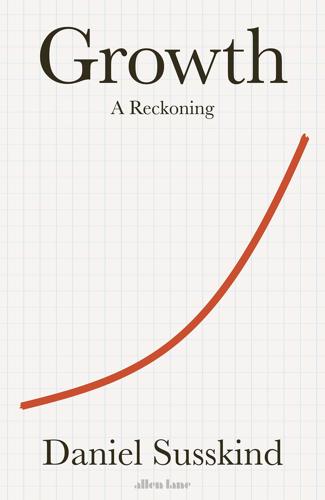
Growth: A Reckoning
by
Daniel Susskind
Published 16 Apr 2024
In the decades that followed Harrod-Domar, their mistaken ideas acted as an intellectual springboard for very different mathematical models. These provided much more powerful insights into the causes of growth. Manna from Heaven Among the many critics of the Harrod-Domar approach, the most important would turn out to be another pair: an American, Robert Solow, and an Australian, Trevor Swan. The story told by Harrod-Domar ‘felt wrong,’ Solow noted. ‘An expedition from Mars arriving on Earth having read this literature would have expected to find only the wreckage of a capitalism that had shaken itself to pieces long ago.’25 Like others, he found it very hard to reconcile the extreme fragility of growth in the Harrod-Domar model with its ongoing resilience in the real world.
…
Recessions ‘concentrate minds’, in the words of the writer Janan Ganesh, making people ‘rediscover the foundational role of growth to almost everything they cherish’.58 Economists, who had begun the twentieth century almost completely uninterested in the process, finished it highly enthused. ‘If you have to be obsessed by something,’ wrote Robert Solow in the 1980s, ‘maximising real National Income is not a bad choice.’59 ‘We cannot and will not accept any speed limit on America’s growth,’ wrote Larry Summers a decade later. More recently, the biographer of American growth, Robert Gordon, put it bluntly: ‘More growth is better, period.’60 This enthusiasm was infectious.
…
Such an approach would always lead to an economic dead end, as diminishing returns erode the contribution made by each additional worker or machine and growth fizzles out – that’s what created the Malthusian trap and resulted in the Long Stagnation. If sustained growth is to happen, it can only come through a process of technological progress that is able to overpower those diminishing returns. This was the argument behind the Nobel Prize-winning work of Robert Solow and Trevor Swan. A few decades later, Paul Romer completed the story by explaining where that technological progress must come from: not from the tangible world of physical things, but from the intangible world of ideas. Taken together, these economic insights explain why the idea of a ‘finite planet’ is a misdirection.
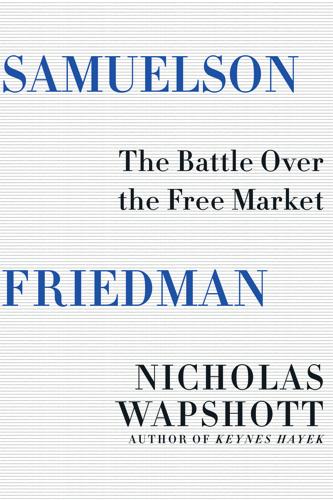
Samuelson Friedman: The Battle Over the Free Market
by
Nicholas Wapshott
Published 2 Aug 2021
Jokes about Friedman’s preoccupation with the money supply to the exclusion of all other elements of the economy and the sleight-of-hand with which he could employ logic were legion. “Milton knows how to spell banana, but he doesn’t know when to stop,” quipped one economist. “I wish I could be as sure of one thing as you are of everything,” joked another. “Everything reminds Milton of the money supply,” wrote Samuelson’s MIT colleague Robert Solow.21 “Well, everything reminds me of sex, but I keep it out of the paper.”22 Samuelson explained the slipperiness of Friedman in argument thus: “To keep the fish that they carried on long journeys lively and fresh, sea captains used to introduce an eel into the barrel. In the economics profession, Milton Friedman is that eel.”23 While in private, in conversation, and in correspondence the pair used jargon and special knowledge, in their journalism they were restricted to arguments that could be understood by intelligent readers untrained in the complexities of advanced economics.
…
At the first sign of the slightest break in your logic, or your facts, he pounces with a bewildering array of questions, statements, and relentless logic. And it’s all done in such a friendly earnest way that even the intellectually shredded thoroughly enjoy the encounter. Friedman is the intellectual’s intellectual. He makes people think, and he almost always does it in such a way that it gives them pleasure.32 The economist Robert Solow, who counted Samuelson as his best friend, was less admiring, but could not deny Friedman’s exceptional qualities. He wrote: Milton was an ideologue, a True Believer, not given to skepticism or self-doubt. There are many of those, but he was an ideologue equipped with a very sharp and quick mind.
…
The more distinguished Samuelson’s career became, the more valuable his cache of papers was to a research university. In November 2006, Samuelson asked the Harvard Archive about lodging his voluminous files of personal and academic papers with the university. He reminded Harvard that they held Joseph Schumpeter’s papers, but that the archives of Nobelists Franco Modigliani and Robert Solow were to be found at the impressive library facilities at Duke University, in Durham, North Carolina. “When one stays preoccupied with doing new research,” he wrote, “little time is left to plan optimally autobiographical and archival matters. However, those tasks do need to be attended to.”28 He suggested a meeting.

House of Debt: How They (And You) Caused the Great Recession, and How We Can Prevent It From Happening Again
by
Atif Mian
and
Amir Sufi
Published 11 May 2014
So by the time he arrived at MIT, he had already made a major impact on western European economies.1 Kindleberger’s research style was a bit unusual compared to many of his contemporaries, and this likely reflected his real-world experience outside the ivory tower. Instead of proposing theory, he approached economic phenomena as a natural scientist would. His colleague and Nobel laureate Robert Solow compared Kindleberger to Darwin on the Beagle: “collecting, examining, and classifying interesting specimens . . . it was Kindleberger’s style as an economic historian to hunt for interesting things to learn, not pursue a systematic agenda.”2 The culmination of Kindleberger’s massive data collection on bubbles—Manias, Panics, and Crashes: A History of Financial Crises—is one of the most influential books written in economic history.
…
Yuliya Demyanyk and Otto Van Hemert, “Understanding the Subprime Mortgage Crisis,” Review of Financial Studies 24 (2011): 1848–80. 18. This estimate is based on the ABX index that tracks the value of mortgage-backed securities with mortgage originated in 2007. Chapter Eight 1. Daniel Altman, “Charles P. Kindleberger, 92, Global Economist, Is Dead,” New York Times, July 9, 2003. 2. Robert Solow, foreword to Manias, Panics, and Crashes: A History of Financial Crises, 5th ed., by Charles Kindleberger and Robert Aliber (Hoboken, NJ: John Wiley & Sons, 2005). 3. Vernon Smith, Gerry Suchanek, and Arlington Williams, “Bubbles, Crashes and Endogenous Expectations in Experimental Spot Asset Markets,” Econometrica 56 (1988): 1119–51. 4.
…
See also savers Seru, Amit, 101–3, 139 shared-responsibility mortgages (SRMs), 170–74; benefits of, 174–78; bubbles and, 179–80; downside protection in, 172–74, 183; equity-like financing of, 168–70, 180–87, 206n13; 5 percent capital-gain rule for, 174; government policy on, 180–81; job protection and, 178–79; lender fees for, 173, 180 Sherlund, Shane, 198n13 Shiller, Robert, 109, 185, 206n8 Shleifer, Andrei, 28, 114 short-term financing, 125 Sinn, Hans-Werner, 165 skills mismatch, 68–69 Smith, Vernon, 108–9, 110 Snowden, Kenneth, 144 Solow, Robert, 106 Song, Jae, 148 Spanish mortgage law, 119–21, 184–85 spending. See consumer spending Stafford, Erik, 98, 101 standard asset pricing theory, 108–9 Steinsson, Jon, 163, 179 Stewart, Jon, 122 stimulus spending, 162–66, 205n19 student-loan debt, 167–69, 182–83, 206n9 Stulz, Rene, 129 subordinated debt, 123 subprime mortgages.

Making Sense of Chaos: A Better Economics for a Better World
by
J. Doyne Farmer
Published 24 Apr 2024
He showed how to use this to compute supply-and-demand curves and find the equilibrium where supply meets demand, making it possible to compute the price of the good and the quantity traded. Because of its convenience and power, the equilibrium assumption soon became standard in economic theory. By the middle of the twentieth century, economists like Paul Samuelson, Kenneth Arrow and Robert Solow (and many others) developed Marshall’s approach and applied it to problems such as international trade, market regulation and economic growth. However, something important was still missing. Up until that point, economic models had assumed a world of perfect certainty. Most models were either set in the present, where the utility of each choice is known, or they assumed a deterministic world where the future was perfectly known by every agent.
…
In contrast to their predecessors, which were based on statistical relationships of aggregate measures like GDP, these models incorporated the reasoning of households and firms, and for this reason are said to be micro-founded. A simple standard macro-model To understand how a standard micro-founded DSGE model works, let’s look at an early (and simple) example that grew out of an influential model for economic growth introduced in 1956 by Nobel prize-winning economist Robert Solow.6 (We’re going to need this later when we compare it to a complexity-economics version.) In Solow’s model, a household works for a company that produces a single good. The firm and household represent all the firms and households in the world (or at least in a given country), and the good represents all goods and services.
…
Quantitative Finance 3 (6): 481–514, doi: 10.1088/1469-7688/3/6/307. Smith, V.L. 1962. ‘An Experimental Study of Competitive Market Behavior’. Journal of Political Economy 70 (2): 111–137. Smith, Vernon. 2008. Rationality in Economics: Constructivist and Ecological Forms. New York: Cambridge University Press. Solow, Robert M. 1956. ‘A Contribution to the Theory of Economic Growth’. Quarterly Journal of Economics 70 (1): 65–94, doi: 10.2307/1884513. Stanley, H. Eugene, V. Afanasyev, L. A. N. Amaral, S. V. Buldyrev, A. L. Goldberger, S. Havlin, H. Leschhorn, P. Maass, R. N. Mantegna, C. K. Peng, P. A. Prince, M. A.
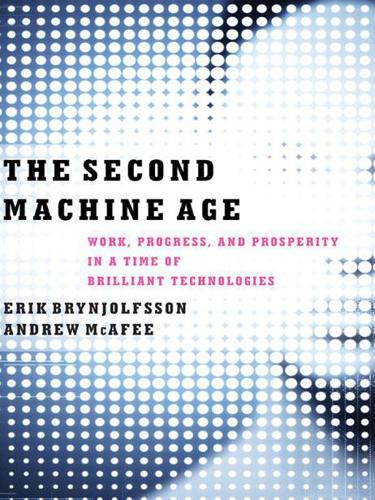
The Second Machine Age: Work, Progress, and Prosperity in a Time of Brilliant Technologies
by
Erik Brynjolfsson
and
Andrew McAfee
Published 20 Jan 2014
.) * In turn, productivity growth comes from innovations in technology and techniques of production. Simply working more hours does not increase productivity. Indeed, Americans once routinely worked fifty, sixty, or even seventy hours per week. While some still do, the average workweek is shorter now (thirty-five hours per week), and yet living standards are higher. Robert Solow got his Nobel Prize in Economics for showing that increases in labor input and capital input could not explain most of the increase in the total output of the economy.† In fact, it would take the average American only eleven hours of labor per week to produce as much as he or she produced in forty hours in 1950.
…
* One can also measure capital productivity, which is output per unit of capital input; or multifactor productivity, which is output divided by a weighted average of both capital and labor inputs. Economists sometimes use another term for multifactor productivity, the “Solow Residual,” which better reflects the fact that we don’t necessarily know its origins. Robert Solow himself noted that it was less a concrete measure of technological progress than a “measure of our ignorance.” † That’s a good thing, because there are natural limits to how much we can increase inputs, especially labor. They’re subject to diminishing returns—no one is going to work more than twenty-four hours a day, or employ more than 100 percent of the labor force.
…
Bret Swanson,“Technology and the Growth Imperative,” The American, March 26, 2012, http://www.american.com/archive/2012/march/technology-and-the-growth-imperative (accessed Sept 23, 2013). 3. Congressional Budget Office, The 2013 Long-Term Budget Outlook, September 2013, p. 95. http://www.cbo.gov/sites/default/files/cbofiles/attachments/44521-LTBO2013.pdf. 4. Robert Solow, “We’d Better Watch Out,” New York Times Book Review, July 12, 1987. 5. Erik Brynjolfsson, “The Productivity Paradox of Information Technology,” Communications of the ACM 36, no. 12 (1993): 66–77, doi:10.1145/163298.163309. 6. See, e.g., Erik Brynjolfsson and Lorin Hitt, “Paradox Lost: Firm Level Evidence on the Returns to Information Systems,” Management Science 42, no. 4 (1996): 541–58.
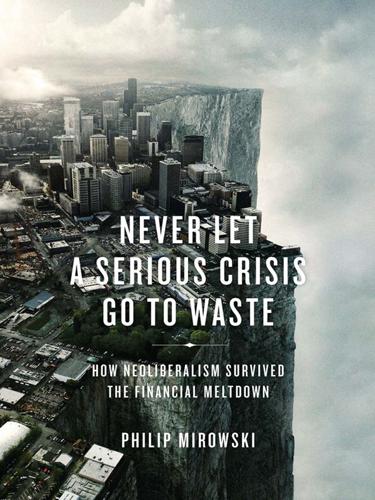
Never Let a Serious Crisis Go to Waste: How Neoliberalism Survived the Financial Meltdown
by
Philip Mirowski
Published 24 Jun 2013
Once the presumption of omniscience broke down, then the consequences of the banishment of methodological self-scrutiny began to be felt. Both the criticisms and defenses of DSGE, at the congressional hearings and elsewhere after the crisis onset, were distressingly unsophisticated, as one might expect as fallout from the ostracism of methodological thought. Robert Solow testified in Congress that DSGE models “didn’t pass the smell test,” introducing a novel olfactory standard for scientific model choice. The defense of DSGE by V. V. Chari at the hearings equally reveals the paucity of resources (and rhetorical skills) possessed by contemporary economists: So, any interesting model must be a dynamic stochastic general equilibrium model.
…
And there are the nagging worries that, as in the case of undermining existence of equilibria and welfare indicies, one ends up driving the formalism into Bedlam. Thus, a “more realistic DSGE” ends up a contradiction in terms. The second option, the one favored by the high-profile economists dismissive of the DSGE tradition such as Robert Solow and Paul Krugman, was to roll back the clock to 1969, and pretend like the whole sequence of sordid developments leading up to DSGE never happened. Sometimes this was bruited about as a “return to Keynes,” although a historian might aver that the American profession was never all that enamored of the actual Keynes and his writings.98 Nevertheless, this latter group was extrapolating from the heady days of late 2008, when all thoughts of DSGE were nowhere to be found.
…
Modern Macroeconomics: Its Origins, Development and Current State (Cheltenham, U.K.: Elgar, 2005). Soederberg, Susan, George Menz, and Philip Cerny, eds. Internalizing Globalization: The Rise of Neoliberalism (London: Palgrave, 2005). Solomon, Miriam. Social Empiricism (Cambridge, Mass.: MIT Press, 2001). Solow, Robert. “Hedging America,” New Republic, January 12, 2010. Sommer, Jeff. “The Slogans Stop Here,” New York Times, October 30, 2011. Sorkin, Andrew. Too Big to Fail (New York: Viking, 2009). Sorkin, Andrew. “Vanishing Act: ‘Advisers’ Seek Distance from a Report,” New York Times Dealbook, February 14, 2011, at http://dealbook.nytimes.com/2011/02/14/vanishing-act-advisers-seek-distance-from-a-report/.
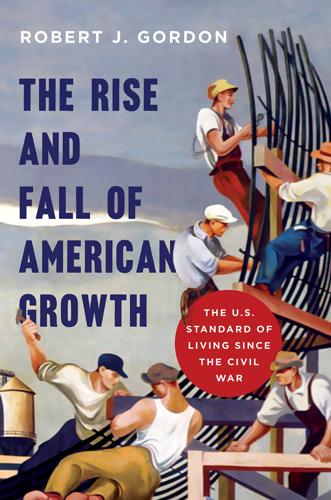
The Rise and Fall of American Growth: The U.S. Standard of Living Since the Civil War (The Princeton Economic History of the Western World)
by
Robert J. Gordon
Published 12 Jan 2016
(2013). “Henry Ford’s Experiment to Build a Better Worker,” Wall Street Journal, May 10, p. B1. Snyder, T. D., and Dillow, S. A. (2013). Digest of Education Statistics. Washington, DC: National Center for Education Statistics. Solow, Robert M. (1957). “Technical Change and the Aggregate Production Function,” Review of Economics and Statistics 39: 312–20. Solow, Robert M. (1987). “We’d Better Watch Out,” The New York Times, July 22. Soltow, Lee and Edward Stevens. (1981). The Rise of Literacy and the Common School in the United States: A Socioeconomic Analysis to 1870. Chicago, IL: University of Chicago Press.
…
We can state this puzzle in two symmetric ways: Why was TFP growth so slow before 1920? Why was it so fast during the fifty years after 1920? The leading hypothesis is that of Paul David, who provided a now well-known analogy between the evolution of electric machinery and of the electronic computer.14 In 1987, Robert Solow quipped, “We can see the computer age everywhere but in the productivity statistics.”15 David responded, in effect: “Just wait”—suggesting that the previous example of the electric dynamo and other electric machinery implied that a long gestation period could intervene between a major invention and its payoff in productivity growth.
…
However, the main upward stimulus to productivity must have come from the impetus of higher hourly wages, particularly in the late 1930s, that led firms to economize on the use of labor. This helps us to understand the explosion of productivity during World War II. THE ROLE OF LABOR QUALITY: THE SURGE IN EDUCATIONAL ATTAINMENT The study of the sources of productivity growth is called “growth accounting” and was pioneered by Robert Solow in the 1950s, with seminal additional contribution in the 1960s from Edward Denison, Zvi Griliches, and Dale Jorgenson.12 This approach subdivides the growth in labor productivity into four categories: Increases in labor quality, usually represented by changes in educational attainment Increases in the quantity of capital relative to the quantity of labor Increases in the quality of capital The leftovers, alternately called “total factor productivity” or “the residual” or even “the measure of our ignorance.”
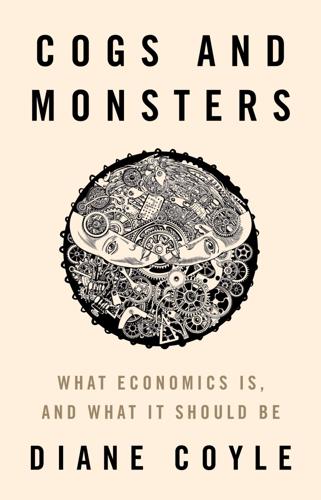
Cogs and Monsters: What Economics Is, and What It Should Be
by
Diane Coyle
Published 11 Oct 2021
Printing, steam, and electricity are obvious examples. Paul David (1990) provided one well-known historical account of these characteristics of a GPT, comparing the spread of computer technology in the 1980s to the electric dynamo in the early twentieth century, by way of explaining the ‘productivity paradox’ Robert Solow (1987, 36) had complained about: ‘You can see the computer age everywhere but in the productivity statistics.’ While the ultimate impacts were therefore substantial, the impact took a long time to show through in GDP and productivity figures. Although some economists question whether digital technologies are in the same league as these past GPTs in terms of their broad impact (Gordon 2016; Bloom et al. 2020), my view is that digital will be as transformational as earlier GPTs: eventually talking of the digital economy will sound as strange as talking of the electricity economy.
…
Snider, J., 2011, ‘Finance Now Exists for Its Own Exclusive Benefit’, Real Clear Markets, http://www.realclearmarkets.com/articles/2011/12/16/finance_now_exists_for_its_own_exclusive_benefit_99422.html, accessed 24 April 2012. Snow, C. P., 1963. The Rede Lecture: The Two Cultures, Cambridge: Cambridge University Press, first published in 1959. Solnit, R., 2014, ‘Get Off the Bus’, London Review of Books, 36 (4), https://www.lrb.co.uk/the-paper/v36/n04/rebecca-solnit/diary, accessed 10 August 2020. Solow, Robert, 1987, ‘We’d Better Watch Out’, New York Times Book Review, 12 July, 36. Spufford, F., 2010, Red Plenty, London: Faber and Faber. Spulber, D. F., 2019, ‘The Economics of Markets and Platforms’, Journal of Economics & Management Strategy, 28, 159–172. Stanovich, K. E., 2005, The Robot’s Rebellion: Finding Meaning in the Age of Darwin, Chicago: University of Chicago Press.
…
A., 122, 191 Sandel, Michael, 34, 39, 43, 107, 119 San Francisco, 59, 132–33 Schelling, Thomas, 143, 160 Schmelzer, M., 190 Scholes, Myron, 23–25, 28 Schumpter, Joseph, 41, 143 Scientific American, 92 Scott, James, 63 Seabright, Paul, 40 self-fulfilling prophecies, 5, 22–23, 154–55, 157 self-interest, 1, 6, 13, 23, 46–47, 109, 117–20, 123 self-referencing, 63, 104–5, 145, 206 Sen, Amartya, 64, 125, 128–29, 151 Sennheiser, 98 Sen-Stiglitz-Fitoussi Commission on the Measurement of Economic Performance, 151 separation protocol: behavioural economics and, 119–20, 124; competition and, 120, 123–25; decision making and, 120; empirical work and, 119, 124, 128; free market and, 123–24; homo economicus and, 119; interventions and, 123, 125, 127; macroeconomics and, 124; politics and, 121, 124; rationality and, 123–24; regulation and, 125; self-interest and, 119; welfare and, 120–27 servers, 25–26, 141, 170 service-based economy, 185, 197–98, 205 shadow banking, 76 Shalizi, Cosma, 183, 185 Shiller, Robert, 29–30, 159 shocks, 10, 12, 51, 71, 136, 166, 188, 190, 192, 213 Siemens, 196 Signal and the Noise, The (Silver), 94 Silver, Nate, 94 Sinclair, Jayne, 14 Sinclair, Peter, 14, 16 skill-biased technical change, 132 skills, 88, 128, 169–70 Small but Significant Non-Transitory Increase in Price (SSNIP) test, 204 smartphones, 46, 138–39, 164, 171, 173, 177, 195, 198 Smith, Adam, 41, 106, 120, 125 Smith, John Maynard, 48 Smith, Vernon, 47 Snow, C. P., 49 Snower, Dennis, 159 socialist calculation debate, 182–88, 190, 209 social media, 52, 73, 82, 140–41, 149, 157, 163, 173, 176–77, 195 social security, 146 social welfare function (SWF), 122–23 software, 25, 140, 155, 171, 177–78, 186, 197, 200–201, 203 Solow, Robert, 169 Soulful Science, The: What Economists Really Do and Why It Matters (Coyle), 15, 17–18 special interest groups, 64–66 spectrum auctions, 60–61 spillovers, 127, 139–40, 180, 199, 201, 206–8 Spufford, Francis, 182–83, 190 Sputnik, 190 stagnation, 143, 194 Standard Oil, 42 Stanovich, Keith, 47 Stapleford, Thomas, 146 statistics: Annual Abstract of Statistics for the United Kingdom and, 150; causality and, 61, 95, 99, 102; computers and, 17, 52, 58, 144, 169; digital economy and, 113, 150, 164, 170, 172, 212; empirical work and, 17, 52, 61, 90, 95, 99; Goodhart’s Law and, 72; improved methods for, 99–103; inflation and, 113, 146, 148, 164; macroeconomics and, 101–2, 113, 131; microeconomics and, 58, 101; Office for National Statistics and, 171; probability and, 99, 200; progress and, 138, 142, 144–53, 158–59, 164; public responsibilities and, 17, 42, 51–52, 58, 61, 72, 90, 94–102, 113; randomised control trials (RCTs) and, 93–95, 105, 109–10; Sen-Stiglitz-Fitoussi Commission on the Measurement of Economic Performance and, 151; technology and, 169–72, 212; twenty-first-century policy and, 13, 184, 199 steel, 175, 186, 190, 200 Stern Review, 148 Stiglitz, Joseph, 130, 151, 209 stimulus plans, 73, 75 straw men arguments, 1–2, 5, 10, 15 strikes, 31, 68, 192 superstar features, 173–74 supply and demand, 44, 70–71, 174–75, 183 sustainability, 11, 20, 29, 41, 59, 79, 111, 148, 152, 165–67, 214 Sutton, John, 62 System of National Accounts, 151, 164 Tanner Lectures on Human Values, 18, 83 Tarbell, Ida, 42 taxes, 12, 65; behavioural effects of, 3; benefits and, 157; empirical work and, 3; funded health care and, 44; interventions and, 213; national boundaries and, 196; politics and, 132; sales, 105; Trump and, 213; twenty-first-century policy and, 196, 203; value added (VAT), 105 taxis, 59, 68–69, 139, 186, 203 technology: adoption rates of, 172–73; AI and, 28 (see also artificial intelligence [AI]); automation and, 139, 154, 165–66, 195; changing economies and, 13, 168–81; cloud computing and, 150, 170–72, 184, 197; communications, 25–26, 53, 60, 127, 139, 150, 168, 171, 177, 196, 198; computers and, 2 (see also computers); consumers and, 28, 102, 171–76, 181, 200, 213; declining price of, 170; digital economy and, 6 (see also digital economy); electricity and, 65 (see also electricity); Great Financial Crisis (GFC) and, 56, 181; growth and, 71, 132, 140, 202; innovation and, 169–70 (see also innovation); internet and, 46, 97, 133, 138–39, 168, 198; machine learning and, 12–13, 137, 141, 160–61, 187; materials, 127; Moore’s Law and, 170, 184; outsider context and, 103; production and, 12, 132, 140, 169, 176, 195–96, 202, 213; productivity and, 127, 142, 153, 169, 172–73, 192, 194, 202; progress and, 134, 137–42, 160, 164–65; public responsibilities and, 26–28, 35, 40, 71; regulation and, 27, 71, 134, 181; response time and, 26; servers and, 25–26, 141, 170; skill-biased technical change and, 132; smartphones and, 46, 138–39, 164, 171, 173, 177, 195, 198; social media and, 52, 73, 82, 140–41, 149, 157, 163, 173, 176–77, 195; software, 25, 140, 155, 171, 177–78, 186, 197, 200–201, 203; statistics and, 169–72, 212; stock market bubble of, 133; telephony and, 4, 31, 46, 98, 123, 138–39, 144, 156, 164, 171, 173–74, 177, 184, 195, 198; twenty-first-century policy and, 189–90, 195, 202, 205, 208; ultra-high frequency trading (HFT) and, 25–27; welfare and, 177, 181 telephony: communications and, 4, 31, 46, 98, 123, 138–39, 144, 156, 164, 171, 173–74, 177, 184, 195, 198; GSM standard and, 156; smartphones and, 46, 138–39, 164, 171, 173, 177, 195, 198 Tencent, 173 Thatcher, Margaret, 15, 30–31, 36, 124, 158, 192–94, 206–7 3G platforms, 60, 139, 173, 195 time allocation theory, 2 Tirole, Jean, 209 Tories, 148 “Toward a More Accurate Measure of the Cost of Living” (Boskin Commission), 146–47 transaction costs, 36, 38, 129, 168 Trump, Donald, 57, 131, 213 Tucker, Paul, 62 Tullock, Gordon, 33 Turner, Adair, 31–32 twenty-first-century policy: algorithms and, 184–85, 188, 195, 200; artificial intelligence (AI) and, 184, 186–87, 195; behavioural economics and, 186, 202, 207–8; bias and, 187, 209; capitalism and, 186, 190, 195; competition and, 182, 201–9; computers and, 183–84, 186, 188, 214; consumers and, 184, 198–206; digital economy and, 13, 185–88, 194–210; electricity and, 191–92, 200–201; forecasting and, 205; free market and, 182, 186, 191, 193, 195, 207; Great Financial Crisis (GFC) and, 194; Gross Domestic Product (GDP) and, 187; growth and, 187, 191–92, 194, 202, 207, 209; innovation and, 189, 194–95, 200, 204, 209; interventions and, 188, 191, 194, 206–8, 211; Keynes and, 191, 193; macroeconomics and, 191; models and, 185–86, 189, 191, 197, 209; network effects and, 185, 199–202, 205, 209; political economy and, 188–95, 206–7; production and, 183, 185, 194–97, 199, 202; productivity and, 192, 194, 199, 202, 207; rationality and, 194; regulation and, 193–94, 200, 206; returns to scale and, 185–88, 199, 202–3, 209; statistics and, 13, 184, 199; taxes and, 196, 203; technology and, 189–90, 195, 202, 205, 208; twentieth-century economics and, 180; welfare and, 191, 194, 201, 206, 208 Uber, 68, 133, 142, 173, 175, 197, 203 UK Competition Commission, 105 UK Treasury, 74, 126 ultra-high frequency trading (HFT), 25–27 unemployment, 12, 19, 80, 113, 153, 191–92 unions, 64, 68–69, 129, 132, 146, 192, 194 Unipalm, 133 Unto This Last (Ruskin), 20 Uritaxi, 69 “Use of Knowledge in Society, The” (Hayek), 42–43, 183 US Federal Communications Commission, 60 US Federal Reserve Board, 17, 101 utilitarianism, 10, 151 value added tax (VAT), 105 von Mises, L., 182 Wall Street, 19 Waze, 141 Wealth of Nations, The (Smith), 41 webcams, 133 welfare: consumer, 105, 206; digital economy and, 128, 134, 143, 206, 208, 212; Gross Domestic Product (GDP) and, 134; Hicks-Kaldor compensation and, 122; normative economics and, 114, 120, 134; outsider context and, 105–7, 114; Pareto criterion and, 129; positive economics and, 114, 120; progress and, 130, 143; public responsibilities and, 55, 60; separation protocol and, 120–27; social, 55, 106–7, 114, 120–23, 134, 177, 201, 208; technology and, 177, 181; twenty-first-century policy and, 191, 194, 201, 206, 208 What Money Can’t Buy: The Moral Limits of Markets (Sandel), 34 WhatsApp, 171 Whigs, 148 Williamson, Oliver, 63–64 Wilson, Harold, 208 Winter of Discontent, 158, 192 World War I, 2 World War II, 69, 151, 190, 213 World Wide Web, 133, 195 Wren-Lewis, Simon, 31, 75 Wu, Alice, 8 Y2K, 155
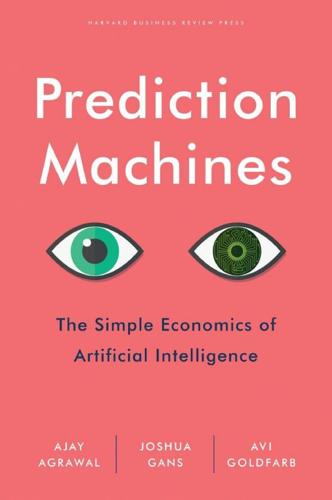
Prediction Machines: The Simple Economics of Artificial Intelligence
by
Ajay Agrawal
,
Joshua Gans
and
Avi Goldfarb
Published 16 Apr 2018
PART THREE Tools 12 Deconstructing Work Flows In the midst of the IT revolution, businesses asked, “How should we implement computers in our business?” For some, the answer was easy: “Find where we do lots of calculations and substitute computers for humans; they’re better, faster, and cheaper.” For other businesses, it was less obvious. Nonetheless, they experimented. But the fruits of those experiments took time to materialize. Robert Solow, a Nobel laureate economist, lamented, “You can see the computer age everywhere but in the productivity statistics.”1 From this challenge came an interesting business movement called “reengineering.” In 1993, Michael Hammer and James Champy, in their book Reengineering the Corporation, argued that to use the new general-purpose technology—computers—businesses needed to step back from their processes and outline the objective they wanted to achieve.
…
For instance, there are various clauses allowing alternatives when there is time pressure in battle. Mark Guburd, “Why Should We Ban Autonomous Weapons? To Survive,” IEEE Spectrum, June 1, 2016, http://spectrum.ieee.org/automaton/robotics/military-robots/why-should-we-ban-autonomous-weapons-to-survive. Chapter 12 1. Robert Solow, “We’d Better Watch Out,” New York Times Book Review, July 12, 1987, 36. 2. Michael Hammer, “Reengineering Work: Don’t Automate, Obliterate,” Harvard Business Review, July–August 1990, https://hbr.org/1990/07/reengineering-work-dont-automate-obliterate. 3. Art Kleiner, “Revisiting Reengineering,” Strategy + Business, July 2000, https://www.strategy-business.com/article/19570?
…
See autonomous vehicles sensors, 15, 44–45, 105 Shevchenko, Alex, 96 signal vs. noise, in data, 48 Simon, Herbert, 107 simulations, 187–188 skills, loss of, 192–193 smartphones, 129–130, 155 Smith, Adam, 54, 65 The Snows of Kilimanjaro (Hemingway), 25–26 society, 3, 19, 209–224 control by big companies and, 215–217 country advantages and, 217–221 inequality and, 212–214 job loss and, 210–212 Solow, Robert, 123 Space Shuttle Challenger disaster, 143 sports, 117 camera automation and, 114–115 sabermetrics in, 56, 161–162 spreadsheets, 141–142, 163, 164 Standard & Poor’s, 36–37 statistics and statistical thinking, 13, 32–37 economic thinking vs., 49–50 human weaknesses in, 54–58 stereotypes, 19 Stern, Scott, 169–170, 218–219 Stigler, George, 105 strategy, 2, 18–19 AI-first, 179–180 AI’s impact on, 153–166 boundary shifting in, 157–158 business transformation and, 167–178 capital and, 170–171 cheap AI and, 15–17 data and, 174–176 economics of, 165 hybrid corn adoption and, 158–160 judgment and, 161–162 labor and, 171–174 learning, 179–194 organizational structure and, 161–162 value capture and, 162–165 strokes, predicting, 44–46, 47–49 Sullenberger, Chesley “Sully,” 184 supervised learning, 183 Sweeney, Latanya, 195, 196 Tadelis, Steve, 199 Taleb, Nassim Nicholas, 60–61 The Taming of Chance (Hacking), 40 Tanner, Adam, 195 task analysis, 74–75, 125–131 AI canvas and, 134–139 job redesign and, 142–145 Tay chatbot, 204–205 technical support, 90–91 Tencent Holdings, 164, 217, 218 Tesla, 8 Autopilot legal terms, 116 navigation apps and, 89 training data at, 186–187 upgrades at, 188 Tesla Motor Club, 111–112 Thinking, Fast and Slow (Kahneman), 209–210 Tinder, 189 tolerance for error, 184–186 tools, AI, 18 AI canvas and, 134–138 for deconstructing work flows, 123–131 impact of on work flows, 126–129 job redesign and, 141–151 usefulness of, 158–160 topological data analysis, 13 trade-offs, 3, 4 in AI-first strategy, 181–182 with data, 174–176 between data amounts and costs, 44 between risks and benefits, 205 satisficing and, 107–109 simulations and, 187–188 strategy and, 156 training data for, 43, 45–47 data risks, 202–204 in decision making, 74–76, 134–138 by humans, 96–97 in-house and on-the-job, 185 in medical imaging, 147 in modeling skills, 101 translation, language, 25–27, 107–108 trolley problem, 116 truck drivers, 149–150 Tucker, Catherine, 196 Tunstall-Pedoe, William, 2 Turing, Alan, 13 Turing test, 39 Tversky, Amos, 55 Twitter, Tay chatbot on, 204–205 Uber, 88–89, 164–165, 190 uncertainty, 3, 103–110 airline industry and weather, 168–169, 170 airport lounges and, 105–106 business boundaries and, 168–170 contracts in dealing with, 170–171 in e-commerce delivery times, 157–158 reducing, strategy and, 156–157 strategy and, 165 unknown knowns, 59, 61–65, 99 unknown unknowns, 59, 60–61 US Bureau of Labor Statistics, 171 US Census Bureau, 14 US Department of Defense, 14, 116 US Department of Transportation, 112, 185 Validere, 3 value, capturing, 162–165 variables, 45 omitted, 62 Varian, Hal, 43 variance, 34–36 fulfillment industry and, 144–145 taming complexity and, 103–110 Vicarious, 223 video games, 183 Vinge, Vernor, 221 VisiCalc, 141–142, 163, 164 Wald, Abraham, 101 Wanamaker, John, 174–175 warehouses, robots in, 105 Watson, 146 Waymo, 95 Waze, 89–90, 106, 191 WeChat, 164 Wells Fargo, 173 Windows 95, 9–10 The Wizard of Oz, 24 work flows AI tools’ impact on, 126–129 decision making and, 133–140 deconstructing, 123–131 iPhone keyboard design and, 129–130 job redesign and, 142–145 task analysis, 125–131 World War II bombing raids, 100–102 X.ai, 97 Xu Heyi, 164 Yahoo, 216 Y Combinator, 210 Yeomans, Mike, 117 YouTube, 176 ZipRecruiter, 93–94, 100 About the Authors AJAY AGRAWAL is professor of strategic management and Peter Munk Professor of Entrepreneurship at the University of Toronto’s Rotman School of Management and the founder of the Creative Destruction Lab.
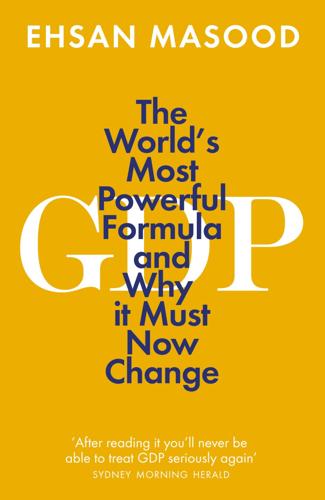
GDP: The World’s Most Powerful Formula and Why It Must Now Change
by
Ehsan Masood
Published 4 Mar 2021
Rostow would be accorded the importance he felt he deserved; his peers, meanwhile, would have their day in court. The conference took place in Konstanz, then in West Germany. Anyone who was anyone in academic economics seemed to have been invited. There was GDP’s co-creator Simon Kuznets; the historian of the British industrial revolution, Phyllis Deane; and the growth theorist Robert Solow. It must have been quite an event, though evidently not a happy one. Kuznets summed up the overall mood of his colleagues, calling Stages “a heroic over-simplification.” In response, Rostow called the judgment of his peers “an act of aggression.”22 The economists had come prepared, and immediately went on the attack.
…
But Germany’s growth was a much more anaemic 2.5 percent throughout the three decades from 1851 to 1880.25 Kuznets concluded that Rostow was right to study how economies grow and industrialize, but that he was wrong to think that he was studying observable reality. Instead of “take-off”, he advised his colleague to use the more accurate term, “early phase of modern economic growth”. Robert Solow was just as scathing. He said as the meeting was winding up how he had felt throughout the conference “that take-off in any country occurred when Professor Rostow felt that it had occurred.” Rostow reiterated that growth—as measured using the GDP formula—is not capable of accurately capturing how economies are progressing during and after take-off.
…
See also spending during depressions, 1, 2 as economic indicator, 1, 2, 3, 4 increase in, 1, 2, 3 Q quality of life, 1, 2, 3, 4, 5, 6, 7 R Radio Shangri-La: What I Discovered on My Accidental Journey to the Happiest Kingdom on Earth, 1 Raphel, Arnold, 1 Ravetz, Jerome, 1 Reagan, Ronald, 1, 2 recessions, 1, 2, 3 Reflections on Human Development, 1 research and development, 1, 2 resource scarcity, 1, 2, 3 Robinson, Joan, 1 Roosevelt, Franklin D., 1, 2, 3 Rostow, Walt Whitman, 1 Rusk, Dean, 1 S Sandberg, Sheryl, 1 Sarkozy, Nicolas, 1 Saul, John Ralston, 1 Say, Jean-Baptiste, 1 Say’s Law, 1 Schrecker, Ellen, 1 Schumacher, Fritz, 1 Science, 1 science spending, 1 Scientific Knowledge and Its Social Problems, 1 scientific notation, 1 Seers, Dudley, 1, 2, 3 Sen, Amartya, 1, 2, 3, 4, 5, 6, 7 Shapiro, Robert, 1, 2 Sheppard, Morris, 1 “shoe index,” 1 Shultz, George, 1 Silent Spring, 1, 2 Skidelsky, Robert, 1 Small Is Beautiful, 1 Smith, Kerry, 1 Solow, Robert, 1 species extinction, 1, 2, 3, 4, 5. See also environmental concerns spending by businesses, 1, 2, 3 by consumers, 1, 2, 3 consumption and, 1, 2, 3, 4, 5 debt and, 1 during depressions, 1, 2 as economic indicator, 1, 2, 3, 4 by governments, 1, 2, 3, 4 by households, 1, 2, 3 increase in, 1, 2, 3, 4 industrial spending, 1 investment and, 1, 2, 3 public spending, 1, 2, 3, 4, 5 science spending, 1 Splendid Isolation: Lessons on Happiness from the Kingdom of Bhutan, 1 Stages of Economic Growth: A Non-Communist Manifesto, 1, 2, 3, 4 Stamp, Josiah, 1, 2 Steady State Economics, 1 Stern, Nicholas, 1 Stewart, Frances, 1 Stiglitz, Joseph, 1 stimulus, 1, 2 stock market crash, 1 Stone, Richard, 1, 2, 3, 4, 5, 6 Streeten, Paul, 1, 2, 3 Strong, Frederick, 1 Strong, Maurice, 1, 2, 3, 4, 5, 6, 7, 8, 9 supply and demand, 1 Sussex, University of, 1, 2, 3, 4 Suzuki, David, 1 System of National Accounts (SNA), 1 T Thatcher, Margaret, 1, 2 thermal pollution, 1.
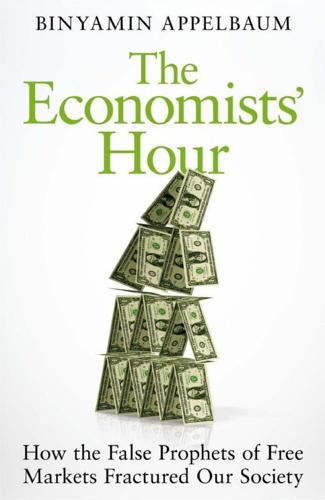
The Economists' Hour: How the False Prophets of Free Markets Fractured Our Society
by
Binyamin Appelbaum
Published 4 Sep 2019
During the second half, he emerged as “the most creative social political thinker of our age,” in the words of Daniel Patrick Moynihan, the New York senator and public intellectual who was well equipped to judge Friedman, since they worked in the same line.7 Even those who disagreed with Friedman found themselves unable to ignore his broadsides. “Only a small minority of the profession is persuaded by his opinions,” the liberal economist Robert Solow said in the 1960s, but “around any academic lunch table on any given day, the talk is more likely to be about Milton Friedman than about any other economist.”8 A half century later, economists still were talking about Friedman — but many more of them had come to agree. Lawrence H. Summers, a Harvard economist who served as a senior official in the Clinton and Obama administrations, wrote in 2006 that Friedman had been a “devil figure” in his youth, but he had come to view Friedman with great admiration.
…
Phillips plotted the relationship between unemployment and wages in the United Kingdom over the previous century, and found wages tended to rise when unemployment was low. Enthusiastically conflating correlation and causation, economists concluded governments could glide up and down a “Phillips curve,” trading off unemployment and inflation. In an influential paper published in 1960, Samuelson and Robert Solow, two of the most important economists of the postwar era, said the American government could choose from a “menu” of unemployment and inflation rates. The available options included 5 to 6 percent unemployment with no inflation or, if one preferred, 3 percent unemployment with 4 to 5 percent inflation.12 In Great Britain, one economist recalled a meeting in the early 1960s that devolved into an emotional confrontation between those wanting to limit unemployment to 1.25 percent and those favoring 1.75 percent: “There was a figure called Professor Frank Paish who proposed 2.5 percent, who was regarded as, more or less, a Nazi.”13 Washington’s embrace of economics began in the engine rooms of government.
…
But they were ready to acknowledge that monetary policy mattered. “Prevailing economic doctrine has only recently — prodded by Professor Friedman, among others — swung around from the view that monetary phenomena are not very important to the view that perhaps they are,” the Keynesian economist Robert Solow wrote in an open-minded review of A Monetary History.63 But Friedman’s triumph was incomplete. Two important differences remained. First, while Keynesians increasingly accepted the importance of monetary policy, they did not accept the impotence of fiscal policy. “The issue is not whether money matters — we all grant that — but whether only money matters,” said Walter Heller.64 Paul W.
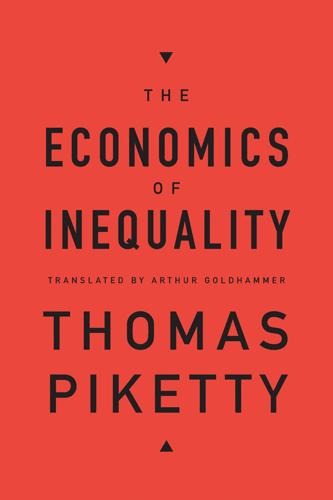
The Economics of Inequality
by
Thomas Piketty
and
Arthur Goldhammer
Published 7 Jan 2015
The opposition between the classical and marginalist theories of the capital-labor split resurfaced in the 1950s and 1960s in the so-called “Cambridge capital controversy,” which pitted economists in Cambridge, England, who insisted that the split was in essence a purely distributive conflict and emphasized the role of bargaining power, against other economists in Cambridge, Massachusetts, who argued that the relative prices of capital and labor also played an allocative role, drawing on Robert Solow’s idea of the aggregate production function, a mathematical representation of the possibility of capital-labor substitution at the level of the economy as a whole. Redistribution: “Fiscal” or “Direct”? What are the implications of capital-labor substitutability for redistribution? If one tries to redistribute capital income to labor by increasing workers’ wages, thereby increasing the price of labor, firms (and therefore the economy as a whole) will use less labor and more capital, so that the level of employment will decrease, and labor’s share of total income will increase less than the initial wage increase might have led one to believe.
…
See also Pension plans Ricardo, David, 30 RMI, in France, 113 Rothenberg, Jerome, 98 Savings: behavioral differences and, 13; credit markets and, 56–57, 60; elasticity of capital supply and, 35–37; Marx and, 39; pensions and, 115–116, 118 Self-employment: calculation of value added, 43; compensation as percentage of household income, 5, 6t; credit rationing and, 62; income inequality and, 12 Self-interest, and economic organization, 39, 106 Singapore, 58 Skill-biased technological change, 71–73, 76–77, 92 Social charges: average and marginal rates of redistribution, 100–102, 108; employer-employee shares of, 46–48, 104–105; fiscal incidence and, 52–53; as political issue, 76–77; price of labor and, 32, 42–44; shifting burden of from low- to high-wage jobs, 34, 76–77, 111, 113, 119; unemployment and, 110–111 Social income: household income and, 5, 6t, 7, 105; income inequality and, 12, 23; taxes and, 47 Social insurance: efficient redistribution and, 114–116; as instrument of fiscal redistribution, 116–119; markets as intertemporal markets, 61 Social integration, housing and educational outcomes and human capital, 83–84 Social justice: left-right consensus about fundamental principles of, 1–2; left’s skepticism about taxes and, 38, 52, 76; methods of redistribution and economic efficiency, 2–3, 32, 35–37, 55–57, 61, 64–65, 74, 105–106 Social origin, influence on human capital, 80–81 Solow, Robert, 30, 48, 59 South America: growth rate per capita, 58; human capital, 59; income inequality, 15 South Korea, 58 Stimulus programs, redistribution and, 121 Subsidized loans, as possible intervention in credit market, 62–63 Supply and demand: human capital and wages, 68, 69–70, 73–74, 88–89; unemployment and social charges, 111–112.
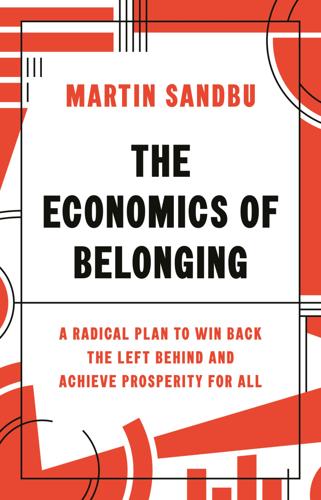
The Economics of Belonging: A Radical Plan to Win Back the Left Behind and Achieve Prosperity for All
by
Martin Sandbu
Published 15 Jun 2020
If this were baseball, it would be fair to count two strikes against Western policy makers’ performance already. That leaves them one pitched ball—the third big economic transformation hurtling towards us—away from being struck out. * * * Strike one: (mis)managing structural change. In 2015, the economist Robert Solow penned an article asking, “Why aren’t wages keeping up?”3 Solow is a giant in the economics profession whose theories of growth shaped everything that was done in that field in the second half of the twentieth century. He was also uniquely placed to give the question the full historical sweep it deserved: he published his article when he was just shy of his ninety-first birthday.
…
Miguel Carreras, Yasemin Irepoglu Carreras, and Shaun Bowler, “Long-Term Economic Distress, Cultural Backlash, and Support for Brexit,” Comparative Political Studies 52, no. 9 (2019): 1396–424, https://doi.org/10.1177/0010414019830714, summarised in Miguel Carreras, Yasemin Irepoglu Carreras, and Shaun Bowler, “It Is the Interplay between Economic Factors and Individual Attitudes That Explains Brexit,” LSE British Politics and Policy blog, London School of Economics and Political Science, 7 May 2019, https://blogs.lse.ac.uk/politicsandpolicy/economics-and-culture-brexit/. Chapter 4. Half a Century of Policy Mistakes 1. Robert Solow, “The Future of Work: Why Wages Aren’t Keeping Up,” Pacific Standard, 11 August 2015, https://psmag.com/economics/the-future-of-work-why-wages-arent-keeping-up. Also see Nelson Lichtenstein, Walter Reuther: The Most Dangerous Man in Detroit, Urbana: University of Illinois Press, 1997, chap. 14. 2.
…
See also economics of belonging Social Democratic Party (Germany), 231 social market economy: challenges to contemporary, 12–13; failures of, 9–10; in Germany, 60; policies and actions leading to creation of, 11–13; postwar accomplishments of, 8–9; principles of, 5; promise of, 8, 9; restoration of, 10; significance of, for political health of the nation, 7–8, 10, 12–16 soft skills, 33–34 Solow, Robert, 55–56 Soros, George, 89 Soviet Union, 6 Spain, 59, 150, 172, 175, 270n6 Springsteen, Bruce, 35 Starbucks, 181 structural change, mismanagement of, 55–62, 67 Subramanian, Arvind, 79–80 subsidies, 196–97 sudden stop, in money flows, 218 Summers, Lawrence, 66, 145 Sweden: economic change as trigger for populism in, 42–44, 47; egalitarianism and prosperity in, 99–100; job mobility in, 107–8; job training programmes in, 109; manufacturing technology in, 79 Sweden Democrat party, 43–45, 47 swing voters, 16 Switzerland: negative interest rates in, 164; net wealth taxes in, 172, 175, 177, 261n6, 263n12 “Take Back Control,” 8, 111, 221 TaskRabbit, 124, 128 tax avoidance, 179–81, 218–19 taxe GAFA (French tax), 180 tax policy, 168–87; carbon tax, 183–87; corporate taxes, 178–83, 218–19; harms inflicted on the vulnerable by, 168–69; income inequality arising from, 56–57, 169, 171; loopholes in, 175; net wealth taxes, 172–78; progressive taxes, 171; Trump’s, 179, 264n18.
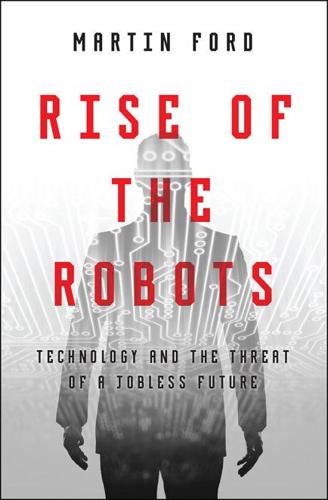
Rise of the Robots: Technology and the Threat of a Jobless Future
by
Martin Ford
Published 4 May 2015
Some economists have taken note of this plodding rate of advance in most spheres of technology and have tied it to the economic trends we looked at in the previous chapter, and in particular to the stagnation of incomes for most ordinary Americans. One of the foundational principles of modern economics is that such technological change is essential to long-term economic growth. Robert Solow, the economist who formalized this idea, received the Nobel Prize for his work in 1987. If innovation is the primary driver of prosperity, then perhaps stagnant incomes imply that the problem is the rate at which new inventions and ideas are being generated, rather than the impact of technology on the working and middle classes.
…
Louis (FRED).10 The Nobel laureate economist Joseph Stiglitz has been perhaps the most vocal proponent of the idea that inequality undermines economic growth, writing in a January 2013 New York Times op-ed that “inequality is squelching our recovery” because “our middle class is too weak to support the consumer spending that has historically driven our economic growth.”11 Robert Solow—who won the Nobel Prize in 1987 for his work on the importance of technological innovation to long-term economic growth—seems to largely agree, saying in a January 2014 interview that “increasing inequality tends to hollow out the income distribution, and we lose the solid middle class jobs and steady middle class incomes which provide a reliable flow of consumer demand that keeps industry going and innovating.”12 Paul Krugman, yet another Nobel laureate—and the one with the highest profile as a columnist and blogger for the New York Times—disagrees, however, writing in his blog that he wishes he “could sign on to this thesis,” but that the evidence doesn’t support it.13* Among more conservative economists, the idea that inequality is a significant drag on growth is likely to be dismissed entirely.
…
Louis: Corporate Profits After Tax (without IVA and CCAdj) [CP] and Retail Sales: Total (Excluding Food Services) [RSXFS]; http://research.stlouisfed.org/fred2/series/CP/; http://research.stlouisfed.org/fred2/series/RSXFS/; accessed April 29, 2014. 11. Joseph E. Stiglitz, “Inequality Is Holding Back the Recovery,” New York Times, January 19, 2013, http://opinionator.blogs.nytimes.com/2013/01/19/inequality-is-holding-back-the-recovery. 12. Washington Center for Equitable Growth, interview with Robert Solow, January 14, 2014, video available at http://equitablegrowth.org/2014/01/14/1472/our-bob-solow-equitable-growth-interview-tuesday-focus-january-14–2014. 13. Paul Krugman, “Inequality and Recovery,” New York Times (The Conscience of a Liberal blog), January 20, 2013, http://krugman.blogs.nytimes.com/2013/01/20/inequality-and-recovery/. 14.
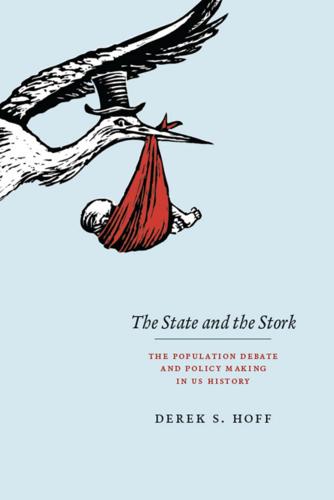
The State and the Stork: The Population Debate and Policy Making in US History
by
Derek S. Hoff
Published 30 May 2012
Lewis, who won the Nobel Prize for his development research, illuminated the traditional principle of diminishing returns and guessed that the United States was “neither over- nor under-populated.”108 Perhaps most importantly, a seminal 1956 statement on growth theory by population unbound 125 Nobel laureate Robert Solow assumed that a rising population reduces the level of capital per worker.109 The evolving strategy of the Population Council, the leading anti– population growth organization founded by John D. Rockefeller in 1952 and subsequently supported by the Ford Foundation, reflected the developing mainstream view that population problems could be found at home as well as overseas.
…
Paul Samuelson, an MIT Nobel laureate and leader of his generation of American Keynesians, noted, “It may be that in order to convince public opinion on the need to do something about ecology and not just talk about it, the overselling of . . . the Club of Rome, of biological scientists like the distinguished Paul Ehrlich . . . may still be found to earn a gold 226 chapter 8 star for good performance in that court of final judgment.”34 Nobel laureate and theorist of economic growth Robert Solow roundly dismissed the MIT study and yet wrote, “I hope nobody will conclude that I believe the problems of population control, environmental degradation, and resource exhaustion to be unimportant, or that I am one of those people who believe that an adequate response to such problems is a vague confidence that some technological solution will turn up.
…
Abramovitz, Thinking about Growth, xvi. 108. W. A. Lewis, The Theory of Economic Growth (London: George Allen and Unwin, 1955), 330. In his autobiography on the Nobel Prize’s website, Lewis discusses the role of “population pressure” in depressing wages (www.nobelprize.org/ economics/laureates/1979/lewis-autobio.html). 109. See Robert Solow, “A Contribution to the Theory of Economic Growth,” Quarterly Journal of Economics 70 (February 1956): 65–94. 110. Committee meetings centered on the developing world and reflected the shift in demographic transition theory from the assumption that modernization and economic development were sufficient to lower population growth to the stress on direct family planning programs. 111.
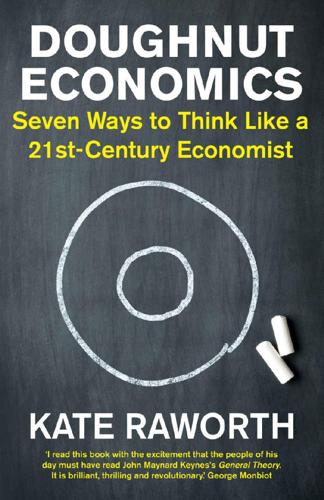
Doughnut Economics: Seven Ways to Think Like a 21st-Century Economist
by
Kate Raworth
Published 22 Mar 2017
Both variants failed to see the crash coming because – being built on the presumption of equilibrium, while simultaneously overlooking the role of the financial sector – they had little capacity to predict, let alone respond to, boom, bust and depression. With such ill-fitting models dominating macroeconomic analysis, some big-name insiders began to critique the very theories that they had helped to legitimise. Robert Solow, known as the father of neoclassical economic growth theory and long-time collaborator of Paul Samuelson, became an outspoken critic, first in his 2003 speech bluntly entitled ‘Dumb and Dumber in Macroeconomics’, then in analyses that mocked the theory’s stringent assumptions.6 The general equilibrium model, he pointed out, in fact depends upon there being just one single, immortal consumer-worker-owner maximising their utility into an infinite future, with perfect foresight and rational expectations, all the while served by perfectly competitive firms.
…
But when the games manufacturer Parker Brothers bought the patent for The Landlord’s Game from Magie in the 1930s, they relaunched it simply as Monopoly, and provided the eager public with just one set of rules: those that celebrate the triumph of one over all.35 Distributional dynamics that play out in board games show up in computer simulations of the economy too. It was Robert Solow, the outspoken critic of modern macro, who ridiculed equilibrium economic models by demonstrating that, far from modelling markets of many players, they were actually made up of a single ‘representative agent’ – reducing the economy to just one typical consumer-worker-owner who responds predictably to ‘external’ shocks.
…
If sufficient action were taken to move back within planetary boundaries, they argue, it would be unrealistic to believe that it could be accompanied by continual growth. And to understand why, we must revisit long-standing assumptions about what drives GDP growth in the first place. Back in the 1950s Robert Solow, father of economic growth theory, attempted to pin down exactly what had caused the US economy to grow over the past half-century. His seminal growth model – based on the same theoretical foundations as the Circular Flow diagram – assumed it would be due to the productivity gains arising from labour and capital working ever more effectively together.
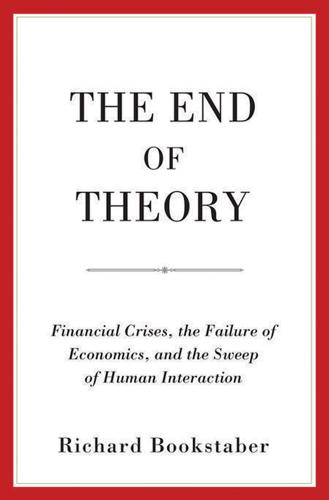
The End of Theory: Financial Crises, the Failure of Economics, and the Sweep of Human Interaction
by
Richard Bookstaber
Published 1 May 2017
That is where we are today, and, ironically, the germination of the crisis in economics is its inability to deal with the dynamics of crisis. A scientific revolution requires both a period of crisis science and a candidate for a new paradigm. The 2008 crisis may be such a stimulus. Agent-based modeling may be the new paradigm. Borges’s Tlön Following the 2008 crisis, Robert Solow, Nobel laureate and dean of economic growth theory, testified before the House Committee on Science and Technology. He critiqued the core model applied for macroeconomic analysis by central banks throughout the world, the dynamic stochastic general equilibrium (DSGE) model. In his prepared testimony, titled “Building a Science of Economics for the Real World,” he said that these models take it for granted that the whole economy can be thought about as if it were a single, consistent person or dynasty carrying out a rationally designed long-term plan, occasionally disturbed by unexpected shocks but adapting to them in a rational, consistent way.
…
Singer, Tania, and Matthias Bolz, eds. 2013. Compassion: Bridging Practice and Science. Munich, Germany: Max Planck Society. http://www.compassion-training.org/en/online/index.html?iframe=true&width=100%&height=100%#22. Smith, Rupert. 2008. The Utility of Force: The Art of War in the Modern. New York: Vintage. Solow, Robert. 2010. “Building Science for a Real World.” Testimony presented at a hearing before the Subcommittee on Investigations and Oversight, Committee on Science and Technology, U.S. House of Representatives, July 20. https://www.gpo.gov/fdsys/pkg/CHRG-111hhrg57604/pdf/CHRG-111hhrg57604.pdf. Soros, George. 1987.
…
See also Russell, Bertrand; Whitehead, Alfred North radical uncertainty, 12, 18; defined as, 50–51; economists’ view of, 197; and heuristics, 68; and the Library of Babel, 63 (see also Library of Babel); and the limits to knowledge, 52; and the nature of humanity, 60; and risk management, 121; in unknown state versus unknown probabilities, 198; and warfare, 117, 121 railroads, 4 rational expectations, 86 Rational Expectations Hypothesis (REH); fallibility and, 175; and reflexivity, 175; reflexivity, comparison to, 115 rationality, 87 reflexivity, 58, 60, 113; and complexity, 115, 122; and the cognitive function, 114, 137–138; and elements in modeling, 114; and fallibility, 59; and heuristics, 115; manipulative function in, 114, 137–138; time-and-context in, 183 regime shift, 105 regularity conditions, 29 regulators, 15 representative agent, 81–82 reproduction, 72–73 Reynolds, Craig, and boids, 37 Ricardo, David, 3–4, 91, 188 risk management: radical uncertainty in, 121 (see also radical uncertainty); in warfare, 121 risk transformations, 131 Rome, 131 Rorty, Richard, 178 Rothschild, Baron, 4 Royal Society, 52 Rumsfeld, Donald, 50 Russell, Bertrand, 52–53 Saari, Donald, 29 Samuelson, Paul, 84 Sartre, Jean-Paul, 77 Sargent, Thomas, 71, 103 Saturday Night Live, 144 Say, Jean-Baptiste, 4 Securities and Exchange Commission (SEC), 147–148 securities lenders, 136 self-fulfilling prophecy, 113 self-referential systems, 57, 60 self-replication, 31 Shackle, G.L.S., 85 Sharpe, William, 85 Shereshevsky, Solomon, 76–77 Simon, Herbert, 110 SIVs, 161, 165 Slick, Grace, 50 Smith, Adam, 3–4, 188 Societie Generale (SocGen), 164 Solow, Robert, 92 Soros, George, 83, 115, 137; and reflexivity, 58–59 stampede: and emergence, 35–36; Hajj, example of, 34–36 Standard & Poor’s, 160 stock market crash (October 1987): and the New York Stock Exchange (NYSE), 145–147; and portfolio insurance, 145–147 (see also portfolio insurance); and the S&P 500, 145–147 subprime mortgages, 160–161 Sun Pin, 117 Syll, Lars, 138 Thomas Theorem, 108 tight coupling, 112 Turing, Alan: and David Hilbert’s program, 54 (see also halting problem); and the halting problem, 31, 55; and the printing problem, 55; and Turing test, 196; and the universal Turing machine (UTM), 54 (see also universal Turing machine) Tversky, Amos, 45–47 Unbearable Lightness of Being, The, 60–61 uncertainty principle, 56–57; and the limits to knowledge, 51 universal Turing machine (UTM), 32, 54–56 University of Chicago, 3 Victorian England, 3–4 Volcker Rule, 156, 158 Walras, Leon, 194 Washington Mutual, 11 white night, 131 Whitehead, Alfred North, 52–53 Wittgenstein, Ludwig, 40 Wolfram, Stephen, 26–27 A NOTE ON THE TYPE This book has been composed in Adobe Text and Gotham.

The Wealth of Humans: Work, Power, and Status in the Twenty-First Century
by
Ryan Avent
Published 20 Sep 2016
This slice of history played out during a period that economist Tyler Cowen, of George Mason University, has labelled the ‘Great Stagnation’.8 A half-century of extraordinary gains in computing power somehow did not return humanity to the days of dizzying economic and social change of the nineteenth century. In 1987 the Nobel Prize-winning economist Robert Solow mused, in a piece pooh-poohing the prospect of a looming technological transformation, that the evidence for the revolutionary power of computers simply wasn’t there. ‘You can see the computer age everywhere but in the productivity statistics’, he reckoned, and he had a point.9 Productivity perked up in the 1990s but wheezed out again in the 2000s.
…
Moore, Gordon, ‘Cramming More Components Onto Integrated Circuits’, Electronics, 19 April 1965. 8. Cowen, Tyler, The Great Stagnation: How America Ate All the Low-Hanging Fruit of Modern History, Got Sick, and Will (Eventually) Feel Better (New York, NY: E. P. Dutton & Co Inc., 2011). 9. Solow, Robert, ‘Manufacturing Matters’, The New York Times, 12 July 1987. 10. Basu, Susanto, and Fernald, John, ‘Information and Communications Technology as a General-Purpose Technology: Evidence from U.S. Industry Data’, German Economic Review, Vol. 8, Issue 2, 2007. 11. Brynjolfsson and McAfee Race Against the Machine. 12.
…
Ray labour abundance as good problem bargaining power cognitive but repetitive collective bargaining and demographic issues discrimination and exclusion global growth of workforce and immigration liberalization in 1970s/80s ‘lump of labour’ fallacy occupational licences organized and proximity reallocation to growing industries retraining and skill acquisition and scarcity and social value work as a positive good see also employment Labour Party, British land scarcity Latvia Le Pen, Jean-Marie Le Pen, Marine legal profession Lehman Brothers collapse (2008) Lepore, Jill liberalization, economic (from 1970s) Linkner, Josh, The Road to Reinvention London Lucas, Robert Lyft maker-taker distinction Malthus, Reverend Thomas Manchester Mandel, Michael Mankiw, Gregory marketing and public relations Marshall, Alfred Marx, Karl Mason, Paul, Postcapitalism (2015) McAfee, Andrew medicine and healthcare ‘mercantilist’ world Mercedes Benz Mexico Microsoft mineral industries minimum wage Mokyr, Joel Monroe, President James MOOCs (‘massive open online courses’) Moore, Gordon mortality rates Mosaic (web browser) music, digital nation states big communities of affinity inequality between as loci of redistribution and social capital nationalist and separatist movements Netherlands Netscape New York City Newsweek NIMBYism Nordic and Scandinavian economies North Carolina North Dakota Obama, Barack oil markets O’Neill, Jim Oracle Orbán, Viktor outsourcing Peretti, Jonah Peterson Institute for International Economics pets.com Philadelphia Centennial Fair (1876) Philippines Phoenix, Arizona Piketty, Thomas, Capital in the Twenty-First Century (2013) Poland political institutions politics fractionalization in Europe future/emerging narratives geopolitical forces human wealth narrative left-wing looming upheaval/conflict Marxism nationalist and separatist movements past unrest and conflict polarization in USA radicalism and extremism realignment revolutionary right-wing rise of populist outsiders and scarcity social membership battles Poor Laws, British print media advertising revenue productivity agricultural artisanal goods and services Baumol’s Cost Disease and cities and dematerialization and digital revolution and employment trilemma and financial crisis (2008) and Henry Ford growth data in higher education of highly skilled few and industrial revolution minimum wage impact paradox of in service sector and specialization and wage rates see also factors of production professional, technical or managerial work and education levels and emerging economies the highly skilled few and industrial revolution and ‘offshoring’ professional associations skilled cities professional associations profits Progressive Policy Institute property values proximity public spending Putnam, Robert Quakebot quantitative easing Race Against the Machine, Brynjolfsson and McAfee (2011) railways Raleigh, North Carolina Reagan, Ronald redistribution and geopolitical forces during liberal era methods of nation state as locus of as a necessity as politically hard and societal openness wealth as human rent, economic Republican Party, US ‘reshoring’ phenomenon Resseger, Matthew retail sector retirement age Ricardo, David rich people and maker-taker distinction wild contingency of wealth Robinson, James robots Rodrik, Dani Romney, Mitt rule of law Russia San Francisco San Jose Sanders, Bernie sanitation SAP Saudi Arabia savings glut, global ‘Say’s Law’ Scalia, Antonin Scandinavian and Nordic economies scarcity and labour political effects of Schleicher, David Schwartz, Anna scientists Scotland Sears Second World War secular stagnation global spread of possible solutions shale deposits sharing economies Silicon Valley Singapore skilled workers and education levels and falling wages the highly skilled few and industrial revolution ‘knowledge-intensive’ goods and services reshoring phenomenon technological deskilling see also professional, technical or managerial work Slack (chat service) Slate (web publication) smartphone culture Smith, Adam social capital and American Constitution baseball metaphor and cities ‘deepening’ definition/nature of and dematerialization and developing economies and erosion of institutions of firms and companies and good government and housing wealth and immigration and income distribution during industrial revolution and liberalization and nation-states productive application of and rich-poor nation gap and Adam Smith and start-ups social class conflict middle classes and NIMBYism social conditioning of labour force working classes social democratic model social reform social wealth and social membership software ‘enterprise software’ products supply-chain management Solow, Robert Somalia South Korea Soviet Union, dissolution of (1991) specialization Star Trek state, role of steam power Subramanian, Arvind suburbanization Sweden Syriza party Taiwan TaskRabbit taxation telegraphy Tesla, Nikola Thatcher, Margaret ‘tiger’ economies of South-East Asia Time Warner Toyota trade China as ‘mega-trader’ ‘comparative advantage’ theory and dematerialization global supply chains liberalization shaping of by digital revolution Adam Smith on trade unions transhumanism transport technology self-driving cars Trump, Donald Twitter Uber UK Independence Party United States of America (USA) 2016 Presidential election campaign average income Bureau of Labour Statistics (BLS) Constitution deindustrialization education in employment in ethno-nationalist diversity of financial crisis (2008) housing costs in housing wealth in individualism in industrialization in inequality in Jim Crow segregation labour scarcity in Young America liberalization in minimum wage in political polarization in post-crisis profit rates productivity boom of 1990s real wage data rising debt levels secular stagnation in shale revolution in social capital in and social wealth surpasses Britain as leading nation wage subsidies in university education advanced degrees downward mobility of graduates MOOCs (‘massive open online courses’) and productivity see also education urbanization utopias, post-work Victoria, Queen video-gamers Virginia, US state Volvo Vox wages basic income policy Baumol’s Cost Disease cheap labour and employment growth and dot.com boom and financial crisis (2008) and flexibility and Henry Ford government subsidies and housing costs and immigration and industrial revolution low-pay as check on automation minimum wage and productivity the ‘reservation wage’ as rising in China rising in emerging economies and scarcity in service sector and skill-upgrading approach stagnation of and supply of graduates Wandsworth Washington D.C.
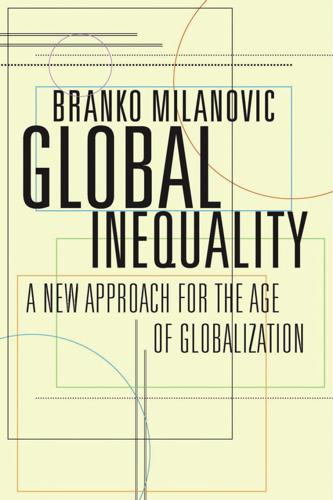
Global Inequality: A New Approach for the Age of Globalization
by
Branko Milanovic
Published 10 Apr 2016
Data source: Based on OECD data available at https://stats.oecd.org/Index.aspx?DataSetCode=UN_DEN. The decline in trade union density underpins a more general process of the weakening of the bargaining position of labor vis-à-vis capital. In a recent revisiting of his own contribution to the theory of growth, Robert Solow looked at the possibility that the declining labor share in rich countries is due to a renegotiation of rents in favor of capital owners.48 Solow considers an economy-wide model of imperfect competition where value added is distributed between labor and capital, paid according to their marginal products plus a rent, which is the object of negotiation between the two.
…
Twenty years later, membership in the public sector was almost 4 million and in the private sector just 2.5 million (see chart 2.1 in https://www.gov.uk/government/uploads/system/uploads/attachment_data/file/313768/bis-14-p77-trade-union-membership-statistical-bulletin-2013.pdf). 48. Based on Robert Solow’s presentation at the Graduate Center, City University of New York, April 30, 2015. There was no written paper as of May 2015. 49. For a discussion of the technology versus globalization “contest,” see Krugman (1995), Slaughter and Swagel (1997), and Slaughter (1999). The technological change literature argues that wage inequality increased mostly as a result of the race between technology and skills (with periods of greater demand for skills unmatched by a sufficient increase in their supply).
…
See also marriages social services and insurance: preindustrial period and, 70; Kuznets cycles and, 89, 93–94, 116–117; globalization and, 163; middle class decline and, 197, 199; rich people and, 197, 199, 261n30; US Great Leveling and, 222; “net” and, 262n42. See also health care; transfers, social social tables, 82–84, 248n19, 253n3, 254n7 Society of Peoples, 255n18 Solow, Robert, 106 Stakhanov, Aleksei, 101 standards of living, 14–15 staple goods, subsidization of, 101 steamship technology, 258n7 stock variables, 39 subsistence level, 50, 52–53, 65, 67–68, 69, 84, 246n6 Sumarto, Sudarno, 262n42 super-wealthy. See billionaires supply and demand, 245n2 Suryahadi, Asep, 262n42 Swagel, Phillip, 252n49 Taleb, Nassim, 159, 223, 225 Tan, Kok-Chor, 203, 256n26 taxes: twenty-first and twenty-second centuries and, 7; data sources, 12; S curves and, 23; income pre-, 37–38; income after, 38–39; rich countries (1918–1980) and, 48; 1980s and, 54–55; wars and, 64, 97, 250n35; 1980 and after, 72; Netherlands preindustrial period and, 77; twentieth-century leveling and, 94; Great Leveling and, 98; capital/labor bargaining power and, 106; United States, 107, 181; Kuznets cycles and, 111, 113–114; globalization and, 112, 217–218; migrants and, 152, 206, 262n41; financial assets and, 221; methodological nationalism and, 237; mobile capital and, 246n11.
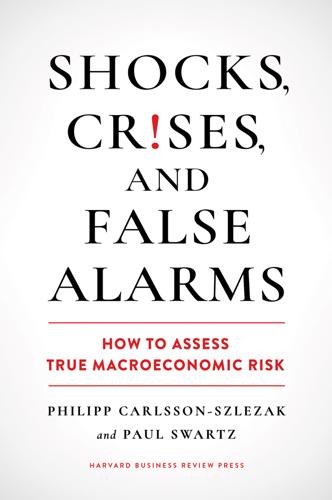
Shocks, Crises, and False Alarms: How to Assess True Macroeconomic Risk
by
Philipp Carlsson-Szlezak
and
Paul Swartz
Published 8 Jul 2024
And the economy’s productive capacity comes down to the supply of labor (available hours of work), stock of capital (number of machines, facilities, software solutions, etc.), and level of productivity (how good we are at turning these inputs into outputs). These three lenses are the components of growth accounting, a simple, tried-and-tested workhorse of macroeconomics. Like all models, it has imperfections. Reflecting on them, the intellectual godfather of this approach, Robert Solow, once concluded that it could be abandoned “as soon as something better comes along.”5 But nothing better has come along. And the approach is good enough for pressure testing—indeed, as we will see, to derail—some claims of both the optimists and the pessimists. Certainly, their more extreme versions—growth of 4% or far below 2%—wither under its scrutiny.
…
Computers were hardly new in the 1990s, but it took time (and the internet was a catalyst) for their systemic impact to manifest. Figure 8.2 shows the enormous investment in ICT starting in the 1970s that nonetheless left productivity growth as a flat line—until it shifted up in the mid-1990s. In an often quoted quip, the economist Robert Solow in 1987 lamented that “you can see the computer age everywhere but in the productivity statistics.”8 Yes, what is today referred to as the Solow paradox was on full display in 1987. But 10 years later, the productivity surge had arrived. The magnitude of the productivity growth upshift in basis points (bps): 100.
…
See quantitative easing (QE) quality-of-life adjustments, 87 quantification, 21 geopolitical, 211–212 quantitative easing (QE), 113–115, 113f, 186–187 railroad bubble, 182, 189 rational optimism, 8, 12, 26, 30, 244, 255 Reagan, Ronald, 106, 108–110, 109f real economy cyclical risk profiles and, 33–44 growth narratives and, 55–66 magical growth models and, 67–77 recoveries and, 45–54, 48f risks, 29f real-economy recessions, 34, 36 cyclical risk profile for, 37–38, 37f decline of, 37–38 macroeconomic impact of, 42f risk assessment for, 41–42 real linkages, of geopolitical shocks, 213–214, 218 recessions, 14 cyclical risk profile and, 33–44 false alarms about, 24–25 future risk of, 246–247 intensity of and recovery, 53–54 interest rates and, 164 postpandemic predictions of, 6, 24–25 probabilities of, 34–36 risk of compared to mortality risk, 36–37 types of, 34 typology and macroeconomic impact of, 42–43, 42f recoveries, 14 how they happen, 45–54 postpandemic, 51, 52f shapes of, 46–47, 47f structural impact and, 45–46 supply side in, 47–51 tendencies vs. destiny in, 51–53 regulation, 25, 249 bubbles and, 111, 183, 188 technology and, 95, 98 Reinhart, Carmen, 170 relative cost advantage, 89 reserve currency status, 14, 231–239, 251 benefits of, 233–234 burdens of, 234–238 debt dynamics and, 174 enablers of, 233–234 evaluating threats to, 238–239 as exorbitant privilege, 233–235 financial divergence and, 204–205 reshoring, 225 retraining, 100 Rogoff, Kenneth, 170 Roosevelt, Franklin D., 121 Roubini, Nouriel, 51, 237 r-star (r*), 156–157, 157f, 167 Russia, 123 BRICS and, 231, 238 Crimea annexed by, 203 Ukraine war and, 186 sanctions, 214, 238 scarcity, productivity and, 90 scenarios geopolitical, 212–214 in geopolitical assessment, 208–209 for risk assessment, 28, 44 Seattle WTO riots, 201 security convergence, 198 semiconductors, 7, 45, 225 separation, trade and, 224–225 services labor costs and technology in, 83–84, 87f prices in, 85–88, 86f productivity and, 64, 88–89 real recession risk and, 38 technology, growth, and, 81–82, 82f shocks, 4–7, 244 Shriver, Lionel, 169 Silicon Valley Bank collapse, 41, 188 skepticism toward doom and gloom, 10 toward theories, 21–22 societal frictions, productivity and, 94 soft landings, 39–40, 144, 145 Solow, Robert, 57, 96 Solow paradox, 96 Sony, 73 South Africa, 231, 238 South Korea, 123 Soviet Union Cold War trade with, 224–225 experts’ predictions on, 209–210 gravity of growth in, 68 magical growth models on, 68, 71–72 stagflation, 248–249 Steffens, Lincoln, 72 stimulus, 14, 29f, 249 analysis framework for, 115–116, 115f bubbles fostered by, 105, 110–112, 111f compulsive machine of, 105–116 culture of, 40 enablers of, 116 existential, 105, 106, 113, 115–116, 117–125 objectives of, 115–116, 115f potential for failure of, 116, 117–125 Reagan and, 108–110, 109f recoveries and, 50 risk created by, 105 systemic risk and, 112–115, 114f tactical, 29f, 105, 125, 127–136, 249 willingness and ability to use, 106–108, 115–116, 117 Stock, James, 238 strains, good, 14, 161 capital allocation and, 167 future of, 244, 247–250, 252 stress tests, for financial systems, 188 strongman leaders, 203 structural impacts, recoveries and, 45–46 structural inflation, 29f demand and, 140 false alarms about, 24 regime in, 137–148, 138f, 139f structural risks, 19, 19f Summers, Larry, 145 Sun Yeli, 76 superabundance, 101 supply cyclical vs. structural inflation and, 140 economic policies and, 48–50 growth and, 57–59 postpandemic inflation and, 142–143, 142f recoveries and, 47–51, 54 Susskind, Daniel, 99 SWIFT payment system, 231, 238 tactical risks, 19 tactical stimulus, 29f, 105, 125, 127–136, 249 future of, 135–136 limitations of, 127–128 market offset and, 128, 129f, 132–133 market vetoes of, 127–129 monetary policy and, 128, 129–131, 129f, 130f policy offset and, 128, 129f, 133–134 political objections to, 128, 129f, 131–132 risks to, 128–129, 129f UBI, MMT, and, 134–135 TARP.
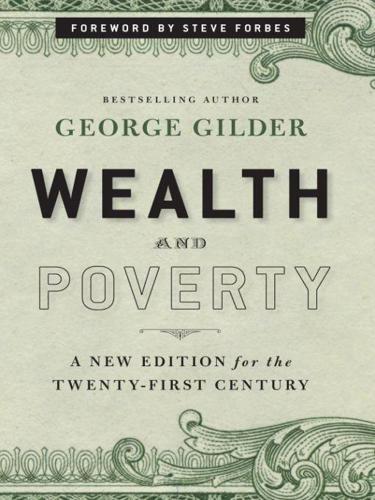
Wealth and Poverty: A New Edition for the Twenty-First Century
by
George Gilder
Published 30 Apr 1981
A car, for example, is more or less valuable not only through its own qualities, but through the quality of roads and places to drive, the availability of fuel and alternative modes of transportation, the level of real incomes, the opportunity costs of such a large purchase, and the existence of suburbs and shopping centers. These and endless other considerations affect price and value but defy quantification or comparison to the prices in previous eras, whether of automobiles or horse-drawn carriages. In a footnote to his famous essay on inflation, Robert Solow airily observes that all who raise such concerns “can sign up for the course on index theory, but they will find it dull.”9 Dull or not, such matters constitute the essence of the problem of defining, measuring, and treating inflation. These problems render the usual indexes nearly useless in scientific terms in the long run and of doubtful worth even in the short run.
…
Evans, “Taxes, Inflation, and the Rich,” Wall Street Journal, August 7, 1978, p. 10; reprinted in ibid., pp. 62–64. 5 Quoted in Scott Burns, “Why We’re Selling the Future to Japan,” Boston Herald American, March 13, 1978, p. 11. 6 Henry Aaron, ed., Inflation and the Income Tax (Washington, DC: the Brookings Institution, 1976), p. 193. 7 David Warsh and Lawrence Minard, “Inflation Is Too Important to Leave to the Economists,” Forbes, November 15, 1976, and David Warsh, “The Great Hamburger Paradox,” Forbes, September 15, 1977. 8 E. H. Phelps-Brown and Sheila V. Hopkins, “Seven Centuries of Building Wages,” Economica, vol. 22, no. 87 (August 1955) and E. H. Phelps-Brown and Sheila V. Hopkins, “Seven Centuries of the Prices of Consumables, Compared to Builders’ Wage Rates,” Economica (1956). 9 Robert Solow, “The Intelligent Citizen’s Guide to Inflation,” Public Interest , no. 38 (Winter 1975), p. 33. 10 Robert L. Heilbroner and Lester C. Thurow, The Economic Problem, rev. edition (Englewood Cliffs, NJ: Prentice-Hall, 1979). 11 M. Panic, “The Origin of Increasing Inflationary Tendencies,” in Fred Hirsch and John H.
…
Sennholz, Hans. F. Death and Taxes. Washington, DC: the Heritage Foundation, 1976. Shackle, G. L. S. Epistemics and Economics: A Critique of Economic Doctrines. London, Cambridge University Press, 1972. Smith, Adam. The Wealth of Nations. Edited by Edwin Cannan. New York: G. P. Putnam’s Sons, 1904. Solow, Robert. “The Intelligent Citizen’s Guide to Inflation.” Public Interest 38 (Winter 1975). Sowell, Thomas. American Ethnic Groups. Washington, DC: the Urban Institute, 1978. ———. Classical Economics Reconsidered. Princeton, NJ: Princeton University Press, 1974. ———. “Economics and Economic Man.” In Kristol, Irving, and Weaver, Paul, eds.
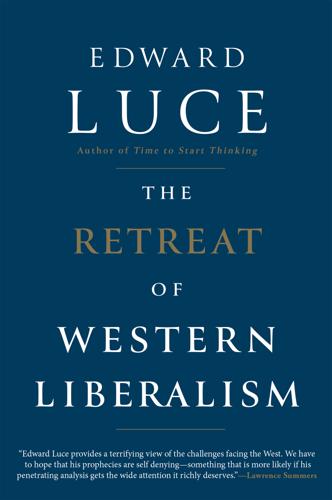
The Retreat of Western Liberalism
by
Edward Luce
Published 20 Apr 2017
We are still awaiting the productivity gains we were assured would result from the digital economy. With the exception of most of the 1990s, productivity growth has never recaptured the rates it achieved in the post-war decades. ‘You can see the computer age everywhere but in the productivity statistics,’ said Robert Solow, the Nobel Prize-winning economist. Peter Thiel, the Silicon Valley billionaire, who has controversially backed Donald Trump, put it more vividly: ‘We wanted flying cars, instead we got 140 characters [Twitter].’ That may be about to change, with the acceleration of the robot revolution and the spread of artificial intelligence.
…
R., 149 media: exposure of Nixon, 131–2; fake news, 130, 148, 178–9; falling credibility in US, 130; in Russia, 129–31, 172–3; television, 84, 128, 129, 130 medicine and healthcare, 35, 36, 42, 58, 59, 60, 62, 102, 103, 198 Medvedev, Dimitry, 79 Meiji Restoration in Japan, 78 mercantilism, 78 ‘meritocracy’, 43, 44–6 Merkel, Angela, 15, 180 Mexico, 29, 114 Middle East, 181, 183 Middle East and North Africans (MENAs, US ethnic category), 95 Midland, Michigan, 194–5 migration, 41, 99–100, 196, 198; current crisis, 70, 100, 140, 180–1; and welfare systems, 101, 102 Milanovic, Branko, 31, 32, 33 Mill, John Stuart, 161, 162 Mineta, Norman, 134 Mitterrand, François, 90, 107 Modi, Narendra, 201 Moldova, Grape Revolution (2009), 79 Mongol China, 25 Monroe Doctrine (1823), 164–5 Moore, Barrington, 12 Morozov, Evgeny, The Net Delusion, 129 Mounk, Yascha, 68, 123 Müller, Jan-Werner, 90, 118, 139 multinational companies, 26–7, 69–70 multipolarity, 6–8, 70 Musharraf, Pervez, 80 Muslim Brotherhood in Egypt, 82 Napoleonic Wars, 156 Nathan, Andrew, 84 National Endowment for Democracy (NED), 82 National Front in France, 15, 102, 108–10 National Health Service, 102 nationalism: comeback of, 11, 97, 102, 108–9, 170, 174; and end of Cold War, 5; European, 10–11, 102, 108–9; and global trilemma, 72–3; Summers’ responsible nationalism, 71–2 Nato alliance, 135, 140, 179 Navarro, Peter, 149, 167, 180 Negroponte, Nicholas, 127 Netherlands, 102 New York, 49–50, 54 New Yorker, 35 Nixon, Richard, 131–2, 134 non-governmental organisations (NGOs), 85 North American Free Trade Agreement, 73 North Korea, 175 nuclear weapons, 5, 167, 174–6 Nuttall, Paul, 90 Obama, Barack: and AIIB, 84; and Arab Spring, 82; Asia pivot policy, 157, 160–1; election of (2008), 97; and financial sector, 193, 199; gay marriage issue, 188; gender identity order (2016), 187–8; on history’s long arc, 190; and Islam, 182; and nuclear weapons, 175–6; trip to China (2009), 159–60; US–Russia relations, 79; and world trade agreements, 73; ‘wrong side of history’ language, 187–8, 190 Occupy Wall Street, 139 oikophobia, 111–12, 117 Opium Wars, 23 Orbán, Viktor, 138–9, 181 Organization for Economic Cooperation and Development, 29 Orwell, George, 69, 128 Oxford University, 4 Paine, Thomas, 126 Pakistan, 175 Philippines, 61, 136–7, 138, 160, 202 Philosophy, Politics and Economics (PPE), 4 Plato, 137 politics in West: 1968 Democratic Convention, 188–9; decline of established parties, 88–90; declining faith in system, 8–9, 12, 14, 88–9, 98–100, 103–4, 119–23, 202–3; and disappearing growth, 13; falling voter turnout in UK, 99; left embraces personal liberation (1960s), 188–9; and ‘meritocracy’, 43–6; move rightwards of working classes, 95–9, 102, 108–10, 189–91, 194–5; and national identity, 71–3; privatising of risk since late 1970s, 191–3; responses to digital revolution, 52–4, 56–8, 59–61, 67–8; Third Way, 89–92; urban–hinterland split, 46–51, 119, 120, 130, 135; US political system, 131–6; voter disdain for elites, 14, 98–100, 110, 119 Pomerantsev, Peter, Nothing Is True and Everything Is Possible, 79, 130, 140, 172 populist right: ‘alt-right’ fringe, 97, 104; America First movement, 117; and automation, 67; cultural and economic anxieties, 190–6; Davos’s solution, 69, 70–1; in Europe, 139–40; Andrew Jackson’s election (1828), 113–14; and migration crisis, 181; as not democratic, 139; racism as not root cause, 97, 98, 100, 195; Republican Party dog whistles, 190; stealing of the left’s clothes, 103; ‘take back control’ as war cry, 190; and war against truth, 79, 86, 127, 128–31, 172–4, 178–9, 195–6; see also Putin, Vladimir; Trump, Donald Portugal, 77 Primakov, Yevgeny, 6 protectionism, 19–20, 73, 78, 149 Putin, Vladimir: 2012 presidential victory, 130; annexation of Crimea (2014), 8, 173; and fall of Soviet Union, 6; interference in Europe, 179, 180; and Islam, 182; mastery of diversion/confusion, 86, 129, 130–1, 137, 172–3; Medvedev succeeds (2008), 79; replaces Yeltsin as president, 78; Trump’s admiration for, 7, 129, 135; and Trump’s victory, 7, 12, 79; and US ‘war on terror’, 80; and US–China war scenario, 146–7, 152–3 Putnam, Robert, 38 Quadruple Alliance, 7 Quah, Danny, 21 race and ethnicity: and 2016 US Presidential election, 94, 95, 96–7, 98; and ‘identity liberalism’, 14, 96–8; majority-white backlash concept, 12, 14, 96, 102, 104; poor whites in USA, 95–6, 112–13; return of racial politics, 102, 103, 104; US classification data, 94–5; and welfare systems, 101, 102 racism, 97, 98, 99, 100–1, 104, 113–14, 195 Reagan, Ronald, 37 Reagan Democrats, 95, 189 Reeves, Richard, 44 Regional Comprehensive Economic Partnership, 167 remote intelligence, 13, 61–2 Renaissance, 24 Reuther, Walter, 66–7 the rich, 32–3, 50–1, 68, 197; Aristotle on, 200; loss of faith in democracy, 122–3; and rising inequality, 32–3, 43, 46; Trump’s support for, 193, 195, 196, 199–200 robot economy, 34, 51–5, 56, 60–2, 123 Rodrik, Dani, 72, 73 Rome, classical, 25, 128–9 Roosevelt, Eleanor, 10 Roosevelt, Franklin Delano, 128 Rousseau, Jean-Jacques, 126 RT (Russian state TV channel), 84, 85 Rubin, Robert, 71 Russia: conference on ‘polycentric world order’ (Moscow, 2016), 5–8; dissidents’ view of West, 140; expulsion of Western NGOs, 85; as failed democracy, 12, 78, 79, 82, 173; and fake news, 178; media in, 129–31, 172–3; metropolitan elites, 130; and multipolarity, 6–8; and nuclear weapons, 175; privatisation fire sale in, 79; reality-TV politics in, 79, 86, 129–31, 172–3; Revolution (1917), 115; and Trump, 7, 12, 79; and Washington Consensus, 29, 78–9; see also Putin, Vladimir; Soviet Union Sajadpour, Karim, 193, 194–5 Salazar, António de Oliveira, 77 San Bernardino massacre (2015), 182 San Francisco, 49 Sanders, Bernie, 92, 93 Santayana, George, 10 Saudi Arabia, 175, 182 Scandinavia, 43, 101, 197 Schröder, Gerhard, 90 Schwarzman, Stephen, 199–200 science, 72, 171, 172 Scopes Monkey trial, 111 Scruton, Roger, 111–12 Seattle world trade talks (1999), 73 Second World War, 116–17, 163, 169, 170–1 Sessions, Jeff, 151 Shanghai Cooperation Organization, 80 Shultz, George, 132 Shultz, Martin, 15 Singapore, 21 Sino-Indian war (1962), 166 slave trade, African, 23, 55, 56 Smith, Adam, The Theory of Moral Sentiments, 38–9 Social Darwinism, 162 social insurance systems, 42, 101–3, 191, 198 social media, 34, 39, 53, 54, 66, 67, 70, 178 Solow, Robert, 34 South America, 32 South China Sea, 147–8, 160–1 South Korea, 21, 29 Soviet Union, 80, 115, 130, 171, 174; collapse of, 6, 78, 168; see also Russia Spain, 43, 63, 77, 140 Stalin, Joseph, 128, 171 suburban crisis, 46–8 Summers, Lawrence, 71 Sun Tzu, 161 Surkov, Vladislav, 172–3 surveillance technologies, 68 Sweden, 101, 122 Taiwan, 145, 158, 164, 165, 166–7, 168; and US ‘One China’ policy, 145–6, 158; and US–China war scenario, 145, 151–3 Taiwan Strait, 152, 158 Task Rabbit, 63 taxation, 110, 198, 199–200 technology: age of electricity, 58–9; and globalisation, 55–6; leap forward (from 1870), 58–9; steam power, 24, 55–6; the telegraph, 127; as Trump’s friend, 131, 171; and utopian leaps of faith, 127–8; see also digital revolution television, 84, 128, 129, 130 tesobono crisis, Mexican (2005), 29 Thailand, 21, 82 Thatcher, Margaret, 189–90 Thiel, Peter, 34, 53 Thompson, E.P., 201 Thoreau, Henry David, 127–8 Thrower, Randolph, 132 Tillerson, Rex, 147–8, 161 Toil Index, 35–6 Trans-Pacific Trade Partnership, 73, 167 transport, 54, 55, 56–7, 58, 61; self-driving vehicles, 54, 57, 60, 68 Trump, Donald: admiration for Putin, 7, 129, 135; and America First movement, 117; autocratic/authoritarian nature of, 133, 169, 171, 178–9; Bannon as Surkov of, 173; Chinese view of, 85–6, 140; confusion as strategic goal, 79, 86, 127, 128, 130, 131, 173, 178–9, 195–6; foreign policy, 167–70, 178–80, 181–4; ignorance of how other countries think, 161, 167–9; inaugural address, 135, 146; Andrew Jackson comparisons, 113–14; and male voters, 57; as mortal threat to democracy, 97, 104, 111, 126, 133–6, 138, 139, 161, 169–70, 178–84, 203–4; and Muslim ban, 135, 181, 182; narcissism of, 170; need for new Mark Felt/Deep Throat, 136; and nuclear weapons, 175, 176; offers cure worse than the disease, 14, 181; plan to deport Mexican immigrants, 114, 135; poorly educated as base, 103, 123; promised border wall, 94–5; protectionism of, 19–20, 73, 149; and pro wrestling, 124; stealing of the left’s clothes, 101, 103; stoking of racism by, 97; support for plutocracy, 193, 195, 196, 199–200; and Taiwan, 145, 166–7, 168; targeting of Muslims, 135, 181–3, 195–6; and Twitter, 70, 146; and UFC, 126; urban–hinterland split in 2016 vote, 47–8, 119, 120, 130, 135; and US political system, 131, 133–5; US–China war scenario, 145–53, 161; victory in US presidential election, 5, 6–7, 11–12, 15, 28, 47–8, 79, 87, 96–8, 111, 120, 194–5 Trump: The Game (board game), 7 Tsai Ing-Wen, 151 Tunisia, 12, 82 Turkey, 12, 82, 137, 140, 175 Twitter, 34, 53, 70, 146 Uber, 63 UFC (Ultimate Fighting Championship), 125–6, 127 UK Independence Party (UKIP), 90, 98, 100, 101–2, 190; xenophobia during Brexit campaign, 100–1 Ukraine: Orange Revolution (2004), 79; Putin’s annexation of Crimea (2014), 8, 173 United States of America (USA): 1968 Democratic Convention, 188–9; 2016 presidential election, 5, 6–7, 11–12, 15, 28, 47–8, 79, 87–8, 91–8, 119, 130, 133, 135; 9/11 terrorist attacks, 79–80, 81, 182; America First movement, 117; civil rights victories (1960s), 190; ‘complacent classes’ in, 40; Constitution, 112–13, 163; and containment of China, 25–6, 145–6, 157–61, 165; decline of established parties, 89; declining hegemony of, 14, 21–2, 26–8, 140–1, 200–1; domestic terrorist attacks, 182, 183; elite–heartland divide, 47–8, 119, 130, 135; foreign policy since WW2, 183–4; gig economy, 63–5; gilded age, 42–3; growth after 2008 crisis, 30–1; growth of inequality in modern era, 43, 44–8, 49, 50–1; history in popular imagination, 163; Lend-Lease aid to Britain, 169; middle-income problem in, 35–41; Monroe Doctrine (1823), 164–5; murder rate in suburbs, 47; nineteenth-century migration to, 41; Operation Iraqi Freedom, 8, 81, 85, 156; opioid-heroin epidemic, 37–8; Patriot Act, 80; political system, 112–13, 131–6, 163; post-Cold War triumphalism, 6, 71; primacy in Asia Pacific, 26, 157, 160–1; racial/ethnic make-up of, 94–6; relations with Soviet Union see Cold War; relative decline of, 170; ‘reverse white flight’ in, 46; technological leap forward (from 1870), 58–9; vanishing class mobility in, 43–6; ‘war on terror’, 80–1, 140, 183; Washington’s ‘deep state’, 133–4 Universal Basic Income (UBI) proposals, 196–7 Universal Declaration of Human Rights, 8–9, 10 Vance, J.D., 108 Venezuela, 82 Versailles Conference (1919), 154 Vienna, Congress of (1814–15), 7 Vietnam, 166 Wallace, George, 113 Walters, Johnnie M., 132 ‘war on terror’, US, 80–1, 140, 183 Warsh, Kevin, 150 Washington Consensus, 29–30, 71, 77, 78–9, 158–9 Washington Post, 132 Weber, Max, 162 welfare systems, 42, 101–3, 191, 198 Western thought: on China, 158–9, 161–2; conceit of primacy of, 4–5, 8–9, 85, 158–9, 162; declining influence of, 200–1; idea of progress, 4, 8, 11–12, 37; modernity concept, 24, 162; non-Western influences on, 24–5; see also democracy, liberal; liberalism, Western WhatsApp, 54 White, Hugh, 25, 158 Wilders, Geert, 102 Wilentz, Sean, 114 Williamson, John, 29 Wilson, Woodrow, 115 Woodward, Bob, 132 Wordsworth, William, 3 World Bank, 84 World Trade Organization (WTO), 26, 72, 149, 150 Wright, Thomas, 180 WWE (World Wrestling Entertainment), 124–5 Xi Jinping, 19–20, 26, 27, 146, 149, 168, 170; and US–China war scenario, 150, 152 Yellen, Janet, 150 Yeltsin, Boris, 78, 79 Young, Michael, 45–6 YouTube, 54 Zakaria, Fareed, 13, 119
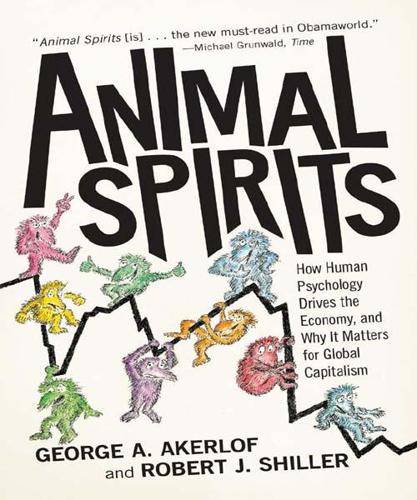
Animal Spirits: How Human Psychology Drives the Economy, and Why It Matters for Global Capitalism
by
George A. Akerlof
and
Robert J. Shiller
Published 1 Jan 2009
It is indicative how important it is to macroeconomics that just four years later, James Tobin, an arch foe of Milton Friedman, would declare in his own presidential address to the American Economic Association that “an economic theorist can, of course, commit no greater crime than to assume money illusion.”11 Tobin failed to mention that money illusion had been standard fare just four years earlier. It lay at the heart of the views on macroeconomics of some of the century’s leading economists, including Keynes, Paul Samuelson, Robert Solow, Irving Fisher, Franco Modigliani, and Tobin himself. Presumption We see Fisher’s and Keynes’ unadulterated money illusion as a remarkably naïve belief. It was in need of serious revision. But that does not mean that one should jump to the opposite extreme. It is not necessarily true that, on the contrary, there is no money illusion at all.
…
“Pitfalls of a Minimax Approach to Model Uncertainty.” American Economic Review 91(2):51–54. Smith, Adam. 1776. An Inquiry into the Nature and Causes of the Wealth of Nations. London: Ward, Lock, Bowden & Co. Smith, Edgar Lawrence. 1925. Common Stocks as Long-Term Investments. New York: Macmillan. Solow, Robert. 1979. “Another Possible Source of Wage Rigidity.” Journal of Macroeconomics 1(1):79–82. Sorkin, Andrew Ross. 2008. “JP Morgan Pays $2 a Share for Bear Stearns.” New York Times, March 17. Soros, George. 2008. The New Paradigm for Financial Markets: The Credit Crisis of 2008 and What It Means.
…
(Geisel, Theodor Seuss), 159, 196n9 Shafir, Eldar, 190n13 Shao Changzue, 126–27 Shapiro, Carl, 104–5, 188n12 Shea, Dennis F., 191n6 Shea, John, 191n9,11 Shefrin, Hersh, 120, 191n3, 9 Shiller, Robert J., 11, 35, 41, 55, 111, 116, 181n19, 182n1, 184n1,12,13, 185n21, 190n12, 191n9, 193n1,3,4,5,6,10, 195n1,7, 196n11 Shin, Hyun Song, 186n12, 187n6, 193n8,13 Shipler, David, 164, 197n17 Shirking on the job, 104, 105, 106 Shleifer, Andrei, 133, 193n6,7,14, 195n36 Silver, free coinage of, 60–61, 62, 64 Silver Purchase Act of 1890, 60–61 Simester, Duncan, 128, 192n24 Sims, Christopher A., 179n9, 180n9, 194n32 Sims, Eric R., 180n12 Singapore, 125, 126, 130 Singer Sewing Machine Company, 194n23 Skilling, Jeffrey, 33 Sloan, Alfred P., Jr., 71–72 Smith, Adam, xxiii, 2, 3, 5, 6, 125, 177n5,1 Smith, Edgar Lawrence, 66, 185n23 Smith, Vernon L., 189n15 Snake oil, 26–27, 28, 35, 37, 87, 146–47, 155, 175 Snower, Dennis, 189n17 Snow Shovel price vignette, 21 Socialism, xxii, 2 Social Security, 124–25, 129–30, 146 sociology, 23–25 Solow, Robert, 46, 188n2 Sorensen, Elaine, 197n15 Sorkin, Andrew Ross, 186n13 South Sea bubble, 13 Soviet Union, 26 spiritus animalis, 3, 178n3 sporting events, studies of outcomes, 179n3 staggered contracts, 5 Staiger, Douglas, 183n8 Stalin, Joseph, 26 Standard & Poor’s Composite Stock Price Index, 59 status, 24–25 Steeples, Douglas, 62, 184n8,11 Stein, Jeremy C., 182n21, 195n36 Sternberg, Robert J., 52, 184n4 Sticky wages, 48, 109, 110, 111, 183n14, 185n32 Stiglitz, Joseph E., 104–5, 188n12 Stock, James H., 183n8 stock market, xxi, 174; depression of the 1890s and, 59; margin credit of, 64; in the 1920s, 64, 66–67; price volatility in, 131–40, 145–46, 193n6; rate of return in, 117; real estate market and, 149, 152–53, 154; recession of 2001 and, 33, 35; stories and, 55 stock market crash of 1902, 11 stock market crash of 1929, 15, 66, 67, 68, 131, 145, 177n7 stock market crash of 2000, 169 Stoft, Steven, 188n12 stories, 5, 6, 51–56, 167, 170, 172, 174, 183–84n1–14; on central banks, 75–78; changes in, 173, 174–75; confidence and, 55–56; of corporate investments, 144, 145; depression of the 1890s and, 61; epidemics of, 56; of financial crisis of 2007–8, 88; financial prices and, 137, 138, 142, 146, 147; minorities and, 159–60, 162, 163, 164; new era, 55–56, 66; of our time, 171; overheated economy and, 66–67; patterns to, 52; political-economic, 53–54; real estate market and, 149, 151, 156; relevant to whole economies, 54; saving and, 119, 127–28; Tobin’s q as, 145; World War II and, 72 strikes, 138, 139, 140, 194n23 subprime mortgages, 73, 149; corruption and, 36–37, 38, 182n21; effect on housing prices, 155 Summers, Lawrence, 103, 188n9, 189n17, 191n11, 194n30,36, 195n37 Sunde, Uwe, 183n14 sunspot equilibria, 12, 179n2 supply and demand: for labor, 98, 99–100, 103, 104; open market operations and, 76 Swedish financial crisis, 93, 188n15 Switzerland, 109 Tabasco, Mexico, 53 TAF.
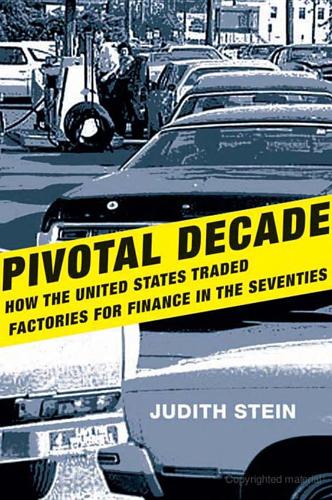
Pivotal Decade: How the United States Traded Factories for Finance in the Seventies
by
Judith Stein
Published 30 Apr 2010
Kahn reminded the president that the alliance had fought trucking and airline deregulation. Now the culprits were the auto and steel industries and their unions. Kahn preferred an Economic Revitalization Board composed of people like Archibald Cox, distinguished but without industrial experience. For his economist he named Robert Solow or Gardner Ackley, both Keynesians who were neoclassical when it came to the microeconomy.126 Ralph Nader opposed the Economic Revitalization Board for similar reasons. Nader’s principal animus was the corporation.127 Because he believed that corporations dominated government and corrupted labor, he also opposed tripartite modes of governing.
…
Oct. 6, 1979, transcript, “Meeting of the Federal Open Market Committee (FOMC),” Federal Reserve Open Market Secretariat, Washington, D.C., 6. 29. Ibid. 30. Newsweek, Oct. 15, 1979, 101. 31. Telephone conference call, FOMC, Sept. 5, 1979, 1–2. 32. Oct. 6, 1979, “Meeting of FOMC,” 17. 33. Ibid., 10. 34. Greider, Secrets of the Temple, 121. 35. Business Week, Nov. 12, 1979, 29. 36. Robert Solow, cited in New York Times, Dec. 30, 1979, SM3. 37. Nov. 20, 1979, “Meeting of the FOMC,” 19–20. 38. Ibid., 22. 39. Business Week, Oct. 29, 1979, 174. 40. New York Times, Oct. 5, 1979, A1. 41. New York Times, May 8, 1980, D1. 42. Schultze, “Memo for President,” Dec. 11, 1979, file Memos to President 12/79, box 54, CEA papers, Jimmy Carter Library and Museum, Atlanta, Ga. 43.
…
Kuttner, The Squandering of America, 200. 105. Elizabeth Drew, “Bush’s Weird Tax Cut,” New York Review of Books, 48 (Aug. 9, 2001). 106. Krugman, The Great Unraveling, 170. 107. New York Times, Aug. 29, 2005, A15. 108. New York Times, Oct. 5, 2008, 34. 109. Economist, Sept. 20–26, 2008, 19. 110. “Spare a Dime?” 4. 111. Robert Solow, “Getting it Wrong,” New Republic, Sept 10, 2008, 33. 112. Economist, Oct. 4–10, 2008, 11; New York Times, Oct. 3, 2008, A25. 113. Paul Krugman, “Stressing the Positive,” New York Times, May 8, 2009, A31. 114. http://www.realclearpolitics.com/articles/2009/03/responding_to_an_historic_econ.html. 115.
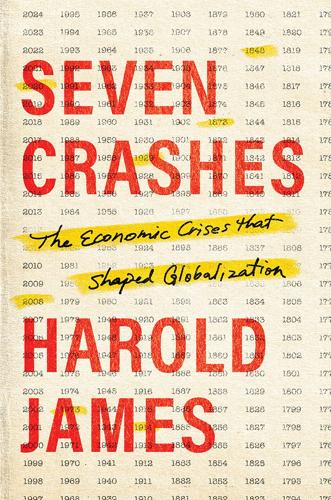
Seven Crashes: The Economic Crises That Shaped Globalization
by
Harold James
Published 15 Jan 2023
The key point of the new vision of the economy was that capital and labor can be substituted for each other in the standard form of the growth model, in which output is driven by a function that combines proportions of capital and labor with a coefficient expressing technology improvements. In the 1950s, Moses Abramovitz and Robert Solow elaborated growth models that would be corroborated by the work of John Kendrick: these analysts found a remarkable surge in productivity in the twentieth century, which they attributed to technology improvement.7 These growth models were then extended, especially by Paul Romer, to suggest ways in which technology was endogenous to the growth process, rather than an external deus ex machina that explained mankind’s transformation.
…
U.S. international leadership was waning as a result of the powerful economic forces he described as secular stagnation. What could be done to shore up the weary titan? Did the renewal of the United States not require attention to microeconomic incentives and policies? In the early stages of the 2007–2008 financial crisis, the Nobel Prize winner Robert Solow complained about the macro approach as expounded by Summers and the academic mainstream. As he put it, “In fact ‘modern macro’ has been notable for paying very little rigorous attention to data.”124 It is not surprising that there was a new counterrevolution. Summers thought in terms of problems that might be solved by using large aggregates, as in the important debate about how much fiscal stimulus was appropriate.
…
John Harwood, “Larry Summers Sends Inflation Warning to White House: Dominant Risk to Economy Is ‘Overheating,’” CNN, May 12, 2021, https://www.cnn.com/2021/05/12/politics/inflation-worries-larry-summers/index.html. 123. Alex Shephard, “Larry Summers Is Finally, Belatedly, Irrelevant,” New Republic, February 5, 2021. 124. Robert Solow, “The State of Macroeconomics,” Journal of Economic Perspectives 22, no. 1 (2008): 245. 125. See https://www.census.gov/programs-surveys/ces/data/analysis-visualization-tools/opportunity-atlas.html. 126. See https://www.brookings.edu/blog/brookings-now/2015/06/02/these-maps-from-raj-chetty-show-that-where-children-grow-up-has-a-major-impact-on-their-lifetime-earnings/. 127.
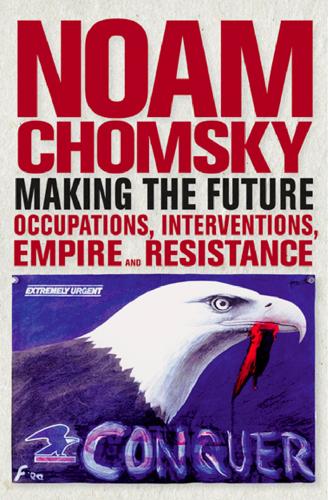
Making the Future: The Unipolar Imperial Moment
by
Noam Chomsky
Published 15 Mar 2010
Before the 2007 crash for which they were largely responsible, the new post–Golden Age financial institutions had gained startling economic power, more than tripling their share of corporate profits. After the crash, a number of economists began to inquire into their function in purely economic terms. Nobel laureate Robert Solow concludes that their general impact may be negative: “The successes probably add little or nothing to the efficiency of the real economy, while the disasters transfer wealth from taxpayers to financiers.” By shredding the remnants of political democracy, the financial institutions lay the basis for carrying the lethal process forward—as long as their victims are willing to suffer in silence.
…
Bush’s 2008 trip to, 81–86 oil reserves and exports of, 232 radical Islam and, 254 Saudi Gazette, 85–86 Scheffer, Jaap de Hoop, 118 Scheuer, Michael, 293–294 Schlesinger, Arthur M., Jr., 58–59 Schmidt, Helmut, 276 School of the Americas, 180 Schoultz, Lars, 147–148 Schwarzenegger, Arnold, 209 Scowcroft, Brent, 162 sectarian warfare. in Iraq, 60 Securities and Exchange Commission, 287 Senate Armed Services Committee Report on Detainee Treatment, 145 Senauer, Benjamin, 22, 23 Separation Wall, 83, 152, 244 September 11, 2001, 277, 291–295 settlement expansion, 42–43, 70, 152, 201–206, 241–245 Shamir, Yitzhak, 202 Shanghai Cooperation Organization, 142, 232–233 Shankar, Thom, 225 Shapira, Ya’akov Shimson, 243 Sharon, Ariel, 132 Shell, 87 Sigal, Leon V., 18 Simon, Steven, 91 Smith, Adam, 196, 236–237 SOFA (Status of Forces Agreement), 117 Solow, Robert, 289 Somalia, 45–49 South Africa, 248–249, 268 South America, 79, 231 South Korea, 225–226, 297–300 South Ossetia, 101 South Summit (Cuba 2000), 162 Spirit of Humanity, 158 Stack, Joe, 207–208 state capitalism, 107 Status of Forces Agreement (SOFA), 117 Stern, Fritz, 238 Stevens, John Paul, 190 Stiglitz, Joseph, 196 Stimson, Henry L., 183 Stolberg, Sheryl Gay, 171 Suleiman, Omar, 254 Summers, Lawrence, 114–115 Sunday Herald (Glasgow), 215 Supreme Court (U.
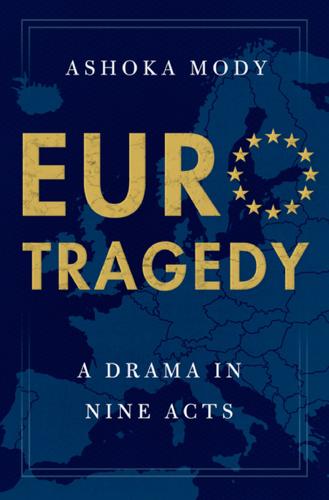
EuroTragedy: A Drama in Nine Acts
by
Ashoka Mody
Published 7 May 2018
Dow Jones News Service, September 17. 546 r e f e r e n c e s Boughton, James M. 2012. Tearing Down Walls: The International Monetary Fund 1990–1999. Washington, D.C.: International Monetary Fund. Boushey, Heather. 2017. “Equitable Growth in Conversation: Robert Solow.” Washington Center for Equitable Growth, July 20, http://equitablegrowth.org/ research-analysis/equitable-growth-in-conversation-robert-solow/. Bovenzi, John F. 2015. Inside the FDIC: Thirty Years of Bank Failures, Bailouts, and Regulatory Battles. Hoboken: Wiley. Bowley, Graham. 2004. “EU Warns on Deficit of Greece Commission Seeks New Eurostat Powers.” International Herald Tribune, December 23.
…
Nevertheless, the budget rule got locked in, periodically tweaked through administrative changes, but shielded by a protective stability ideology. The view was that even a bad rule is better than no rule. The ECB, set up to conduct the single monetary policy, reinforced the stability ideology through its commitment to price stability. Two Nobel Laureates in economics, Franco Modigliani and Robert Solow, warned that excessive commitment to price stability would restrain output growth and, hence, would raise the eurozone’s unemployment rate. Moreover, like the budget rule, price stability when pursued unthinkingly, can—as it did during the eurozone’s financial crisis—become a source of instability.
…
To emphasize his concern, Bean added, “Active national fiscal policies will be needed more than ever after monetary union, and imposing unnecessary constraints is a major error, especially in the absence of a Community- wide fiscal system” (Bean 1992, 48, 51). And in 1993, a galaxy of international economists— including Economics Nobel laureate Robert Solow, Columbia University economics professor and future Economics Nobel laureate Edmund Phelps, and Olivier Blanchard, economics professor at MIT and future chief economist of the IMF—warned against the proposed fiscal rule. “It would be untenable,” they wrote, “to expect governments faced with poor conditions to remain passive, or even to have to act in a way that is likely to deepen a domestic recession.”
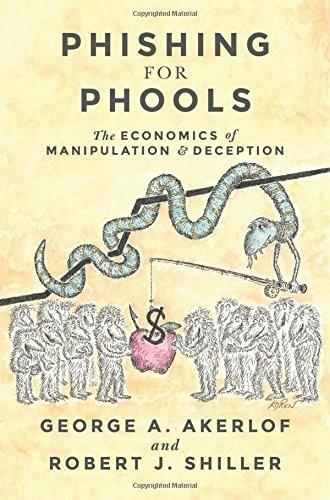
Phishing for Phools: The Economics of Manipulation and Deception
by
George A. Akerlof
,
Robert J. Shiller
and
Stanley B Resor Professor Of Economics Robert J Shiller
Published 21 Sep 2015
Over the course of the past century, one idea once a month by all the world’s adults would have yielded more than three trillion new ideas.2 The implications are enormous: over the course of a lifetime, in a typical developed country, output per capita will increase sixfold.3 Older retirees in the United States were born in a country poorer than present-day Mexico.4 This critical role of new ideas as the engine of economic growth had been chewed over for decades, but then it was definitively established in 1957 by a simple, clever calculation: a 32-year-old economist at MIT, Robert Solow, took a page out of Sherlock Holmes to get his answer. He eliminated the other leading suspect. Before the Solow calculation, economists did not know how to apportion economic growth between two causes. Increases in labor productivity (that is, increases in output per man-hour) could be due to new inventions (called “technical change”); or they could be due to increases in “capital” (e.g., machines, buildings, etc.).5 With the simple assumption that the earnings of capital represent its contributions to output, Solow was able to calculate the fraction of increases in productivity that was attributable to capital growth.
…
Little, 1888–1971: A Biographical Memoir by George D. Snell.” Washington, DC: National Academy of Sciences, 1971. Social Security Perspectives. “President #6: Richard M. Nixon (1969–1974).” May 8, 2011. http://socialsecurityperspectives.blogspot.com/2011/05/president-6-richard-m-nixon-1969-1974.html. Solow, Robert M. “Technical Change and the Aggregate Production Function.” Review of Economics and Statistics 39, no. 3 (August 1957): 312–20. Sorkin, Andrew Ross. Too Big to Fail: The Inside Story of How Wall Street and Washington Fought to Save the Financial System. New York: Viking, 2009. Stahre, Mandy, Jim Roeber, Dafna Kanny, Robert D.
…
See consumer spending; retailers; supermarkets shrouded attributes, 167–68, 169–70 Sidel, Robin, 201n31, 202n34 Siegel, Jeremy J., 222n11 Siegelman, Peter, 60–62, 198nn3–6 Silverman, Brian, 206–7n42 Simester, Duncan, 68, 70, 201n28 Sinclair, Upton, The Jungle, 84, 140, 207nn2–3 Singer, Tania, 194–95n3 Singh, Gurkirpal, 208n12 Skeel, David A., Jr., 225nn22–23 slot machines, viii–ix, x Small, Art, III, 72 Small, Art, Jr., 72–73, 74 Smith, Adam, 5, 6, 169, 185n16, 186n18 Smith, Gary, 126, 221n8 smoking. See tobacco Snower, Dennis J., 194–95n3 Snyder, James M., 77, 205nn21–22 Social Security, 152, 153–56 Solow, Robert M., 97, 212n6 Solow residual, 97–99 Sorkin, Andrew Ross, 189–90n1 Spiegel, Thomas, 128, 129, 222n18 Stahre, Mindy, 217–18n38 standards, quality, 137–38, 140 Stein, Benjamin, 222n13, 222n17 Stempel, Jonathan, 226n39 Stern, Mark Joseph, 216n26 Stevens, John Paul, 161 Stewart, James B., 222n13, 223n26, 229n26 Stigler, George J., 226nn44–45 Stock, James H., 219n2 stocks: crash of 1929, 134; equity premium, 127; informed vs. uninformed traders, 168; initial public offerings, 26–27; prices of, xiv, 168.
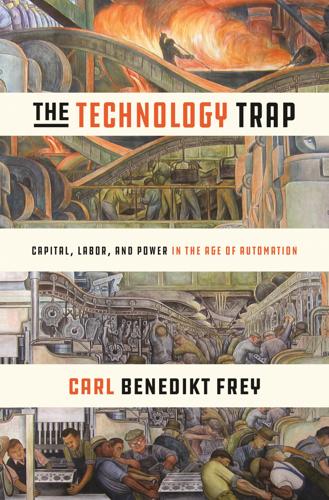
The Technology Trap: Capital, Labor, and Power in the Age of Automation
by
Carl Benedikt Frey
Published 17 Jun 2019
In hindsight, and in the light of the gains brought by technology, it is astounding to think that economists of the early nineteenth century like Thomas Malthus and David Ricardo did not believe that technology could improve the human lot. The technological virtuosity of the nineteenth and early twentieth centuries took some time to trickle down to the economics profession. But in the 1950s, Robert Solow, who would go on to win the Nobel Prize in Economics in 1987, found that virtually all economic advance over the twentieth century had been thanks to technology. And others documented that those gains had been widely shared. Simon Kuznets found that America had become more equal and advanced his theory of capitalist development in which inequality automatically decreases along the industrialization path.
…
* * * The machinery question, however, only faded temporarily. The first few introductions of electronic computers into the workplace sparked a panic about the threat of automation to jobs in the news media, and the upsurge in unemployment that came with the three post–Korean War recessions led people to connect the two. Looking back in 1965, Robert Solow noted: “Whenever there is both rapid technological change and high unemployment the two will inevitably be connected in people’s minds. So it is not surprising that technological unemployment was a live subject during the depression of the 1930s, nor that the debate has now revived.”18 As noted above, the technological unemployment debate actually predated the Great Depression.
…
It may be telling that unlike economists of the Industrial Revolution (like Thomas Malthus, David Ricardo, and Karl Marx) who were all fond of apocalyptic economic predictions, economists living in the aftermath of the Second Industrial Revolution were largely optimistic—perhaps overly so. In any event, the idea that industrialists grew rich on the misery of workers had evidently fallen out of fashion. In the 1950s, Robert Solow advanced a model of a balanced growth path, in which progress delivered equal benefits for every social group; Kaldor put forward his stylized facts of economic growth, showing that the labor share of income had remained roughly constant, at two-thirds of national income, despite rapid mechanization; and Simon Kuznets advanced his hugely optimistic theory of economic progress in which inequality automatically decreases, regardless of economic policy choices.54 Their optimism surely seemed warranted at the time.
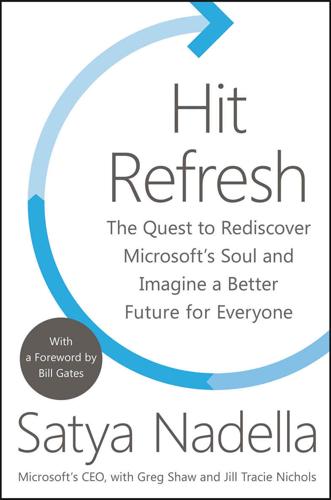
Hit Refresh: The Quest to Rediscover Microsoft's Soul and Imagine a Better Future for Everyone
by
Satya Nadella
,
Greg Shaw
and
Jill Tracie Nichols
Published 25 Sep 2017
In recent decades, the world has invested hundreds of billions of dollars in technology infrastructure—PCs, cell phones, tablets, printers, robots, smart devices of many kinds, and a vast networking system to link them all. The aim has been to increase productivity and efficiency. Yet what, exactly, do we have to show for it? Nobel Prize–winning economist Robert Solow once quipped, “You can see the computer age everywhere but in the productivity statistics.” However, from the mid-1990s to 2004, the PC Revolution did help to reignite once-stagnant productivity growth. But other than this too brief window, worldwide per capita GDP growth—a proxy for economic productivity—has been disappointing, just a little over 1 percent per year.
…
Boston Globe, January 12, 2016. Accessed December 9 2016. https://www.bostonglobe.com/news/politics/2016/01/12/guestsrdp/DR3KzNA90x3nxLYFOFs0nN/story.html. Obama, Barack. State of the Union Address. White House, January 12, 2016. Accessed December 9, 2016. https://obamawhitehouse.archives.gov/sotu. Solow, Robert M. “We’d Better Watch Out.” Review of The Myth of the Post-Industrial Economy, by Stephen S. Cohen and John Zysman. New York Times, July 12, 1987. Accessed December 9, 2016. http://www.standupeconomist.com/pdf/misc/solow-computer-productivity.pdf. Nadella, Satya, Ulrich Spiesshofer, and Andrew McAfee.
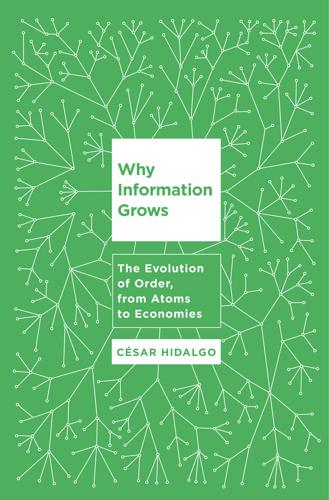
Why Information Grows: The Evolution of Order, From Atoms to Economies
by
Cesar Hidalgo
Published 1 Jun 2015
The earliest models equated economic output to the ratio between an economy’s capital and labor when the economy was in equilibrium. They also modeled economic growth as the tug-of-war between an economy’s savings rate (the capital that it keeps for later use) and capital depreciation (the wear and tear that erodes capital). Robert Solow advanced the prototypical model of economic growth in the 1950s—a timely development, as the data needed to evaluate such models were just becoming available. Simon Kuznets, the Russian-born economist who fathered GDP, had finished creating the system of national accounts a couple of decades earlier, helping generate the economic metric that dominated the twentieth century.4 Solow’s model, however, did not measure up well when it was compared with empirical data.
…
Apples, 49–50 characterization of economies and, 155–156 communication vs., 67–68 economic value of and context of, 63–64 geographic distribution of production of simpler and complex, 134–136 importance of source of information embodied in, 62–63 practical use of knowledge/knowhow and, 65–71 stimuli for production of, 77–78 See also Complex products; Objects; Solids Product space, 136–139, 143 Product ubiquity, economic complexity and, 156–157 Professional networks social networks and composition of, 123–124 social networks and formation of, 114–117 trust and, 119–121 Proteins, information embedded in, 34, 176 Putnam, Robert, 121, 122, 135, 179 Quantization of knowhow, 73–75 Quantization of knowledge and knowhow, 87–88 Quantization principle, economies and, 168 Quantum Corporation, 92 Quantum mechanics, xiii Raw materials, exploitation narrative and, 55, 58–59, 60 Real estate market, secondary to social network, 109–111 Reality, instantaneous nature of, 40 Ricardo, David, 148 River Rouge complex (Ford Motor Company), 87–88, 89, 105 RNA, embodiment of information in, 5 Roanoke colony, 170 Robotic limbs, 50–51, 61, 178 Rocket development, 143 Rolfe, John, 170 Romer, David, 148 Romer, Paul, 148 Route 128 (Boston), contrasted with Silicon Valley, 118–120, 124 Rubik’s cube, 21–22, 23 Ruiz, Israel, 73 Russia, 60 Salter, Arthur, 90 Saltpeter exports, 55, 58 Samsung, 92 Saxenian, AnnaLee, 118–119 Scale economies, 87–88 Schrödinger, Erwin, 33, 34, 176 Seagate, 92 Second law of thermodynamics, 27 Seed, information and knowhow contained in, 166–167 Shannon, Claude, 9 entropy and, 14–15, 17–18 theory of information, xiv, xv–xvii, 13–15, 17–18, 19–20 Shared social foci, formation of social networks and, 114 Shipping costs, cost of market interactions and, 95 Shoes, information in form of, 45 Silicon Valley contrasted with Route 128 (Boston), 118–120, 124 personbytes of knowledge and knowhow in, 142 Simoes, Alex, 52, 139 Simon, Herbert, xv Simpler products, production in most countries, 134–136 Singapore, economic complexity of, 157–159 Smith, Adam, 87, 146, 148 Social capital, 149–151, 152 measuring, 149–150, 153 theory of, 111 trust and access to, 121 Social context, of information growth, 43 Social group isolation, loss of knowhow and, 169–171 Social institutions familial vs. high-trust, 115, 120–123 within-country variation in, 118–120 Social learning, 80–81 Social networks adaptability of firms and networks of firms and, 118–120, 124 difficulty in forming, 83 economic relevance of, 111–124 firm interactions within, 93 formation of, 114–117 formation of professional networks and, 123–124 information exchange and, 44, 45, 46 knowledge and knowhow trapped in, 78–79 labor market and, 112–114, 121, 124 market forces and, 111 real estate market secondary to, 109–111 social capital and, 150–151 trust and, 119–121, 123 Social sciences, xviii information and, xiv–xv Society familial vs. high-trust, 115, 120–123 products that augment human capacity and complexity of, 70–71 Sokolovska, Anna, 3 Solids, information embedded in, 33–35, 176, 181. See also Objects; Products Solow, Robert, 146, 147, 148, 149 Specific and recurrent transactions, 94 Stadium example, ordered states and, 16–21 Standards coevolution of markets with, 100 cost of market interactions and, 95, 100 Static steady state, 28–29 Statistical system, irreversibility of time in, 37–40 Steady state of non-equilibrium system, 29–31 origin of information and, 28–30 Stock, diversity vs., 152–154, 162 Study of Disadvantaged Youth, 113 Tacit knowledge, knowhow and, 78, 80 Tasmanians, 169–170 Teams, physical embodiment of knowledge/knowhow in, 73–74 Technological transfer, 143 Technologies, social networks and, 44 Tesla, Nikola, 59, 60, 62, 69 TFP.
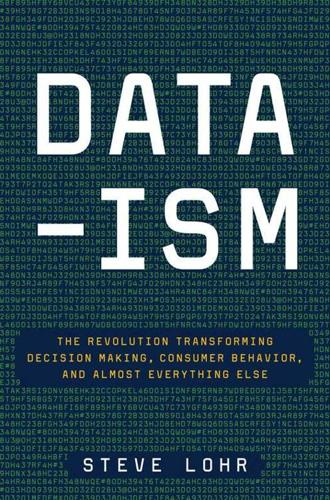
Data-Ism: The Revolution Transforming Decision Making, Consumer Behavior, and Almost Everything Else
by
Steve Lohr
Published 10 Mar 2015
Productivity gains—more wealth created per hour of labor—are the fuel of rising living standards, and a by-product of the efficiency that technology is supposed to generate. The conundrum raised the question of whether all of the investment in, and enthusiasm for, digital technology was justified. Robert Solow, a Nobel Prize–winning economist, tartly summed up the quandary in the late 1980s, when he wrote, “You can see the computer age everywhere but in the productivity statistics.” Solow’s critique became known as the productivity paradox. Brynjolfsson, a technology optimist, has two answers for the skeptics.
…
P., 5–6 Snyder, Steven, 165–67, 170 social networks, research using human behavior and, 86–94 retail use, 153–62 spread of information and, 73–74 Twitter posts and, 197–202 see also privacy concerns Social Security numbers, data used to predict person’s, 187–88 software, origin of term, 96 Solow, Robert, 72 Speakeasy programming language, 160 Spee (Harvard club), 28–30 Spohrer, Jim, 25 Stanford University, 211–12 Starbucks, 157 Stockholm, rush-hour pricing in, 47 storytelling, computer algorithms and, 120–21, 149, 165–66, 205, 214 structural racism, in big data racial profiling, 194–95 Structure of Scientific Revolutions, The (Kuhn), 175 Sweeney, Latanya, 193–95 System S, at IBM, 40 Tarbell, Ida, 208 Taylor, Frederick Winslow, 207–8 Tecco, Halle, 16, 25, 28, 168–69 Tetlock, Philip, 67–68 thermostats, learning by, 143–45, 147–53 Thinking, Fast and Slow (Kahneman), 66–67 toggling, 84 Truth in Lending Act (1968), 185 T-shaped people, 25 Tukey, John, 96–97 Turing, Alan, 178–79 Tversky, Amos, 66 Twitter, 85 posts studied for personal information, 197–202 “Two Cultures, The” (Snow), 5–6 “universal machine” (Turing’s theoretical computer), 179 universities, data science and, 15–16, 97–98, 211–12 Unlocking the Value of Personal Data: From Collection to Usage (World Economic Forum), 203 “Unreasonable Effectiveness of Data, The” (Norvig), 116 use-only restrictions, on data, 203 Uttamchandani, Menka, 77–78, 80, 212 VALS (Values, Attitudes, and Lifestyles), 155 Van Alstyne, Marshall, 74 Vance, Ashlee, 85 Vargas, Veronica, 159–60 Varma, Anil, 136–37 Veritas, 91 vineyards, data used for precision agriculture in, 123–33, 212 Vivero, David, 29 Vladeck, David, 203, 204 von Neumann, John, 54 Von Neumann architecture, 54 Walker, Donald, 2, 63, 212 Walmart, 104, 154 Watson, Thomas Jr., 49 Watson technology, of IBM, 45, 66–67, 120, 205 as cloud service, 9, 54 Jeopardy and, 7, 40, 111, 114 medical diagnoses and, 69–70, 109 Watts, Duncan J., 86 weather analysis, with big data, 129–32 Weitzner, Daniel, 184 “Why ask Why?”
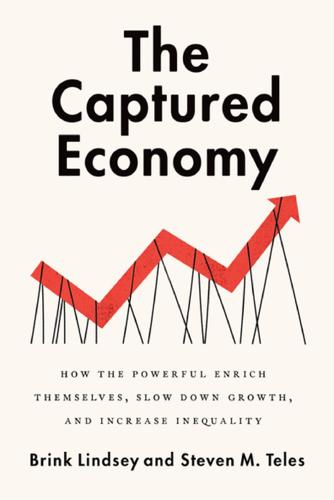
The Captured Economy: How the Powerful Enrich Themselves, Slow Down Growth, and Increase Inequality
by
Brink Lindsey
Published 12 Oct 2017
To understand why, we need to understand exactly how rent-creating policies undermine growth and exaggerate inequality, and how those harmful consequences interact with deeper factors now shaping the pace and distribution of economic growth. III STIFLING GROWTH Modern growth theory, beginning with the pioneering work of Robert Solow and continuing with more recent “endogenous growth” models, makes clear that the ultimate source of economic growth is innovation: the development of new products and production methods that increase the level of output per given unit of capital and labor inputs.15 Of course, the mere introduction of new products and methods is only the first step; innovation’s full effect comes as the new products and methods diffuse throughout the economy.
…
See also regulation affluence and, 140–47 agenda-setting and, 133–36, 204n9 concentration of industry and, 20–21 defined, 16–18 dynamism and, 21–22 economic growth and, 113–23 entry barriers and, 21–22 image and, 140–47 increase in, 22–23, 185n11 intangible assets and, 19–20 intellectual property and, 64 legal profession and, 106–8 morality of, 17 politics of ( See politics) reform and, 159–64 RegData index of regulations and, 23, 186n13, 186n14 regressive regulation and, 123–26 rent-proofing and, 153–80 scarcity and, 16–17 secrecy and, 147–49 welfare state and, 150–52, 207n35 zoning as, 113 Republican party, 3, 143, 176, 178 research and development, 20, 23, 26, 70, 72, 80 reserve requirements, 50 ridesharing services, 96–97, 145–46 Rise and Decline of Nations, The (Olson), 8 risk-taking, 36–37 Robinson, James, 8 Robinson, Joan, 74 Rognlie, Matt, 123 Rogoff, Kenneth, 35 Saez, Emmanuel, 1 Sanders, Bernie, 4 savings-and-loan industry, 39–40, 44, 53, 150 scale, economies of, 21, 82, 114 Scalia, Antonin, 100–101 scarcity artificial, 17, 19, 32–33, 120, 184n1 of innovation, 16 rent/rent-seeking and, 16–17 Schleicher, David, 168 Schmitt, Mark, 135 Schumer, Chuck, 145 Schumpeter, Joseph, 21 secrecy, 147–49 securitization, 32, 38–45, 57, 150 self-liquidating profits, 16 “shadow banking”, 38, 41, 44, 47, 151 Shoag, Daniel, 116 Shockley, William, 115 sideways redistribution, 29 skilled workforce, 4, 6, 15, 27, 29–31. See also digital era/information technology; occupational licensing Smith, Adam, 17 Smith, Vernon, 46 Snyder, Jeffrey, 208n13 social mobility. See upward mobility software industry, 65, 67, 71, 74, 79–83, 86, 125, 144. See also digital era/information technology Solow, Robert, 24 Somin, Ilya, 135 Sonny Bono Copyright Extension Act of 1998, 66 special interests. See lobbying/special interests startup rates, 22. See also entry barriers state action. See regulation; regulatory capture status quo bias, 100 Stiglitz, Joseph, 12, 61 stock market, 31, 38, 46–48 Stop Online Piracy Act, 176 student loans, 38 subprime mortgages, 42–47 subsidies, 17 of countervailing power, 154–59, 208n13, 208n14 debt financing and, 36–63 failure to limit, 55–58 financial sector and, 32, 55–58 mortgage lending and, 36–45, 47, 57–59, 63 “Tobin’s Q” and, 20 Sunstein, Cass, 137, 165 Supreme Court, 76, 100, 166 judicial review and, 170–75 Tabarrok, Alex, 186n14 tariffs, 29, 31, 95, 149 taxation, 7 high income, 11 post-New Deal, 30–31 rising costs of home ownership and, 113 technology.

The Rational Optimist: How Prosperity Evolves
by
Matt Ridley
Published 17 May 2010
From time to time its practitioners had tried to escape into theorems of increasing returns – Mill in the 1840s, Allyn Young in the 1920s, Joseph Schumpeter in the 1940s, Robert Solow in the 1950s – but not until Romer’s ‘new growth theory’ in the 1990s was economics fully back in the real world: a world where perpetual innovation brings brief bursts of profit through temporary monopoly to whoever can commandeer demand for new products or services, and long bursts of growth to everybody else who eventually gets to share the spilled-over idea. Robert Solow had concluded that innovation accounted for growth that could not be explained by an increase in labour, land or capital, but he saw innovation as an external force, a slice of luck that some economies had more of than others – his was Mill’s theory with calculus.
…
Moreover, for all their eventual sins, entrepreneurial corporations can do enormous good while they are young and growing. Consider the case of discount retailing. The burst of increasing productivity that countries like America and Britain rather unexpectedly experienced in the 1990s at first puzzled many economists. They wanted to credit computers, but as the economist Robert Solow had quipped in 1987, ‘you can see the computer everywhere but in the productivity statistics’, and those of us who experienced how easy it was to waste time using a computer in those days agreed. A study by McKinsey concluded that the 1990s surge in the United States was caused by (drum roll of excitement) logistical changes in business (groan of disappointment), especially in the retail business and especially in just one firm – Wal-Mart.
…
Kung people 44, 135, 136–7 Kuznets curve 106 Kwakiutl people 92 Lagos 322 Lagrange Point 346 lakes, acidification of 305–6 Lamalera people 87 Lancashire 214, 217, 232, 263 Landes, David 223, 406 Lang, Tim 392 language: and exchange 58; genes for 55; Indo-European 129; and isolationism 73; Neanderthals 4, 55; numbers of languages 73; as unique human development 4 Laos 209 lapis lazuli 162, 164 Lascaux caves, France 6 lasers 272 Lassa fever 307 Laurion, Attica 171 Law, John 29, 259 Lawson, Nigel, Baron 331 Lay, Ken 29, 385 Layard, Richard 25 lead 167, 174, 177, 213 Leadbetter, Charles 290 Leahy, Michael 92 leather 70, 122, 167, 176 Lebanon 167 LeBlanc, Steven 137 LEDs (light-emitting diodes) 21–2 lentils 129 Leonardo da Vinci 196, 251 Levy, Stephen 355 Liang Ying (farm worker) 220 liberalism 108, 109–110, 290 Liberia 14, 316 libertarianism 106 Libya 171 lice 68 lichen 75 life expectancy: in Africa 14, 316, 422; in Britain 13, 15, 284; improvements in 12, 14, 15, 17–18, 205, 284, 287, 298, 316; in United States 298; world averages 47 Life (magazine) 304 light, artificial 13, 16, 17, 20–22, 37, 233, 234, 240, 245, 272, 368 light-emitting diodes (LEDs) 21–2 Limits to Growth (report) 303–4, 420 Lindsey, Brink 102, 109 linen 216, 218 lions 43, 87 literacy 106, 201, 290, 353, 396 Liverpool 62, 283 local sourcing (of goods) 35, 41–2, 149, 392; see also food miles Locke, John 96 Lodygin, Alexander 272 Lombardy 178, 196 Lomborg, Björn 280 London 12, 116, 186, 199, 218, 222, 282; as financial centre 259 longitude, measurement of 261 Longshan culture 397 Los Angeles 17, 142 Lothal, Indus valley 162, 164 Louis XI, King of France 184 Louis XIV, King of France 36, 37, 38, 184, 259 Lowell, Francis Cabot 263 Lübeck 180 Lucca 178, 179 Lunar Society 256 Luther, Martin 102 Luxembourg 331 Lyon 184 Macao 183 MacArthur, General Douglas 141 Macaulay, Thomas Babington, 1st Baron 11, 285–7, 359 McCloskey, Deirdre 109, 366–7 Mace, Ruth 73 McEwan, Ian 47 Machiguenga people 87 MacKay, David 342 McKendrick, Neil 224 McKibben, Bill 293 Macmillan, Harold, 1st Earl of Stockton 16 McNamara, Robert 203 mad-cow disease (vCJD) 280, 308 Madagascar 70, 299 Maddison, Angus 180 Maddox, John 207 Madoff, Bernard 28–9 Maghribis 178, 180 magnesium 213 maize 126, 146–7, 153, 155, 156, 163; for biofuel 240, 241 malaria 135, 157, 275, 299, 310, 318, 319, 331, 336, 353, 428, 429 Malawi 40–41, 132, 316, 318 Malawi, Lake 54 Malay Peninsula 66 Malaysia 35, 89, 242, 332 Mali 316, 326 Malinowski, Bronislaw 134 malnutrition 154, 156, 337 Maltese Falcon, The (film) 86 Malthus, Robert 139, 140, 146, 191, 249, 303 Malthusianism 141, 193, 196, 200, 202, 401 mammoths 68, 69, 71, 73, 302 Manchester 214, 218, 283 Mandell, Lewis 254 manganese 150, 213 mangoes 156, 327, 392 Manhattan 83 manure 147, 150, 198, 200, 282 Mao Zedong 16, 187, 262, 296, 311 Marchetti, Cesare 345–6 Marcuse, Herbert 291 Marie-Antoinette, Queen of France 199 markets (in capital and assets) 9, 258–60 markets (in goods and services): and collective betterment 9–10, 36–9, 103–110, 115–16, 281; disdain for 102–3, 104, 291–2, 358; etiquette and ritual of 133–4; and generosity 86–7; global interdependence 42–3; market failure 182, 250; ‘perfect markets’ 249–50; and population control 210–211; and preindustrial economies 133–4; and trust 98–100, 103; and virtue 100–104, 105; see also bartering; exchange; trade Marne, River 234 Martu aborigines 62 Marx, Karl 102, 104, 107–8, 291, 406 Marxism 101, 217–18, 319, 356 Maskelyne, Nevil 221 Maudslay, Henry 221 Mauritius 187, 316 Mauryan empire 172–3, 201, 357 Maxwell, James Clerk 412 measles 14, 135, 310 meat eating 51, 60, 62, 68–9, 126, 147, 156, 241, 376 Mecca 177 Mediterranean Sea: prehistoric settlements 56, 68–9, 159; trade 89, 164, 167–8, 169, 171, 176, 178 meerkats 87 Mehrgarh, Baluchistan 162 Mehta, Suketa 189 Meissen 185 memes 5 Menes, Pharaoh of Egypt 161 mercury 183, 213, 237 Mersey, River 62 Merzbach valley, Germany 138 Mesopotamia 38, 115, 158–61, 163, 177, 193, 251, 357; see also Assyrian empire; Iraq metal prices, reductions in 213 Metaxas, Ioannis 186 methane 140, 329, 345 Mexico: agriculture 14, 123, 126, 142, 387; emigration to United States 117; hurricanes 335; life expectancy 15; nature conservation 324; swine flu 309 Mexico City 190 Meyer, Warren 281 Mezherich, Ukraine 71 mice 55, 125 Michelangelo 115 Microsoft (corporation) 24, 260, 268, 273 migrations: early human 66–70, 82; rural to urban 158, 188–9, 210, 219–20, 226–7, 231, 406; see also emigration Milan 178, 184 Miletus 170–71 milk 22, 55, 97, 135 Mill, John Stuart 34, 103–4, 108, 249, 274, 276, 279 Millennium Development goals 316 Miller, Geoffrey 44, 274 millet 126 Mills, Mark 244 Ming empire 117, 181–4, 260, 311 Minoan civilisation 166 Mississippi Company 29 Mittal, Lakshmi 268 mobile phones 37, 252, 257, 261, 265, 267, 297, 326–7 Mohamed (prophet) 176 Mohawk Indians 138–9 Mohenjo-Daro, Indus valley 161–2 Mojave Desert 69 Mokyr, Joel 197, 252, 257, 411, 412 monarchies 118, 162, 172, 222 monasteries 176, 194, 215, 252 Monbiot, George 291, 311, 426 money: development of 71, 132, 392; ‘trust inscribed’ 85 Mongolia 230 Mongols 161, 181, 182 monkeys 3, 57, 59, 88; capuchins 96–7, 375 monopolies 107, 111, 166, 172, 182 monsoon 174 Montesquieu, Charles, Baron de 103 moon landing 268–9, 275 Moore, Gordon 221, 405 Moore, Michael 291 Morgan, J.P. 100 Mormonism 205 Morocco 53, 209 Morse, Samuel 272 mortgages 25, 29, 30, 323; sub-prime 296 Moses 138 mosquito nets 318 ‘most favoured nation’ principle 186 Moyo, Dambisa 318 Mozambique 132, 316 Mozart, Wolfgang Amadeus 267 Mugabe, Robert 262 Mumbai 189, 190 murder 14, 20, 85, 88, 106, 118, 201 Murrays’ Mills, Manchester 214 music 70, 115, 266–7, 326 Myceneans 166 Nairobi 322 Namibia 209, 324 Napoleon I 184 NASA 269 Nashville 326 Nassarius shells 53, 56, 65 National Food Service 268 National Health Service 111, 261 nationalisation (of industry) 166, 182 nationalism 357 native Americans 62, 92–3, 138–9 Natufians 125 natural selection 5–6, 27, 49–50, 350 nature conservation 324, 339; see also wilderness land, expansion of Neanderthals 3, 4, 53, 55, 64, 65, 68, 71, 79, 373, 378 Nebuchadnezzar 169 needles 43, 70 Nehru, Jawaharlal 187 Nelson, Richard 5 Nepal 15, 209 Netscape (corporation) 259 New Deal 109 New Guinea: agriculture 123, 126, 387; languages 73; malaria 336; prehistoric 66, 123, 126; tribes 87, 92, 138 New York 12, 16, 83, 169, 190 New York Times 23, 295, 305 New Zealand 17, 35, 42, 70 Newcomen, Thomas 244, 256 newspapers 270, 295; licensing copyrights 267 Newsweek (magazine) 329 Newton, Sir Isaac 116, 256 nickel 34, 213 Niger 208–9, 210, 324 Nigeria 15, 31, 99, 117, 210, 236, 316 Nike (corporation) 115, 188 Nile, River 161, 164, 167, 171 nitrogen fertlisers 140, 146, 147, 149–50, 155, 305 nitrous oxide 155 Nobel Peace Prize 143, 280 ‘noble savage’ 43–4, 135–8 Norberg, Johann 187 Nordau, Max 288 Nordhaus, William 331 Norte Chico civilisation 162–3 North, Douglass 324, 397 North Carolina 219–20 North Korea 15, 116–17, 187, 333 North Sea 180, 185 North Sentinel islanders 67 Northern Rock (bank) 9 Northumberland 407 Norton, Seth 211 Norway 97–8, 332, 344 Norwich 225 nostalgia 12–13, 44, 135, 189, 284–5, 292 Novgorod 180 Noyce, Robert 221, 405 nuclear accidents 283, 293–4, 308, 345, 421 nuclear power 37, 236, 238, 239, 245, 246, 343, 344, 345 nuclear war, threat of 280, 290, 299–300, 333 Obama, Barack 203 obesity 8, 156, 296, 337 obsidian 53, 92, 127 occupational safety 106–7 ocean acidification 280, 340–41 ochre 52, 53, 54, 92 octopi 3 Oersted, Hans Christian 272 Oetzi (mummified ‘iceman’) 122–3, 132–3, 137 Ofek, Haim 131 Ohalo II (archaeological site) 124 oil: and ‘curse of resources’ 31, 320; drilling and refining 242, 343; and generation of electricity 239; manufacture of plastics and synthetics 237, 240; pollution 293–4, 385; prices 23, 238; supplies 149, 237–8, 280, 281, 282, 296, 302–3 old age, quality of life in 18 olive oil 167, 169, 171 Olson, Ken 282 Omidyar, Pierre 99 onchoceriasis 310 open-source software 99, 272–3, 356 Orang Asli people 66 orang-utans 60, 239, 339 organic farming 147, 149–52, 393 Orinoco tar shales, Venezuela 238 Orma people 87 ornament, personal 43, 52, 53, 54, 70, 71, 73 O’Rourke, P.J. 157 Orwell, George 253, 290, 354 Ostia 174 otters 297, 299 Otto I, Holy Roman emperor 178 Ottoman empire 161 Oued Djebanna, Algeria 53 oxen 130, 136, 195, 197, 214–15 oxytocin (hormone) 94–5, 97–8 ozone layer 280, 296 Paarlberg, Robert 154 Pacific islanders 134 Pacific Ocean 184 Paddock, William and Paul 301 Padgett, John 103 Page, Larry 114 Pagel, Mark 73 Pakistan 142–3, 204, 300 palm oil 57–8, 239, 240, 242, 339 Pan Am (airline) 24 paper 282, 304 Papin, Denis 256 papyrus 171, 175 Paraguay 61 Pareto, Vilfredo 249 Paris 215, 358; electric lighting 233; restaurants 264 parrots 3 Parsons, Sir Charles 234 Parthian empire 161 Pasadena 17 Pataliputra 173 patents 223, 263, 264–6, 269, 271, 413–14 patriarchy 136 Paul, St 102 PayPal (e-commerce business) 262 peacocks 174 peanuts 126 peat 215–16 Peel, Sir Robert 185 Pemberton, John 263 pencils 38 penicillin 258 Pennington, Hugh 308 pensions 29, 40, 106 Periplus of the Erythrean Sea, The 174 Persia 89, 161, 171, 177 Persian Gulf 66, 164, 340, 429 Peru 97–8, 126, 162–3, 320, 387; silver 31, 132, 183–4 pessimism: and belief in turning points in history 287–9, 301, 311; natural pessimism of human nature 294–5; in nineteenth century 283–8; in twentieth century 281, 282, 288–91, 292–4, 296–308, 328–9; in twenty-first century 8–9, 17, 28, 281–2, 291–2, 308–311, 314–15; ubiquity of 280–85, 291–2, 294–7, 341, 352 pesticides 151–2, 154, 155, 336; DDT 297–8, 299; natural 298–9 Peto, Richard 298 Petty, Sir William 185, 199, 254, 256 pharmaceutical industry 260, 266 philanthropy 92, 105, 106, 295, 318–19, 356 Philip II, King of Spain 30–31 Philip II of Macedon 171 Philippines 61–2, 89, 234 Philistines 166, 170, 396 Phillips, Adam 103, 292 Phoenicians 166–70, 177 photography 114, 283, 386 physiocrats 42 pi, calculation of 173 pig farming 135, 145, 148, 197 Pinnacle Point, South Africa 52, 83 Pisa 115, 178 plagues 135, 176, 195–6, 197; forecasts of 280, 284, 307–310; see also Black Death plastics 237, 240, 270 Plate, River 186 platinum 213 Plato 292 Plautus 44 ploughing 129–30, 136, 145, 150, 195, 197, 198, 215 pneumonia 13, 353 Polanyi, Karl 164–5 polar bears 338–9 polio 261, 275, 310 political fragmentation 170–73, 180–81, 184, 185 pollution: effects on wildlife 17, 297, 299, 339; and industrialisation 218; pessimism about 293–4, 304–6; reduction in 17, 106, 148, 279, 293–4, 297, 299 polygamy 136 Pomeranz, Kenneth 201–2 Ponzi, Charles 29 Ponzi schemes 28–9 population control policies 202–4, 210–211 population growth: and food supply 139, 141, 143–4, 146–7, 192, 206, 208–9; global population totals 3, 12, 14, 191, 206, 332; and industrialisation 201–2; and innovation 252; pessimism about 190, 193, 202–3, 281, 290, 293, 300–302, 314; population explosions 8, 139, 141, 202, 206, 281; and specialisation 192–3, 351; see also birth rates; demographic transition; infant mortality; life expectancy porcelain 181, 183, 184–5, 225, 251 Porritt, Jonathan 314 Portugal 75, 183, 184, 317, 331 Post-it notes 261 Postrel, Virginia 290–91 potatoes 199 Potrykus, Ingo 154 pottery 77, 158, 159, 163, 168, 177, 225, 251 Pound, Ezra 289 poverty: and charitable giving 106; current levels 12, 15, 16–17, 41, 316, 353–4; and industrialisation 217–20; pessimism about 280, 290, 314–15; reduction in 12, 15, 16–17, 290; and self-sufficiency 42, 132, 200, 202, 226–7; solutions to 8, 187–8, 316–17, 322, 326–8, 353–4 Prebisch, Raul 187 preservatives (in food) 145 Presley, Elvis 110 Priestley, Joseph 256 printing: on paper 181, 251, 252, 253, 272; on textiles 225, 232 prisoner’s dilemma game 96 property rights 130, 223, 226, 320, 321, 323–5 protectionism 186–7, 226 Ptolemy III 171 Pusu-Ken (Assyrian merchant) 165–6 putting out system 226, 227, 230 pygmy people 54, 67 Pythagoras 171 Quarterly Review 284 quasars 275 Quesnay, François 42 racial segregation 108 racism 104, 415 radioactivity 293–4, 345 radios 264–5, 271 railways 252; and agriculture 139, 140–41; opposition to 283–4; speed of 283, 286; travel costs 23 rainforests 144, 149, 150, 240, 243, 250–51, 338 Rajan, Raghuram 317 Rajasthan 162, 164 Ramsay, Gordon 392 rape seed 240 Ratnagar, Shereen 162 ravens 69 Rawls, John 96 Read, Leonard 38 recession, economic 10, 28, 113, 311 reciprocity 57–9, 87, 95, 133 Red Sea 66, 82, 127, 170, 174, 177 Rees, Martin 294 Reformation 253 refrigeration 139 regress, technological 78–84, 125, 181–2, 197–200, 351, 380 Reiter, Paul 336, 428 religion 4, 104, 106, 170, 357, 358, 396; and population control 205, 207–8, 211; see also Buddhism; Christianity; Islam Rembrandt 116 Renaissance 196 research and development budgets, corporate 260, 262, 269 Research in Motion (company) 265 respiratory disease 18, 307, 310 restaurants 17, 37, 61, 254, 264 Rhine, River 265–6 rhinoceroses 2, 43, 51, 68, 73 Rhodes, Cecil 322 Ricardo, David 75, 169, 187, 193, 196, 249, 274 rice 32, 126, 143, 146–7, 153, 154, 156, 198 Rifkin, Jeremy 306 Riis, Jacob 16 Rio de Janeiro, UN conference (1992) 290 risk aversion 294–5 Rivers, W.H.R. 81 Rivoli, Pietra 220, 228 ‘robber-barons’ 23–4, 100, 265–6 Rockefeller, John D. 23, 281 Rocky Mountains 238 Rogers, Alex 340 Roman empire 161, 166, 172, 173–5, 184, 214, 215, 259–60, 357 Rome 158, 175 Romer, Paul 269, 276–7, 328, 354 Roosevelt, Franklin D. 109 Roosevelt, Theodore 288 Rosling, Hans 368 Rothschild, Nathan 89 Rousseau, Jean-Jacques 43, 96, 104, 137 Royal Institution 221 rubber 220 rule of law 116–18, 325 Rumford, Benjamin Thompson, Count 221 rural to urban migration 158, 188–9, 210, 219–20, 226–7, 231, 406 Ruskin, John 104 Russia, post-Soviet 14; oil and gas production 31, 37; population decline 205 Russia, prehistoric 71, 73 Russia, Tsarist 216, 229, 324 Rwanda 14, 316 rye 124, 125, 199, 224, 286 Sachs, Jeffrey 208 Saddam Hussein 161 Sahel region 123, 334 Sahlins, Marshall 133, 135 Sahul (landmass) 66, 67 Salisbury, Wiltshire 194 Salk, Jonas 38, 261 salmon 297 Salmon, Cecil 142 saltpetre 140 Sanger, Frederick 412 Sanskrit 129 São Paulo 190, 315 Sargon of Akkad 164 SARS virus 307, 310 satellites 252, 253 satnav (satellite navigation systems) 268 Saudi Arabia 238 Saunders, Peter 102 Schumpeter, Joseph 113–14, 227, 260, 276, 302 science, and innovation 255–8, 412 Scientific American 280 Scotland 103, 199–200, 227, 263, 315 scrub jays 87 scurvy 14, 258 sea level, changes in 128, 314, 333–4 Seabright, Paul 93, 138 seals (for denoting property) 130 search engines 245, 256, 267 Second World War 289 segregation, racial 108 Seine, River 215 self-sufficiency 8, 33–5, 39, 82, 90, 133, 192, 193, 351; and poverty 41–2, 132, 200, 202, 226–7 selfishness 86, 87, 93–4, 96, 102, 103, 104, 106, 292 Sematech (non-profit consortium) 267–8 Sentinelese people 67 serendipity 257, 346 serfs 181–2, 222 serotonin 156, 294 sexism 104, 136 sexual division of labour 61–5, 136, 376 sexual reproduction 2, 6, 7, 45, 56, 271; of ideas 6–7, 270–72 Sforza, house of 184 Shady, Ruth 162 Shakespeare, William 2; The Merchant of Venice 101, 102 Shang dynasty 166 Shapiro, Carl 265 sheep 97, 176, 194, 197 Shell (corporation) 111 shellfish 52, 53, 62, 64, 79, 92, 93, 127, 163, 167 Shennan, Stephen 83, 133 Shermer, Michael 101, 106, 118 ship-building 185, 229; see also boat-building shipping, container 113, 253, 386 Shirky, Clay 356 Shiva, Vandana 156 Siberia 145 Sicily 171, 173, 178 Sidon 167, 170 Siemens, William 234 Sierra Leone 14, 316 Silesia 222 silicon chips 245, 263, 267–8 Silicon Valley 221–2, 224, 257, 258, 259, 268 silk 37, 46, 172, 175, 178, 179, 184, 187, 225 Silk Road 182 silver 31, 132, 164, 165, 167, 168, 169, 171, 177, 183–4, 213 Silver, Lee 122–3 Simon, Julian 83, 280, 303 Singapore 31, 160, 187 Skhul, Israel 53 slash-and-burn farming 87, 130 slave trade 167, 170, 177, 229, 319, 380; abolition 214, 221 slavery 34, 214–15, 216, 407; ancient Greece 171; hunter-gatherer societies 45, 92; Mesopotamia 160; Roman empire 174, 176, 214; United States 216, 228–9, 415; see also anti-slavery sleeping sickness 310, 319 Slovakia 136 smallpox 13, 14, 135, 310; vaccine 221 smelting 131–2, 160, 230 smiling 2, 94 Smith, Adam 8, 80, 96, 101, 104, 199, 249, 272, 350; Das Adam Smith Problem 93–4; Theory of Moral Sentiments 93; The Wealth of Nations vii, 37–8, 39, 56, 57, 93, 123, 236, 283 Smith, Vernon 9, 90, 192 smoke, indoor 13, 338, 342, 353, 429 smoking 297, 298 Smoot-Hawley Tariff Act 186 soap 176, 215 social networking websites 262, 268, 356 socialism 106, 115, 357, 406 software, computer 99, 257, 272–3, 304, 356 solar energy 216, 243, 244 solar power 234–5, 238, 239, 245–6, 343, 344–5, 408 solar wind 346 solid-state electronics 257 Solomon, Robert 94 Solow, Robert 276 Somalia 14, 316, 337, 353 songbirds 55 Sony (corporation) 261 sorghum 126, 156 South Africa: agriculture 154; economy 316, 322; life expectancy 316; pre-historic 52, 53, 54, 83 South Korea 15, 31, 116–17, 187, 212, 322 South Sea Company 29 Southey, Robert 284–5 Soviet Union 16, 107, 109, 289, 299, 318, 324 soybeans 147, 148, 155, 156, 242 space travel 268–9, 275, 282 Spain: agriculture 129; climate 334; Franco regime 186, 289; Peruvian silver 30–31, 183–4; tariffs 222 spears 6, 43, 48, 50, 52, 70, 80, 81, 91 specialisation: by sex 61–5, 136, 376; and division of labour 7, 33, 38, 46, 61–5, 175; and exchange 7, 10, 33, 35, 37–8, 46, 56, 58, 75, 90, 132–3, 350–52, 355, 358–9; and innovation 56, 71–2, 73–4, 76–7, 119, 251; and population growth 192–3, 351; and rule of law 116, 117–18 speech 2, 55; see also language Spencer, Herbert 108 Spengler, Oswald 289 sperm counts 280, 293, 329 spice trade 167, 175, 176, 177, 179, 185 Spinoza, Baruch de 116 Sputnik 282 squashes (vegetables) 126, 163 Sri Lanka 35, 38, 66, 205, 208, 299 Stalin, Joseph 16, 262 stamp seals 130 Stangler, Dane 294 steam engines 126, 214, 221, 228, 231–2, 244, 256, 258, 270, 271, 413–14 steamships 139, 253, 283 Stein, Gil 159 Stein, Herb 281 stem-cell research 358 Stephenson, George 256, 412 Steptoe, Patrick 306 sterilisation, coerced 203–4 Stern (magazine) 304 Stern, Nicholas, Baron 330–31, 332, 425 Stiner, Mary 64, 69 storms 314, 333, 335 Strabo 174 string 70 strokes (cerebral accidents) 18 Strong, Maurice 311 Subramanian, Arvind 317 subsidies: farming 188, 328; renewable energy supplies 344 subsistence farming 87, 138, 175–6, 189, 192, 199–200 substantivism 164–5 suburbia 108, 110, 190 Sudan 316 suffrage, universal 107 sugar 179, 202, 215 sugar beet 243 sugar cane 240, 241, 242 Sun Microsystems (corporation) 259 Sunda (landmass) 66 sunflowers 126 Sungir, Russia 71, 73 superconductivity, high-temperature 257 Superior, Lake 131 supermarkets 36, 112, 148, 268, 292, 297 surfboards 273 Sussex 285 Swan, Sir Joseph 234, 272 Swaziland 14 Sweden 17, 184, 229, 305, 340, 344 Swift, Jonathan 121, 240 Switzerland 264 swords, Japanese 198–9 Sybaris 170–71 symbiosis 75, 351 synergy 6, 101 Syria 124, 130, 164, 174 Szilard, Leo 412 Tahiti 169 Taiwan 31, 187, 219, 322 Talheim, Germany 138 Tanzania 316, 325, 327–8; Hadza people 61, 63, 87 Tapscott, Don 262 Tarde, Gabriel 5 tariffs 185–7, 188, 222–3 taro (vegetable plant) 126 Tartessians 169 Tasman, Abel 80 Tasmania 78–81, 83–4 Tattersall, Ian 73 Taverne, Dick, Baron 103 taxation: carbon taxes 346; and charitable giving 319; and consumption 27; and declining birth rates 211; early development of 160; and housing 25; and innovation 255; and intergenerational transfer 30; Mauryan empire 172; Roman empire 184; United States 25 Taylor, Barbara 103 tea 181, 182, 183, 202, 327, 392 telegraph 252–3, 257, 272, 412 telephones 252, 261; charges 22–3, 253; mobile 37, 252, 257, 261, 265, 267, 297, 326–7 television 38, 234, 252, 268 Telford, Thomas 221 Tennessee Valley Authority 326 termites 75–6 terrorism 8, 28, 296, 358 Tesco (retail corporation) 112 Tesla, Nikola 234 text messaging 292, 356 Thailand 320, 322 Thales of Miletus 171 Thames, River 17 thermodynamics 3, 244, 256 Thiel, Peter 262 Thiele, Bob 349 Thoreau, Henry David 33, 190 3M (corporation) 261, 263 threshing 124, 125, 130, 153, 198; machines 139, 283 thumbs, opposable 4, 51–2 Thwaites, Thomas 34–5 Tiberius, Roman emperor 174, 259 tidal and wave power 246, 343, 344 Tierra del Fuego 45, 62, 81–2, 91–2, 137 tigers 146, 240 timber 167, 216, 229; trade 158, 159, 180, 202 time saving 7, 22–4, 34–5, 123 Timurid empire 161 tin 132, 165, 167, 168, 213, 223, 303 ‘tipping points’ 287–9, 290, 291, 293, 301–2, 311, 329 Tiwi people 81 Tokyo 190, 198 Tol, Richard 331 Tooby, John 57 tool making: early Homo sapiens 53, 70, 71; machine tools 211, 221; Mesopotamian 159, 160; Neanderthals 55, 71, 378; Palaeolithic hominids 2, 4, 7, 48–51; technological regress 80 Torres Strait islanders 63–4, 81 tortoises 64, 68, 69, 376 totalitarianism 104, 109, 181–2, 290 toucans 146 Toulouse 222 Townes, Charles 272 ‘toy trade’ 223 Toynbee, Arnold 102–3 tractors 140, 153, 242 trade: and agriculture 123, 126, 127–33, 159, 163–4; early human development of 70–75, 89–93, 133–4, 159–60, 165; female-centred 88–9; and industrialisation 224–6; and innovation 168, 171; and property rights 324–5; and trust 98–100, 103; and urbanisation 158–61, 163–4, 167; see also bartering; exchange; markets trade unions and guilds 113, 115, 223, 226 trademarks 264 traffic congestion 296 tragedy of the commons 203, 324 Trajan, Roman Emperor 161 transistors 271 transport costs 22, 23, 24, 37, 229, 230, 253, 297, 408 transport speeds 22, 252, 253, 270, 283–4, 286, 287, 296 trebuchets 275 Tressell, Robert 288 Trevithick, Richard 221, 256 Trippe, Juan 24 Trobriand islands 58 trust: between strangers 88–9, 93, 94–8, 104; and trade 98–100, 103, 104; within families 87–8, 89, 91 Tswana people 321, 322 tungsten 213 Turchin, Peter 182 Turkey 69, 130, 137 Turnbull, William (farm worker) 219 Turner, Adair, Baron 411 turning points in history, belief in 287–9, 290, 291, 293, 301–2, 311, 329 Tuscany 178 Tyneside 231 typhoid 14, 157, 310 typhus 14, 299, 310 Tyre 167, 168–9, 170, 328 Ubaid period 158–9, 160 Uganda 154, 187, 316 Ukraine 71, 129 Ulrich, Bernd 304 Ultimatum Game 86–7 unemployment 8, 28, 114, 186, 289, 296 United Nations (UN) 15, 40, 205, 206, 290, 402, 429 United States: affluence 12, 16–17, 113, 117; agriculture 139, 140–41, 142, 219–20; biofuel production 240, 241, 242; birth rates 211, 212; civil rights movement 108, 109; copyright and patent systems 265, 266; credit crunch (2008) 9, 28–9; energy use 239, 245; GDP, per capita 23, 31; Great Depression (1930s) 31, 109, 192; happiness 26–7; immigration 108, 199–200, 202, 259; income equality 18–19; industrialisation 219; life expectancy 298; New Deal 109; oil supplies 237–8; pollution levels 17, 279, 304–5; poverty 16–17, 315, 326; productivity 112–13, 117; property rights 323; rural to urban migration 219; slavery 216, 228–9, 415; tax system 25, 111, 241; trade 186, 201, 228 Upper Palaeolithic Revolution 73, 83, 235 urbanisation: and development of agriculture 128, 158–9, 163–4; global urban population totals 158, 189, 190; and population growth 209–210; and trade 158–61, 163–4, 167, 189–90; see also rural to urban migration Uruguay 186 Uruk, Mesopotamia 159–61, 216 vaccines 17, 287, 310; polio 261, 275; smallpox 221 Vandals 175 Vanderbilt, Cornelius 17, 23, 24 vCJD (mad-cow disease) 280, 308 Veblen, Thorstein 102 Veenhoven, Ruut 28 vegetarianism 83, 126, 147, 376 Venezuela 31, 61, 238 Venice 115, 178–9 venture capitalists 223, 258, 259 Veron, Charlie 339–40 Victoria, Lake 250 Victoria, Queen 322 Vienna exhibition (1873) 233–4 Vietnam 15, 183, 188 Vikings 176 violence: decline in 14, 106, 201; homicide 14, 20, 85, 88, 106, 118, 201; in pre-industrial societies 44–5, 136, 137–9; random 104 Visby, Gotland 180 vitamin A 353 vitamin C 258 vitamin D 129 Vivaldi, Antonio 115 Vladimir, Russia 71 Vogel, Orville 142 Vogelherd, Germany 70 voles 97 Voltaire 96, 103, 104, 256 Wagner, Charles 288 Wal-Mart (retail corporation) 21, 112–14, 263 Wales 132 Wall Street (film) 101 Walton, Sam 112–13, 263 Wambugu, Florence 154 war: in Africa 316; in hunter-gatherer societies 44–5; threat of nuclear war 280, 290, 299–300; twentieth-century world wars 289, 309; unilateral declarations of 104 water: contaminated 338, 353, 429; pricing of 148; supplies 147, 280, 281, 324, 334–5; see also droughts; irrigation water snakes 17 watermills 176, 194, 198, 215, 216–17, 234 Watson, Thomas 282 Watt, James 221, 244, 256, 271, 411, 413–14 wave and tidal power 246, 343, 344 weather forecasting 3, 4, 335 weather-related death rates 335–6 Wedgwood, Josiah 105, 114, 225, 256 Wedgwood, Sarah 105 weed control 145, 152 Weiss, George David 349 Weitzman, Martin 332–3 Welch, Jack 261 welfare benefits 16, 106 Wellington, Arthur Wellesley, 1st Duke of 89 Wells, H.G. 65, 313, 352, 354 West Germany 289–90 West Indies 202, 216, 310 Western Union (company) 261 Westinghouse, George 234 whales 6, 281, 302 whaling 87, 185, 281 wheat 42, 71, 124, 125, 129, 139, 140, 146–7, 149, 153, 156, 158, 161, 167, 300–301; new varieties 141–3 Wheeler, Sir Mortimer 162 wheels, invention of 176, 274 Whitehead, Alfred North 255 Wikipedia (online encyclopedia) 99, 115, 273, 356 Wilberforce, William 105, 214 Wilder, Thornton 359 wilderness land, expansion of 144, 147, 148, 239, 337–8, 347, 359 wildlife conservation 324, 329 William III, King 223 Williams, Anthony 262 Williams, Joseph 254 Williams, Rowan, Archbishop of Canterbury 102 Wilson, Bart 90, 324 Wilson, E.O. 243, 293 Wiltshire 194 wind power 239, 246, 343–4, 346, 408 wolves 87, 137 women’s liberation 108–9 wool 37, 149, 158, 167, 178, 179, 194, 224 working conditions, improvements in 106–7, 114, 115, 188, 219–20, 227, 285 World Bank 117, 203, 317 World Health Organisation 336–7, 421 World Wide Web 273, 356 World3 (computer model) 302–3 Wrangham, Richard 59, 60 Wright brothers 261, 264 Wright, Robert 101, 175 Wrigley, Tony 231 Y2K computer bug 280, 290, 341 Yahgan Indians 62 Yahoo (corporation) 268 Yangtze river 181, 199, 230 Yeats, W.B. 289 yellow fever 310 Yellow river 161, 167 Yemen 207, 209 Yir Yoront aborigines 90–91 Yong-Le, Chinese emperor 183, 184, 185 Yorkshire 285 Young, Allyn 276 young people, pessimism about 292 Young, Thomas 221 Younger Dryas (climatic period) 125 Yucatan 335 Zak, Paul 94–5, 97 Zambia 28, 154, 316, 317, 318, 331 zero, invention of 173, 251 zero-sum thinking 101 Zimbabwe 14, 28, 117, 302, 316 zinc 213, 303 Zuckerberg, Mark 262 Acknowledgements It is one of the central arguments of this book that the special feature of human intelligence is that it is collective, not individual – thanks to the invention of exchange and specialisation.
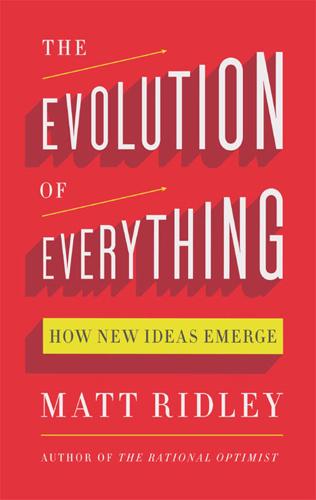
The Evolution of Everything: How New Ideas Emerge
by
Matt Ridley
The ecologist Daniel Botkin has complained that while ecologists agree that nature changes, when asked to design a policy, they nearly always come up with a ‘balance-of-nature policy’ that assumes an equilibrium. Call it the dynamic revolution in both economics and ecology. Innovationism Since Schumpeter, economists have taken up the challenge of explaining this innovation thing that has been happening to us and driving up living standards. Robert Solow in the 1950s was able to tease out just how much it was contributing by counting the contribution of capital and labour, and deducing that the rest (87.5 per cent) of the change in living standards must be due to technological change. It is technological change that is the chief source of increasing returns: of the fact that economic growth for the world as a whole shows no sign of reaching a plateau.
…
It has been an article of faith for decades in both of their professions that science would not get funded if government did not do it, and economic growth would not happen if science did not get funded by the taxpayer. This received wisdom has been handed down for more than half a century. It was the economist Robert Solow who demonstrated in 1957 that innovation in technology was the source of most economic growth – at least in societies that were not expanding their territory or growing their populations. It was his economist colleagues Richard Nelson and Kenneth Arrow who explained in 1959 and 1962 respectively that government funding of science was necessary, because it is cheaper to copy others than to do original research.
…
(with Paul Paddock) 207 Page, Larry 188 Pagel, Mark 80, 81–2 Pakistan 32, 206 Paley, William 38–9, 41–2, 51 Panama 286 Paris 102, 121, 254 Park, Walter 139 Parris, Matthew 303 Parys Mine Company, Anglesey 278 Pascal, Blaise 273 Paul, Senator Rand 241 Paul, Ron 114, 285, 292, 295 Paul, St (Saul of Tarsus) 8, 258, 264 Pauling, Linus 121 Pax Romana 239 Peace High School, Hyderabad (India) 181 Peel, Robert 246, 283–4 Peer-to-Peer Foundation 308 Peninsular War 280 People’s Printing Press 288 personality: and the blank slate 156–7, 158–9; and genes 159, 160–2; and homicide 169–71; innateness of behaviour 157–8; intelligence from within 165–7; non-genetic differences 162–5; and parenting 159–60, 161–2; and sexual attraction 172–3; and sexuality 167–9 Peterloo massacre (1819) 245 Pfister, Christian 276 Philippe, duc d’Orléans 286 Philippines 190 Philips, Emo 140 Philostratus 258 Phoenicia 101 Pinker, Steven 28, 30, 31–3, 172–3; The Better Angels of Our Nature 28–9 Pinnacle Technologies 136 Pitt-Rivers, Augustus 127 Pixar 124 Planned Parenthood Foundation 204 Plath, Robert 126 Plato 7, 11 Plomin, Robert 165, 167 Poincaré, Henri 18, 121 Polanyi, Karl 133 Polanyi, Michael 253 politics 314–16 Poor Law (1834) 195 Pope, Alexander 15 Popper, Karl 253; ‘Conjectures and Refutations’ 269 Population: American eugenics 200–3; control and sterilisation 205–8; and eugenics 197–9; impact of Green Revolution 208–10; Irish application of Malthusian doctrines 195–7; Malthusian theory 193, 194–5; and one-child policy 210–14; post-war eugenics 203–5 Population Crisis Committee 206 Portugal, Portuguese 134 Pottinger, Sir Harry 233 ‘Primer for Development’ (UN, 1951) 232 Prince, Thomas 242 Pritchett, Lant 179–80; The Rebirth of Education 176 Procter & Gamble 130 Proudhon, Pierre-Joseph 194–5 Prussia 176 Psychological Review 159 Putin, Vladimir 305 ‘The Puzzle of Monogamous Marriage’ (Henrich, Boyd & Richerson) 89 Pythagoras 85 Pythagorism 259 Qian XingZhong 213 Quesnay, François 98 Raines, Franklin 292 Ramsay, John 25 RAND Corporation 206, 300 Ravenholt, Reimert 206 Ray Smith, Alvy 124 Reagan, Ronald 254, 290 Red Sea 82 Reed, Leonard 43 Reformation 216, 220 religion: and climate change/global warming 271–6; and cult of cereology (crop circles) 264–6; existence of God 14–15; heretics and heresies 141–2; as human impulse 256–8; predictability of gods 259–60; and the prophet 260–3; temptations of superstition 266–8; variety of beliefs 257–8; vital delusions 268–71 Renaissance 220 Ricardo, David 104–5, 106, 246 Richardson, Samuel 88 Richerson, Pete 78, 89 Ridley, Matt, The Rational Optimist: How Prosperity Evolves 110–11, 126–7 Rio de Janeiro 92 Roberts, Russ 4 Robinson, James 97–8 Rockefeller Foundation 229, 230–1 Rodriguez, Joã 47–8 Rodrik, Dani 228 Rome 257, 259, 260 Romer, Paul 109 Roosevelt, Franklin Delano 251 Roosevelt, Theodore 197 Rothbard, Murray 243 Rousseau, Jean-Jacques 165, 216 Rowling, J.K. 122 Royal Bank 281 Royal Mint 278, 279 Royal Navy 297 Royal United Services Institution 198 Rudin, Ernst 202 Rufer, Chris 226 Runciman, Garry, Very Different, But Much the Same 94 Rusk, Dean 206–7 Russell, Lord John 195 Russia 119, 204, 227–8, 250, 303 Russian Revolution 318 Sadow, Bernard 126 Safaricom 296 St Louis (ship) 202–3 St Maaz School, Hyderabad (India) 181 Salk Institute, California 67 San Marco, Venice 53 Sandia National Laboratory 136 Sanger, Margaret 201, 204 Santa Fe Institute 93, 126 Santayana, George 10 Sapienza, Carmen 67 Satoshi Nakamoto 307–8, 309–10, 312 Schiller, Friedrich 248 Schmidt, Albrecht 222 Schumpeter, Joseph 106, 128, 251; Capitalism, Socialism and Democracy 106–7; Theory of Economic Development 106 science: as driver of innovation 133–7; as private good 137–9; pseudo-science 269 Science (journal) 70 Scientology 263 Scopes, John 49 Scotland 17, 280–2, 286 Scott, Sir Peter 211 Scott, Sir Walter (‘Malachi Malagrowther’) 283 Second International Congress of Eugenics 200 Second World War 105, 138, 203, 231, 252, 254, 318 Self-Management Institute 226 Selgin, George 297; Good Money 279, 280 Shade, John 188 Shakespeare, William 15, 131, 216, 224 Shanker, Albert 180 Shaw, George Bernard 197 Shaw, Marilyn 155–6 Shelley, Mary, Frankenstein 16 Shelley, Percy 16 Shockley, William 119 Shogun Japanese 130 Sierra Club 204 Silk Road 311–12 Silvester, David 274 Simon, Julian 209 Singapore 190 Sistine Chapel, Rome 256 Skarbek, David, The Social Order of the Underworld 237–8 Skinner, B.F. 156, 267–8 Skirving, William 244 skyhooks 7, 13, 14, 18, 65, 67, 71, 150, 267 Slumdog Millionaire (film, 2008) 185 Smith, Adam 3, 20, 21, 22–7, 28, 33, 110, 112, 117, 234, 243, 244, 246, 249; The Theory of Moral Sentiments 23–4, 27, 28, 37–8, 98; The Wealth of Nations 24, 38, 98–100, 103–4, 137 Smith, John Maynard 53 Smith, Joseph 263, 264, 266 Smithism 110 Snowden, Edward 303 SOLE (self-organised learning environment) 186 Solow, Robert 108, 137 Somalia 32 Song, Chinese dynasty 101 Song Jian 210–11, 212–13 South America 247 South Korea 125, 190, 229 South Sea Bubble (1720) 285, 294 South Sudan 32 Soviet-Harvard illusion 3 Soviet Union 114, 122 Spain 101, 247 Sparkes, Matthew 313 Sparta 101 Spencer, Herbert 216–17, 249, 253 Spenser, Edmund 15 Spinoza, Baruch 20, 141–2, 148, 268; Ethics 142; l’Esprit des lois 142–3 Sputnik 138 Stalin, Joseph 250, 252, 253 Stalling, A.E. 10 Stanford University 184, 185 Stealth bomber 130 Steiner, George, Nostalgia for the Absolute 266 Steiner, Rudolf 271 Steinsberger, Nick 136 Stephenson, George 119 Stewart, Dugald 38, 244 Stiglitz, Joseph 292 Stockman, David 288, 289–90; The Great Deformation 294 stoicism 259 Stop Online Piracy Act (US, 2011) 304 Strawson, Galen 140 Stuart, Charles Edward ‘The Young Pretender’ 282 Stuart, James Edward ‘The Old Pretender’ 281 Sudan 32 Summers, Larry 110 Sunnis 262 Suomi, Stephen 161 Sveikauskas, Leo 139 Swan, Joseph 119 Sweden 101, 284 Switzerland 32, 190, 247, 254 Sybaris 93 Syria 32 Szabo, Nick 307, 310; ‘Shelling Out: The Origins of Money’ 307 Tabarrok, Alex 132; Launching the Innovation Renaissance 132 Taiwan 190 Tajikistan 305 Taleb, Nassim 3, 92, 107, 135, 285, 312 Tamerlane the Great 87 Taoism 259, 260 Taylor, Winslow 250 Taylorism 250, 251 Tea Act (UK, 1773) 282n Tea Party 246 technology: biological similarities 126–31; boat analogy 128; computers 123–5, 126; copying 132–3; electric light 1–2; and fracking 136; inexorable progress 122–6, 130–1; innovation as emergent phenomenon 139; and the internet 299–316; light bulbs 118–19, 120; many-to-many 300; mass-communication 200; open innovation 130; patents/copyright laws 131–2; and printing 220; and science 133–9; simultaneous discovery 120–2; skunk works 130; software 131 TED (Technology, Entertainment, Design) lecture 177 Thatcher, Margaret 217 Third International Congress of Eugenics 201–2, 204 Third World 231–2 Thrun, Sebastian 185 Time (magazine) 241 The Times 308 Togo 94 Tokyo 92 Tolstoy, Leo 217 Tooby, John 43 Tooley, James 181–4 Toy Story (film, 1995) 124 Trevelyan, Charles 195 Tuchman, Barbara, A Distant Mirror 29 Tucker, William 90; Marriage and Civilization 89 Tullock, Gordon 35 Turner, Ted 213 Twister (messaging system) 313 Twitter 310, 313 U-2 reconnaissance plane 130 Uber 109 UK Meteorological Office 275 UN Codex Alimentarius 254 UN Family Planning Agency 213 UN Framework Convention on Climate Change 254–5 UN General Assembly 305 UNESCO 205 Union Bank of Scotland 281 United Nations 131, 213, 232, 305 United States 34, 122, 125, 138, 139, 176, 200–2, 232, 235–8, 245, 247, 250, 254, 284–5, 286, 302 United States Supreme Court 50 universe: anthropic principle 18–20; designed and planned 7–10; deterministic view 17–18; Lucretian heresy 10–12; Newton’s nudge 12–13; swerve 14–15 University of Czernowitz 106 University of Houston 71 University of Pennsylvania 133 UNIX 302 Urbain Le Verrier 120–1 US Bureau of Land Management 240 US Department of Education 240 US Department of Homeland Security 240, 241 US Federal Reserve 285, 286, 288, 293, 297, 309 US Financial Crisis Inquiry Commission 294 US Internal Revenue Service (IRS) 240 US National Oceanographic and Atmospheric Administration 240 US Office of Management and Budget 290 Utah 89 Uzbekistan 305 Vancouver 92 Vanuatu 81 Vardanes, King 258 Veblen, Thorstein 249 Verdi, Giuseppe: Aida 248; Rigoletto 248 Veronica (search engine) 120 Versailles Treaty (1919) 318 Victoria, Queen 89 Virgil (Publius Vergilius Maro) 10, 23 vitalism 270–1 Vodafone 296 Vogt, William 205, 209; Road to Survival 204 Voltaire, François-Marie Arouet 14, 15, 20, 22, 25, 41, 143, 243, 268; Candide 15 Volvo 101 Wagner, Andreas 47 Wall Street Journal 125, 132 Wallace, Alfred Russell 20, 54–5, 196 Wallison, Peter 294 Walras, Léon 106 Waltham, David, Lucky Planet 19 Walwyn, Thomas 242 Wang Mang, Emperor 267 Wang Zhen 212 Wannsee conference 198 Wapinski, Norm 136 Washington, George 220, 222, 240 Washington Post 241 Watson, James 121, 145 Webb, Beatrice 197 Webb, Richard 5, 319 Webb, Sidney 197 Webcrawler 120 Wedgwood family 38 Wedgwood, Josiah 199 Weismann, August 55 Wells, H.G. 197, 251 West, Edwin 178; Education and the State 177 West, Geoffrey 93 West Indies 134, 286 Whitney, Eli 128 Whittle, Frank 119 Whole Foods 227 Wikipedia 188, 304–5 Wilby, Peter 315 Wilhelm II, Kaiser 198, 247 Wilkins, Maurice 121 Wilkinson, John 278–9 Willeys 278–9, 280 Williams, Thomas 278 Williamson, Kevin 33; The End is Near and it’s Going to be Awesome 238–9 Wilson, Catherine 12 Wilson, Margo 171 Wolf, Alison, Does Education Matter?
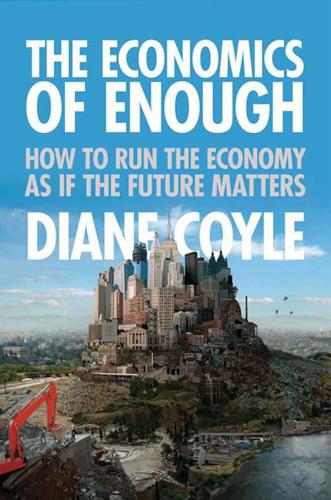
The Economics of Enough: How to Run the Economy as if the Future Matters
by
Diane Coyle
Published 21 Feb 2011
He says of this definition of sustainability: “It doesn’t, for example, demand that development be optimal or just. But how is a generation to judge whether it is leaving behind an adequate productive base for its successor?”25 So he introduces the dimension of social welfare and the practical question of how sustainability is to be judged. The economist Robert Solow has also argued for a more capacious definition of sustainability, leaving for the next generation “whatever it takes to achieve a standard of living at least as good as our own and to look after the next generation similarly.”26 The focus on living standards is more generous than the mere fulfillment of needs, and the formulation passes on the responsibility for sustainability in all successive generations as well, as it is recursive.
…
The Ultimate Resource. Princeton: Princeton University Press. Smith, Tom W. 2008. “Trends in Confidence in Institutions, 1973–2006.” Paper No. SC54. Chicago: National Opinion Research Center. Smith, Vernon L. 1982. “Microeconomic Systems as an Experimental Science.” American Economic Review 72:5, pp. 923–55. Solow, Robert M. 1992. “An Almost Practical Step toward Sustainability.” London: RFF Press. Sowell, Thomas. 2008. Applied Economics: Thinking Beyond Stage One. New York: Basic Books. ———. 2007. Basic Economics: A Common Sense Guide to the Economy Cambridge, MA: Perseus Books. Spilimbergo, Antonio, Steven Symansky, Olivier Blanchard, and Carlo Cottarelli. 2009.
…
See distribution Inconvenient Truth, An (Gore), 60 Index of Sustainable Economic Welfare (ISEW), 36 India, 212; emerging middle class of, 125; fairness and, 122–26, 133; inequality and, 125–26; nature and, 63, 65, 81; posterity and, 108; purchasing power parity (PPP) and, 306n19; Satyam and, 146; trust and, 146, 149, 163, 172; wage penalties and, 133; World Bank influence and, 163 Industrial Revolution, 27, 149, 290, 297 inequality, 4–5, 11, 17, 84, 306n19, 308n34; Bush and, 127–28; consequences for growth, 135–36; decline in trust and, 139–44; dramatic increase in, 126–27, 131; extraction ratio for, 124; fairness and, 114–16, 122–43; fractal character of, 134; Gini coefficient and, 126; globalization and, 122–24, 127, 131, 155; happiness and, 25, 36, 42, 44, 53; high salaries and, 130, 143–44, 193, 223, 277–78, 286, 296; historical perspective on, 126–27; institutions and, 116, 127–31, 141; measurement of, 126; policy recommendations for, 267, 276, 295–97; poverty and, 43, 55–56, 100, 125, 128, 138, 142, 168–69, 261, 267; reduction of, 276–77; Republican administrations and, 127–28; social corrosiveness of, 139–44; structural causes of, 131–35; superstar effect and, 134; taxes and, 115–16, 123, 127–28, 131, 135–36; trends in, 125–30; unequal countries and, 124–30; United Kingdom and, 125–30; United States and, 122, 125–31, 135, 276; values and, 223–24, 234–36; well-being and, 137–43; within/between countries, 123–24 inflation, 37, 43, 61, 89, 102–5, 110–11, 189, 281, 305n17 information and communication technology (ICT), 6–7, 15, 17; data explosion and, 205, 291; decreased cost of, 254; fairness and, 133; happiness and, 24–25; institutional impacts of, 252–53; structural effects of, 194–98; trust and, 156–60, 165–67, 174 innovation, 6–7, 12; consumer electronics and, 36–37; fairness and, 121, 134; growth and, 271–73, 281, 290–92; happiness and, 37; institutions and, 244, 258, 263, 290–91; measurement and, 183, 196, 201–8, 273–74; musicians and, 195; nature and, 69–70, 81; policy recommendations for, 290–91; posterity and, 102; statistics and, 201–7; trust and, 157; values and, 210, 216, 220, 236 In Praise of Slowness, 27 institutions, 18; anomie and, 48, 51; balance and, 12–17; blindness of to financial crises, 87–88; broad framework for, 249–52; capitalism and, 240; consumption and, 254, 263; decentralization and, 246; democracy and, 242–43, 251–52, 262; downsizing and, 175, 246, 255; economies of scale and, 253–58; efficiency and, 245–46, 254–55, 261; extinction crisis and, 288; face-to-face contact and, 7, 147, 165–68; failures of, 240–44, 257, 262–63, 267, 289–90; fall of communism and, 226, 239–40, 252; freedom and, 244, 262; globalization and, 244; governance and, 242, 247, 255–58, 261–62; government and, 240–63; growth and, 258, 261, 263; health care and, 247, 252–53; high salaries and, 130, 143–44, 193, 223, 277–78, 286, 296; impact of new technologies and, 252–54; importance of, 261–63; inequality and, 116, 127–31, 141; innovation and, 244, 258, 263, 290–91; legitimacy and, 8, 16, 50, 66, 68–69, 162–63, 213, 226, 269, 274, 292, 296–97; managerialism and, 259; morals and, 254; nature and, 66–69, 82–84; New Public Management and, 245–47; outsourcing and, 159, 161, 175, 219, 287; policy recommendations for, 269, 284–91; politics and, 239–48, 251, 256–63; pollution and, 15, 35, 228; productivity and, 244–47, 257, 263; public choice theory and, 242–43; public deliberation and, 258–60; reform and, 245–48, 256, 285, 288–91, 296–97; responsibility to posterity and, 296; shareholders and, 145, 248, 257–58, 277; statistics and, 245; technology and, 244–46, 251–54, 257–63 (see also technology); values and, 240–42, 246–47, 258–60 intangible assets: measurement and, 199–201, 204–6; satellite accounts and, 38, 81, 204–6, 271; social capital and, 149–52, 157, 161, 199–201 InterAcademy Council, 66–67 interbank market, 1–2 Intergovernmental Panel on Climate Change (IPCC), 59, 66–69, 82, 297 International Monetary Fund (IMF), 90, 101–3, 111, 162–64, 176, 211, 287, 297 International Price Comparison, 124 International Telecommunications Union, 219 Internet, 155, 195, 245, 260, 273, 287–89, 291, 296 invisible hand, 209 iPods, 195 Ipsos Mori poll, 66, 247 Ireland, 172 Iron Curtain, 183, 239, 252 Italy, 95, 97–98, 146, 152 Jackson, Michael, 198 Japan, 42; debt of, 102; equal income distribution in, 125; fairness and, 125–26, 140–41; inequality and, 126; lost decade of, 102; posterity and, 91–92, 95, 97–98, 102; savings rates in, 280; trust and, 169, 175; voter turnout and, 175 Jazz Age, 127 Jefferson, Thomas, 184, 253–54 Johns, Helen, 41 Johnson, Simon, 256–57 Johnson, Steven, 187 Justice (Sandel), 237 Kahneman, Daniel, 215 Kamarck, Elaine, 247–48 Kay, John, 139, 245–46, 257 Kennedy School of Government, 247 Keynes, John Maynard, 101, 183–84, 190 Kleinwort, Dresdner, 87 knowledge economy, 191 Kobayashi, Keiichiro, 102 Korea, 126 Krugman, Paul, 100–103, 127–29, 232, 282 Kyoto Protocol, 62–64 labor: absorbing work and, 10, 48–49; call centers and, 131, 133, 161; creativity and, 166–68, 205–7; downsizing and, 175, 246, 255; global cities and, 165–70; globalization and, 131, 149 (see also globalization); human capital and, 81, 203–4, 282; measurement and, 189–99; migration and, 108–10, 172; outsourcing and, 159, 161, 175, 219, 287; pensions and, 4, 25, 85–86, 90, 92–100, 103–7, 111–13, 174–76, 191, 203, 243, 269–71, 275, 280, 286, 289–90, 293; Protestant work ethic and, 13–14, 236; retirement age and, 94, 97–99, 106–7, 112; skilled, 132–33, 159, 166–67, 276; specialization and, 160–61; technology and, 131–33; unemployment and, 3, 10, 43, 51, 56, 89, 107, 169, 207, 212–13, 243; unions and, 15, 51, 224, 249; unskilled, 132–33, 158, 172, 193; well-being and, 137–39; Whitehall Studies and, 139 lack of control, 47, 138–39 Lawson, Neal, 26 Layard, Richard, 31, 39–40, 43 Lehman Brothers, 1, 85, 87–88, 145, 211, 275–76 Leipzig marches, 239 Leviathan (Hobbes), 114 light bulbs, 59–61 Linux, 205 Lipsky, John, 102, 111 List, John, 117 literacy, 36 Live Nation, 197 living standards, 78–79, 106, 113, 136, 151, 162, 190, 194, 267 lobbyists, 15, 71, 247, 257, 276, 285, 289, 296 Lolapaloozza, 197 Louis Vuitton, 150 Luxury Fever (Frank), 40 Mackenzie, Donald, 221 Madonna, 194 Malthusianism, 95 Mama Group, 197 managerial competence, 2, 16, 150, 209, 259 Manzi, Jim, 231–32 Mao Zedong, 10 markets: asymmetric information and, 17, 186, 214, 219–20, 229, 248, 254, 262–63; black, 225; boom–bust cycles and, 4, 22, 28, 93, 102, 106–9, 136–37, 145, 147, 213, 222–23, 233, 277, 280, 283; capitalism and, 182, 230–38 (see also capitalism); culture and, 230–38; declining population and, 86, 89–90, 95–99, 103, 113; democracy and, 230–38; deregulation and, 7, 212; evidence–based policy and, 233–34; exchange advantage and, 214; externalities and, 15, 70, 80, 211, 228–29, 249, 254; failures of, 226–30, 240–44, 257, 262–63, 267, 289–90; Fama hypothesis and, 221–22; flaws of, 215–16; fractal character of, 134; free market model and, 14, 121, 129, 182–83, 210–11, 218–24, 232, 240, 243, 251; fundamentalism for, 213; gift economy and, 205–7; interbank, 1–2; international trade and, 110, 148, 159, 163; invisible hand and, 209; mathematical models of, 214; merits of, 211–17; missing, 229; moral, 210, 213, 220–25, 230–33; music, 194–98; network effects and, 253, 258; options, 222; as organizing economy, 218; performativity and, 224–25; Protestant work ethic and, 13–14, 236; public choice theory and, 220, 242–45; public domain and, 196; rational calculation and, 214–15; satellite accounts and, 81; shorting of, 86; social, 217–20; stability issues and, 2–4, 25, 70, 101, 124, 135, 140–41, 174, 176, 218, 296; trilemma of, 230–38; values and, 209–10 (see also values); winner take all, 134 Marx, Karl, 14, 28, 131, 221 McDonalds, 27 McKitrick, Ross, 68 Mean Fiddler Group, 197 Measuring Australia’s Progress, 274 measurement: asymmetric information and, 17, 186, 214, 219–20, 229, 248, 254, 262–63; Australian model and, 271, 274; balance and, 12–17; bankers and, 193, 200; capitalism and, 182; challenges of, 188–93; consumption and, 181–82, 198; distribution and, 191–99; evidence–based policy and, 233–34; GDP, 10 (see also gross domestic product [GDP]); Gini coefficient and, 126; governance and, 183, 186; government and, 182–88, 191, 193, 196, 202–3, 206; growth and, 181–85, 188–90, 194, 201–5, 208; happiness and, 35–39; health issues and, 181, 188–93, 200, 207; hedonic techniques and, 274; importance of, 184–85, 187–89; of inequality, 126; innovation and, 183, 196, 201–8, 273–74; intangible assets and, 199–201, 204–6; labor and, 189–99; less publication of, 271–72; living standards and, 13, 65, 78–79, 106, 113, 136, 139, 151, 162, 190, 194, 267; Measuring Progress exercise and, 294; policy recommendations for, 270–74; politics and, 182–84, 191, 193, 203, 208; productivity and, 189–90, 194, 199–201, 206–7; resources for, 294; social capital and, 154; statistics and, 187–89, 198–208; technology and, 181–85, 188–91, 194–201, 204–6; time constraints and, 204–7; trust and, 152–57; uncertainty of accuracy and, 273; unmeasurable entities and, 187; values and, 209, 212–13, 224 Medicare, 93–94 Meek, James, 26 metrification, 184 Metropolitan Museum of Art symposium, 100–101 Mexico, 226 Microsoft, 253, 258 migration, 108–10, 172 Milanovic, Branko, 123–24 Mill, John Stuart, 31–32 Minsky, Hyman, 226 monopolies, 196, 245, 252, 254 Montreal Protocol, 59 Moore’s Law, 156 morals: bankers and, 90, 277–78; criticism of poor and, 142; fairness and, 116–20, 127, 131, 142, 144; greed and, 221 (see also greed); growth and, 275–76, 279, 293, 295, 297; happiness and, 22, 26, 30, 34, 43, 48–49; institutions and, 254; nature and, 55, 70–72, 76, 78; performativity and, 224–25; posterity and, 90; trust and, 149, 174; values and, 185, 210, 213, 220–25, 230–33 MP3 players, 195 music, 11, 194–98, 204, 208, 229, 254 nature: Brundtlandt Report and, 77; carbon prices and, 70–71; climate change and, 57–84 (see also climate change); consumption and, 58–61, 71–76, 79, 82; Copenhagen summit and, 62, 64–65, 68, 162, 292; democracy and, 61, 66, 68; efficiency and, 61–62, 69, 82; environmentalists and, 29, 55–59, 69–70, 99; freedom and, 79; future and, 75–83; global warming and, 57, 64, 66, 68; government and, 58–62, 65–71, 82–84; greenhouse gases and, 23, 29, 35, 59, 61–63, 68, 70–71, 83; green lifestyle and, 55, 61, 76, 289, 293; gross domestic product (GDP) and, 56–60, 75–76, 80–82; growth and, 56–59, 62–66, 69–72, 76, 79–82; happiness and, 56–59, 75–76, 80–84; health issues and, 81; hybrid cars and, 61; innovation and, 69–70, 81; institutions and, 66–69, 82–84; InterAcademy Council and, 66–67; Intergovernmental Panel on Climate Change (IPCC) and, 59, 66–69, 82, 297; Kyoto Protocol and, 62–64; light bulbs and, 59–61; Montreal Protocol and, 59; morals and, 55, 70–72, 76, 78; natural capital and, 79–81, 151, 271, 273; philosophy and, 69–70; plastic and, 61; politics and, 57–71, 75, 77, 82–84; population issues and, 99; productivity and, 78, 82; satellite accounts and, 81; self-interest and, 65; squandered natural wealth and, 181–82; statistics and, 66, 81–82; stewardship and, 78, 80; technology and, 69–72, 76–77, 80, 84; TEEB project and, 78–79 network effects, 253, 258 New Deal, 129 New Economics Foundation, 36 New Public Management theory, 245–47 Newton, Isaac, 214–15 Niger, 122 Nobel Prize, 18, 60, 102, 215, 220, 236, 250, 261 noise, 47 No Logo (Wolf), 34 Nordhaus, William, 37, 70, 73, 156 North, Douglass, 261 Northern Rock, 1, 146 Obama, Barack, 62–63, 87, 173, 260, 285, 288 Oberholzer-Gee, Felix, 197 obesity, 137–38, 279 Office for National Statistics, 274 Olson, Mancur, 242 opinion formers, 61 option pricing theory, 222 Orchestra of the Age of Enlightenment, 194 Organization for Economic Cooperation and Development (OECD), 4, 11, 201, 305n11; happiness and, 38, 52; inequality in, 125–26; nature and, 60, 68; policy recommendations for, 273–74, 281, 283, 287, 291, 293; posterity and, 87, 93–94, 97–99, 112; trust and, 160, 171; values and, 212, 243–44, 246 organized crime, 277 Ormerod, Paul, 41 Orwell, George, 56 Ostrom, Elinor, 17, 220, 250–51, 261–63 Pakistan, 81, 226 Paradox of Choice, The (Schwartz), 10–11, 40 Parmalat, 146 partisanship, 2, 16, 101, 128, 269, 285 Peake, Mervyn, 9 pensions, 4, 25, 243; burden of, 92–95; Chinese savings and, 94; measurement and, 191, 203; policy recommendations for, 269–71, 275, 280, 286, 289–90, 293; posterity and, 85–86, 90–100, 103–7, 111–13; retirement age and, 92, 97–99, 106–7, 112; trust and, 174–76 performativity, 224–25 Persson, Torsten, 136 Pew surveys, 140 philanthropy, 33 philosophy, 16; fairness and, 114–15, 123; freedom and, 237; happiness and, 21, 27, 31–32, 49–50; nature and, 69–70; utilitarian, 31–32, 78, 237; values and, 237–39 Pickett, Kate, 137–40 Piereson, James, 183 Piketty, Thomas, 127, 129 Pimco, 287 Pinch (Willetts), 98–99 Pinker, Steven, 118, 305n4 Poland, 239 police service, 5, 35, 163, 193, 200, 247 policy: Commission on the Measurement of Economic Performance and Social Progress and, 37–38; deregulation and, 7, 212; errors in standard, 8; evidence–based, 233–34; first ten steps for, 294–98; future and, 75–83, 291–98; Intergovernmental Panel on Climate Change (IPCC) and, 59, 66–69, 82, 297; legitimacy and, 8, 16, 50, 66, 68–69, 162–63, 213, 226, 269, 274, 292, 296–97; measurement and, 187–89; OECD countries and, 4, 11, 38, 52, 60, 68, 87, 93–94, 97–99, 112, 125–26, 160, 171, 201, 212, 243–44, 246, 273–74, 281, 283, 287, 291, 293; population growth and, 95–100; practical recommendations for, 269–91; reform and, 8, 82–83, 85 (see also reform); stability issues and, 2–4, 25, 70, 101, 124, 135, 140–41, 174, 176, 218, 296; stimulus packages and, 91, 100–103, 111; sustainability and, 57 (see also sustainability); tradition and, 9; transparency and, 83, 164, 288, 296; trilemma of, 13–14, 230–36, 275; World Forum on Statistics, Knowledge, and Policy and, 38 political correctness, 173, 231 political economy, 27–28 pollution, 15, 35, 228 Population Bomb, The (Ehrlich), 70 population issues: aging, 4, 95–100, 106, 109, 206, 267, 280, 287, 296; baby boomers and, 4, 106, 109; declining population and, 86, 89–90, 95–99, 103, 113; demographic implosion and, 95–100; environmentalists and, 99; global cities and, 165–70; Malthusianism and, 95; migration and, 108–10; one-child policy and, 95–96; posterity and, 89–90, 94–95, 105–6, 109, 112–13; retirement age and, 94, 97–99, 106–7, 112 Porter, Roy, 184 Portugal, 126, 287 posterity, 298; aging population and, 89–90, 94–95, 105–6, 109, 112–13; bankers and, 85–91, 94, 99–102; consumption and, 86, 104–6, 112–13; current generation’s debt to, 90–92, 112–13; declining population and, 86, 89–90, 95–99, 103, 113; default and, 110–12; democracy and, 106; demographic implosion and, 95–100; freedom of investors and, 108; globalization and, 108; government and, 84–95, 98–113; gross domestic product (GDP) and, 91–94, 98–99, 103, 108, 111; growth and, 90, 95, 97, 99, 102, 105–8, 111; health issues and, 89, 93–94, 97–99, 103, 106, 111–13; higher retirement age and, 94–98, 106–7, 112; innovation and, 102; institutional responsibility and, 296; less leisure and, 106–7; Medicare and, 93–94; migration and, 108–9; morals and, 90; pensions and, 85–86, 90, 92–100, 103–7, 111–13; politics and, 86–94, 98, 101–8, 111–13; poverty and, 100; productivity and, 88, 97–99, 102, 105–8, 112; public debt and, 85–86; reform and, 85–86, 98, 111–12; savings and, 86–87, 94, 98, 100–101, 105–8, 112; Social Security and, 93–94; social welfare and, 85, 100, 112; sustainability and, 79 (see also sustainability); taxpayer burden and, 85–91, 94, 99, 103–5; technology and, 107; welfare burden and, 92–95 poverty, 261, 267; desire to spend and, 55–56; fairness and, 125, 128, 138, 142; happiness and, 43; posterity and, 100; trust and, 168–69 printing press, 7 productivity, 16; balance and, 268, 271, 273–76, 281, 287; bureaucratic obstacles to, 285–86; Commission on the Measurement of Economic Performance and Social Progress and, 37–38; fairness and, 131, 135; globalization and, 131 (see also globalization); governance and, 173–77; happiness and, 27, 38, 42, 51; improvements in, 107–8; institutions and, 244–47, 257, 263; measurement and, 189–90, 194, 199–201, 206–7; nature and, 78, 82; posterity and, 88, 97–99, 102, 105–8, 112; public services and, 257; Soviet method and, 246; technology and, 107–8, 157–59, 268; trilemma of, 13–14, 230–36, 275; trust and, 156–59, 162, 166–67, 170, 174 property rights, 80, 174, 195–96, 261 Protestant work ethic, 13–14, 236 psychology: altruism and, 118–22; anomie and, 48, 51; anxiety and, 1, 25, 47–48, 136–38, 149, 174; behavioral economics and, 116–17, 121, 282; choice and, 10–11; coherence and, 49; commuting and, 47; conflict in relationships and, 47; Easterlin Paradox and, 39–44; face-to-face contact and, 7, 147, 165–68; freedom and, 237 (see also freedom); game theory and, 116–18, 121–22; gift economy and, 205–7; greed and, 26, 34, 54, 88, 129, 150, 221–23, 248, 277–79; happiness and, 9–12, 44–50 (see also happiness); lack of control and, 47; noise and, 47; paradox of prosperity and, 174; positive, 9–10, 49–50, 303n51; public choice theory and, 220, 242–45; rational choice theory and, 214–15; shame and, 47; Slow Movement and, 27–28, 205; thrift education and, 283–84, 294–95; well-being and, 137–43 Ptolemy, 274 public choice theory, 220, 242–45 Public Domain, The (Boyle), 196 public goods, 185–86, 190, 199, 211, 229, 249, 261 purchasing power parity (PPP), 306n19 Putnam, Robert, 140–41, 152–54 Quiet Coup, The (Johnson), 256–57 Radio Corporation of America (RCA), 195 Rajan, Raghuram, 136 Rank, Robert, 40 rational choice theory, 214–15 Rawls, John, 31 Reagan, Ronald, 93, 121, 127, 211, 240, 243, 247–48 recession, 9, 11–12, 275; happiness and, 22, 24, 41, 54; nature and, 55–56, 66; plethora of books following, 55; posterity and, 85, 88, 91–93, 100–101, 108, 110; recovery from, 3, 103; trust and, 182; values and, 209–10, 213, 222 reciprocal altruism, 118–22 reform, 8; benchmark for, 218; bankers and, 277–79; bonus taxes and, 278; collective assent to, 269; courage needed for, 203; first ten steps for, 294–98; health care, 285; improving statistics and, 271; institutions and, 245–48, 256, 285, 288–91, 296–97; nature and, 82–85; New Public Management and, 245–46; politics and, 287–88; posterity and, 98, 111–12; public sector, 288–90; trust and, 162–64, 176–77; values and, 218, 233, 275–78, 295 Reinhardt, Carmen, 111 religion, 10; happiness and, 32–33, 43, 50; nature and, 76, 78; Protestant work ethic and, 13–14, 236; trust and, 147 Renaissance, 7 retirement age, 94, 97–99, 106–7, 112 revalorization, 275 Road to Wigan Pier, The (Orwell), 56 Rodrik, Dani, 136 Rogoff, Kenneth, 111 Romantic Economist, The (Bronk), 28 Romanticism, 27 Rothschilds, 147 Rousseau, Jean–Jacques, 114 Royal Bank of Scotland, 146 runs, 1 Ruskin, John, 27–28 Russia, 97–98, 123; Cold War and, 93, 112, 147, 209, 213, 239; Iron Curtain and, 183, 239, 252; production targets and, 246; as Soviet Union, 228, 246 Saez, Emmanuel, 127, 129 salaries: high, 130, 143–44, 193, 223, 277–78, 286, 296; measurement and, 191–99; paradox of, 193; superstar effect and, 134; technology and, 2, 89 Sandel, Michael, 224–25, 237 Sarkozy, Nicolas, 37, 202, 274 satellite accounts, 38, 81, 204–6, 271 Satyam, 146 savings, 1, 280–82, 293; China and, 87, 94, 100, 108; necessary increasing of, 105–6; negative, 105; policy recommendations for, 280–84; posterity and, 86–87, 94, 98, 100–101, 105, 108, 112; thrift education and, 283–84, 294–95 savings clubs, 283 Schumpeter, Joseph, 14 Schwartz, Barry, 10–11, 40 Seabright, Paul, 148–49, 170, 213–14, 228 self-interest: fairness and, 114–22; greed and, 26, 34, 54, 88, 129, 150, 221–23, 248, 277–79; moral sentiments and, 119–20, 142, 221; nature and, 65; reciprocal altruism and, 118–22; values and, 214, 221 Selfish Gene, The (Dawkins), 118 Sen, Amartya, 18, 37, 43, 82, 202, 237, 274, 310n25 shame, 47 shareholders, 88, 145, 248, 257–58, 277 Silicon Valley, 166 Simon, Herbert, 249–50, 254, 261, 270 Simon, Julian, 70 Singapore, 126 Sloan School, 256 Slow Food, 27 Slow Movement, 27–28, 205 smart cards, 252–53 Smith, Adam, 119–20, 209, 221, 255 Smith, Vernon, 215 social capital, 8, 12, 17; definition of, 152–53; fairness and, 116, 121, 139–43; intangible assets and, 149–52, 157, 161, 199–201; measurement of, 154, 185; policy recommendations for, 267, 271, 273, 276; Putnam on, 152–54; trust and, 5, 151–57, 168–74, 177; values and, 223–25, 231, 257 social justice, 31, 43, 53, 65, 123, 164, 224, 237, 286 Social Limits to Growth, The (Hirsch), 190, 231 social markets, 217–20 social networks, 260, 270, 288–89 Social Security, 93–94 social welfare. See welfare Socrates, 32 software, 253 Solow, Robert, 77–78, 80, 82 Soulful Science, The (Coyle), 121 South Sea Bubble, 3 Spain, 126, 287 spillovers, 186, 228–29 Spirit Level, The (Wilkinson and Pickett), 137–39 Stagecoach Festival, 197 Standard & Poor’s, 201 statistics, 10; fairness and, 115, 138; growth and, 270–74, 290–94; happiness and, 35–42, 51–52; innovation and, 12, 201–7; institutions and, 245; measurement and, 187–89, 198–208; nature and, 66, 81–82; policy recommendations for, 270–74; posterity and, 92; resources for, 294; trust and, 154; user–generated content and, 273; values and, 13; World Forum on Statistics, Knowledge, and Policy and, 38.

Human Frontiers: The Future of Big Ideas in an Age of Small Thinking
by
Michael Bhaskar
Published 2 Nov 2021
Understanding how ideas are formed and shared, where they come from, how they work, and crucially, the mechanisms, tools, incentives and costs in their creation, went from peripheral concern to the heartland of modern growth theory. Instead of the traditional economic inputs of labour, capital and land came a vision of the economy and economic growth as ‘ideas, people and things’.35 Until the late twentieth century, the central account of growth came from MIT economist Robert Solow. Developed in the 1950s, his understanding, ‘the workhorse of economic growth models’, became the dominant postwar paradigm.36 Solow looked at how the inputs of labour and capital drive growth.37 Add more of them, deliver growth. Crucially, technology made them more productive: it was the ‘residual’, the essential element unexplained by labour and capital alone.
…
, Management Science, Vol. 56 No. 1 Skinner, Michael (2016), ‘Unified theory of evolution’, Aeon, accessed November 2, 2019, available at https://aeon.co/essays/on-epigenetics-we-need-both-darwin-s-and-lamarck-s-theories Sloman, Steven, and Fernbach, Philip (2017), The Knowledge Illusion: Why We Never Think Alone, London: Macmillan Smil, Vaclav (2005), Creating the Twentieth Century: Technical Innovations of 1867–1916 and Their Lasting Impact, New York: Oxford University Press Smil, Vaclav (2017), Energy and Civilization: A History, Cambridge, MA: MIT Press Smil, Vaclav (2020), Numbers Don't Lie: 71 Things You Need to Know About the World, London: Viking Smith, Kendall A. (2012), ‘Louis Pasteur: The Father of Immunology’, Frontiers of Immunology, Vol. 3 No. 86 Smith, Noah (2021), ‘Interview: Patrick Collison, co-founder and CEO of Stripe’, Noahpinion, accessed 29 March 2021, available at https://noahpinion.substack.com/p/interview-patrick-collison-co-founder Smolin, Lee (2008), The Trouble with Physics: The Rise of String Theory, the Fall of a Science and What Comes Next, London: Penguin Smolin, Lee (2019), Einstein's Unfinished Revolution: The Search for What Lies Beyond the Quantum, London: Allen Lane Solms, Mark (2021), The Hidden Spring: A Journey to the Source of Consciousness, London: Profile Books Solow, Robert M. (1956), ‘A Contribution to the Theory of Economic Growth’, The Quarterly Journal of Economics, Vol. 70 No. 1, pp. 65–94 Southwood, Ben (2020), ‘The rise and fall of the industrial R&D lab’, Works in Progress, accessed 11 November 2019, available at https://worksinprogress.co/issue/the-rise-and-fall-of-the-american-rd-lab/ Spengler, Oswald (1991), The Decline of the West, Oxford: Oxford University Press Stern, Nicholas (2015), Why Are We Waiting?
…
E. 34 Sheeran, Ed 107 Shelley, Mary 159 ships 66, 67–8 Shklovsky, Joseph 306 Shockley, Bill 182 short-termism 18, 148, 191–2, 194 Siemens 265, 288 Siemens-Martin process 80 Silicon Valley 15, 41, 96, 159, 182, 187, 220, 270, 279–80, 295, 312, 335 silkworm plague 50 Singer, Isaac 11 singularity 238 smallpox 47, 53, 335 Smil, Vaclav 80, 111 Smith, Adam 26, 34, 35, 87, 299 Smolin, Lee 13, 121, 203 social science 124 Socrates 108, 109, 216, 291 software developers 275 Solow, Robert 88 Sony 184 South Korea 262, 264, 275, 279 Southwood, Ben 82 Soviet Union 138, 144, 315 see also Russia space exploration 70–2, 131, 165, 218, 233, 239, 263, 265–6, 295–6, 315, 316, 338, 341, 342 SpaceX 131, 296, 318 Spanish flu pandemic 54 specialisation 156, 157–8, 160–2 speciation 30 Spengler, Oswald 187–8, 190 spontaneous generation 49 Spotify 86 stagnation 180–222, 283–4, 302, 308, 310–11, 314, 336 and breakthrough organisations 298 diagnosis 126 secular 95 see also Great Stagnation Debate stagnationists 14 Stalin, Joseph 114 Stanford, Leland 67 status quo 206 steam engine 26, 34, 38–9, 42, 67–8, 92, 233, 239–40, 253–4, 317, 335 steel 80 Stein, Gertrude 101 Stephenson, George 26, 219 Stephenson, Neal 98 Stockton and Darlington railway 67 Storrs Hall, J. 219, 222 Strassman, Fritz 144 Stravinsky, Igor 99–101, 103, 105, 132 string theory 120 Summers, Lawrence 94–5 Sun Tzu 259 superintelligence 238, 250, 341–2 superminds (collective brains) 299, 300–1 superorganisms 300 superposition 240 supranational institutions 332 sustainable living technologies 221 syphilis 52 Syracuse, Sicily 1–4 T-cells 58 team size 157, 161 tech companies 214 technological change 280–1, 338 and economic growth 88 illusion of 85 slowdown 84 technology 25–6 boosting growth 82, 88 endogenous growth 88–9, 94 see also new technology telescopes 231–2, 239, 263 television 75 Terror, the 137 Tesla, Nikola 286, 287–8, 290 Texas Instruments 184 Textual Revolution 252 TFP see Total Factor Productivity ‘theory of everything’ 122, 174, 330, 341 Thiel, Peter 13, 31, 84, 98 thinking 247–8 Third Millennium instruments 239–54 Thomas, Dorothy 39 threshing machines 11 Time (magazine) 59 Tinbergen, Nikolaas 124 Tito, Josip Broz 188 tokamak 145–6 Tolkien, J.R.R. 124, 236 Total Factor Productivity (TFP) 82, 88 trade 23, 24, 26, 177, 213 transhumanism 339 transistors 55, 92, 180–3, 245, 299–300, 338 transportation 62–73, 98 tribalism 210 Trotsky, Leon 188 Trump, Donald 208, 211 trust, failure of 208–9, 211–12 tuberculosis 53 Tuchman, Barbara 43 Tull, Jethro 25 Turing, Alan 77, 227, 246 Tutankhamun 153 Uber 205 uncertainty 302–336 radical 45 ‘unicorns’ 96, 270, 272 Union Pacific and Central Pacific 67 United Kingdom 96, 199, 214, 257, 262–3, 279, 326, 332 and life expectancy 54–5 and medicine 56 and transport 67–8 see also Britain United Nations (UN) 138, 271 Charter 133 Economic and Social Council 133 General Assembly 132–3, 135 Human Rights Commission 133–4 Sustainable Development Goals 318 World Technological and Existential Risk Council 313 United States 11, 82, 96–7, 103–4, 108, 111, 127, 134, 138, 209, 211–13, 216, 252, 255–8, 262, 265–6, 268–73, 275, 279–80, 283, 289, 292, 312, 314–17, 319, 332 and business start-ups 95–6 and the economy 91–2 and flight 62–4 and GDP per capita 82 and lawyers 205–6 and life expectancy 54 and medicine 54, 59–60 and nuclear power 146–7 and oil production 80 patent record 28, 32–3, 156, 195–6, 333 and transport 67–8 and the university system 198, 203 War Department 64 Universal Declaration of Human Rights 132–6, 138–40 universe, size of 170 university sector 127, 198–204, 206, 277–8, 291–2, 315–16, 327–8 Upanishads 36 Uraniborg 292 uranium 144 Uranus 26 urbanisation 270–2 utopias 308–10 vaccinations 46–9, 51, 125, 233, 245, 315, 335, 338 Van Reenen, John 91, 93 vellum 230 Velvet Underground 104 venture capital (VC) 195, 249, 280, 297, 331 Venus 265–6 Vesalius 291 Vienna 103, 188–90, 216, 217, 295 Vienna Circle 189 Vijg, Jan 79, 97 Vince, Gaia 300 virtual reality (VR) 241–2, 251–2, 307, 338, 339 Volta, Alessandro 26 Voltaire 25, 110 volume, measurement 1–2, 5 von Neumann, John 227, 246 Wales, Jimmy 326 Wallace-Wells, David 220 war 41, 43, 50, 284–5, 296, 314–17 see also specific wars Warhol, Andy 152, 295 Warsh, David 87 water frame 25 water supplies 53 Watson, James 119 Watson, Peter 109 Watson, Thomas, Jr 184 Watt, James 26, 330 wealth 151–2 weather, extreme 220 Webb, Michael 91, 93 Wedgwood, Josiah 34 Weiman, Carl 326–7 Weiner, Anthony J. 129 Wells, H.G. 45, 300 Westinghouse, George 33, 288 Whitehead, A.N. 304 Wiener, Anthony J. 129 Year 2000, The 9, 12, 13 Wikipedia 79, 97, 128, 297, 321 Wilson, E.O. 325 Wired (magazine) 12 Witten, Edward 120 Wittgenstein, Ludwig 103–4, 109, 173, 188 Wolf, Martin 84 Wollstonecraft, Mary 137 women 269–70 Woolf, Virginia 103 Woolley, Leonard 153 Wootton, David 232 Word2vec 235 World Bank 84, 279 World Economic Forum 86 Wright, Orville 36, 62–5, 68, 71, 139, 219, 295, 335 Wright, Wilbur 36, 62–5, 68, 71, 139, 219, 295, 335 X-10 Graphite Reactor 143–4 xenotransplantation 245 Xerox 184 Xerox PARC 180, 186, 296 Xi Jinping 284 Young, Thomas 154–6 Young Turks 182–3 Zionism 188 Zola, Émile 110 Zoom 86 Zoroastrianism 108 Zuckerberg, Mark 159 Zweig, Stefan 188, 189 Michael Bhaskar is a writer, researcher and digital publisher.
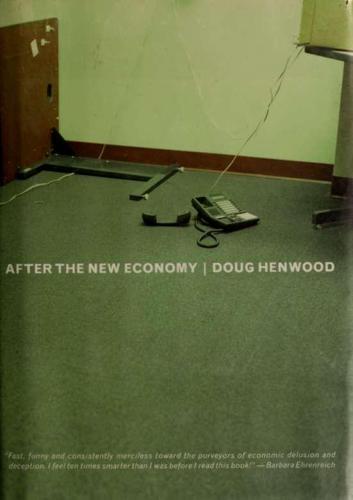
After the New Economy: The Binge . . . And the Hangover That Won't Go Away
by
Doug Henwood
Published 9 May 2005
This book is an exercise in kicking the thing while it's down, to make sure it won't get up again. The canonical New Economy discourse was relentlessly, almost de-Hriously, optimistic. It goes something Hke this. Finally, after a long wait, the computer revolution is paying off economically. It used to be, as the economist Robert Solow famously put it, that that revolution was visible everywhere but in the statistics. But with the takeoff in the U.S. productivity stats in the mid-1990s, Solow's quip was ready for retirement. It took some time for people and organizations to learn how to use computers (broadly defined, of course, to include all kinds of high-tech electronic gadgetry), but now they've finally learned.
…
Clothaire, 146 Reagan, Ronald, 8 recessions, political purpose, 182 regionahzation, 159 Reich, Robert, 71,74 retail trade, 64-66 Riflcin, Jeremy, 68 Robinson, Joan, 235 Robinson, William, 175-176 Rockefeller, David, 232 Rubin, Robert, 218 ruling class, global, 174—178 Russell, Marta, 100 sad militants, 185 Sakakibara, Eisuke, 228 Index Sale, Kirkpatrick, 168 Salomon Smith Barney, 197 scale, economic, 167-168 Scandinavia, very wired, 6 Schama, Simon, 23 Schrager, Ian, 233 Schwab, Klaus, 175-178 Seattle, anti-WTO protests, 32,160 sex, Gilder on, 11—13 sexual preference and pay, 100 sex discrimination, 94—101 international comparisons, 101—102 Shakespeare, 188 shareholder activism, 214 Shiller, Robert, 6-8,25-27,194 Shiva, Vandana, 162,168-169 Shorrock.Tim, 171 Sichel, Daniel, 57 Silicon Valley, income distribution, 105 Silicon Valley Toxics CoaUtion, 232 Sinai, Allen, 4 Singhne, Peter, 18 Skilhng, Jeffirey, 33 skills, job, 73-77 returns to, 86—87 skin shade and pay, 99 Smith, Adam, 109-110, 163,173 Smith, Patti, 183 Smith, Paul, 6 social democracy, 139-143,182 social movements, new, 179 Social Security, 227 Solow, Robert, 3 sovereignty, 170 space, shrinkage of, 146 speedup, 215, 229 Spencer, Herbert, 37 state, retreat of, 150-152 Stigbtz, Joseph, 193 Stiroh,Kevin,51,57 stock market 1990s bubble, history, 188-189 analysts' role, 194—200 anomalies, 194 book value, defined, 233 brokers' fees and salaries, 201-202 and corporate profitability, 203—204 and corporate restructuring, 214-215 economics of, 187-188,192-195 and evolution of the corporation, 212-217 excess volatiHty, 194 happiness of investors, 212 and managers' pay, 216—217 and pop culture, 187 psychology of, 25—26 trading frequency and returns, 190—191, 234,239 wisdom of, 35 see also finance stock options, 216—217 and wealth distribution, 126—127 stock ownership, distribution of, 24, 122-124 stress, management by, 25 stylish shoes, 165 Summers, Lawrence, 5,231 surveillance, 68,77—78 Survey of Consumer Finances, 118—119 Survey of Income and Program Participation, 118 symbolic analysts, 71,72 synergy vs. conflict, 197-200 Taylorism, 78 technology not evil, 2 and social movements, 179 telecommunications industry, 196—198 telegraph, 7 telemarketers, 68 TheGlobe.com, 189 269 TheStreet.com, 31 dme, acceleration of, 146 Tocqueville, Alexis de, 82,139 Tompkins, Doug, 161-162 total factor productivity.
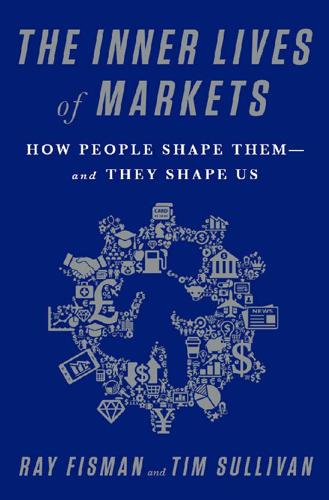
The Inner Lives of Markets: How People Shape Them—And They Shape Us
by
Tim Sullivan
Published 6 Jun 2016
The next generation of revolutionaries didn’t abandon mathematical modeling but focused their efforts on tethering their abstractions more directly to tangible economic phenomena. In the spirit of the worldly philosophers, they brought the field of economics back in connection with the world it was meant to describe. Many economists of this era refer to Robert Solow, another Nobel Prize–winning economist from MIT, as a source of inspiration for their own work. Solow introduced different kinds of capital—high versus low grade, for example—to models of competition, an early but critical step toward making them look more like real-life markets. Theodore Schultz, a midwestern farm boy whose father pulled him out of school after eighth grade for fear that an education would encourage him to leave the farm, further extended the Solow model after, paternal wishes notwithstanding, completing a doctorate in economics at the University of Wisconsin.
…
A., 7–10, 22–23 Ranau Japanese POW camp, 10–11 RAND Corporation, 25, 27, 134–136 reality-based economic modeling, 35–37, 49–51, 141 See also lemon markets theory recessions, 36, 48, 75 Roberts, John, 66, 70–71 Ross, Lee, 177–179 Roth, Al, 140, 141, 163–165 rush, fraternity/sorority, 140 Rutland, VT, 1 Rysman, Marc, 109 Samuelson, Paul, 28–29, 44 Samuelson, William, 55–57 San Fernando Valley gangs, 61–62 San Fers gang, 61–62 Sandakan camp, Borneo, 10–11 Sauget, IL, 168–169 scams internet, 52–55 money-back, 69–70 Scarf, Herbert, 163–164 school choice, in Sweden, 151–152 school to student matching, 138–139, 141–142, 143–149 Schultz, Theodore, 35 Schumpeter, Joseph, 24, 49–50 Scottish auctions, 82 Sears, 115–116 second-bid auction, 81–82 second-price sealed-bid auctions, 87–89 “Selection process starts with choices, ends with luck” (article), 146 self-destructive behaviors, signaling theory and, 67–68 selfish, markets making us, 177–179 seller misrepresentation, 52–55 sellers, knowing more than buyers, 41, 44–55 Seven Minute Abs, 172 Shakin’ Cat Midgets gang, 61 Shapley, Lloyd, 134–136, 137–138, 163–164 Shapley-Gale algorithm, 137–140 Shi, Peng, 148 Shleifer, Andrei, 180–181 shopping malls, as two-sided markets, 122–123 Shoup, Carl, 85 sick organizations, 142–143 signaling model applications of, 66–68 commitment signs, 62–66 competitive signaling, 69–71 integrity, 71–75 Silicon Valley, market friction and, 169–173 Skoll, Jeff, 39–40, 43, 51 Smith, Adam, 21 Snider, James, 42 social efficiency, auctions, 89 social well-being, assessing, 22 Solow, Robert, 35 Solow model, 35 Sönmez, Tayfun, 144 Sony’s Blu-ray format war, 125–126 sorority rush, 140 spectrum auction theory, 102–103 Spence, Michael, 62–66 Stack, Charles, 42–43 Stalag VII-A POW camp market, 5–6, 7–10, 13 stamp collecting, 82–84 Stiglitz, Joseph, 35–36, 76, 182 strategy proofness mechanism, 145 student to school matching, 138–139, 141–142, 143–149 Summers, Larry, 166–167 Super Bowl advertising, 70–71 supply and demand, 96 survival rates, of Japanese vs.
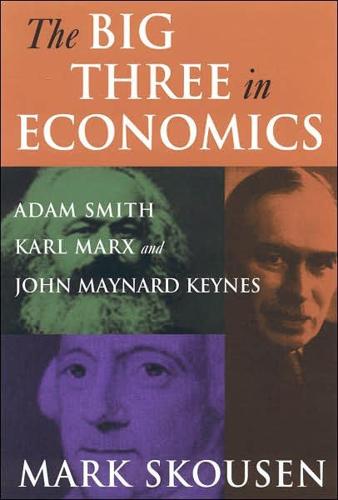
Big Three in Economics: Adam Smith, Karl Marx, and John Maynard Keynes
by
Mark Skousen
Published 22 Dec 2006
In the 1950s and 1960s, scholars in the major economics departments spent their entire careers doing empirical studies on the consumption function, the multiplier, national income statistics, and other Keynesian aggregates. Keynesian macroeconomics also became popular among journalists, because it was easy to understand (increasing consumer spending is "good for the economy"), and among politicians, because deficit spending bought votes. Robert Solow, Samuelson's colleague at MIT and a Nobel laureate, summarized the new orthodoxy when he proclaimed with considerable pride that "short-term macroeconomic theory is pretty well in hand.... All that is left is the trivial job of filling in the empty boxes" (1965, 146). The Pigou Effect: The First Assault But over time critics have chipped away at the Keynesian structure.
…
Indianapolis, IN: Liberty Fund. Snooks, Graeme Donald. 1993. Economics Without Time. Ann Arbor: University of Michigan Press. Sobel, Robert. 1980. The Worldly Economists. New York: The Free Press. Solomou, S.N. 1987. "Nikolai Kondratieff." In The New Palgrave: A Dictionary of Economics. Vol. 3, 60. London: Macmillan. Solow, Robert W. 1965. "Economic Growth and Residential Housing." In Readings in Financial Institutions, ed. M.E. KetchumandL.T. Kendall, 142-64. Boston: Houghton Mifflin. Somary, Felix. 1986 [I960]. The Raven of Zurich. London: C. Hurst. Soto, Hernando de. 2002. The Other Path. 2d ed. New York: Perseus Books. . 2003.
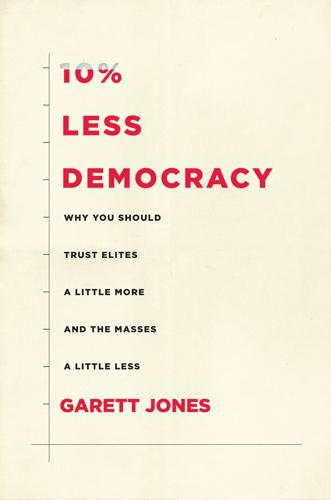
10% Less Democracy: Why You Should Trust Elites a Little More and the Masses a Little Less
by
Garett Jones
Published 4 Feb 2020
Maybe there really is no free lunch, and maybe having more of one item on the menu means getting less of another. Maybe if my team gets more, your team gets less. That outcome can’t be dismissed: it has a long tradition in economic thought, both technical and popular. Maybe, as then-future Nobel laureates Paul Samuelson and Robert Solow of MIT and James Tobin of Yale had suggested in the 1960s, there was some kind of near-permanent trade-off between low inflation and low unemployment. The government could choose to help out workers by heating up the economy, creating persistently low unemployment at the cost of persistently higher inflation, or it could instead help out the financial class, people with savings accounts and bonds, by keeping a cooler economy with lower inflation at the cost of higher unemployment.
…
Denmark, 169–70, 175; economic growth in, 170; Economist’s Democracy Index score for, 171; electoral terms in, 175; Feedback Unit, 173; Government Parliamentary Committees, 173; income per person in, 169, 170; independent central bank in, 175; independent judiciary in, 175; Institute of Policy Studies, 173; Lee Kuan Yew, 172–73, 175; libel suits in, 170; life expectancy, 169, 170; middle class in, 173, 175; monetary policy, 175; People’s Action Party (PAP), 170, 174, 175; Singapore Zoo, 174; vs. United States, 171 Smith, Adam: on economic freedom, 73; The Wealth of Nations, 157 social media, 2, 13, 132, 141, 144–47, 170, 179 Socrates, 181, 182 Solow, Robert: on inflation and unemployment, 43 South Korea, 22 sovereign debt. See government debt/sovereign debt Spain: central bank in, 46; EU membership, 158; inflation in, 46; relations with EU, 155 Standard & Poor’s, 121 statistics: multivariate regression, 12 Stella, Andrea: on independent central banks and inflation, 58–59 Stockemer, Daniel, 107 Summers, Larry: on control of central banks, 42–43; on economic independence of central banks, 45–46, 50; on income growth and central bank independence, 48, 49; on inflation and central bank independence, 45–47; influence of, 49–50; on political independence of central banks, 45–46, 47; on unemployment and central bank independence, 48 sweet spots, 19–20, 21–22 Switzerland: independent central bank in, 45–46; inflation in, 45–46 Tabarrok, Alex: on elected judges and voters, 66–68 Tobin, James: on inflation and unemployment, 43 Taiwan, 22 Tammany Hall, 105, 137–38, 141, 143 tariffs, 32, 100, 105 Tawadros, George: on inflation and central banks, 47–48 taxation: Blinder on, 61, 92–94, 143; and democracy, 62; of imports, 32, 100, 105; and inflation, 23; of interest earnings, 23; tax rates, 19–20, 117, 118, 133 term lengths of politicians: increases in, 11, 22, 37–40; short terms and short-term thinking, 31–35.

Fully Automated Luxury Communism
by
Aaron Bastani
Published 10 Jun 2019
Even for its inventor, GDP was always limited in understanding the broader determinants of a truly successful society. But besides those older judgements regarding the often zealous manner in which GDP was used, by the late 1980s another criticism began to emerge. Now, some said, it was no longer capable of even measuring economic growth properly. This was most famously expressed by the economist Robert Solow when he claimed in 1987 that ‘you can see the computer age everywhere but the productivity statistics.’ That conclusion was a response to the ‘productivity paradox’ which so troubled economists at the time – namely, how investment in information technology over the 1980s had a seemingly negligible impact on productivity measures, which actually slowed over the decade.
…
See also luxury populism Post, Mark, 170–2, 175, 176 post-capitalism information and, 59–60 without communism, 56–9 poverty, 24–5 Preston Model, 208–11, 213 private space industry, 120–1 privatisation, 202–4, 207, 209–10 production, mode of, 195 productivity paradox, 233 productivity revolution, 60–3 progressive procurement, 207 property-owning democracy, 25 prototype politics, 198 PV (photovoltaic) cells, 47, 102–5 radical politics, revival of, 27–8 railway lines, 33–4 realism, capitalist, 17–9 red politics, 188–92 Rees-Mogg, Jacob, 206–7 Reformation, 240, 241 regeneration, 207 Reither, Walter, 70–1 Relativity Space, 123, 124 renewable energy about, 104, 108 financing, 219–20 generating and storing, 218–19 green movement and, 238–9 transitioning to, 218–19 renewables, 106 ‘Reopening the American Frontier: Exploring How the Outer Space Treaty Will Impact American Commerce and Settlement in Space’, 129 Resolution Foundation, 58 resources asteroid mining, 119–20 globalism and, 197 post-scarcity in, 117–37 private space industry, 120–1 space, 119–37 Ricardo, David, 69, 233 rice production, 161–2 Richards, Bob, 124 Rifkin, Jeremy, 79 Rio Earth Summit, 98, 197 robots about, 78, 133 Atlas, 82–3, 132 da Vinci surgery robot, 90 information technology and robotics, 76 ‘KIVA’, 89 rise of, 80–2 Rocket Lab, 121, 122, 123 Romer, Paul, 63–5, 199–200 Roosevelt, Franklin, 194 Rutter, Brad, 80 Sanders, Bernie, 29, 30 Saturn V, 120, 122 Saudi Arabia, 220–1 Schumpeter, Joseph, 36 Scottish National Party, 28 Second Disruption, 11, 32–6, 72–4, 79, 94, 96, 106, 134, 139, 141, 163, 188, 190, 192, 198, 201, 208, 217, 232–3, 236, 238, 241 Selden, Mike, 172, 173 self-regulation, consequences of, 206 ‘Sermon on Indulgences and Grace’ (Luther), 241 Silicon Valley, 196 ‘Six Laws of Technology’ (Kranzberg), 237 Skelton, Noel, 25 Smith, Adam, 69, 233 ‘Social Prosperity for the Future’, 214 socialised capital market, 230–2 socialism, 191 society, electoralism and, 194–6 soil fertility, 118 ‘solar home’, 113–14 solar power/energy about, 101–5, 107 Global South and, 106–11 in Saudi Arabia, 220–1 Solow, Robert, 233 Sondergaard, Peter, 87 space asteroid mining, 133–4 falling costs of, 122–4 mineral wealth in, 134–7 Moon Express, 125–6 near-Earth asteroids (NEAs), 130–1 Outer Space Treaty (1967), 127 as private industry, 120–1 private sector, 132–3 SPACE Act (2015), 2, 9 Space Launch System, 120 Space Shuttle programme, 122 SpaceX, 119–21, 122, 133–4, 156 speculative economy, repressing the, 229–30 Sputnik, 137, 153 state socialism, 213 steam engine, 93, 95, 149, 164, 201, 238 steam power, 33 Summers, Larry, 64–5, 116, 199–200 Supplemental Nutrition Assistance Program, 24 surplus, food, disruptions and, 159–60 sustenance about, 178–9 cultured meat, 170–5 egg whites, 177–9 food, surplus and disruptions, 159–60 meat from vegetables, 175–7 milk, 177–9 planetary limits, 160–4 post-scarcity in, 159–81 synthetic meat, 168–70 wine, 177–81 synthetic meat, 168–70 Syriza, 28, 30 TALEN (transcription activator-like effector-based nucleases), 150 Taylor, Frederick, 60–3, 85 Taylorism, 60–3 technological unemployment, 86–8 technology Marx on, 237 relationship between politics and, 237 Technology and Unemployment report, 53 Terran 1 rocket, 124 Tesla, 84, 85, 106 Thatcher, Margaret, 206–7 Third Disruption, 11, 37–48, 70, 79, 82, 92, 116, 143–4, 148, 156, 171, 185–8, 192–6, 201, 212–4, 217, 221, 226, 232, 234, 236, 238, 241–3 3-D Magnetic Recording technology, 45–6 3-D printing, 122–4, 127 Tithebarn project, 208 transatlantic telegraph cable, 34 transcription activator-like effector-based nucleases (TALEN), 150 transportation, in UK, 215 travel, exponential, 39–40 Trump, Donald, 21, 24, 29, 30 Trussell Trust, 24 Turnspit dog, 72–3 Uber, 84, 85 UBI (Universal Basic Income), 224–6 UBS (Universal Basic Services), 207–8, 213–17, 224, 226, 236 UK ageing in Britain, 141–4 healthcare in, 215–16 transportation in, 215 UKIP, 28 unemployment, 26 unfreedom, 214 unions, in Britain, 211–12 Universal Basic Income (UBI), 224–6 Universal Basic Services (UBS), 207–8, 213–17, 224, 226, 236 University College London, 90 US Department of Agriculture, 178 US Food and Drug Administration, 153 US National Institute of Health, 147 US National Space Council, 129 US Senate Committee on Commerce, Science and Transportation, 129 utopia, from crisis to, 48–9 V2, 137 Valeti, Uma, 173 vegetables, meat from, 175–7 Verne, Jules Around the World in Eighty Days, 33 von Braun, Wernher, 120, 128 voting, 195 wage-labour, 35 Wagner, Erika, 135 Wales, 114 Watson (computer), 80 Watson, James, 144, 149 Watt, James, 33 Watt’s steam engine, 93, 95, 149, 201, 238 The Wealth of Nations (Smith), 69–70 wheat production, 161–2, 165 Whole Foods Market, 88 Wikipedia, 235 wind power/energy, 111–13 windfall tax, 230 wine, cellular agriculture and, 177–81 work, future of, 92–3 worker-owned cooperatives, 209–10 worker-owned economy, 207–8, 211–12, 219 World Bank, 221, 222 Wycliffe, John, 239–41 Xplorer, 132 Yang (factory worker), 1–2 ZFNs (zinc finger nucleases), 150 zinc, 118 zinc finger nucleases (ZFNs), 150 Žižek, Slavoj, 17n
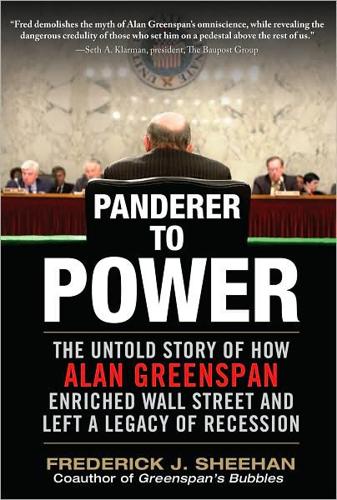
Panderer to Power
by
Frederick Sheehan
Published 21 Oct 2009
“The Greenspan Fed” Was Exactly That When Volcker ruled, the board was not a rubber stamp. There was no such unruliness under Greenspan. There was rarely an interesting discussion. Alan Blinder was appointed to the vacant post of vice chairman of the Federal Reserve in 1994. A Princeton undergraduate, he earned his Ph.D. at MIT, where his dissertation was supervised by Robert Solow (also one of Ben S. Bernanke’s thesis sponsors).18 Blinder served on the Council of Economic Advisers in the first Clinton administration (where his greatest contribution may have been as algebra homework consultant to Chelsea Clinton).19 Blinder was filling the home stretch of a 14-year term vacated by David Mullins.
…
Blinder did not speak publicly about his decision, but when Felix Rohatyn, investment banker from Lazard Frères and “Evening Hours” companion of Alan Greenspan, decided to pursue the opening, Blinder asked: “Why are you doing it? I’m leaving because I can’t stand it.”20 15 FOMC meeting transcript, July 5–6, 1995, p. 56. 16 Ibid., p. 59 17 Ibid., p. 72. 18Bernanke’s thesis sponsors at MIT were Stanley Fischer, Rudiger Dornbusch, and Robert Solow; http://econ-www.mit.edu/about/economic. 19 John Cassidy, “Fleeing the Fed” (“Annals of Finance”), New Yorker, February 19, 1996, p. 39. Laurence Meyer served as a Federal Reserve governor from 1996 to 2002. In A Term at the Fed, Meyer wrote that Greenspan drafted the statements about the economy and economic policy that the FOMC issued after it met.
…
William, 55, 55n.33, 85, 88–91 Semiconductors, 207, 242 September 11, 2001, terrorist attacks, 245–249 740 Park Avenue, 322, 357 Shanghai Stock Exchange, 327 Sharkey, Thomas F., 91 Shulman, David, 133 Shultz, George, 42 Sichel, Daniel, 159 Silk, Leonard, 61–62 Simon, William, 56 Skadden Arps, Slate, Meagher & Flom, 116 Slichter, Sumner, 24 S&Ls (see Savings and loans) Smith, Greg, 248 Soccernet, 222 Social security, 84, 147, 149, 154 Social Security Commission, 146 Solow, Robert, 137 Soros, George, 131 S&P 500 Index, 169 and 1987 stock market crash, 111–112 in 1991, 128 in 1995, 139, 141 in 1996, 141 in 1997, 141, 278 in 1998, 188, 278 futures contract on, 110n..5, 111–112 Spielberg, Steven, 353 Sprinkel, Beryl, 42, 60 Stagflation, 52 Standards of living, investment and, 350–352 Statistical espionage, 4 Statisticalitis, 40 Stein, Herbert, 61, 227n.1 Steinberg, Jonathan, 322 Steinberg, Saul, 35, 88–90, 117, 322 Steinhardt, Michael, 38 Stempel, Robert, 127 Stern, Gary, 194 Stern, Robert A.M., 356 Stevenson, Richard W., 164 Stiglitz, Joseph, 143, 342 Stock market: 1950 to 1966 rise in, 4 in 1970s, 43 1987 crash, 103–104, 110–115 1990s bubble in, 145, 155, 160–164, 169–178, 191–210, 285–287 and 1990s recession, 127 in 1995, 133 in 1998, 187–188 in 2000, 215–216, 219, 221, 224–225, 229 in 2001, 237–238, 246, 248 as driver of the economy, 175 Greenspan’s predictions about, 105–106 and “irrational exuberance,” 105 (See also Nasdaq; S&P 500 Index) Stock market analysts (see also Wall Street analysts under “Alan Greenspan”), 177–178, 193, 195, 198–204, 209, 218, 232, 239, 243–244, 284 Stock options, 318 Stock-option cashout plans, 72 Strauss-Kahn, Dominique, 341 Subprime lending market, 1990s, 164–166, 274 Subprime mortgages, 296, 328–331, 340, 357 Summers, Lawrence “Larry,” 143, 276–277, 323, 361 Sun Microsystems, 207 Sunny Isles Beach, Florida, 295 Supply-side economics, 68–69, 96 “Sweeping” assets from retail checking accounts, 134–135 Swope, Gerard, 364–365 Sulzberger, Arthur Ochs, 74 Sunday Times (London), 342 Sydney Morning Herald (Australia), 347 Synthetic CDOs, 313 T TACA International, 164 Technology, 196, 200–201, 241 “Technology and the Economy” (Alan Greenspan), 218 Technology industry, 207 and 2000 slowdown, 234, 235 in 2001, 237 profit losses in, 219 and Y2K scare, 216 Television, stock market and, 248–249 Terra Holdings LLC, 356 Terrorist attacks of 2001, 245–247 Tett, Gillian, 313 Texas Instruments, 207 Thomas, Allen, 74 Thomas, Barbara, 74 Thrifts (see Savings and loans) Time magazine, 35, 42, 43, 45, 55–56, 60–61, 70, 96, 101, 289 Townsend, William, 3, 15–16, 353 TownsendGreenspan & Co., 3, 5, 6, 16, 17, 19, 25, 27, 73, 74, 102 Trans-World Financial, 93 Travelers, 275 Treasury Department, 20, 56, 132, 247, 296 Treasury securities (see U.S.
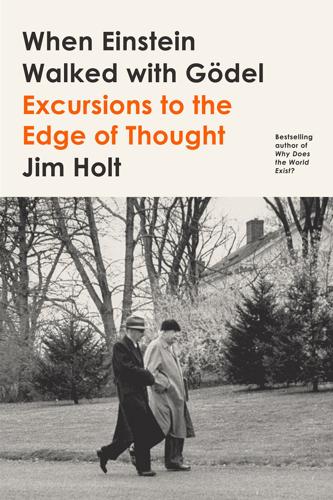
When Einstein Walked With Gödel: Excursions to the Edge of Thought
by
Jim Holt
Published 14 May 2018
Rampal, Jean-Pierre Raphael rationalism Rawls, John Reagan, Ronald reference: new theory of; self– regression Reign of Terror Reimann surfaces relativism relativity; experiments confirming; Gödel on; publication of papers on; quantum physics and; space-time in; thought experiment on Renaissance Revue du Mois Rhodes, Colossus of Richard, Mark Riemann, Bernhard Riemann zeta conjecture rigid designation Rimbaud, Arthur Rites of Love and Math (film) Robertson, Pat Robinson, Abraham Rockefeller University Roko’s basilisk Roman Catholic Church Rorty, Richard Rosen, Nathan Routledge Encyclopedia of Philosophy Royal Geographical Society Royal Society Rucker, Rudy Ruse, Michael Russell, Bertrand; atheism of; autobiography of; on the infinitesimal; proper-names theory of Russian Academy of Sciences Russian Revolution Rutgers University Saddam Hussein Sagan, Carl Santayana, George Savant, Marilyn vos Scepticism, Rules, and Language (Hacker and Gordon) Schindler, Oskar Schopenhauer, Arthur Schrödinger, Erwin Schwartz, Stephen Schweitzer, Albert Scientific American scientific revolution Searle, John Secrist, Horace self-similarity set theory Seurat, Georges Seven Wonders of the Ancient World Shakespeare, William Shallows, The (Carr) Shapin, Steven Shaw, George Bernard Shelley, Mary Shevardnadze, Eduard Shirky, Clay shock waves, mathematics of Shultz, George simultaneity/simultaneous actions Singer, Peter Skewes number Slade, Henry Small, Gary Smith, Adam Smith, Quentin Smith, Sydney Smolin, Lee Snow White and the Seven Dwarfs (film) Soames, Scott Sociological Society Social Text Socrates Sokal, Alan Solomon, Robert Solow, Robert Solti, Georg Somerville, Mary Sophia Charlotte, Queen of Prussia Sorbonne space-time spatial relations, theory of Spanish Civil War Spinoza, Baruch spiritualism spirituality “spooky action” SS Stalin, Joseph Stanford University Star Trek (television and movie series) statistics; eugenics and Statistics on the Table (Stigler) Stein, Dorothy Stein, Gertrude Stevenson, Adlai Stewart, Ian Stigler, Stephen M.
…
First, they could do so indirectly, by increasing our ability to produce other goods and services. In this they have proved something of a disappointment. In the early 1970s, American businesses began to invest heavily in computer hardware and software, but for decades this enormous investment seemed to pay no dividends. As the economist Robert Solow put it in 1987, “You can see the computer age everywhere but in the productivity statistics.” Perhaps too much time was wasted in training employees to use computers; perhaps the sorts of activities that computers make more efficient, like word processing, don’t really add all that much to productivity; perhaps information becomes less valuable when it’s more widely available.
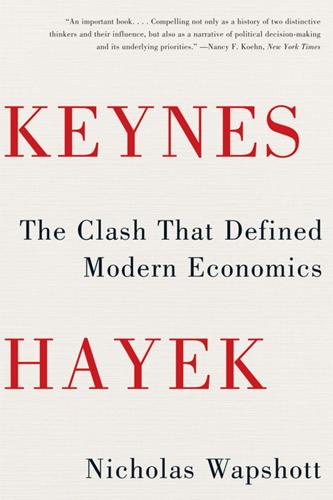
Keynes Hayek: The Clash That Defined Modern Economics
by
Nicholas Wapshott
Published 10 Oct 2011
He was operating according to the latest neo-Keynesian notions that intended to offer a more predictable means of managing the economy. Keynes’s protégé Roy Harrod and Harvard’s Evsey Domar56 had, in their “Harrod-Domar model,” built on Kahn’s multiplier theory to predict how tax cuts could lead to economic growth. And Heller himself, working with his colleague Robert Solow,57 took account of the work in 1958 of an LSE economics professor, the New Zealander William Phillips,58 who postulated in a graph dubbed the “Phillips curve” a trade-off between reducing unemployment and rising inflation. By formulating policy according to the Phillips curve, Heller believed he had found a way to provide full employment without provoking higher prices.
…
“It’s big enough to take care of itself.”72 For many Keynesians, Reaganomics was little more than a thimblerig, a political gimmick that, behind the macho Hayekian rhetoric about slashing the size of the government, set off a public spending spree on defense that boosted aggregate demand and economic growth. According to the Nobel Prize–winning MIT economist Robert Solow, “The boom that lasted from 1982 to 1990 was engineered by the Reagan administration in a straightforward Keynesian way by rising spending and lowered taxes, a classic case of an expansionary budget deficit.”73 Galbraith agreed. “[Reagan] came into the presidency as the country was experiencing a rather disagreeable recession and [implemented] lots of strong Keynesian policy,” he said.
…
C., 11 Snowden, Philip, 33–34, 82, 83, 85, 86 social contracts, 60, 218 social democracy, 16–17, 29, 36, 151, 288–89 socialism, 16–17, 21, 29–30, 32–36, 59, 145–46, 151, 164, 194, 196–99, 202, 209, 220–21, 232, 242, 289, 290–91, 294 Socialism: An Economic and Sociological Analysis (Mises), 29–30 Social Security, 275, 276 sociology, 199 Solow, Robert, 238, 265 South America, 73 South Vietnam, 241 Soviet Union, 9, 87, 170, 194, 211, 228, 266, 276 Sozialpolitik, 17 space program, 234, 237 Spain, 282 Spartacus League, 9, 145 speculation, 24, 52–53 spending, 81–82, 119–20, 127, 131, 143–44, 184–87, 191 “spoilation,” 119–20 Sputnik launch (1957), 234 Sraffa, Angelo, 115 Sraffa, Piero, 67, 103, 106, 109, 113–22, 124, 126, 190, 309n SS Adriatic, 84 stagflation, 244–45, 257, 261–62, 263, 286 Stalin, Joseph, 194 Standard & Poor’s, 276 Stanford University, 2 starvation, 9–10, 21, 39, 81 State Department, U.S., 228 State of the Union addresses, 228, 231, 241–42, 275 statistics, 120–21, 129–31, 166 steel industry, 9 Stein, Herbert, 242, 243, 256, 265, 278, 294 Stigler, George, 212, 213, 248, 328n stock market, xiii, 40, 44, 52–53, 58, 83, 112, 141, 143–44, 149, 157, 189, 276 stock market crash (1929), xiii, 40, 44, 52–53, 58, 83, 112, 141, 157, 189 Strachey, James, 7–8, 13 Strachey, Lytton, 5, 6–7, 301n Straight, Michael, 132 strikes, labor, 38, 39–40, 201 subprime mortgages, 278–79 Summers, Lawrence, 275 supply and demand, 9, 41–43, 48–49, 77, 111, 121, 131, 134, 148–49, 184–87, 249 supply curve, 131 supply-side economics, 262–63, 267–68, 271 “Supra-national Central Bank,” 56 Sweden, 289 Switzerland, 211, 289 tariffs, 61–64, 82–83, 86, 247 Tarshis, Lorie, 67, 132 Taussig, Frank, 91–92 Tawney, Richard, 24 taxation: —business, 233, 262, 264, 267–68 —cuts in, 135, 235, 237–39, 243, 249, 259, 261, 262–64, 265, 271, 272, 273, 275, 276, 283–84, 286, 287 —employment and, 130, 163, 191 —flat, 222 —income, 159, 191, 222, 231, 252, 253, 254, 262–63, 264 —increases in, 188, 241, 271–72 —Keynes’s views on, 131, 159, 191, 238, 262–63, 265 —progressive, 191, 222, 252, 253 —public works financed by, 33, 49, 163, 233–34 —revenues from, 12, 131, 234–35, 262–63, 264, 267, 274, 276 —unemployment and, 130, 163, 191 —welfare programs supported by, 227, 233, 234–35, 240, 267 tax credits, 277, 280, 281–82, 285, 287 Taylor, John, 271 Taylor’s rule, 271 teachers, 135 “Tea Party” movement, xiii–xiv, 283, 293, 343n technology, 267, 276, 277 telephone system, 60, 291 terrorism, 276–78 textbooks, economics, 1–3, 5, 20, 169, 232, 318n–19n Thatcher, Margaret, 258–62, 288, 289, 292, 295, 338n, 344n–45n theoretical analysis, 3, 52–53, 70–72, 78–79, 87–91, 103–7, 113–22, 120–21, 140, 161–62, 177–81, 183, 186–87, 209, 256–57 “Theories of the Influence of Money on Prices” (Hayek), 72–75 think tanks, 216, 260, 278 Thornton, Henry, 74 Thorp, Willard, 28 Tilton, 53, 128–29, 132, 206, 226, 307n Time, 221, 239–40, 280 Time and Tide, 212 Times (London), 31, 133, 139, 143 Tobin, James, 167, 168, 236 Tocqueville, Alexis de, 292, 325n Today, 254 Toms, P.
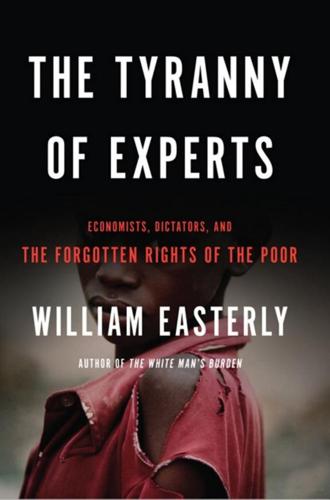
The Tyranny of Experts: Economists, Dictators, and the Forgotten Rights of the Poor
by
William Easterly
Published 4 Mar 2014
These three ideas are connected so that each makes the other possible. Again, it does not make these ideas any less powerful that they are elementary concepts taught in introductory economics classes. We are interested in ideas with either moral or pragmatic payoffs, regardless of their originality or prestige. Nobel laureate Robert Solow might have been right when he once said that most or all of what you need to give practical policy advice comes from Econ 101. And actually it will turn out that, despite the recent inclusion of some of Smith’s ideas in new academic theories of growth, these ideas are still neglected in debates among nonacademics in the development community.
…
For most of the history of economics, the field spent most of its energies on explaining a static economy in which existing goods could be allocated with ever-increasing efficiency. The field never had quite enough to say about the most important two things going on over those two centuries: the invention of new goods and perpetual economic growth. Nobel laureate Robert Solow at last placed innovation at the center of growth in a 1957 article. He showed that traditional factors like investment in plant and equipment could not account for most of American economic growth. There was something else, and the obvious candidate for “something else” was invention.5 After Solow, most economists accepted that economic growth happened through technological innovation.
…
See also Gang of Four Slave trade/slavery in Africa, 159–165, 172–173 in Benin, West Africa, 159–163, 172–173, 344 in Colombia, 166–167, 177–178 in Ethiopia, 165 and geography, 163–165, 177–178 in Ghana, 345 in New York City, 175–177, 179 See also Oppression Small, William, 283 Smith, Adam, 240, 241–248, 268, 283, 286, 287, 288 and development, 273–274 and free trade, and invisible hand concept, 243–245. See also Invisible hand and problem-solving, 245–253 versus Quesnay, François, 335–338 The Theory of Moral Sentiments, 242, 244 The Wealth of Nations, 244, 337 Smuts, Jan, 87, 96 Snow, John, 192 Social return/payoff, 251–252, 287–288 Sokoloff, Kenneth, 168 Solow, Robert, 245, 277 Soninke people, 163–165 South America, versus North America, and oppression, 168–170 South Korea, 261–274, 266, 267 (fig.), 346. See also Gang of Four Soviet Union, 97–98, 104, 112, 115–118, 119. See also Cold War Sowell, Thomas, 229 Specialization, 261–274. See also Gains from Specialization Spontaneous order, 32–34, 35–36, 38–39, 244, 290, 305 Spontaneous solutions, 7, 237, 348.
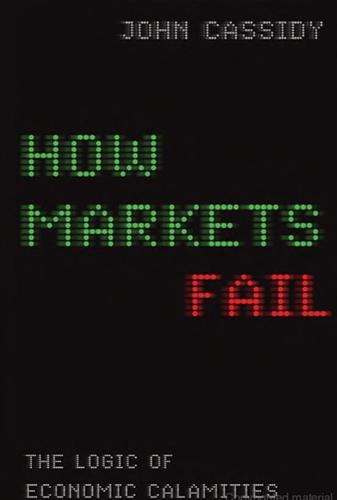
How Markets Fail: The Logic of Economic Calamities
by
John Cassidy
Published 10 Nov 2009
Market prices will fail to approximate true scarcity values in terms of wants; they will be loaded with misinformation, and producers’ profit calculations will leave out of account much of the private benefit associated with public goods. The ‘invisible hand’ will fumble: people’s decentralized market choices will not efficiently cater to their tastes.” A highly important public good that largely escaped the attention of economists until pretty recently is scientific knowledge. Back in the 1950s, Robert Solow, an economist at MIT, calculated that between 1909 and 1949, technical progress accounted for about 51 percent of the annual growth in U.S. GDP, which meant it had made a bigger contribution to American prosperity than population growth and the accumulation of capital combined. Subsequent studies confirmed that the application of scientific knowledge, in the form of new inventions and new methods of organizing production, is central to the growth process, but for many years economists had little to say about where this technological advancement came from and whether it could be speeded up.
…
In high school, he later recalled, “I belonged to a small group of students, who in today’s terminology would be called nerds . . . Socially, I was a misfit. I failed to understand why my classmates spent the typical free afternoon watching American Bandstand.” At MIT, Akerlof studied under Paul Samuelson and Robert Solow, two of the leading figures of postwar economics. By the early 1960s, the subject had been divided into several mutually antagonistic camps. The high theorists were busy debating the intricacies of general equilibrium and game theory. Out in Chicago, Friedman and his followers were pursuing their own libertarian path.
…
Banking Committee Senior, Nassau September 11, 2001, terrorist attacks (9/11) shadow banking system Shakespeare, William Shearson Lehman Sherman Antitrust Act (1890) Shiller, Robert Shin, Hyun Song Shleifer, Andrei Shmelev, Nikolai Shultz, George Simons, Henry Sinai, Todd 60 Minutes Skidelsky, Robert Smith, Adam on banking death of divison of labor described by on duties of government Greenspan influenced by Hayek and legacy of invisible hand metaphor of moral philosophy of public goods addressed by Smith, Debbie Smith, Vernon Smoot-Hawley Tariff Act (1930) Socialism (Mises) Socialist Party Social Security Société Générale Solomon, Amit Solow, Robert Sonnenschein, Hugo Soros, George Soros Fund Mangement South Africa Southern California, University of Southern Pacific Railroad South Korea South Sea bubble Soviet Union collapse of Ministry of Light Industry Spain Spamann, Holger special-purpose vehicles (SPVs) speculative bubbles, see bubbles Spence, Michael Sperry Lease Finance Corporation spillovers Spitzer, Eliot Sputnik I Sraffa, Piero stability, illusion of Stabilizing an Unstable Economy (Minsky) Stack, Brian E.
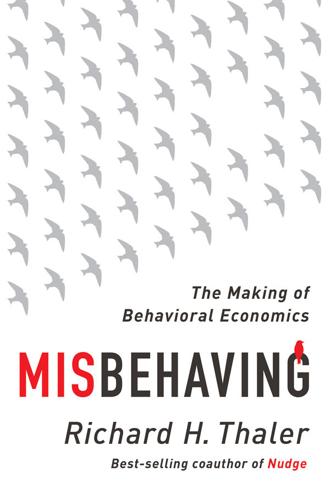
Misbehaving: The Making of Behavioral Economics
by
Richard H. Thaler
Published 10 May 2015
We knew that Posner would find much to criticize in our approach, and we also knew that he could knock off a comment quickly. In spite of his serving both as a part-time law professor and federal judge on the Seventh Circuit in Chicago (one step below the Supreme Court), his research productivity is legendary. As the economist Robert Solow so colorfully put it: “Posner evidently writes the way other men breathe.” Writing a comment on our long article would not take him much time. Although we had a good hunch about what Posner might think of our paper, any uncertainty about which parts of the paper he would find to be most objectionable was resolved the day before the three of us were to present our paper at the University of Chicago Law School.
…
Indianapolis: LibertyClassics. Smith, Vernon L. 1976. “Experimental Economics: Induced Value Theory.” American Economic Review 66, no. 2: 274–9. ———, Gerry L. Suchanek, and Arlington W. Williams. 1988. “Bubbles, Crashes, and Endogenous Expectations in Experimental Spot Asset Markets.” Econometrica 56, no. 5: 1119–51. Solow, Robert M. 2009. “How to Understand the Disaster.” New York Review of Books, May 14. Available at: http://www.nybooks.com/articles/archives/2009/may/14/how-to-understand-the-disaster/. Spiegler, Ran. 2011. Bounded Rationality and Industrial Organization. Oxford and New York: Oxford University Press. Stanovich, Keith E., and Richard F.
…
Petersburg paradox, 27 sales, 61–62 Samuelson, Paul, 159 economics formalized by, 44, 94 financial economics work of, 208 “public goods” formalized by, 144–46 on rationality of repeat betting, 192–95, 197 time inconsistency and, 92 utility measured by, 89–90, 92, 99 Save More Tomorrow, 314–22, 318, 341 lack of randomized control trial test of, 338n savings, 54 after-tax financial return on, 309–13 standard theories of, 309 savings, for retirement, 7, 9, 50, 52, 80, 345, 370 automatic enrollment, 313–22, 318 inertia in, 313 loss aversion in, 313–14 and marginal propensity to consume, 98 narrow framing of, 195–98, 196 nest egg amount and, 309–10 and present bias, 314 self-control and, 314 Scarcity (Mullainathan and Shafir), 58n, 366 Schachter, Stanley, 180 Schelling, Thomas, 12–13, 14, 37n, 100, 104n, 178 in Behavioral Economics Roundtable, 181 Schiphol International Airport, 326 Scholes, Myron, 208 Schwartz, Alan, 197 Science, 22, 319 scientific revolutions, 167–68, 169–70 secret sales, 119–20 Security Analysis (Graham and Dodd), 219–20 Seeger, Pete, 65 self-control, 54, 85–86, 99–111, 115 as about conflict, 103 retirement savings and, 314 and savings for retirement, 309 two selves in, 103–5 willpower and, 87–99, 363 self-interest, bounded, 258 selfishness, 145–46 Sen, Amartya, 145 sense of humor, 218, 219, 223 Shafir, Eldar, 58n, 67–68, 69, 71, 179, 257, 366 Shankar, Maya, 344 Shapiro, Jesse, 75–76, 357 Sharpe, William, 208, 226, 229 Shaton, Maya, 198 Shea, Dennis, 315–17 Shefrin, Hersh, 98, 104, 164–66, 167, 223–24 Shiller, Robert, 5n, 176, 242 in behavioral economics debate, 159, 167–68 in Behavioral Economics Roundtable, 181 behavioral finance workshop organized by, 236 and behavioral macroeconomics, 349 housing prices studied by, 235, 252 as president of AEA, 347 on variability of stock prices, 230–33, 231 Shleifer, Andrei, 175, 178 closed-end fund paper of, 240–43, 244 on limits of arbitrage, 249 Signal and the Noise, The (Silver), 292 Silva, Rohan, 330–33, 334 Silver, Nate, 47, 292 Simon, Herbert, 23, 29 in behavioral economics debate, 159, 162 Sinden, John, 148–49 skiing, 115–20, 138 Slovic, Paul, 21, 36, 48 slow hunch, 39–40 Small Business Administration, 351, 352n Smith, Adam, 7, 51–52, 58, 87–88, 89, 103 Smith, Cliff, 206 Smith, Roger, 123 Smith, Vernon, 40, 41, 148, 149 “learning” critique of experimental economics, 153 snow shovels, 20, 64–65, 127–29, 133, 136, 137 Snyder, Daniel, 288–89, 290n Social Security, 322 Society for Judgment and Decision Making, 180n Society of Actuaries, 14 Soll, Jack, 75 Solow, Robert, 259 Soman, Dilip, 66–67 Sony, 135–36 sophisticated agents, 110–11 sporting events, tickets for, 18–19, 57–58 spreadsheets, 214n Stanford Law Review, 258–59 Stanford University, 35–41, 125, 126, 185 statistical lives, 13 Statman, Meir, 104, 164–66, 167 status quo, 131 bias, 154 and Weber-Fechner law, 32 Staw, Barry, 65 Steinberg, Saul, 91 Stewart, Jon, 352 sticky wages, 131–32 Stigler, George, 37n, 87, 162–63 Stigler, Stephen, 296n Stigler’s Law, 296n Stiglitz, Joseph, 170 stock market, stocks, 7 beating, 206, 207 bonds vs., 191–92, 195–98, 196 calendar effects in, 174 cheap, 219–21 growth, 28, 214–15, 222, 227 October 1987 crash of, 7, 232 regression toward the mean, 222–23 value, 214–15, 220–21, 222, 227–28 variability of prices of, 230–33, 231, 367 “Stock Prices and Social Dynamics” (Shiller), 233 strikes, 372 Strotz, Robert, 99–100, 102, 108 Structure of Scientific Revolutions, The (Kuhn), 169 Stubhub.com, 18–19 stub value, 246, 246 Stulz, René, 243 Sufi, Amir, 78 suggested retail price, 61–63 Summers, Larry, 178, 239–40, 247 sunk costs, 21, 52, 64–73, 118, 180, 261 and revised Ultimatum Game, 266–67 Sunstein, Cass, 258, 260, 269, 322, 323–25, 330, 333, 343, 345 on ethics of nudging, 337n Super Bowl, 139n, 359 supermarkets, 62n supposedly irrelevant factors (SIFs), 9, 24, 315 budgets and, 74 luck on Deal or No Deal, 298 noise traders’ use of, 240 purchase location as, 61 in retirement savings, 310–11, 312, 315 and returns on investments, 196 sunk costs as, 267 tax cuts as, 350 surcharge, discount vs., 18 surge pricing, 136–38, 200n surplus value, 285–86, 285, 286, 288 Susanne (game show contestant), 299–300 Sydney, Australia, 138n Tarbox, Brian, 317–19, 321 tax cuts, 350–51 taxes, 165 compliance with, 334–36 and savings, 309–13 taxi drivers, hours worked by, 11, 199–201, 295 Taylor, Tim, 173n technology bubble, 7, 78, 220, 234, 250, 252 teenage pregnancy, 342 Teichman, Doron, 269 10% club, 277–78, 293–94 test periods, 227 texting, 190n, 342 Thaler, Alan, 14 Thaler, Jessie, 129 Thaler, Maggie, 118n theories, normative vs. descriptive, 25 theory-induced blindness, 93–94, 128 Theory of Games and Economic Behavior, The (von Neumann and Morgenstern), 29 Theory of Interest, The (Fisher), 88–89 Theory of Moral Sentiments, The (Smith), 87–88 “THERE ARE IDIOTS” paper (Summers), 240–41 Thinking, Fast and Slow (Kahneman), 38, 103n, 109, 186 Thompson, Rex, 242 Tierney, John, 327 time, value of, 21 time-inconsistency, 92–93, 99 time-shares, 71 Tirole, Jean, 307 Tobin, James, financial economics work of, 208 tokens, 149–53, 151, 263, 264–65 Tories, see Conservative Party, U.K.
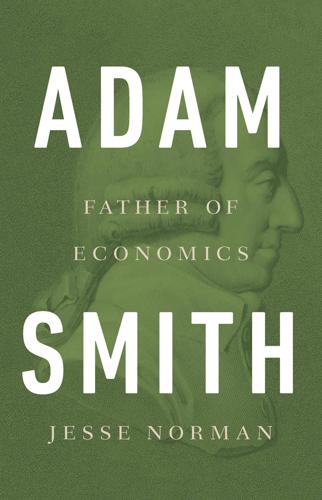
Adam Smith: Father of Economics
by
Jesse Norman
Published 30 Jun 2018
There is thus every reason for concern about the loss of effective competition in many advanced economies, and so the loss of economic value to consumers and to the public interest, a loss of value not reflected in share prices, which have become increasingly disconnected from improved economic performance. Within firms, as Robert Solow has argued, the tacit understandings that historically governed the allocation of value between labour and capital may be coming under threat, not least from capture by management. If this is true, then in fundamental ways it seems that capitalism itself may be starting to struggle. But by far the most significant development has been the increasing impact of technology.
…
For the Obama White House’s critique of market power, see ‘Benefits of Competition and Indicators of Market Power’, US Council of Economic Advisers Issue Brief, May 2016; Jan de Loecker and Jan Eeckhout, ‘The Rise of Market Power and the Macroeconomic Implications’, NBER Working Paper 23687, August 2017. On the erosion of real wages and the loss of trust within firms, see Robert Solow, ‘The Future of Work: Why Wages Aren’t Keeping Up’, Pacific Standard, 11 August 2015 Scalability of technology platforms: this is just one aspect of the economic effects of investment in intangible assets, which now outstrips investment in tangible assets in the US and UK. For a pioneering analysis see Jonathan Haskel and Stian Westlake, Capitalism without Capital: The Rise of the Intangible Economy, Princeton University Press 2017 ‘Competition is for losers’: Peter Thiel, Wall Street Journal, 12 September 2014 Effects of information and choice overload, especially on the poor: see Sendhil Mullainathan and Eldar Shafir, Scarcity: The True Cost of Not Having Enough, Allen Lane 2013 Consumer detriment from UK retail electricity market: UK Competition and Markets Authority, Energy Market Investigation: Final Report, 24 June 2016 Volkswagen scandal: see Frank Dohmen and Dieter Hawranek, ‘Collusion between Germany’s Biggest Carmakers’, Der Spiegel, 27 July 2017, and Jack Ewing, Faster, Higher, Farther: The Inside Story of the Volkswagen Scandal, Bantam Press 2017 Limits of competition policy: recent arguments, and disparate US and EU views, are explored by John Vickers in ‘Competition Policy and Property Rights’, Economic Journal, 120.544, 2010 Hidden costs of price comparison websites: see e.g.
…
See specific topics Smith, Margaret, 3, 6–8, 17, 133, 140, 155–156, 218 Smith, Vernon, 196–197, 222 Smoot-Hawley Tariff Act of 1930, 276 smuggling, 16 sociability, 20, 37, 57, 62 social contract, 21–22, 296 social media, 329 social norms, 146–147 social renewal, 331–332 society commercializing, 311–319 governing, 149 justice and, 75 religion in, 121 See also commercial society Solow, Robert, 281 South Sea Bubble, 167 Spain, 11–12, 32 specialization, 78, 105–106, 119, 230 stadial theory, of human development, 57, 78–80 Standard Oil Company, 283 standing army, 118–119 state church and, 120–121 commercial societies in, 327 market pressures in, 305 state of nature, 77 Steuart, James, 154, 176 Stewart, Dugald, 3, 10, 21, 26, 50–53, 137, 152–153 on conjectural history, 77–78 on government, 187 Millar, J., and, 74 on political economy, 162 on Smith, M., 7–8, 218 on The Wealth of Nations, 179 Stigler, George, 181 Strahan, William, 91, 129–131, 140, 142, 302 Stuart, Charles Edward, 34–35 the Stuarts, 31–33 sympathy, 58–59, 62–65, 75, 105, 220 system of natural liberty, 53, 177 commerce in, 292 free commerce and, 200 freedoms in, 115–116 inequality and, 272 the invisible hand and, 253–254 market imperfections and, 188 regulation and, 254 systems, 45 systems of law, 75 tar water, 25 Tassie, 160 taxation, 71 of American colonies, 101–102 for commercial initiatives, 116–117 in England, 121–122 four maxims of good, x, 122–123 French system, 150–151 by government, 189 Townshend on, 102 without representation, 103 technology, 280–284 “That Politics may be Reduced to a Science” (Hume), 28 Thatcher, Margaret, x–xi theory of evolution, 168–170 The Theory of Moral Sentiments (Smith, A.), xi–xii, 27, 39, 44, 53–54, 143, 168–169 on behaviour, 201 Burns and, 61 on Calas, 289–290 on compassion, 58 corrections, to third edition of, 87–88 on economy of regard, 307–308 French Revolution and, 150 on government, 71, 271 Hume on, 66–67 on impartial spectator, 296 on the invisible hand, 173 on justice, 75–76 moral philosophy in, 55, 146 on norms, values, 230 publication of, 65–66, 144–145 on the rich, 185 on selfishness, 183 on slavery, 233, 235 on sociability, 57 on sympathy, 62–63 on tranquility, 155 on wealth, 172 The Wealth of Nations and, 160–161, 166–167, 178–180, 237–238 Wollstonecraft and, 220 on women, 218 Thiel, Peter, 282 Thomas Aquinas, 163–164 Tories, 32, 40, 52 Toulouse, 288–289 Townshend, Charles, 50, 81–84, 88, 102 trade, 106 balance of, 115 British monopoly on, 115–116 comparative advantage and, 199 of England, 113, 115–116, 136 free, 258–259, 277, 280 government and, 186–187 Pitt and, 141–142 regulation of, 327 Scotland and, 90 slave, 232–234 uses of, 276–280 value in, 107 The Wealth of Nations on, 279 tranquility, 155 Treatise of Human Nature (Hume), 27, 48, 129, 297–298 Treaty of Utrecht, 32 Tronchin, Théodore, 84, 289 Tucker, Josiah, 141 Tullock, Gordon, 271 Turgot, Anne Robert Jacques, 79 Turnbull, William, 17 United Kingdom of Great Britain, 14–16 See also England; Scotland United States.

Birth of the Euro
by
Otmar Issing
Published 20 Oct 2008
The first is: what in your view is the mechanism linking the money supply and the price level, or, more exactly, how is a higher or lower rate of inflation reflected in higher or lower unemployment, and how does it happen in practical terms? The second question: assume it is theoretically and empirically arguable that European labour market rigidity (a) has not increased significantly between the 1970s and today and (b) is not the main reason for unemployment – you cited a Nobel laureate, and I will cite Robert Solow, who recently maintained in a lecture that rigidities are 40 • Historical background not the reason for unemployment. Well, what policy means are still available to Europe to tackle the problem of unemployment? Issing: I have already emphasised on a number of occasions that I do not see any medium- or long-term trade-off between inflation and unemployment, and that monetary policy can contribute most when it ensures low and stable inflation expectations and thus low real interest rates.
…
I. 191 liquidity of banks, ECB control by open-market operations 120–1, 124–6 Lisbon agenda (2000) 235, 241 Lithuania 75, 221 living standards per capita GDP 43–6 table 3 differences in 17, 209–10 euro area compared with USA 43 London, as financial centre 176 Lucas, Robert 79 Luxembourg 14, 15, 16, 26 conversion rates 20 per capita GDP 44–7 Maastricht summit (1991), decision on EMU Stage III 9–13 Maastricht Treaty 33, 37–8, 146 (Article 111) 170–1 (Articles 105ff.) 52–4, 60–1, 97, 100, 118–19 convergence criteria 11–12, 13–17 exclusion of liability 194 fiscal policy rules 192–6 and national legislation 223 ‘opt-out clauses’ 25 prohibition on monetary financing 54–5, 192, 194, 234 ratified in European law 234–5 McKinnon, Ronald 48 macroeconomic policy asymmetry in 200–3 stability 206 macroeconomic projections 109–11 Madrid summit (1995) 232 Malta 67, 220 Index • 255 marginal lending facility 126–7, 130, 134 market economy, vs. central planning 61–2, 75, 222 media and ECB communication policy 157–8, 188 pessimism about transition 135, 136 Members of the European Parliament (MEPs) criticism of non-disclosure of ECB voting records 160–3 questions to Issing 34–43 minimum reserves 119, 120–2, 127–8 Mitterrand, François 11 model uncertainty 81 Modigliani, Franco 40 ‘monetarist’ position 5–6, 11–12 monetary financing, prohibition of 54–5, 192, 194, 234 monetary pillar, and economic pillar 99–100, 105–11, 112, 116 monetary policy autonomy 7, 8–9 centralized and decentralized fiscal policy 30, 38–9 communitisation of 9, 10 credibility 57, 65 cross-checking and communication 111–14, 116 data for 54 decision-making by committee or individual 147–9 ECB in EMU framework 191–236 in ECB Governing Council 149–56 economic theory and the practice of 184–90 and exchange rate 169–76 and fiscal policy relationship 192, 200–7 implementation of ECB 122–4, 128–30 instruments of ECB 118–30 limits to 205–6 medium-term orientation 103–4 the nature of 41 and price stability 35, 61–3, 203 prior experience and preliminary considerations 119–22 ‘regime shift’ and 79, 82–4, 94 review of ECB strategy (2002/3) 115–18 rules versus authorities 87–9 stability-oriented for the ECB 97–100 fig. 7 success of 141–6 transmission mechanism 189 trust in 33, 57 under a floating exchange regime 171–4 under uncertainty 77–9 see also single monetary policy monetary targeting 90–6 Monetary Transmission Network 189 monetary union conditions for 11–12, 13–17 consequences of 32–3 EU countries outside 75 and European Union 219–22 ‘opt-out clause’ 25 and political union 12–13, 192, 227–36 political will for 25–6 road to 3–9 start of 11–13 without political union 227–36 see also European Economic and Monetary Union (EMU) money reference value 97, 98, 106–8, 116, 118 role in ECB monetary policy strategy 98, 99, 106–7, 115, 117 as unit of account and store of value 102 use of electronic 128 256 • Index money market rate 127 fig. 8; 128–30 and interest rates (1999–2006) 141 fig. 10 and interest rates at beginning of monetary union 138–40 fig. 9 money supply defined (M3) 107 growth and inflation 92–3, 105–6 fig. 6 increase for circulation 55 ‘k-per cent rule’ 88 and price levels 39–40, 96, 105, 112 Montenegro 180 moral hazard 193–4, 196, 202 Mundell, Robert 48 nation states autonomy 196 and ECB 191–2 economic policy coordination 38–9 legislation compatibility with EMU 13, 223 responsibility of national policy 215–19 and supranational institution 2, 20–1 national central banks consensus procedures 134 control of liquidity by ECB 120–1, 124–6 cooperation with ECB 110, 131–3 and credit institutions 119 and the ESCB 52–4 and the Eurosystem 53–4, 76, 110, 119–20 independence of (Article 108) 55–60, 223 interest rates reduction 133–4 mandate 165 minimum reserves 120–2 ‘overcapacity’ problems 150 powers of 118–19 rotation and voting rights of governors on ECB Governing Council 224–5 table 8 shift to single monetary policy 82–4, 131–5 stability-oriented policy 138 transparency 164–5 national currencies 48 conversion rates with euro 20 former 1, 20–5 linkages with euro 239 transition to the euro 77, 82–4, 135–6 Netherlands, the 14, 15, 16, 26, 156 conversion rates 20 current account balance 214 neutrality 120, 183, 206 New Zealand, Reserve Bank of 90 Nice, Treaty of, enabling clause 171, 223 North, D. 234 Noyer, Christian 27, 70, 244 oil prices 138–9, 143, 208 declining (1990s) 14, 138 shocks first ((1970s) 6, 57 second (1979/80) 6 old age provision 197, 238 open-market operations 120, 124–6 fine-tuning operations 126, 129, 130 fixed rate and variable rate tenders 125–6, 129, 140 longer-term refinancing operations 126 main refinancing operation 124–6, 129–30, 134, 138–40 structural operations 126 optimum currency area, criteria 48–9, 219 Österreichische Nationalbank 74 Padoa-Schioppa, Tommaso 27, 28 parameter uncertainty 81 Index • 257 Party of European Socialists 34, 35, 37, 38, 40, 41–2 Pax Romana 4, 32 pensions 197, 238 Pöhl, Karl Otto 9 Poland 220 policy coordination in EMU 38–9, 200–7 assignment of responsibility and implicit 203–7 ex ante 200–3 political economy 201–2 political pressure on ECB 137, 162, 174, 202–3 on fiscal policy 206–7 on monetary policy decision-making 148–9 political risks 230–4 political union and common currency 4 in conflict with EMU scenario 242–4 conflict-free extension scenario 242 and economic union 47–51 and monetary union 12–13, 192, 227–36 monetary union without 227–36 political will 25–6, 230 poorer countries 17 population, euro area 43–4 table 2 portfolio diversification 214 Portugal 14, 15, 16, 26 conversion rates 20 current account balance 214, 215 per capita GDP 46 pound sterling 176, 240 press conferences, European Central Bank 157–8, 167, 168 price stability 7, 8, 30, 31, 33, 34–5, 39 below 2 per cent 97, 98, 103, 115, 117 and budget stabilisers 195 convergence criterion 220–1 ECB definition 97–8 ECB monetary policy and 96–118, 170–1, 203 effects of lack of 143–6 in euro area 150–1 and exchange rates 90–3, 170, 172–4 the importance of 61–3, 234 medium-term orientation 103–5, 115 primacy for European Central Bank 60–6, 168 quantitative definition 97, 98, 100–5, 115, 145, 221 trade-off with other objectives 63–6 prices, differentials (Balassa-Samuelson effect) 210–11, 216 Pro-DM party 21 Protocol on the Statute of the European System of Central Banks 26, 52, 119 psychology, in acceptance of euro 24–5, 33, 36 public debt 15–16 fig. 3, 17–18, 193, 236, 239 ceiling for 197 exchange rate risk 194–5 levels 238 public debt instruments, prohibition on direct purchase of 55 public finance, sound condition for EMU participation 13, 19–20, 25, 236 public sector prohibition on provision of credit to 55 relationship with private sector 204 share in euro area 46 purchasing power per capita GDP 210–11 fig. 16 Randzio-Plath, Christa 32, 37 real-estate prices 217–18 reference value, for monetary growth 97, 98, 106–8, 116, 118 258 • Index refinancing see open-market operations ‘regime shift’, and monetary policy 79, 82–4, 94 responsibility assignment of policy 203–7, 217 transfer of national to Europe scenario 242 revenue sharing 218–19 Rich, Georg 85 risk-sharing 214–15 Roman Empire 4, 32 Romania 76 Rueff, Jacques 229 Russia 181 economic crisis (1998) 138 San Marino 180 sanctions 197 savings 36 scepticism 42–3, 50, 68, 76, 84, 135, 207, 229, 243 Schiller, Karl 6 Second World War, and Germany 22–3, 38 securities euro-denominated 239 public and private sector 123–4 ‘tier one assets’ 123–4 ‘tier two assets’ 124 Simons, Henry 87 single monetary policy 47, 54, 68 causes of divergence 207–12 and the ECB 223–7 ECB preparations for 76–85 ‘one size fits all’ issue 207–19, 231, 241 price stability 97 real interest rates, real exchange rate, risk-sharing 212–15 shift of national central banks to 82–4, 131–5, 218–19 and social union 231, 238, 241, 242, 243 single money market 47 Slovenia 67, 75, 210 social rights 238, 243 social union 231, 238, 241, 242, 243 Solans, Eugenio Domingo 27, 28, 70 Solow, Robert 39–40 sovereignty and the Bundesbank 8–9 and economic policy coordination 38–9 and national central banks 150 and supranational institution 2, 20–1, 170, 230, 236 Spain 14, 15, 16, 26, 210, 213 conversion rates 20 current account balance 214, 215 stability consensus on 14 of currency 177, 184, 238, 244 of currency and scarcity of metal 4 of demand for money 117 ECB monetary policy strategy 96–118, 205 of euro 1–2, 33, 141–6 of euro in ECB monetary policy 131–90 exchange rates 6 monetary and society 191 Stability and Growth Pact 15, 17, 25, 55, 196–200, 202, 204, 217, 221, 237 evaluation 198–200, 235 non-compliance 222, 236, 241 standing facilities 126–7, 134–5 statistical data, conversion to a common base 82–4 Statistical Office of the European Communities see Eurostat Statute of the European System of Central Banks 26, 52–66, 87, 119, 223, 234, 239, 241 Article 10 and amendments 223–6 subsidiarity principle 234 supranational institution central bank as a 9, 122–4, 200, 232 Index • 259 and national sovereignty 2, 20–1, 170, 230, 236 Survey of Professional Forecasters 152 Sweden 75 Swiss National Bank 85 tax system increase in indirect rates 143, 204 redistribution effect 62 Taylor rule 89–90 terrorism (11 September 2001) 151 effects on bank liquidity 129 Thygesen, Niels 10 Tietmeyer, Hans 29, 69 Tinbergen Rule 65 Torres Marques, Helena 41–2 trade, usefulness of common currency to 3 trade unions 144, 202 transfer payments, in welfare state 230–1, 238, 243 transmission mechanism 189 transparency 164–5 of ECB 31, 33, 42–3, 60, 84, 87, 97, 99, 113, 163–9 travel, without having to change money 36 Treaty on European Union (1992) see Maastricht Treaty Trichet, Jean-Claude 26 trust 33, 42, 238, 242 uncertainty about the state of the economy 80–1, 82–4 about the structure of the economy 81, 84–5 the elements of 79–82 monetary policy under 77–9, 189 and price instability 63 strategic 81–2, 84–5 ‘uneasy triangle’ theory 7–9 unemployment 33, 34–5, 41, 144, 217 euro area compared with USA 47 and inflation 39–40 structural 238 unit labour costs, and current account balances 215–16 fig. 19 United Kingdom (UK) 4, 75 Chancellor of the Exchequer 58, 147 exchange rate intervention 175 opted out 25, 240 presidency of European Council (1998) 25 reservations on ECB 59 see also Bank of England United States of America (USA) euro area compared with 43, 46–7, 83, 190, 209–10, 212 exchange rate intervention 175 US Federal Open Market Committee (FOMC) 147 US Federal Reserve 76, 140 organizational structure 85 Vatican State 180 voting collegial 70 consensus principle 153–6 ECB Governing Council model 150, 153–5 majority 68, 171 no disclosure of records 160–3 ‘one person – one vote’ 67–8, 226 rights of national central bank governors in ECB Governing Council 224–7 wage policy 14, 138, 201 national 200, 202, 204 Waigel, Theo 28–9 wealth effect, and asset price trends 109 Weizsäcker, Richard von 230 welfare issues 202, 230–1, 238 welfare state, European transfer payments 230–1, 243 260 • Index Werner Group report (1970) 5 world economy, effects of decline in euro exchange rate on 175–6 ‘Y2K’ problem 129 Zweig, Stefan 22, 62
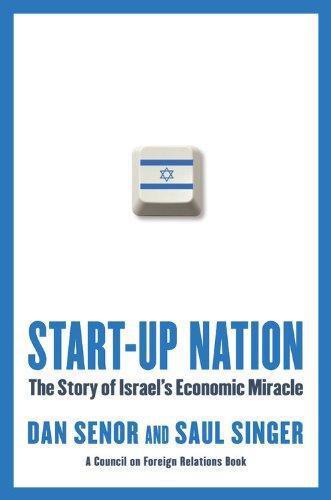
Start-Up Nation: The Story of Israel's Economic Miracle
by
Dan Senor
and
Saul Singer
Published 3 Nov 2009
The financial crisis, after all, was triggered by the collapse of real estate prices, which had been inflated by reckless bank lending and cheap credit. In other words, global prosperity had rested on a speculative bubble, not on the productivity increases that economists agree are the foundation of sustainable economic growth. According to the pioneering work of Nobel Prize winner Robert Solow, technological innovation is the ultimate source of productivity and growth.22 It’s the only proven way for economies to consistently get ahead—especially innovation born by start-up companies. Recent Census Bureau data show that most of the net employment gains in the United States between 1980 and 2005 came from firms younger than five years old.
…
New York: HarperCollins, 2006. Scott, Bruce R., and Srinivas Ramdas Sumder. “Austin, Texas: Building a High-Tech Economy.” Harvard Business School Case 799-038, October 1998. Case Library, Harvard Business Publishing. Singer, Saul. “Superpower in Silicon Wadi.” Jerusalem Post, June 19, 1998. Solow, Robert M. “Growth Theory and After.” Nobel Prize lecture, December 8, 1987. http://nobelprize.org/nobel_prizes/economics/lau reates/1987/solow-lecture.html. Snook, Scott A., Leslie J. Freeman, and L. Jeffrey Norwalk. “Friendly Fire.” Harvard Business School Case 404-083, January 2004. Case Library, Harvard Business Publishing.

The Journey of Humanity: The Origins of Wealth and Inequality
by
Oded Galor
Published 22 Mar 2022
Nonetheless, this chain of proximate causes does not shed light on the roots of the disparity. It simply directs us to a more fundamental question: Why does the production process in certain countries benefit from more skilled workers and more sophisticated technologies? Rusty Tools Previous attempts to understand economic growth, like that of Nobel Prize-winning economist Robert Solow, focused on the importance of the accumulation of physical capital – straw baskets, rakes, tractors and other machines – to economic growth. Suppose that a couple harvests enough wheat to bake a few dozen loaves of bread a week. They use some of these loaves to feed their family and sell the remainder at the village market.
…
A B C D E F G H I J K L M N O P Q R S T U V W X Y Z A Abbasid Caliphate (750–1258), 176, 184 abortion, 87–8 Aeneid (Virgil), 59 aeroplanes, 111 Africa agriculture in, 21, 179–80, 188–9 colonialism in, 157, 158, 187 diversity in, 220–32 emigration from, 127 fertility rates in, 112 Homo sapiens emergence in, 5, 18–20, 30, 119, 120, 124, 218–32, 221, 222, 237 income per capita in, 106 industrialisation in, 241 institutions in, 157, 187 livestock in, 179–80 living standards in, 7 malaria in, 180 marriage in, 87 Neolithic Revolution in, 202, 203, 204, 207 poverty in, 113 slave trade in, 173–4, 187 trade in, 136 trust in, 173–4 tsetse flies, 180 African Americans, 130–31, 155, 156, 215–17 Afrobarometer 173–4 Age of Enlightenment (c.1637–1800), 27, 58, 66, 170–71, 182, 212 agriculture climate and, 13, 15, 20, 21, 25, 155, 181, 186–7, 193–5, 203–4 comparative advantage in, 181, 211–12, 237 cooperation and, 168–9 diseases and, 8, 180 education and, 77, 81–3, 109, 140 future orientation and, 187–90, 213 gender roles and, 191–2 Green Revolution, 111, 117 hydraulic hypothesis, 184 innovations in, 61, 64, 181 institutions and, 208–10 irrigation, 22, 23, 120, 141–2, 160, 168, 184, 190 labour productivity, 131–2 livestock, 179–80, 203 Neolithic Revolution, see Neolithic Revolution soil and, 8, 21, 30, 141, 155, 186, 187, 191, 198, 204, 209, 236 Akkadian Empire (c.2334–2154 BCE), 23 algebra, 69 altitude, 51 American Civil War (1861–5), 62 Amsterdam, Netherlands, 40 Anatolia, 23, 40, 206 Angola, 154 antibiotics, 111 Aquinas, Thomas, 163 Arabian Nights, 59 Arctic region, 195 Argentina, 77, 154 Arkwright, Richard, 59, 72 Arrow, Kenneth, 172 art, 20, 22, 58, 62, 120, 216 Asia agriculture in, 188, 192 East–West orientation, 203 fertility rates in, 112 income per capita in, 106 industrialisation in, 241 living standards in, 7 marriage in, 87 Neolithic Revolution in, 202, 203 trade in, 136 see also Middle East Assyrian Empire (2500–609 BCE), 40 Athens, 40 Atlantic triangular trade, 136 Australia, 49, 106, 153, 154, 157 Austronesians, 206–7 automobiles, 61, 97, 101, 107, 111 Aztec civilisation, 154, 205 B Bab-el-Mandeb Strait, 19 Babylonian Empire (1895–539 BCE), 40 Bandy, Robert, 217 Banfield, Edward, 172 Bantu people, 207 Battle of the Books, The (Swift), 169 Belgium, 37, 64, 65, 72, 75, 138 Bell, Alexander Graham, 104 Berry, Charles ‘Chuck’, 216 Bessemer, Henry, 60 bicycles, 61 bifurcation theory, 46 Bill of Rights (1689), 148 biodiversity, 9, 29, 33, 202, 210, 236 Black Death (1346–53), 34–5, 36, 149–50, 159, 212 Blake, William, 57 Boas, Franz, 168 Bolivia, 131, 154, 229 Boserup, Ester, 191 brain, 14–17 Brazil, 103, 154, 216 Brexit (2016–20), 110 Brown, Moses, 72 Brown University, 1, 72, 239 Buddhism, 63 Byzantine Empire (395–1453), 48 C Caesar, Julius, 184 caloric yields, 189 Calvinism, 164 Cameroon, 207 Canada, 77, 108, 138, 154 canals, 61 Card, Addie, 78 cargo cults, 233–4 Caribbean, 113, 154, 155, 157, 186 Carthage, 23 Cartwright, Edmund, 59 Çatalhöyük, 23, 40 Catholicism, 148, 163, 217 Central America, see under Meso-America central heating, 101 centralised civilisations, 182–7 cephalopods, 14 de Cervantes, Miguel, 59 Chaplin, Charles, 105 Charlemagne, Emperor of the Romans, 184 Charles II, King of England and Scotland, 148 chemistry, 61, 69 Chicago, Illinois, 60 childbirth, 2, 41, 83 children education of, 8, 52–5, 62–83, 88–91, 94–8, 122, 129, 175 labour of, 57, 67, 78–83, 89, 93, 99, 122 mortality of, 2, 29, 41, 57, 89, 98, 121, 127, 128, 180 quantity–quality trade-off, 52–5, 88–91 Chile, 77, 146, 154 China agricultural productivity, 131 Black Death in (c. 1331–54), 34 centralised authority in, 182, 183, 184–6 coal mining in, 181 collectivism in, 190 dictatorship in, 146 diversity and, 226–9 education in, 64, 91 fertility rates in, 91 geography of, 182 growth in, 115 gunpowder, development of, 47, 61 income per capita in, 210 industrial regions, 108 naval exploration, 213 Neolithic Revolution in, 3, 21, 23, 122, 206, 210 New World crops in, 37–9 one-child policy (1979–2015), 112 Opium War, First (1839–42), 61 poverty in, 113, 114 printing, development of, 48 technological development in, 121, 176, 184 writing development of, 24 cholera, 205 Christianity, 63 Catholicism, 148, 163, 217 Protestantism, 63, 90, 163–4, 175, 184, 217 wealth, views on, 163 civil law systems, 154 civil liberties, 127 civilisations, dawn of, 22–5, 208–10, 236 class conflict, 73, 74, 78 climate, 13, 15, 20, 21, 25, 155, 181, 186–7, 193–5, 203–4 climate change, 116–18, 123, 241 coal mining, 59, 60, 71, 181 Cobbett, William, 86 Collapse (Diamond), 33 Colombia, 154 colonialism, 135–7, 140, 147, 152–9, 168, 175, 205, 235 Columbia, 103 Columbian Exchange, 35–9, 94–6, 195 Columbus, Christopher, 35, 47, 182–3 Comenius, John Amos, 65 common law systems, 154 Communist Manifesto, The (Marx and Engels), 62, 73 comparative advantage, 71, 137, 140, 141, 211–12 competition, 182–6, 198 concrete, 61 de Condorcet, Nicolas, 27 Confucianism, 63 consumption vs investment strategy, 188–90, 213 contraception, 85–6, 118 convergent evolution, 14–15 cooking, 15, 17 cooperation, 8, 168–9, 175, 236 Copernicus, Nicolaus, 44 Corinth, 40 Cortés, Hernán, 205 Covid-19 pandemic, 115, 130, 240 Crime and Punishment (Dostoevsky), 59 critical junctures, 212 Crompton, Samuel, 59 Cuba, 216 Cuitláhuac, Emperor of Tenochtitlan, 205 cultural traits, 51–5, 141, 161, 163–77, 187–98, 213 collectivism, 190–91 cooperation, 8, 168–9, 175, 236 entrepreneurship, 52, 72, 165, 182, 184, 193, 197 future orientation, 52, 141, 165, 169–71, 175, 187–90, 197–8, 213, 238 gender equality, see gender equality geography and, 181, 187–90, 208–10, 236 growth and, 169–71 human capital investment, 52–5, 80, 88–91, 94–8, 122, 165, 175 immigration and, 174 individualism, 165, 176, 190–91, 197 institutions and, 182 language and, 195–8 loss aversion, 192–5 prosperity and, 174–7 Protestant ethic, 164–5, 175, 184 racism and, 168 social hierarchies, 197 survival advantage of, 168 technology and, 52–5, 121, 169–70, 176, 231 transmission of, 171 trust, 8, 165, 172–4, 175, 236 Cyprus, 40 D Dante, 59 Darby, Abraham, 60 Darwin, Charles, 27, 50 decline of generations, 169 deindustrialisation, 107–10, 139, 140 democracy, 78, 151–2, 155, 160, 172–3 social capital and, 172–3 demographic dividend, 117 demographic transition, 6, 85–100, 106, 112–18, 175, 176, 198, 240 human capital and, 88–91, 112, 175, 211 Denmark, 104 Detroit, Michigan, 107–8, 217 Diamond, Jared, 21, 29, 32–3, 202, 203 Dickens, Charles, 57 dictatorships, 146 see also extractive institutions diet, 2, 25, 28, 30, 33, 95, 101, 107 diphtheria, 102 diseases, 2, 8, 40, 94, 102, 204–5, 236 agriculture and, 8, 180 Black Death (1346–53), 34–5, 36, 149–50, 159, 212 colonialism and, 156–7 germ theory, 102 immunity to, 51, 205 malaria, 156, 180, 205 sleeping sickness, 180 Spanish flu pandemic (1918–20), 106, 240 vaccinations, 102 diversity, 6, 9, 19, 142, 160, 215–32, 227–8, 237 innovation and, 9, 215–16, 226–30 measurement of, 223–4 origins of, 219–22 prosperity and, 217–18, 222, 224–32 Divine Comedy (Dante), 59 division of labour, 22, 191–2, 196–7, 204 Domino, Fats, 216 Don Quixote (Cervantes), 59 Dostoevsky, Fyodor, 59 double-entry bookkeeping, 65 E East Germany (1949–90), 144 Easter Island, 32, 207 economic ice age, 39–41 Edison, Thomas, 60, 104 Education Act (UK, 1902), 76 education, 8, 52–5, 62–83, 88–98, 99, 118, 129, 238 agriculture and, 77, 81–3, 109, 140 child labour and, 57, 67, 78–83, 122 fertility rates and, 89–98, 99, 113, 122 human capital, see human capital industrialisation and, 64, 67–83, 89, 99, 109, 140 inequality and, 127, 140 investment in, 52–5, 80, 88–91, 94–8, 122, 165 land ownership and, 77, 155 technology and, 62–83, 99, 109, 110, 111–12 trade and, 137 universal public, 73–9 women and, 91, 92, 112 Egypt, 3, 20, 23, 24, 40, 63, 87, 88, 121, 207 Einstein, Albert, 44 electricity, 61, 101, 129, 130, 144 elevators, 61 Elizabeth I, Queen of England, 147 Engels, Friedrich, 27, 62, 73 England, 3, 35, 37, 91, 147 Enlightenment (c.1637–1800), 27, 58, 66, 170–71, 182, 212 entrepreneurship, 52, 72, 165, 182, 184, 197 environmental degradation, 116–18, 241 Epic of Gilgamesh, 59 Ethiopia, 131, 229 Euphrates River, 20, 23, 206, 236 Europe income per capita, 106 industrialisation, see industrialisation institutions see institutions living standards in, 7, 41 Neolithic agriculture in, 35–7, 94–6, 188, 190, 192 Black Death (1346–53), 34–5, 36, 149–50, 159, 212 colonialism, 135–7, 140, 147, 152–9, 168, 175 competition in, 182–3, 184 East–West orientation, 203 economic growth in, 115 education in, 64–7 Enlightenment (c.1637–1800), 27, 58, 66, 170–71, 182, 212 fertility rates in, 85–6, 122 future orientation in, 190, 213 gender equality in, 92 geography of, 184–5 immigration to, 127, 192 Revolution in, 202, 203 New World crops in, 35–7, 94–6, 190 Protestant ethic in, 164–5, 175, 184 technological development in, 58, 61–2, 97, 212 trade in, 135–7 European Marriage Pattern, 86 European Miracle, 182, 213 European Social Survey, 189, 194 European Union (EU), 110 extinctions, 32, 88, 116, 167, 193, 203 extractive vs inclusive institutions, 145–61, 172, 186–7, 198, 209, 236 eye, evolution of, 14, 51 eyeglasses, 64 F Factory Acts (UK), 80 famines, 29, 40, 102, 193 Irish Famine (1845–9), 37, 96 Faust (Goethe), 59 feedback loops, 17, 48 feminism, 97 Ferdinand II, King of Aragon, 183 Fertile Crescent, 20, 21, 23, 33, 40, 48, 122, 202–4, 206, 210, 214, 226 fertility rates, 6, 85–98, 87, 112, 113, 117–18, 122, 123, 232 trade and, 137–8 feudalism, 62, 73, 147, 149–50, 159, 172 film, 105 financial crisis (2008), 115 Finland, 40 Florence, Italy, 34 food surpluses, 4, 28–41, 85, 94, 95 Ford, Henry, 107 France Black Death in, 34 colonialism, 153, 154 education in, 64, 67, 68, 70–71, 72, 75, 147 fertility rates in, 90 geography of, 185 guilds in, 150 industrialisation in, 109, 110, 138 late blight in, 37 life expectancy in, 40 living standards in, 147 Napoleonic Wars (1803–15), 62, 146, 153 Protestantism in, 164 trade in, 137 Fresnes-sur-Escaut, France, 70 future orientation, 52, 141, 165, 168–71, 175, 187–90, 197–8, 213, 236, 238 G Ganges River, 236 Gates, William ‘Bill’, 118 gender equality, 8, 91–4, 99, 106, 118, 122, 236 geography and, 191–2 language and, 196–7 wage gap, 91–4, 99, 122 general relativity, theory of, 44 General Social Survey, 194 Genoa, Republic of (c. 1000–1797), 183 geography, 179–99, 236 competition and, 182–6 future orientation and, 187–90, 197–8, 213 gender equality and, 191–2 individualism in, 190–91 institutions and, 181, 182, 186–7, 207, 208–10 language and, 195–8 loss aversion and, 192–5 Neolithic Revolution and, 203–4, 208–10, 212–14 geometry, 69 germ theory, 102 Germany, 64, 67, 75, 93, 110, 112, 137, 138, 164, 197 glass, 61 global warming, 116–18, 123 globalisation, 115, 137, 235 Godwin, William, 27 Goethe, Johann Wolfgang von, 59 Goldin, Claudia, 111 grass analogy, 140–42 Great Depression (1929–39), 106, 115, 240 Great Fire of London (1666), 150 Great Migration (1916–70), 215 Great Pyramid, Giza, 24 Greece, 3, 18, 23, 40, 48, 58, 63, 88, 121, 160, 170, 213 Green Revolution, 111, 117 Greenland, 33, 49 guilds, 150 gunpowder, 47, 61 Guns, Germs and Steel (Diamond), 21 Gutenberg, Johannes, 48–9, 64, 104 H Habsburg Empire (1282–1918), 173 Hamburg, Germany, 34 Hamlet (Shakespeare), 59 hands, evolution of, 17 Hargreaves, James, 59 Hawaii, 48 head starts, 29, 34, 48, 146, 181, 185, 201–2, 204, 206, 210–12, 236–7 agricultural comparative advantage and, 181, 211–12, 237 Hegel, Georg Wilhelm Friedrich, 9 Henry IV, King of France, 147 Henry VII King of England, 183 hierarchical societies, 98, 172, 197, 207, 208–10 high-yield crops, 111, 190, 213 Hill, Rowland, 104 Hine, Lewis, 78 Hobbes, Thomas, 2 Hofstede, Geert, 188 Holy Roman Empire (800–1806), 165, 172, 173 Homo erectus, 18 Homo technologicus, 119 Hong Kong, 154 hookworm, 90 hot-air balloons, 61 Huayna Capac, Incan Emperor, 205 Hugo, Victor, 59, 62 human capital, 6, 52–5, 66–73, 88–91, 93, 103, 111–12, 232 child labour and, 80, 81, 83, 122 colonialism and, 158 demographic transition and, 88–91, 112, 175, 232 dictatorships and, 146 industrialisation and, 66–73, 74, 76, 80, 81, 83, 109, 110, 140, 211 investment in, 52–5, 80, 88–91, 94–8, 122, 165, 175 resource curse and, 181 technology and, 62–83, 99, 109, 110, 111–12 human rights, 127 humanism, 170 Hume, David, 182 hunter-gatherer societies, 6, 17, 18, 20, 21–2, 30, 33–4, 203, 206, 207 hydraulic hypothesis, 184 I Ice Age, 18, 19 immigration, see migration Inca civilisation, 154, 205 inclusive vs extractive institutions, 145–61, 172, 186–7, 198, 209, 236 income effect, 89, 93 income per capita, 4, 8, 31, 102, 106, 109, 117, 122, 130, 131–5 diversity and, 229 future orientation and, 198 inequality, 131–5, 132, 134, 210 institutions and, 155, 160 trade and, 137 India, 23, 111, 112, 113, 131, 138, 154, 210 individualism, 165, 176, 190–91, 197 Indonesia, 154, 207 Industrial Revolution (1760–1840), see industrialisation industrialisation, 6, 45–7, 55, 57–62, 85, 86, 109, 121, 124, 139, 181, 198–9, 240 agriculture and, 181, 202 decline of, 107–10, 139, 140 education and, 64, 66–83, 89, 99, 109, 110, 140, 211 environment and, 116, 123, 241 institutions and, 147–51 skilled labour and, 67, 71, 137 trade and, 136, 138 inequality, 7, 9–10, 44, 74, 106 climate and, 155, 203–4 colonialism and, 135, 137, 140, 152–9, 235 cultural traits and, 163–77 diversity and, 215–32 education and, 127, 140 geography and, 179–99, 203–4 institutions and, 147–61, 172 legal systems and, 154–5 Neolithic Revolution and, 201–14, 236–7 trade and, 135–40 infant mortality, 2, 29, 41, 57, 89, 98, 121, 127, 128, 180 influenza, 205 innovation, 6, 58, 59, 111 age of growth, 111 climate change and, 118, 123 competition and, 184, 186, 198 cooking and, 17 diversity and, 9, 215–16, 226–30 education and, 53, 91, 99 food surpluses and, 4 industrialisation and, 58, 61–2, 65, 83 institutions and, 144, 161 literacy and, 72 Malthusian epoch, 4, 47, 48 Neolithic Revolution, 23, 120, 204 population size and, 47, 48, 120, 204 institutions, 147–61, 172, 175, 182–7, 198, 204, 213 climate and, 155–6 colonialism and, 152—9, 175 competition and, 182–6 democracy, 151–2, 172 geography and, 181, 182, 186–7, 198, 207, 208–10 technology and, 147–51, 176, 231 International Monetary Fund (IMF), 234 International Organization for Standardization, 111 Internet, 101, 111, 130 Inuit, 49, 195—6 invertebrates, 14 investment vs consumption strategy, 188–90, 213 Ireland, 36–7, 91, 94–6, 175 iron ore, 60 irrigation, 22, 23, 120, 141–2, 160, 168, 184, 190 Isabella I, Queen of Castile, 183 Islam, 63 Israel, 2, 13, 18, 201 Italy, 112, 127, 137, 147, 160, 171–3, 185 J Jacquard, Joseph-Marie, 150 James II and VII, King of England and Scotland, 148, 159 Japan, 62, 77, 112, 146, 210, 213, 226, 233 Jericho, 3, 22–3, 24 Jerusalem, 1–2 Jewish people; Judaism, 63, 88–9, 166–7, 169 João II, King of Portugal, 182–3 Joshua ben Gamla, 166 Judaean Revolt (66–70 CE), 166 Judah ha-Nasi, 166 K Kahneman, Daniel, 192 Kant, Immanuel, 170 Karataş, 40 Kay, John, 59 Kenya, 131 kettle analogy, 43, 46, 100 Keynes, John Maynard, 115 Khirokitia, 40 Khoisan, 207 Kitson, James, 75 Korea, 77, 91, 143, 144, 146, 151, 159, 171, 177, 185, 212, 226, 231 L labour productivity, 131 lactase persistence, 24–5 land ownership of, 77, 155 strategies of use, 188–90 see also agriculture landlocked countries, 181 language, 195–8, 221–2 Latin America, see Central America; South America law of diminishing marginal productivity, 133 Lee, William, 147 legal systems, 154–5 Leo X, Pope, 163 Lerna, 40 life expectancy, 2, 41, 57, 89, 99, 102–3, 103, 114, 121, 127, 128, 130 light bulbs, 60 linguistic niche hypothesis, 196 literacy, 2, 63–8, 66, 70–71, 72, 88, 92, 95, 107, 112 Judaism and, 166, 167 Ottoman Empire and, 184 Protestant Reformation and, 90, 164, 165, 167 literature, 58, 59, 62, 216 livestock, 179–80 living standards, 1–10, 28, 94, 99, 101–7, 114, 121–4, 127–31, 240 diversity and, 217–18, 222, 224–32 hunter-gatherer societies, 30, 33 Malthusian thesis and, 3–5, 6, 28–41, 240 London, England, 34, 150 long-term orientation, see future orientation loss aversion, 192–5 lost paradise myth, 34 Lumière brothers, 105 Luther, Martin, 90, 163 Luxembourg, 160 M Madagascar, 207 Madrid, Spain, 40 Mahabharata, 59 maize, 21, 35, 37–9, 190, 203 malaria, 156, 180, 205 Malthus, Thomas, 3–5, 27–30, 50 Malthusian epoch, 3–5, 6, 27–41, 45–7, 83, 85, 99–100, 102, 112, 151, 156, 232 cultural traits and, 52, 54, 89, 94, 95, 97, 98, 188, 193 economic ice age, 39–41 geography and, 181, 188, 193 population composition, 50, 54 population swings, 6, 33–9 poverty trap, 5, 25, 45, 121, 235, 240 Mamluk Sultanate (1250–1517), 48 manufacturing, 107–10 Marconi, Guglielmo, 104 marriage, 86–7, 87 Marx, Karl, 9, 27, 62, 73, 74, 78 Mary II, King of England and Scotland, 148 Massachusetts, United States, 81 Mayan civilisation, 3, 33, 46, 121, 154 McCloskey, Deirdre, 57–8 McLean, Malcolm, 111 measles, 205 mechanical drawing, 69 Mediterranean Sea, 13, 19, 20, 127, 213 Meiji Restoration (1868), 62, 146, 213 Memphis, Egypt, 23 Meso-America colonialism in, 154, 155, 156, 157, 158, 186–7, 205–6 diversity in, 220–21 emigration from, 127 fertility rates in, 112 income per capita in, 106 industrialisation in, 241 institutions in, 156, 157, 158, 160, 186–7, 236 land ownership in, 77, 155 living conditions in, 7 Malthusian crises in, 33 Neolithic Revolution in, 21, 202, 203, 204, 205–6 population density in, 154, 156 poverty in, 113 trade in, 136 writing, development of, 24 Mesolithic period, 40 Mesopotamia, 23, 24, 40, 59 see also Fertile Crescent Methodism, 164 Mexico, 103, 108, 111, 154, 205 microscopes, 64 middle class, 62, 152 Middle East agriculture in, 20, 21, 23, 192, 202–4, 206, 210, 214 emigration from, 127 hunter-gatherer societies in, 33 life expectancy in, 40 marriage in, 87 Neolithic Revolution in, 20, 21, 23, 40, 48, 122, 192, 202–4, 206, 210, 214 migration, 127, 174, 217, 218 Mill, John Stuart, 27 mining, 59, 60, 61, 70, 71 Misérables, Les (Hugo), 59 mita system, 152–3 Mitochondrial Eve, 18 Modernisation Hypothesis, 152 Mokyr, Joel, 170 Mongol Empire (1206–1368), 34 Morse, Samuel, 60 mosquitoes, 180 moths, 51 Mount Carmel, Israel, 13, 18 multicultural societies, 218 Murasaki Shikibu, 59 music, 58, 215–16 N nanotechnology, 119 Naples, Italy, 40 Napoleon, Emperor of the French, 184 Napoleonic Wars (1803–15), 62, 146, 153 Native Americans, 33, 155 Natufian culture (13,000–9500 BCE), 20 Nea Nikomedeia, 40 Neanderthals, 13 Neolithic Revolution, 6, 9, 20–25, 29–41, 46, 48, 51, 120, 122, 199, 201–14, 210, 236–7 diseases and, 204–5 geography and, 199, 203–4 head start and, 29, 34, 48, 202, 204, 206, 210–12, 236–7 technology and, 29–30, 48, 120, 201–2, 204, 206, 207, 209–12 Netherlands, 37, 40, 64, 65, 75, 147, 148, 164, 213 New Guinea, 21, 207 New World crops, 35–9, 94–6, 195 New York City, 23, 60, 61, 217 New Zealand, 106, 153, 154, 157, 207 Newcomen, Thomas, 59 Nigeria, 207 Nile River, 18, 20, 23, 206, 207, 236 North America, 7, 41, 58, 62, 98 colonialism in, 37, 153, 154, 155, 157, 158 economic growth in, 115 fertility rates in, 85 industrialisation, 60, 72, 107, 241 institutions in, 153, 154, 155, 157, 158, 160, 175 land ownership in, 77, 155 Malthusian crises in, 33 Neolithic Revolution in, 202, 203, 204 technological development in, 58, 61–2 North Korea, 143, 144, 146, 151, 159, 171, 177, 212, 231 North, Douglass, 145 Norway, 104 nuclear energy, 44, 111 numeracy, 63, 67, 88 nurturing strategy, 53 O obesity, 171, 198 Oceania, 7, 32, 87, 105, 202, 203, 207 Ohalo II site, Israel, 201 oil crisis (1973), 115 Opium War, First (1839–42), 61 opportunity cost, 89, 93 Ottoman Empire (1299–1922), 1–2, 64, 173, 182, 183–4 Out of Africa hypothesis, 5, 18–20, 30, 119, 120, 124, 218–32, 221, 222, 237 outsourcing, 115 Owen, Robert, 75 P Pakistan, 111 Palmer, Robert, 215 paper, 61 Paraguay, 103 Paris, France, 34, 40, 150 Pasteur, Louis, 102 Paul the Apostle, 163 Pawtucket, Rhode Island, 72 pendulum clocks, 64 per capita income, see income per capita Perry, Matthew, 62 Persia, 48, 63, 121, 213 Peru, 152–3, 205 Pharisees, 166 phase transition, 43–6, 50, 83, 98, 99–100, 122, 151 Philippines, 207 phonographs, 104 Pickford, Mary, 105 Pitcairn Islands, 33 Pizarro, Francisco, 205 Plato, 9 Pleistocene period, 19 ploughing, 191–2 pneumonia, 205 politeness distinctions, 197 political extremism, 106 political fragmentation, 182–7, 207 pollution, 116–18 Polynesia, 32, 48 population, 46–55, 47 composition of, 50–55 demographic transition, 6, 85–100, 106, 112–18, 175 diseases and, 204–5 diversity of, 9, 142, 160, 177, 214, 215–32, 237 institutions and, 208 labour and, 34–5 Malthusian thesis, 3–5, 6, 28–41, 46, 50, 156 technology and, 5, 29–30, 31, 47–55, 89, 120–24, 156, 179, 181, 202, 211 unified growth theory, 46–55 Portugal, 38, 153, 154, 182–3 positive feedback loops, 17, 48 postal services, 104 potatoes, 36–7, 94–6 poverty, 113–14, 114 poverty trap, 5, 25, 45, 121, 235, 240 Presley, Elvis, 216 printing, 48–9, 64–5, 104, 183–4, 213 production lines, 61 property rights, 92, 144–6, 148, 154, 155, 167, 197, 198, 204, 234 Protestantism, 217 cultural traits, 164–5, 175, 184 Reformation (1517–1648), 63, 90, 163–4, 184 proximate vs ultimate factors, 9, 140–42, 198 Prussia (1525–1918), 68–9, 72, 90, 146, 153, 165 Puritans, 175 Putnam, Robert, 172 Pygmies, 207 Q Qing Empire (1636–1912), 61 Quakers, 175 quantity–quality trade-off, 52–5, 88–91 quantum mechanics, 44 quasi-natural historical experiments, 38–9, 70, 90 Quebec, 54 R racism, 106, 168, 198, 215, 216, 217 radio, 101, 104–5, 111 Rational Optimist, The (Ridley), 216 Red Sea, 19 Reformation (1517–1648), 63, 90, 163 refrigerators, 101 Renaissance (c. 1400–1600), 64, 170 resource curse, 181 Ricardo, David, 27, 144 rice, 190 Ridley, Matt, 216 Roberts, Richard, 80 rock ’n’ roll music, 215–16 Rockefeller Sanitary Commission, 90 Rome, ancient, 1–2, 40, 46, 63, 88, 121, 166, 170, 212 Rome, city of, 23 Roosevelt, Franklin, 217 Royal African Company, 148 rule of law, 144, 186, 204 running water, 101 Russian Empire (1721–1917), 73, 77 Russian Revolution (1917), 73 Rust Belt, 108, 110 S Sadducees, 166 Sahara Desert, 21, 179, 204, 214, 236 Sámi, 195–6 Scandinavia, 185, 211 science, 20, 22, 58, 69, 75, 120, 216 Scotland, 175 Scramble for Africa (1884–1914), 158 Sea of Galilee, 201 serial founder effect, 219–22 Seven Years War (1756–63), 154 sewerage, 101 Shakespeare, William, 59 Shimon ben Shetach, 166 Siberia, 236 silk, 81 Silk Road, 34 Sinai Peninsula, 18 Singapore, 146, 154 skin pigmentation, 51 skyscrapers, 60, 61 Slater, Samuel, 72 slavery, 8, 106, 136, 148–9, 154, 155, 168, 198, 236 sleeping sickness, 180 smallpox, 96, 102, 205 Smith, Adam, 144 smoking, 198 social capital, 172–3, 175 social cohesion, 9, 160, 167, 175, 186, 197, 218, 226, 229–31, 234, 237 social hierarchies, 98, 172, 197, 207, 208–10 soil, 8, 21, 30, 141, 155, 186, 187, 191, 198, 204, 209, 236 Solow, Robert, 132–3 Song Empire (960–1279), 176, 184 South America agricultural productivity in, 131 colonialism in, 154, 156, 157, 158, 186–7, 205 diversity in, 220–21 emigration from, 127 fertility rates in, 112 geography of, 186–7 income per capita in, 106 industrialisation in, 241 institutions in, 154, 156, 157, 158, 160, 186–7 land ownership in, 77, 155 living standards in, 7 Neolithic Revolution in, 202, 203, 204, 205–6 population density in, 154, 156 poverty in, 113 trade in, 136 South East Asia, 19, 20, 21, 131, 180, 184, 202 South Korea, 77, 91, 144, 146, 151, 159, 171, 177, 210, 212, 231 Soviet Union (1922–91), 59 Spaichi, Hans, 150 Spain, 40, 148–9, 152–3, 154, 183, 185, 205 Spanish flu pandemic (1918–20), 106, 240 Sputnik 1 launch (1957), 59 squirrels, 1, 239 Sri Lanka, 103 state formation, 208–10 steam engines, 59, 60, 70–71, 97 steam locomotives, 60, 97 steel, 60, 61 Stockholm, Sweden, 97–8 subsistence, 1, 4–5, 20, 32, 33, 36–7, 39, 94–6 substitution effect, 89, 93 Sumer (c. 4500–1900 BCE), 23, 24, 59 Sweden, 40, 93, 97–8, 104, 137, 138, 160 Swift, Jonathan, 169 Switzerland, 72, 104, 138, 160, 164, 185 T Taiwan, 77, 146, 206 Tale of Genji, The (Shikibu), 59 Tanna, Vanuatu, 233–4, 237–8 Tasmania, 49 taxation, 175, 208, 209, 211, 234 technology, 3, 20, 22, 24, 25, 111–12, 120–24, 147, 240 accelerations, 58–62 agricultural comparative advantage and, 181, 211–12, 237 competition and, 182–6 cultural traits and, 52–5, 121, 169–70, 176, 231 diversity and, 215–16, 226–30 education and, 62–83, 99, 109, 110, 111–12 hands, evolution of, 17 head starts, 29, 34, 48, 146, 181, 185, 201–2, 204, 206, 210–12, 236–7 institutions and, 147–51, 176, 231 living standards and, 104 Neolithic Revolution and, 29–30, 48, 120, 201–2, 204, 206, 207, 209–12 population and, 5, 29–30, 31, 47–55, 89, 120–24, 156, 179, 181, 202, 211 regressions in, 49 Tel Aswad, Syria, 201 Tel Jericho, West Bank, 201 telegraph, 60, 104 telephones, 104 telescopes, 64 television, 101, 111 textiles, 72, 79, 80, 93, 138, 147 Theory of Everything, 44 theory of general relativity, 44 thrifty gene hypothesis, 171 Tigris River, 20, 23, 206, 236 Titanic, 105 toilets, 101 Tonga, 48 trade, 135–40, 144, 185, 235 fertility rates and, 137–8 geography and, 181, 185 Transcaucasia, 21 Trump, Donald, 109–10 trust, 8, 165, 172–4, 175, 236 tsetse flies, 180 Turkey, 23, 40, 210 Tversky, Amos, 192 typhus, 37 U Uganda, 131 ultimate vs proximate factors, 9, 140–42, 198 unified growth theory, 44–55 United Kingdom Brexit (2016–20), 110 child labour in, 80–81 colonialism, 61, 138, 147, 153–5 education in, 67–8, 71–2, 75–6, 78, 91, 96–7 fertility rates in, 91, 83, 97 gender wage gap in, 93 geography of, 185 income per capita in, 210 industrial decline in, 108, 110 industrialisation in, 59, 67–8, 71–2, 75, 96–7, 138, 147, 148, 181 institutions in, 147–51, 154–5, 159 literacy in, 65 Neolithic Revolution in, 210 Opium War, First (1839–42), 61 postal service in, 104 Protestantism in, 164 trade in, 136–7 United Nations, 13 United States African Americans, 130–31, 155, 156, 215–17 agricultural productivity, 131 Apollo program (1961–72), 59 child labour in, 78, 81–3 Civil War (1861–5), 62 education in, 75, 77, 90 fertility rates in, 85, 92, 93 future orientation, 190 gender wage gap in, 93 Great Migration (1916–70), 215 hookworm in, 90 immigration to, 127, 192, 217 income per capita in, 106 industrial decline in, 107–8, 109–10 industrialisation in, 60–61, 67, 69, 71, 72, 138 infant mortality in, 130–31 institutions in, 155, 157, 175 land ownership in, 77 life expectancy in, 130 living standards in, 101, 103, 105, 106, 130 Pacific War (1941–5), 233 Ur, 23 urbanisation, 149, 153, 167, 211–12, 237 Uruguay, 77 Uruk, 23 V vaccinations, 102 Vanuatu, 48, 233–4, 237–8 Venice, Republic of (697–1797), 183 vertebrates, 14 Vietnam, 146 Vikings, 47 Virgil, 59 vitamin D, 51 Voltaire, 154 W wages, 39, 40 Black Death and, 34–5, 36, 149 fertility rates and, 89, 93 women, 91–4, 99, 122 Wallace, Alfred Russel, 27 War of the Worlds, The (Wells), 105 war, 39, 102, 123, 149, 154 washing machines, 101 Washington Consensus, 234 Watt, James, 59 Weber, Max, 164 welfare state, 74 Wells, Herbert George, 105 Wesley, John, 164 wheat, 21, 23, 28, 34, 36, 40, 94, 111, 133, 136, 190, 201, 202, 203 whooping cough, 102 Why Nations Fail (Acemoglu and Robinson), 145–6 William III and II, King of England and Scotland, 148, 159 Wittfogel, Karl, 184 Wizard of Oz, The (1939 film), 105 women childbirth, 2, 41, 83 education of, 91, 92, 112 gender wage gap, 91–4, 99, 122 woodwork, 61 World Bank, 112, 113, 234 World Values Survey, 189, 192, 194 World War I (1914–18), 105, 106, 136, 240 World War II (1939–45), 106, 115, 233, 240 writing, 24, 59 Y Yangtze River, 122, 185, 236 yellow fever, 156 Z Zealots, 166 A B C D E F G H I J K L M N O P Q R S T U V W X Y Z About the Author Oded Galor is Herbert H.
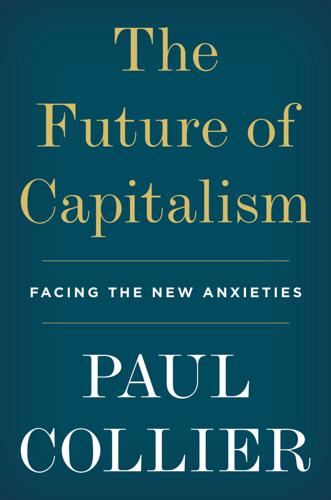
The Future of Capitalism: Facing the New Anxieties
by
Paul Collier
Published 4 Dec 2018
Not only is the scramble for them probably inflicting damage on the people who are scrambling, but its sheer momentum may blind people to the irreversible damage they can do to their own lives. Putting it all together: how can the gains of agglomeration be taxed? As a general idea, taxing economic rents is now being recognized as wise. The most influential recent advocate is Robert Solow, Nobel Laureate and the founder of the theory of economic growth, who has argued that economic rents have increased, and that taxation should be shifted to them and away from earned income. With this reassurance, I will now bring the two blocks of argument together. Taxing the gains from agglomeration is a smart policy on grounds both of ethics and efficiency.
…
To locate a specific entry, please use your ebook reader’s search tools. 3G mobile phone network, 88 Abedi, Salman, 212, 213 abortion, 99, 102 AfD (Alternative for Germany), 5 Africa, 8, 110–11, 192, 193 capital flight, 208 HIV sufferers in, 120–21 need for modern firms, 37 and World Bank/IMF, 118† youth’s hope of escape to Europe, 121 African Americans, 13 Akerlof, George, 18, 34, 35, 50–51 Amazon, 87, 91, 146, 147 anger management programmes, 160 Apple, 148 asymmetric information, 88, 90, 185 auction theory, 146–7, 148 Bank of England, 39 Bear Stearns, 71, 75, 86 belief systems and belonging, 34, 40–41, 42, 53–6, 165, 211–15 CEO compensation committees, 77–8 Clark’s ‘family culture’, 107–8 the ethical family, 97–8, 99–105, 108, 109, 210 formation through narratives, 34, 40–41, 42, 53–6, 165, 211–15 GM-Toyota comparisons, 72–4 and ISIS, 42 Johnson & Johnson’s Credo, 39–40, 40*, 41, 72, 74*, 79 and leadership, 41–2, 43, 95 of personal fulfilment, 28, 99, 100–101, 102, 103, 108–9, 213 polarization within polities, 38, 63, 202–5 and schools, 165 Theory of Signalling, 41, 43, 53, 63, 95 and trust, 27, 29*, 48, 53–4, 55–6, 59, 63, 73–4, 79, 94–5, 210 see also belonging, narrative of; reciprocity value-based echo-chambers, 38, 61–2, 64–5, 212, 215 see also nationalism belonging, narrative of absent from Utilitarian discourse, 16, 59, 66–7, 210–11 avoided by politicians, 66–7, 68, 211, 215 as a basic drive, 27, 31, 42–3, 65, 66 and belief systems, 34, 40–41, 42, 53–6, 211–15 in Bhutan, 37† civil society networks/groups, 180–81 and ‘common knowledge’, 32–3, 34, 54, 55, 66, 212 families as natural units for, 32, 97–8, 104 heyday of the ethical state, 49, 68, 114 and home ownership, 68, 181–2, 184 and ISIS, 42, 212, 213 and language, 32, 33, 54, 57 and mutual regard/reciprocity, 25, 40–41, 49, 53–6, 67, 68, 98, 181, 182, 210–11, 212–13 place-based identity, 51–6, 65–8, 211–14, 215 and purposive action, 68, 98, 114, 211, 212, 213 and salient identity, 51–6 Bennett, Alan, The History Boys, 7* Bentham, Jeremy, 9–10, 12, 13 Berlusconi, Silvio, 14 Besley, Tim, 18–19, 35 Betts, Alex, 27 BHS, 80, 172 Bhutan, 37†, 63 Biafra, 58 Bitcoin, 37–8, 193 Blackpool, 4 Bonhoeffer, Dietrich, Letters and Papers from Prison, 108 The Bottom Billion (Collier), 27 Brazil, 58 Brexit vote (June 2016), 5, 125, 131, 196, 215 British Academy, 7 British Motor Corporation, 74 Brooks, David, The Road to Character, 108 Buiter, Willem, 186 Bush, George W., 120–21 business zones, 150 ‘Butskellism’, 49* Cadbury, 77 Cameron, David, 205 Canada, 22 capitalism competition, 21, 25, 56, 85, 86 ‘creative destruction’ concept, 21 current failings of, 4–5, 17, 25, 42, 45–6, 48, 201, 212–13 and decline of social trust, 5, 45–6, 48, 55, 59, 69 as essential for prosperity, 4–5, 18, 20, 25, 201 and families, 37 first mover advantage, 148 and greed, 10, 19, 25–7, 28, 31, 42, 58, 69, 70†, 81, 95 and Marx’s alienation, 17–18 and oppositional identities, 56, 74 vested interests, 85, 86, 135–6, 207 see also firms Catalan secession movement, 58 causality, narrative of, 33, 34 CDC Group, 122, 149* Chaucer, Geoffrey, The Canterbury Tales, 129 Chicago, University of, 166 childhood adoption, 110–11 children in ‘care’, 104, 105, 110, 111, 157 children ‘reared by wolves’, 31–2 cognitive development, 105–6, 170, 175–6 fostering, 104, 105, 111 identity acquisition, 32 impact of parental unemployment, 160–61 learning of norms, 33, 35, 107–8 non-cognitive development, 105, 163, 169–70, 171–3, 174, 175–6 ‘rights of the child’ concept, 103–4 in single-parent families, 101, 102, 104–5, 155, 160 trusted mentors, 169–70 see also family China, 118–19, 149, 203 Chira, Susan, 52–3 Chirac, Jacques, 14, 120–21 Christian Democratic parties, 5, 14 Citigroup, 186 Clark, Gregory, The Son Also Rises, 106–8 Clarke, Ken, 206 class divide assortative mating among new elite, 99–100, 154, 188–9 author’s proposed policies, 19–20, 21, 183–4, 187–8, 190, 207–8 and breadth of social networks, 169 and Brexit vote, 5, 196 and cognitive development, 105–6 divergence dynamic, 7, 18, 48, 98–108, 154–61, 170–71, 172–80, 181–90 ‘elite’ attitudes to less-well educated, 4, 5, 12, 16, 53, 59, 60–61, 63 and family life, 20, 98, 99–106, 157–62 and fracture to skill-based identities, 3–5, 51–6, 78 and home ownership, 68, 181, 182–3 need for socially mixed schools, 164–5 and non-cognitive development, 105, 163, 169–70, 171–3, 174, 175–6 and parental hothousing, 100, 101, 105–6 post-school skills development, 170–76 pre-emptive support for stressed families, 20, 155, 157–60, 161–3, 208 and reading in pre-teens, 167–9 and recent populist insurgencies, 5 retirement insecurities, 179–80 and two-parent families, 155–6, 157 unravelling of shared identity, 15, 50, 51–6, 57*, 58–61, 63, 215 see also white working class climate change, 44, 67, 119 Clinton, Hillary, 5, 9, 203–4 coalition government, UK (2010–15), 206 cognitive behavioral therapy, 160 Cold War, 113, 114, 116 end of, 5–6, 115, 203 Colombia, 120 communism, 32, 36–7, 85–6 communitarian values care, 9, 11, 12, 16, 29, 31, 42, 116 fairness, 11, 12, 14, 16, 29, 31, 34, 43, 116, 132–3 hierarchy, 11, 12, 16, 38–9, 43, 99–100 left’s abandonment of, 16, 214* liberty, 11, 12, 16, 42 loyalty, 11, 12, 16, 29, 31, 34, 42–3, 116 new vanguard’s abandonment of, 9, 11–13, 14–15, 16, 17, 49–50, 113, 116–18, 121, 214 post-war settlement, 8–9, 49, 113–16, 122 and reciprocal obligations, 8–9, 11–12, 13, 14, 19, 33, 34, 40–41, 48–9, 201, 212–15 roots in nineteenth-century co-operatives, 8, 13, 14, 201 sanctity, 11, 16, 42–3 Smith and Hume, 21–2† values and reason, 29–30, 43–4 see also belonging, narrative of; obligation, narrative of; reciprocity; social democracy Companies Act, UK, 82 comparative advantage, 20, 120, 192, 194 Confederation of British Industry (CBI), 79 conservatism, 30, 36 Conservative Party, 14, 49, 205, 206 contraception, 98–9, 102 co-operative movement, 8, 13, 14, 201 Corbyn, Jeremy, 202, 204–5 Crosland, Anthony, The Future of Socialism, 17, 18, 19 Cuban Missile Crisis (1962), 114 debutante balls, 188 Denmark, 63, 178, 214* Descartes, Rene, 31 Detroit, 128, 129, 144 Deutsche Bank, 78, 185 development banks, 149–50 Development Corporations Act (1981), 150 Dickens, Charles, Bleak House, 108 digital networks detachment of narratives from place, 38, 61–2 economies of scale, 86–7 global e-utilities, 37, 38, 86–7, 89–90, 91 social media, 27, 61, 87, 173, 207, 215 value-based echo-chambers, 38, 61–2, 64–5, 212, 215 Draghi, Mario, 153 Dundee Project, 161–2 Dutch Antilles, 193 East Asia, 147, 192 eBay, 87 economic man, 10, 19, 25, 26–7, 31, 34–5, 196, 209, 210, 215 economic rent theory, 19, 91, 133–9, 140–44, 186–8, 192, 195, 207 education and collapse of social democracy, 50, 52, 53, 54, 55, 59, 63 and empathy, 12 and European identity, 57* expansion of universities, 99–100, 127 and growth of the middle class, 100 inequality in spending per pupil, 167 mis-ranking of cognitive and non-cognitive training, 174–6 need for socially mixed schools, 164–5 post-school skills development, 170–76 pre-school, 105–6, 163–4 quality of teaching, 165–6 reading in pre-teens, 167–9 and shocks to norms of ethical family, 98, 99–105 symbols of cognitive privilege, 175 teaching methods, 166–7 vocational education, 171–6 zero-sum aspects of success, 189 electoral systems, 206 Emerging Market economies, 129, 130–31 empires, age of, 113 The Enigma of Reason (Mercier and Sperber), 29 enlightened self-interest, 33, 40*, 97–8, 101, 109, 112, 113, 114, 117, 184, 213 Enron, 80 ethnicity, 3, 20, 56, 62, 64, 65, 211 Europe Christian Democrats in, 5, 14 class divides, 3, 4, 5, 125 decline in social trust, 45 and knowledge industries, 192 metropolitan-provincial divides, 3, 4, 125 and migration, 121, 197 and shared identity, 57–8, 64, 66, 125 social democracy in, 8–9, 49, 50 European Central Bank, 153 European Commission, 57 European Investment Bank, 149 European Union (EU, formerly EEC), 66, 67, 114, 115, 116, 117 Brexit vote (June 2016), 5, 125, 131, 196, 215 Eurozone crisis, 153 public policy as predominantly national, 212 universities in, 170 evolutionary theory, 31, 33†, 35–6, 66 externalities, 145–6 Facebook, 87 Fairbairn, Carolyn, 79 fake news, 33–4 family, 19 African norms, 110–11 benefits for single parents, 160 Clark’s ‘family culture’, 107–8 entitled individual vs family obligation, 99–103, 104–6, 108–9, 210 equality within, 39, 154 erosion of mutual obligations, 101–2, 210 identity acquisition, 32 ideologies hostile to, 36–7 impact of unemployment/poverty, 4, 7, 160–61 importance of, 36, 37 and increased longevity, 110, 161 in-kind support for parenting, 161 nuclear dynastic family, 102, 110, 154 one-parent families, 101, 102, 104–5, 155, 160 parental hothousing, 100, 101, 105–6 post-1945 ethical family, 97–8, 99–105, 108, 210 pressures on young parents, 159–60, 161–3 and public policy, 21, 154–5, 157–70, 171–3, 177, 209 and reciprocity, 97–8, 101, 102 shocks to post-1945 norms, 98–105 shrinking of extended family, 101–2, 109–10, 161 social maternalism concept, 154–5, 157–8, 190 two-parent families as preferable, 155–6, 157 see also childhood; marriage Farage, Nigel, 202 fascism, 6, 13*, 47, 113 Federalist papers, 82 feminism, 13, 99 Fillon, François, 204 financial crisis, global (2008–9), 4, 34, 71, 160 no bankers sent to gaol for, 95–6 financial sector, 77–9, 80–81, 83–5 asymmetric information, 88, 185 co-ordination role, 145–6 economies of scale, 87 localized past of, 84, 146 toxic rivalries in, 189 trading in financial assets, 78–9, 84, 184–5, 186, 187 Finland, 63 firms, 19, 21, 69 CEO pay, 77–8, 79, 80–81 competition, 21, 25, 56, 85, 86 control/accountability of, 75–81, 82–5 cultures of good corporate behaviour, 94–5 demutualization in UK, 83, 84 deteriorating behaviour of, 18, 69, 78, 80–81 economies of scale, 17–18, 37, 86–7, 88–91, 126–7, 144–5, 146–7 ethical, 70–71, 172, 209–10 and ethical citizens, 93–4, 95, 96 failure/bankruptcy of, 70, 71, 72, 74, 75–6 flattening of hierarchies in, 39 Friedman’s profit nostrum, 69–70, 71, 76, 78–9, 210 global e-utilities, 37, 38, 86–7, 89–90, 91 ideologies hostile to, 37, 81 low productivity-low cost business model, 173–4 ‘maximising of shareholder value’, 69–70, 76, 79, 82–3 ‘mutuals’, 83 need for bankslaughter crime, 95–6 new network features, 86–7 policing the public interest, 93–4 public dislike of, 69, 95–6 public interest representation on boards, 92–3 regulation of, 87–90, 174 reward linked to short-term performance, 77, 78–81 sense of purpose, 39–40, 41, 70–75, 80–81, 93–4, 96 shareholder control of, 76–7, 79, 80, 82–3 societal role of, 81–2, 92–3, 96, 209–10 utility services, 86, 89, 90 worker interests on boards, 83, 84–5 Fisher, Stephen, 196* Five Star, 125 Ford, 70, 71 France, 7, 63, 67, 114 écoles maternelles in, 164 labour market in, 176, 189 pensions policy, 180 presidential election (2017), 5, 9, 204 universities in, 170 working week reduced in, 189 Frederiksen, Mette, 214* Friedman, Milton, 15, 69–70, 71, 76 The Full Monty (film), 7, 129 G20 group, 118 G7 group, 118 G8 group, 194 Ganesh, Janan, 125 Geldof, Bob, 169 General Agreement on Tariffs and Trade (GATT), 114, 115, 116–17 General Motors (GM), 72, 73–4, 75, 86, 172 geographic divide, 3, 16, 18, 19, 215 author’s proposed policies, 19, 207 and Brexit vote, 125, 196 broken cities, 4, 7, 19, 48, 125, 129–30, 147–9 business zones, 150 co-ordination problem over new clusters, 145–50, 207 decline of provincial cities, 4, 7, 19, 48, 125, 129–30, 131, 144–5 economic forces driving, 126–30 and education spending, 167 first mover disadvantage, 148–9 ideological responses, 130–32 investment promotion agencies, 150–51 and local universities, 151–2 and metropolitan disdain, 125 need for political commitment, 153 as recent and reversible, 152–3 regenerating provincial cities, 19, 142, 144–50 and spending per school pupil, 167 widening of since 1980, 125 George, Henry, 133–6, 141 Germany 2017 election, 5, 205 local banks in, 146 Nazi era, 57 and oppositional identities, 56–7 oversight of firms in, 76 post-war industrial relations policy, 94–5 and post-war settlement, 114 re-emergence of far right, 5 rights of refugees in, 14 ‘social market economy’, 49 TVET in, 171–2, 174, 175 vereine (civil society groups), 181 worker interests on boards, 84–5 global divide, 7–8, 20, 59–60, 191–8, 208 globalization, 4, 18, 20, 126–7, 128, 129, 130–31, 191–8 Goldman Sachs, 70†, 83–4, 94 Google, 87 Great Depression (1930s), 114 Green, Sir Philip, 80 Grillo, Beppe, 202 ‘Grimm and Co’, Rotherham, 168–9 Gunning, Jan Willem, 165 Haidt, Jonathan, 11–12, 14, 16, 28, 29, 132–3 Haiti, 208 Halifax Building Society, 8, 84 Hamon, Benoît, 9, 204 Harvard-MIT, 7, 152 Hershey, 77 HIV sufferers in poor countries, 120–21 Hofer, Norbert, 202 Hollande, Francois, 9, 204 Hoover, 148 housing market, 181–4 buy-to-let, 182, 183, 184 and lawyers, 187 mortgages, 84, 176, 182, 183–4 proposed stock transfer from landlords to tenants, 184 Hume, David, 14, 21, 21–2†, 29 Huxley, Aldous, Brave New World (1932), 5 Iceland, 63 Identity Economics, 50–56, 65–7 ideologies based on hatred of ‘other’ part of society, 43, 56, 213, 214 ‘end of history’ triumphalism, 6, 43–4 hostile to families, 36–7 hostile to firms, 37, 81 hostile to the state, 37–8 and housing policy, 183 and migration, 198 New Right, 14–15, 26, 81, 129 norms of care and equality, 116, 132–3 polarization of politics, 38, 63, 202–5 pragmatic eschewal of, 17, 18, 21, 22, 29–30 and principle of reason, 9, 13, 14, 15, 21, 43 Rawlsian vanguard, 13–14, 30, 49–50, 53, 67, 112, 113, 201, 202, 203, 214 return of left-right confrontation, 5, 6, 81, 202–5 and rights, 12–14, 44, 112 seduction of, 6 and twentieth century’s catastrophes, 5–6, 22 views on an ethical world, 112 see also Marxism; rights ideology; Utilitarianism IFC (International Finance Corporation), 122 Imperial Chemical Industries (ICI), 69–70, 75 India, 118–19 individualism entitled individual vs family obligation, 99–103, 104–6, 108–9, 210 fulfilment through personal achievement, 28, 99, 100–101, 102, 103, 108–9, 213 New Right embrace of, 14–15, 53, 81, 214–15 as rampant in recent decades, 19, 214–15 reciprocity contrasted with, 44–5 and withering of spatial community, 61–2 industrial revolution, 8, 126 inequality and assortative mating among new elite, 99–100, 154, 188–9 and divergence dynamic, 7, 18, 48, 98–108, 154–61, 170–71, 172–80, 181–90 and financial sector, 185 and geographic divide, 3, 7–8, 20, 125 global divide, 7–8, 20, 59–60, 191–8, 208 persistence of, 106–8 Rawls’ disadvantaged groups, 3–4, 13–14, 16, 50, 53, 121, 203–4, 214 and revolt against social democracy, 15–16 rising levels of, 3–5, 106, 125, 181, 190 and Utilitarian calculus, 132 innovation, 185–6, 208 International Monetary Fund (IMF), 114, 117 international relations achievement of post-WW2 leaders, 113–16, 122 building of shared identity, 114–16 core concepts of ethical world, 112, 113–14 erosion of ethical world, 116–18 expansion of post-war ‘clubs’, 116–18, 210 new, multipurpose club needed, 118–19, 122 and patriotism narrative, 67 situation in 1945, 112–13, 122 investment promotion agencies, 150–51 Irish Investment Authority, 151 Islamist terrorism, 42, 212, 213 Italy, 4, 58, 160 James, William, 29* Janesville (US study), 178 Japan, 72–3, 94, 101, 149, 192 John Lewis Partnership, 83, 172 Johnson, Robert Wood, 39–40, 72 Johnson & Johnson, 39–40, 41, 72, 74*, 79 Jolie, Angelina, 112 JP Morgan, 71* Juppé, Alain, 204 Kagame, Paul, 22 Kay, John, 82*, 84, 211 Keynes, John Maynard, 115 General Theory (1936), 47 kindergartens, 163 Knausgård, Karl Ove, 173 knowledge revolution, 126, 127–8 Kranton, Rachel, 35, 50–51 Krueger, Anne, 141 Krugman, Paul, 47 labour market flexicurity concept, 178 function of, 176–7 and globalization, 192, 194–6 and immigration, 194, 195, 196 investment in skills, 176–7 job security, 176, 177 and low productivity-low cost business model, 173–4 minimum wage strategies, 147, 174, 176, 180 need for reductions in working hours, 189 need for renewed purpose in work, 190 regulation of, 174, 189 and robotics revolution, 178–9 role of state, 177–8, 189 see also unemployment Labour Party, 49, 206 Marxist take-over of, 9, 204–5 language, 31, 32, 33, 39–40, 54, 57 Larkin, Philip, 99, 156 lawyers, 13–14, 45 Buiter’s three types, 186 and shell companies, 193, 194 surfeit of, 186–7 taxation of private litigation proposal, 187–8 Le Pen, Marine, 5, 63, 125, 202, 204 leadership and belief systems, 41–2, 43, 95 building of shared identity, 39–42, 49, 68, 114–16 changing role of, 39 and flattening of hierarchies, 39 and ISIS, 42 political achievements in post-war period, 113–16, 122 and pragmatist philosophy, 22 and shared purpose in firms, 39–40, 41, 71–5 strategic use of morality, 39–40, 41 transformation of power into authority, 39, 41–2, 57 League of Nations, 116 Lee Kwan Yew, 22, 147 Lehman Brothers, 71*, 76 liberalism, 30 libertarianism, 12–13, 15 New Right failures, 16, 21 Silicon Valley, 37–8 lobbying, 85, 141 local government, 182, 183 London, 3, 125, 127–8, 165–6, 193 impact of Brexit on, 131, 196 migration to, 195–6 Macron, Emmanuel, 67, 204 Manchester terror attack (2017), 212, 213 market economy, 19, 20, 21, 25, 48 and collapse of clusters, 129–30, 144–5 failure over pensions, 180 failure over skill-formation, 173–4 mutual benefit from exchange, 28 market fundamentalists, 147, 150 marriage assortative mating, 35, 99–100, 154, 188–9 cohabitation prior to, 99, 100 as ‘commitment technology’, 109, 155–6 divorce rates, 98, 99, 100–101, 102, 103 and female oppression, 156 religious associations, 109, 156 and rent-seeking, 141 ‘shotgun weddings’, 103 and unemployment, 103 Marxism, 13*, 26, 30, 43, 47, 113, 203, 214 alienation concept, 17–18 and the family, 36–7 late capitalism concept, 6 takeover of Labour Party, 9, 204–5 and ‘useful idiots’, 205* view of the state, 37 Maxwell, Robert, 80 May, Theresa, 205 Mayer, Colin, 18, 70 media celebrities, 6, 112, 204 Mélenchon, Jean-Luc, 5, 202, 204 mental health, 157, 158–9, 162 Mercier, Hugo, 29 meritocratic elites, 3–4, 5, 12–17, 20 Rawlsian vanguard, 13–14, 30, 49–50, 53, 67, 112, 113, 201, 202, 203, 214 Utilitarian vanguard, 9–10, 11–13, 15–16, 18, 52, 53, 59, 66–7, 209 see also Utilitarianism WEIRD (Western, Educated, Industrial, Rich and Developed), 3–4, 12, 14, 16, 17, 20, 116, 121, 133, 214* and white working class, 5, 16 Merkel, Angela, 14, 205 metropolitan areas, 3, 4, 7, 16, 19, 48, 125 co-ordination problem over new clusters, 145–50, 207 economies of agglomeration, 18, 19, 129, 131, 133–44, 195, 196, 207 gains from public goods, 134–5, 138–9 migration to, 195–6 political responses to dominance of, 131–2 scale and specialization in, 126–8, 130, 144–5 and taxation, 131, 132–43, 187, 207 Middle East, 192 Middleton, Kate, 188–9 migration, 121, 194–8, 203 as driven by absolute advantage, 20, 194–5, 208–9 and housing market, 182, 183 Mill, John Stuart, 9–10 minimum wage strategies, 147, 174, 176, 180 Mitchell, Andrew, 188 Mitchell, Edson, 78 modernist architecture, 12 Monarch Airlines, 75 monopolies, natural, 86–7, 88 and asymmetric information, 88, 90 auctioning of rights, 88–9 taxation of, 91–2 utility services, 86, 89, 90 ‘moral hazard’, 179 morality and ethics deriving from values not reason, 27, 28–9, 42–3 and economic man, 10, 19, 25, 26–7, 31, 34–5 and empathy, 12, 27 evolution of ethical norms, 35–6 Haidt’s fundamental values, 11–12, 14, 16, 29, 42–3, 132–3 and market economy, 21, 25, 28, 48 and modern capitalism, 25–6 and new elites, 3–4, 20–21 Adam Smith’s theories, 26–8 use for strategic purposes, 39–40, 41 and Utilitarianism, 9–10, 11, 14, 16, 55, 66–7, 209, 214 motivated reasoning, 28–9, 36, 86, 144, 150, 167 Museveni, President, 121 narratives and childhood mentors, 169–70 and consistency, 41, 67, 81, 96 conveyed by language, 31, 33, 57 detachment from place by e-networks, 38, 61–2 and heyday of social democracy, 49 and identity formation, 32 mis-ranking of cognitive and non-cognitive training, 174–6 moral norms generated from, 33, 97–8 and purposive action, 33–4, 40–41, 42, 68 and schools, 165 of shared identity, 53–6, 81 use of by leaders, 39–42, 43, 49, 80–81 see also belonging, narrative of; obligation, narrative of; purposive action National Health Service (NHS), 49, 159 national identity and citizens-of-the-world agenda, 59–61, 63, 65 contempt of the educated for, 53, 59, 60–61, 63 and distinctive common culture, 37†, 63 established in childhood, 32 esteem from, 51–3 fracture to skill-based identities, 3–5, 51–6, 78 legacy of Second World War, 15, 16 methods of rebuilding, 64, 65–8, 211–15 and new nationalists, 62–3, 67, 203, 204, 205 patriotism narrative, 21, 63, 67, 215 place-based identity, 51–6, 65–8, 211–14, 215 and polarization of society, 54–5 and secession movements, 58 unravelling of shared identity, 15, 50, 51–6, 57*, 58–61, 63, 215 and value identity, 64–5 National Review, 16 nationalism, 34 based on ethnicity or religion, 62–3 capture of national identity notion by, 62, 67, 215 and narratives of hatred, 56, 57, 58–9 and oppositional identities, 56–7, 58–9, 62–3, 68, 215 traditional form of, 62 natural rights concept, 12, 13 Nestlé, 70, 71 Netherlands, 206 networked groups as arena for exchanging obligations, 28 and ‘common knowledge’, 32–3, 34, 54, 55, 66, 212 decline of civil society networks/ groups, 180–81 and early man, 31 evolution of ethical norms, 35–6 exclusion of disruptive narratives, 34 families as, 97–8 leadership’s use of narratives, 39–42, 49 narratives detached from place, 38, 61–2 value-based echo-chambers, 38, 61–2, 64–5, 212, 215 see also family; firms Neustadt, Richard, 39* New York City, 5, 125, 128, 143–4, 193 NGOs, 71, 118, 157–8 ‘niche construction’, 35*, 36* Nigeria, 58 Noble, Diana, 149* Norman, Jesse, 21–2† North Atlantic Treaty Organization (NATO), 114, 115, 116, 117 North Korea, 85 Northern League, Italy, 58 Norway, 63, 206, 208–9 Nozick, Robert, 14–15 obligation, narrative of, 11, 12–13, 16, 19, 29, 33 and collapse of social democracy, 53–6, 210 entitled individual vs family obligation, 99–103, 104–6, 108–9, 210 in ethical world, 112, 113–22 and expansion of post-war ‘clubs’, 117–18, 210 fairness and loyalty instilled by, 34 heyday of the ethical state, 48–9, 68, 196–7 and immigration, 196–7 and leadership, 39, 40–41, 49 ‘oughts’ and ‘wants’, 27, 28, 33, 43 and secession movements, 58 and Adam Smith, 27, 28 see also reciprocity; rescue, duty of oil industry, 192 Organization for Economic Co-operation and Development (OECD), 114–15, 125 Orwell, George, Nineteen Eighty-Four (1949), 5 Oxford university, 7, 70, 100 Paris, 5, 7, 125, 128, 174, 179 patriotism, 21, 63, 67, 215 Pause (NGO), 157–8 pension funds, 76–7, 79–81, 179–80, 185 Pew Research Center, 169 Pinker, Steven, 12* Plato, The Republic, 9, 11, 12, 15, 43 Playboy magazine, 99 political power and holders of economic rent, 135–6, 144 leadership selection systems in UK, 204–5, 206 minimum age for voting, 203 need to restore the centre, 205–7 polarization within polities, 38, 63, 202–5 polities as spatial, 38, 61–2, 65, 68, 211–13 and shared identity, 8, 57–61, 65, 114–16, 211–15 transformation into authority, 41–2, 57–8 trust in government, 4, 5, 48, 59, 210, 211–12 populism, political, 6, 22, 43, 58–9, 202 and geographic divide, 130–31 headless-heart, 30, 60, 112, 119, 121, 122 media celebrities, 6, 112, 204 pragmatism as opposed to, 30 and US presidential election (2016), 5, 203–4 pragmatist philosophy, 6, 9, 19, 21, 21–2†, 46, 201 author’s proposed policies, 19–20, 21, 207–15 limitations of, 30 and Macron in France, 204 and migration, 198 and post-war settlement, 113, 116, 122 and social democracy, 18, 201–2 successful leaders, 22 and taxation, 132, 207 and teaching methods, 166–7 values and reason, 29–30, 43–4 proportional representation, 206 protectionism, 113, 114, 130–31 psychology, social, 16, 54 co-ordination problems, 32–3 esteem’s trumping of money, 174 Haidt’s fundamental values, 11–12, 14, 16, 29, 42–3, 132–3 narratives, 31, 32, 33–4, 38, 39–42, 49, 53–6 norms, 33, 35–6, 39, 42–3, 44, 97–8, 107–8 ‘oughts’ and ‘wants’, 27, 28, 33, 43 personal achievement vs family obligation, 99–103, 104–6, 108–9, 210 ‘theory of mind’, 27, 55 Public Choice Theory, 15–16 public goods, 134–5, 138–9, 186, 202, 213 public ownership, 90 Puigdemont, Carles, 202 purposive action, 18, 21, 25, 26, 34, 40*, 53–4, 68, 112, 211–13 autonomy and responsibility, 38–9 and belonging narrative, 68, 98, 114, 211, 212, 213 in Bhutan, 37† decline in ethical purpose across society, 48 and heyday of social democracy, 47, 49, 114 and narratives, 33–4, 40–41, 42, 68 in workplace, 190 Putnam, Robert, 45–6, 106 Bowling Alone, 181 ‘quality circles’, 72–3 Rajan, Raghuram, 178 Rand, Ayn, 32 rational social woman, 31, 50–51, 196 Rawls, John, 13–14 Reagan, Ronald, 15, 26 Reback, Gary, 90 reciprocity, 9, 19, 31, 212–15 and belonging, 25, 40–41, 49, 53–6, 67, 68, 98, 181, 182, 210–11, 212–13 and collapse of social democracy, 11, 14, 53–6, 58–61, 201, 210 and corporate behaviour, 95 in ethical world, 112, 113–15, 116 and expansion of post-war ‘clubs’, 117–18, 210 fairness and loyalty as supporting, 29, 31, 34 and the family, 97–8, 101, 102 and geographic divide, 125 heyday of the ethical state, 48–9, 68, 96, 196–7, 201 and ISIS, 42 Macron’s patriotism narrative, 67 nineteenth-century co-operatives, 8 rights matched to obligations, 44–5 and three types of narrative, 33, 34, 40–41 transformation of power into authority, 39, 41–2, 57–8 Refuge (Betts and Collier), 27 refugees, 14, 27, 115, 119–20, 213 regulation, 87–90 and globalization, 193–4 of labour market, 174 religion, 56–7, 62–3, 109, 156 religious fundamentalism, 6, 30, 36–7, 212, 213, 215 rent-seeking concept, 140–41, 150, 186, 187–8, 195 rescue, duty of, 40, 54, 119–21, 210, 213 as instrument for ethical imperialism, 117–18, 210 as not matched by rights, 44, 45, 117 and post-war settlement, 113, 115–16 restoring and augmenting autonomy, 121–2 and stressed young families, 163 term defined, 27, 112 value of care as underpinning, 29 retirement pensions, 179–80 rights ideology and corresponding obligations, 44–5 emergence in 1970s, 12–14 human rights lobby, 112, 118, 118* individualism as rampant in recent decades, 19, 214–15 and lawyers, 13–14, 45 Libertarian use of, 12–13, 14–15 natural rights concept, 12, 13 and New Right, 12–13, 14–15, 53 Rawls’ disadvantaged groups, 3–4, 13–14, 16, 50, 53, 112, 121, 203–4, 214 ‘rights of the child’ concept, 103–4 and Utilitarian atate, 12–14 see also individualism Romania, communist, 32, 36 Rotherham, ‘Grimm and Co’, 168–9 rule of law, 138–9, 186 Rwanda, 22 Salmond, Alex, 202 Sandel, Michael, 105 Sanders, Bernie, 9, 64, 202, 203 Sarkozy, Nicolas, 204 Schultz, Martin, 14 Schumpeter, Joseph, 21* Scotland, 58 Seligman, Martin, 108–9 sexual behaviour birth-control pill, 98–9, 102 and class divide, 99, 102, 155–6 concept of sin, 156 and HIV, 121 and stigma, 156–8 sexual orientation, 3, 45 Sheffield, 7, 8, 126, 128–9, 131, 151, 168, 192 shell companies, 193, 194 Shiller, Robert, 34 Sidgwick, Henry, 55 Signalling, Theory of, 41, 43, 53, 63, 95 Silicon Valley, 37–8, 62, 145, 152, 164 Singapore, 22, 147 Slovenia, 58 Smith, Adam, 14, 21, 21–2†, 174 and mutual benefit from exchange, 28 and pursuit of self- interest, 26–7, 40 on reason, 29 The Theory of Moral Sentiments (1759), 27, 28, 174 Wealth of Nations (1776), 26, 28, 174 Smith, Vernon, 28 social democracy ‘Butskellism’, 49* collapse of, 9, 11, 50, 51–6, 116–18, 201–2, 210 communitarian roots, 8–9, 11, 13, 14, 17, 48–9, 201 and group identities, 3–4, 13–14, 51–6 heyday of, 8–9, 15, 17, 47, 48–9, 68, 96, 196–7, 201, 210 and housing, 181–2 influence of Utilitarianism, 9, 10, 14, 16, 18, 49–50, 201, 203, 214 Libertarian challenge, 12–13, 14–15 New Right abandonment of, 14–15, 16, 26, 53 and Public Choice Theory, 15–16 replaced by social paternalism, 11–13, 49–50, 209–10 and rights ideology, 12–14 and secession movements, 58 shared identity harnessed by, 15, 196–7 unravelling of shared identity, 15, 50, 51–6, 57*, 58–61, 63, 215 and Utilitarianism, 214 social maternalism concept, 21, 154–5, 190 free pre-school education, 163–4 mentoring for children, 169–70, 208 support for stressed families, 20, 155, 157–60, 161–3, 208 social media, 27, 61, 87, 173, 207, 215 social paternalism backlash against, 11–13, 15–16 as cavalier about globalization, 20 and child-rearing/family, 105, 110, 154–5, 157, 158, 159, 160, 190, 209 replaces social democracy, 11–13, 49–50, 209–10 ‘rights of the child’ concept, 103–4 and Utilitarian vanguard, 9–10, 11–13, 15–16, 18, 66–7, 209 social services, 159 scrutiny role, 162 Solow, Robert, 141 Soros, George, 15* South Africa, 85 South Asia, 192 South Korea, 129, 130–31 South Sudan, 192 Soviet Union, 114, 115, 116, 203 Spain, 58, 160 specialization, 17–18, 36, 126–8, 130, 144–5, 192 Spence, Michael, 41, 53, 95 Sperber, Dan, 29 St Andrews University, 189 Stanford University, 145, 152 Starbucks, 193 the state, 19 ethical capacities of, 11, 20–21, 48–9 failures in 1930s, 47, 48 ideologies hostile to, 37–8 and pre-school education, 163–4 and prosperity, 37 public policy and job shocks, 177–8 public policy on the family, 21, 154–5, 157–70, 171–3, 177, 209 public-sector and co-ordination problem, 147–8 social maternalism policies, 21, 157, 190 Utilitarian takeover of public policy, 10–12, 13–14, 15–17, 18, 49–50, 113, 201 Stiglitz, Joseph, 56 Stoke-on-Trent, 129 Stonehenge, 64 Sudan, 8 Summers, Larry, 187 Sure Start programme, 164 Sutton, John, 151* Sweden, 178 Switzerland, 175, 206 Tanzania, 193 taxation and corporate globalization, 193, 194 of economic rents, 91–2, 187–8 ethics and efficiency, 132–43 on financial transactions, 187 generational differences in attitudes, 59 Henry George’s Theorem, 133–6, 141 heyday of the ethical state, 49 issues of desert, 132–3, 134–9 and the metropolis, 131, 132–43, 187, 207 and migration, 197 of natural monopolies, 91–2 ‘optimal’, 10 of private litigation in courts, 187–8 and reciprocity, 54, 55, 59 redesign of needed, 19 redistributive, 10, 11, 14, 49, 54, 55, 60, 197 of rents of agglomeration, 19, 132–44, 207 social maternalism policies, 21, 157 substantial decline in top rates, 55 tax havens, 62 Venables-Collier theory, 136–9 Teach First programme, 165–6 technical vocational education and training (TVET), 171–6 technological change, 4 robotics revolution, 178–9 and withering of spatial community, 61–2 see also digital networks telomeres, 155–6 Tepperman, Jonathan, The Fix, 22 Thatcher, Margaret, 15, 26 Thirty Years War, 56–7 Tirole, Jean, 177, 178 Toyota, 72–3, 74, 94, 172 trade unions, 173, 174, 176 Troubled Families Programme (TFP), 162 Trudeau, Pierre, 22 Trump, Donald, 5, 9, 63, 64, 86, 125, 136, 202, 204, 206, 215 Uber, 87 unemployment in 1930s, 47 and collapse of industry, 7, 103, 129, 192 impact on children, 160–61 older workers, 4, 103, 213 retraining schemes, 178 in USA, 160 young people, 4 Unilever, 70, 71 United Kingdom collapse of heavy industry, 7, 103, 129, 192 extreme politics in, 5 and falling life expectancy, 4 financial sector, 80, 83, 84–5 IMF bail-out (1976), 115 local banks in past, 146 northern England, 3, 7, 8, 84, 126, 128–9, 131, 151, 168, 192 shareholder control of firms, 76–7, 79, 80, 82–3 statistics on firms in, 37 universities in, 170, 172, 175* vocational education in, 172, 175† widening of geographic divide, 125 United Nations, 65, 112 ‘Club of 77’, 116 Security Council, 116 UNHCR, 115 United States breakdown of ethical family, 104–5 broken cities in, 129, 130 extreme politics in, 5, 63 and falling life expectancy, 4 financial sector, 83–4, 186 and global e-utilities, 89–90 growth in inequality since 1980, 125 heyday of the ethical state, 49 and knowledge industries, 192 labour market in, 176, 178 local banks in past, 146 oversight of firms in, 76 pessimism in, 5, 45–6 presidential election (2016), 5, 9, 203–4 Public Interest Companies, 93 public policy as predominantly national, 212 ‘rights of the child’ concept in, 103–4 Roosevelt’s New Deal, 47 statistics on firms in, 37 taxation in, 143–4, 144* unemployment in, 160 universities in, 170, 172, 173 weakening of NATO commitment, 117 universities in broken cities, 151–2 in EU countries, 170 expansion of, 99–100, 127 knowledge clusters at, 127, 151–2 low quality vocational courses, 172–3 in UK, 170, 172, 175* in US, 170, 172, 173 urban planning, post-war, 11–12 Utilitarianism, 19, 30, 49–50, 55, 108, 112, 121, 210–11 backlash against, 11–13, 201, 202 belonging as absent from discourse, 16, 59, 66–7, 210–11 care as key value, 12 and consumption, 10, 11, 16, 19–20, 209 equality as key value, 12, 13, 14, 15, 116, 132–3, 214 incorporated into economics, 10–11, 13–14, 16 influence on social democrats, 9, 10, 14, 16, 18, 49–50, 201, 203, 214 origins of, 9–10 paternalistic guardians, 9–10, 11–13, 66–7, 210 takeover of public policy, 10–12, 13–14, 15–17, 18, 49–50, 113, 201 and taxation, 10, 132*, 133 vanguard’s switch of identity salience, 52, 53, 59 Valls, Manuel, 204 Venables, Tony, 18, 136, 191* Venezuela, 120, 214 vested interests, 85–6, 135–6, 165, 166, 207 Volkswagen, 74–5 Walmart, 87 Warsi, Baroness Sayeeda, 65 Wedgwood, Josiah, 129 welfare state, 9, 48–9 unlinked from contributions, 14 well-being and happiness belonging and esteem, 16, 25, 27, 29, 31–3, 34, 42, 51–6, 97–8, 174 entitled individual vs family obligation, 108–9 and financial success, 26, 94 ‘ladder of life’, 25* poverty in Africa, 37 reciprocity as decisive for, 31 Westminster, Duke of, 136 white working class ‘elite’ attitudes to, 4, 5, 16 falling life expectancy, 4, 16 pessimism of, 5 William, Prince, 188–9 Williams, Bernard, 55* Wittgenstein, 62, 63 Wolf, Alison, 52–3, 155 World Bank, 115, 117, 118, 118*, 122 World Food Programme, 115 World Health Organization, 115 World Trade Organization (WTO), 116–17 Yugoslavia, 58 Zingales, Luigi, 178 Zuma, Jacob, 85 Copyright THE FUTURE OF CAPITALISM.
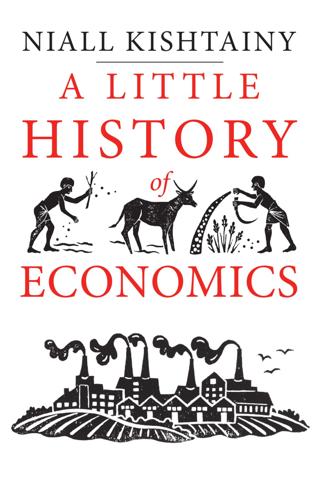
A Little History of Economics
by
Niall Kishtainy
Published 15 Jan 2017
Over time, the economy grows; its capacity to make things increases, and society gets wealthier. Between crises, this is often what happens. Up until the First World War, many of the world’s leading countries grew steadily without huge economic turmoil; after the Second World War a new period of growth dawned. The American economist Robert Solow (b. 1924) is today one of the few economists to have lived through the economic growth that came after the war as well as the Great Depression that came before it. At the end of the war he was discharged from the army and returned to his interrupted education at Harvard University, where he’d been studying sociology and anthropology.
…
(i), (ii) Kerala (India) (i) Keynes, John Maynard (i), (ii), (iii), (iv), (v), (vi) Keynesian theory (i), (ii), (iii) Klemperer, Paul (i) Krugman, Paul (i), (ii) Kydland, Finn (i), (ii) labour (i) in ancient Greece (i) and market clearing (i) women as unpaid (i) labour theory of value (i), (ii) laissez-faire (i) landowners (i), (ii), (iii) Lange, Oskar (i) law of demand (i), (ii) leakage of spending (i) Lehman Brothers (i) leisure class (i) leisured, women as (i) Lenin, Vladimir Ilyich (i), (ii) Lerner, Abba (i) Lewis, Arthur (i) Lincoln, Abraham (i) List, Friedrich (i) loss aversion (i) Lucas, Robert (i), (ii) MacKay, Charles (i) Macmillan, Harold (i) macro/microeconomics (i) Malaysia, and speculators (i) Malthus, Thomas (i), (ii), (iii) Malynes, Gerard de (i), (ii) manufacturing (i), (ii) division of labour (i) see also Industrial Revolution margin (i) marginal costs (i), (ii) marginal principle (i), (ii), (iii) marginal revenue (i) marginal utility (i), (ii) market, the (i) market clearing (i) market design (i) market failure (i), (ii), (iii), (iv) ‘Market for Lemons, The’ (Akerlof) (i) market power (i) markets, currency (i), (ii) Marshall, Alfred (i), (ii), (iii), (iv), (v) Marx, Karl (i), (ii), (iii), (iv), (v), (vi), (vii) Marxism (i) mathematics (i), (ii), (iii) means of production (i) mercantilism (i), (ii) Mesopotamia (i) Mexico, pegged currency (i) micro/macroeconomics (i) Microsoft (i) Midas fallacy (i) minimum wage (i) Minsky, Hyman (i) Minsky moment (i), (ii) Mirabeau, Marquis de (i), (ii), (iii) Mises, Ludwig von (i), (ii), (iii), (iv) mixed economies (i), (ii) Mobutu Sese Seko (i) model villages (i) models (economic) (i), (ii), (iii), (iv) modern and traditional economies (i), (ii) monetarism (i) monetary policy (i), (ii) money (i), (ii), (iii), (iv), (v), (vi) see also coins; currency money illusion (i) money wages (i) moneylending see usury monopolies (i), (ii) monopolistic competition (i), (ii) monopoly, theory of (i) monopoly capitalism (i), (ii), (iii) monopsony (i) moral hazard (i), (ii) multiplier (i) Mun, Thomas (i), (ii), (iii) Muth, John (i) Nash, John (i), (ii) Nash equilibrium (i) national income (i), (ii), (iii), (iv), (v) National System of Political Economy (List) (i) Nelson, Julie (i) neoclassical economics (i) net product (i) Neumann, John von (i) New Christianity, The (Saint-Simon) (i) new classical economics (i) New Harmony (Indiana) (i) New Lanark (Scotland) (i) Nkrumah, Kwame (i), (ii) non-rival good (i) Nordhaus, William (i), (ii) normative economics (i), (ii) Obstfeld, Maurice (i) Occupy movement (i) oligopolies (i) opportunity cost (i), (ii) organ transplant (i) output per person (i) Owen, Robert (i) paper money (i), (ii) Pareto, Vilfredo (i) pareto efficiency (i), (ii) pareto improvement (i) Park Chung-hee (i) partial equilibrium (i) pegged exchange rate (i) perfect competition (i), (ii), (iii), (iv), (v) perfect information (i) periphery (i) phalansteries (i) Phillips, Bill (i) Phillips curve (i), (ii), (iii), (iv), (v), (vi), (vii) physiocracy (i), (ii) Pigou, Arthur Cecil (i), (ii), (iii) Piketty, Thomas (i), (ii), (iii) Plato (i), (ii), (iii) policy discretion (i) Ponzi, Charles (i) Ponzi finance (i) population and food supply (i), (ii), (iii) of women (i) positive economics (i) poverty (i), (ii), (iii), (iv), (v) in Cuba (i) Sen on (i) and utopian thinkers (i) Prebisch, Raúl (i) predicting (i) Prescott, Edward (i), (ii) price wars (i), (ii) primary products (i) prisoners’ dilemma (i) private costs and benefits (i) privatisation (i) productivity (i), (ii), (iii) profit (i), (ii), (iii), (iv) and capitalism (i), (ii) proletariat (i), (ii) property (private) (i), (ii), (iii), (iv), (v) and communism (i), (ii), (iii), (iv) protection (i), (ii), (iii) provisioning (i) public choice theory (i) public goods (i) quantity theory of money (i) Quesnay, François (i) Quincey, Thomas de (i), (ii) racism (i) Rand, Ayn (i) RAND Corporation (i), (ii) rate of return (i), (ii) rational economic man (i), (ii), (iii), (iv), (v) rational expectations (i), (ii), (iii), (iv), (v) real wages (i), (ii), (iii) recession (i) and governments (i), (ii), (iii) Great Recession (i) Keynes on (i), (ii) Mexican (i) redistribution of wealth (i) reference points (i) relative poverty (i) rent on land (i), (ii), (iii) rents/rent-seeking (i) resources (i), (ii) revolution (i), (ii), (iii), (iv) Cuban (i) French (i), (ii), (iii), (iv) Russian (i), (ii) Ricardo, David (i), (ii), (iii) risk aversion (i) Road to Serfdom, The (Hayek) (i) robber barons (i) Robbins, Lionel (i) Robinson, Joan (i) Roman Empire (i) Romer, Paul (i) Rosenstein-Rodan, Paul (i) Roth, Alvin (i), (ii) rule by nature (i) rules of the game (i) Sachs, Jeffrey (i) Saint-Simon, Henri de (i) Samuelson, Paul (i), (ii) savings (i), (ii) and Say’s Law (i) Say’s Law (i) scarcity (i), (ii), (iii), (iv), (v), (vi) Schumpeter, Joseph (i), (ii) sealed bid auction (i) second price auction (i) Second World War (i) securitisation (i) self-fulfilling crises (i) self-interest (i) Sen, Amartya (i), (ii) missing women (i), (ii), (iii) services (i) shading bids (i), (ii) shares (i), (ii), (iii), (iv), (v), (vi) see also stock market Shiller, Robert (i), (ii) signalling (i) in auctions (i) Smith, Adam (i), (ii), (iii), (iv), (v) social costs and benefits (i) Social Insurance and Allied Services (Beveridge) (i) social security (i), (ii) socialism (i), (ii), (iii), (iv), (v) socialist commonwealth (i) Socrates (i) Solow, Robert (i) Soros, George (i), (ii), (iii) South Africa, war with Britain (i) South Korea, and the big push (i) Soviet Union and America (i) and communism (i), (ii) speculation (i) speculative lending (i) Spence, Michael (i) spending government (fiscal policy) (i), (ii), (iii), (iv), (v), (vi), (vii) and recessions (i), (ii) and Say’s Law (i) see also investment stagflation (i), (ii) Stalin, Joseph (i) standard economics (i), (ii), (iii), (iv) Standard Oil (i) Stiglitz, Joseph (i) stock (i) stock market (i), (ii), (iii), (iv), (v) stockbrokers (i) Strassmann, Diana (i), (ii) strategic interaction (i), (ii) strikes (i) subprime loans (i) subsidies (i), (ii) subsistence (i) sumptuary laws (i) supply curve (i) supply and demand (i), (ii), (iii), (iv) and currencies (i) and equilibrium (i), (ii) in recession (i), (ii), (iii) supply-side economics (i) surplus value (i), (ii) Swan, Trevor (i) tariff (i) taxes/taxation (i) and budget deficit (i) carbon (i) and carbon emissions (i) and France (i) and public goods (i) redistribution of wealth (i) and rent-seeking (i) technology as endogenous/exogenous (i) and growth (i) and living standards (i) terms of trade (i) Thailand (i) Thaler, Richard (i) theory (i) Theory of the Leisure Class, The (Veblen) (i) Theory of Monopolistic Competition (Chamberlain) (i) Thompson, William Hale ‘Big Bill’ (i) threat (i) time inconsistency (i), (ii) time intensity (i) Tocqueville, Alexis de (i) totalitarianism (i) trade (i), (ii), (iii) and dependency theory (i) free (i), (ii), (iii) trading permit, carbon (i) traditional and modern economies (i), (ii) transplant, organ (i) Treatise of the Canker of England’s Common Wealth, A (Malynes) (i) Tversky, Amos (i), (ii) underdeveloped countries (i) unemployment in Britain (i) and the government (i) and the Great Depression (i) and information economics (i) and Keynes (i) and market clearing (i) and recession (i) unions (i), (ii) United States of America and free trade (i) and growth of government (i) industrialisation (i) and Latin America (i) Microsoft (i) recession (i), (ii) and the Soviet Union (i) and Standard Oil (i) stock market (i) wealth in (i) women in the labour force (i) unpaid labour, and women (i) usury (i), (ii), (iii) utility (i), (ii), (iii), (iv) utopian thinkers (i), (ii) Vanderbilt, Cornelius (i), (ii) Veblen, Thorstein (i), (ii), (iii) velocity of circulation (i), (ii) Vickrey, William (i) wage, minimum (i) Walras, Léon (i) Waring, Marilyn (i) wealth (i) and Aristotle (i), (ii) and Christianity (i) Piketty on (i) and Plato (i) Smith on (i) Wealth of Nations, The (Smith) (i), (ii) welfare benefits (i), (ii), (iii), (iv) welfare economics (i) Who Pays for the Kids?
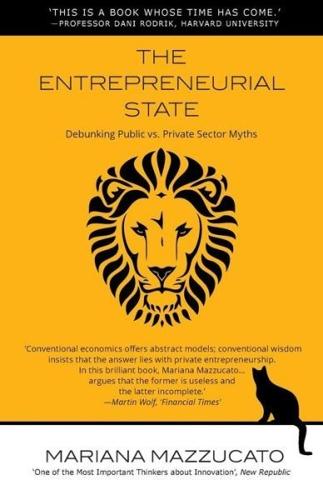
The Entrepreneurial State: Debunking Public vs. Private Sector Myths
by
Mariana Mazzucato
Published 1 Jan 2011
This debate is reflected in politics, where different views about growth are espoused with great vehemence, often ignorant of the underlying theoretical assumptions and origins driving those views. For years, economists have tried to model growth. Neoclassical economics developed its first growth model in the work of Harrod and Domar (Harrod 1939; Domar 1946), but it was Robert Solow who won the Nobel Prize for his growth ‘theory’. In the Solow growth model, growth is modelled through a production function where output (Y) is a function of the quantity of physical capital (K) and human labour (L), ceteris paribus – other things remaining equal. Included in ‘other things’ was technological change.
…
Soviet Union 37, 39; market failure theory applied to 61; as measure of innovation performance 34, 41; myth of business investment requirements 53–5; myth of innovation being about 44, 159–60; as not enough 142; of pharmaceutical companies 25–6, 188; R&D/GDP 52; SEMATECH funding 99; spending differences 42; of struggling OECD countries 41; technological change investments 59; in wind energy projects 144–5; worker tax credit 54 R&D/GDP 52 R&D Magazine 63 redistributional policies 31 Reenen, John van 46 Reinert, Erik 9n3, 38n5, 73 Reinhart, Carmen 17–18 renewable energy credits (RECs) 115n1 Renewable Portfolio Standards 114 ‘repatriation tax holiday’ 175 ‘representative’ agent 60 research 60, 78, 84, 136; see also science rewards, socialization of 156 risk 58–62, 70; see also socialization of risk risk landscape 22–3, 58, 194, 198 risk–reward nexus framework 186 risk–reward relationships: Apple and the US government 167–8; collective vs. private benefit 165–6, 196; corporate success resulting in regional economic misery 176–8; need for functional dynamic in 182–3, 197–8; overview 165–7; State recognition in 12 Robinson, Joan 34 Roche 82 Rock, Arthur 94 Rodrik, Dani 27, 28 Rogoff, Kenneth 17–18 Roland, Alex 98n7 Roosevelt, Franklin D. 6, 74 Royal Radar Establishment (RRE) 101 royalties 188–9 Ruegg, Rosalie 148 Ruttan, Vernon 62–3 Sanofi 69 Schmidt, Horace 92, 92–3; see also Apple Schumpeter, Joseph 10n4, 31, 35, 58 Schumpeterian innovation economics: creative destruction concept in 10, 10n4, 58, 165; extended protection in 189; influence of on BNDES 5; investment role in 31; macro models of 44; ‘systems of innovation’ view of 35–6; theory of 36n4 science 49, 51, 57, 59n1, 69; see also research Seagate 97 Segal, David 170 Semiconductor Manufacturing Technology (SEMATECH) consortium 99 Shapiro, Isaac 170–71, 171n2 share buybacks 25–7, 67, 171, 175 shareholder-value ideology 184, 186 Shiman, Philip 98n7 Shi Zhengrong 141, 152–4 Shockley, William 76 Silicon Valley 20, 63, 78, 95 Silver, Jonathan 129, 154 SIRI 103, 105–6, 109 SITRA, Finnish Innovation Fund 190 small and medium enterprises (SMEs) 10, 45–6, 45n6, 111n13 Small Business Administration (US) 94 small business associations 19 Small Business Innovation Development Act of 1982 79 Small Business Innovation Research (SBIR) (US) 20, 47, 79–81, 80, 188 Small Business Investment Company (SBIC) (US) 94 Smith, Adam 30; see also Adam Smith Institute; Inquiry into the Nature and Causes of the Wealth of Nations, An; ‘Invisible Hand’ socialization of risk and privatization of rewards: as cause of inequity and instability 185; direct or indirect returns of 187–91; framework for change of 185–7; income-contingent loans and equity 189–90; in the innovation economy 3; ‘innovation fund’ creation 189; IPR 189; mapping innovative labour into division of rewards 184–5; in pharmaceutical development 181; in public–private partnerships 27; skewed reality of risk and reward 181–5 social vs. private returns on investment 3–4 solar power: see wind and solar power Solow, Robert M. 33–4 Solyndra 129–32, 151, 154–5, 162; see also clean technology; ‘No More Solyndras Act’ Something Ventured, Something Gained (documentary) 78 Sony 108 Soppe, Birgit 146 South Korea 40, 61, 120–21 Soviet Union 37–9, 39, 76 Spain 120n4, 121, 121, 157 Spectrawatt 130n11, 162 spillovers 194 spinoff business model 76 SPINTRONICS 97, 97n5 Sputnik launch 76 Stanford Research Institute (SRI) 105–6; see also SIRI State: administrative role of 6, 12; attracting talent 12; capitalintensive investment by 27; ‘crowding in’ of 5–6, 8; ‘Developmental State’ 10, 37–8, 37–8n5, 40, 68; ‘directionality’ provided by 32n2; ‘dynamizing in’ 8; economic role of 1, 29; flexibility of 195–6; funding: see individual US agencies and departments; industrial directives of 21; as leading entrepreneurial force 193; market creation by 62, 167; organizational dynamics consideration 197; performance indicators lacking for 194; as private sector partner 5; response to criticism 19; responsibilities of 13; scope of endeavours of 18–19, 195; sectors funded by 63, 83, 196; targeted catch-up policies of 40; views of 9; see also ‘entrepreneurial’ State; ‘picking winners’ State development banks 2–3, 5, 122, 137–40, 189–91; see also Brazilian Development Bank (BNDES); China Development Bank (CDB); KfW (German Development Bank) stock market 49–50 Strategic Computing Initiative (SCI) 98–9 strategic management 197 Stumpe, Bent 101 Sullivan, Martin A. 174 SunPower 151 Suntech of China 152–5, 152n5 supply-side policies 83, 113–15, 159 sustainability 117, 119, 123, 195; see also green industrial revolution Swanson, Richard 151 Sweden 121 ‘systems of innovation’ approach: defined 36; foundation of 35–7; market failure approach vs. 9–10, 61–2; need for 22; regional 39; State role in 74; see also innovation; innovation ecosystems; Schumpeterian innovation economics ‘systems’ perspective 196 tariffs 108, 157, 157n6; see also feed-in tariffs Tassey, Gregory 32 tax avoidance: by Apple 11, 12, 171–5, 188; corporate 173–5, 187; ‘tax gap’ 187, 187n1 tax breaks 45–7 tax credits: energy 114, 138; impact of on R&D 28, 52–4; and R&D 111n13; and R&E 110; wind and solar power 126n8, 145, 149 tax cuts 10, 19, 23, 54, 69 taxes: antidumping tariffs 108; business as dependent on 69; ‘carbon tax’ 114; Citizens for Tax Justice 174n5; citizens unawareness of uses of 166; global avoidance schemes 174, 174n5; incentives to biotech firms 81; innovation systems not supported by 187–8; insensitivity of investment to 30n1; IRS 529 plans 111, 111n15; ‘patent box’ policy 51–2; policies impacting SMEs 45; policy 51; ‘repatriation tax holiday’ 175; State return from 165; US tax code 174; see also private vs. social returns; risk–reward nexus framework Taxol 188 Tea Party movement 17 technology: causing creative destruction 58; commissioning of advances in 54; core enabler technologies of Apple 95; dual-use 97; and growth 33–4; impact of regions on national performance 39; interagency collaborations in 74; origins of Apple products 109; revolutions 125, 126; SIRI 103, 105–6; State leadership of strategy for 40; unique situations in 59; see also computer field; wind and solar power technology commercialized: from capacitive sensing to click-wheels 99–101, 100n9, 103; cellular 102, 104, 109; from click-wheels to multi-touch screens 102–3; digital signal processing (DSP) 109; GPS 105; GPTs 62; LCD 107–8; lithium-ion battery 108; resistive touch-screens 101; silicon ICs impact on 98; thin-film transistors (TFTs) 107–8; ‘zero-emission’ electric vehicles 108 technology policy 75 Technology Reinvestment Program (TRP) 97 TFP of India vs. 46 TFTs (thin-film transistors) 107–8 Thomas, Patrick 148 ‘trade wars’ 122, 131, 157 ‘traitorous eight’, the 76 Tulum, Oner: on biopharmaceutical industry 67, 69, 82; NIH spending data compilation of 25, 69; on orphan drugs 81–2 United Kingdom (UK): approach to green initiatives 124–6; BBC 16; BERD (business expenditure on R&D) in 24; Big Society theme of 15–16; clean technology investment by 120; energy strategies of 116; government energy R&D spending 121, 121; green revolution in 120; Medical Research Council (MRC) 20, 67; outsourcing in 16; public R&D spending in 61; R&D/GDP 52; sector specialties of 42; SME government support 45; SME performance in 46 United States: Air Force 98, 104, 105; American Energy Innovation Council (AEIC) 26; Apple’s risk– reward relationship with 167–8; Army 107; competitiveness decline in 176; energy policy 158; energy strategies of 116, 137; funding and innovation in 52; funding sources for basic research R&D in 61; funding sources for R&D in 60, 60–61, 60n2; green revolution in 120; ‘hidden Developmental State’ in 38, 38n5; innovation threatened in 24; systems of innovation in 37; tax code 174; tax system 172; ‘trade wars’ of 122, 131, 157; types of venture capital successes in 49; undermining of innovation in 53; wind capacity of 143; see also taxes; specific agencies and departments of University of Southern California 77–8 UNIX 104 USSR: see Soviet Union US Windpower (later Kenetech) 147 Valentine, Don 94 Vallas, Steven P. 67–8 value: extraction 26, 42, 162; measures of 34 Venrock 94 Vensys Energiesysteme 149 venture capital: in Europe 53; Europe’s lag attributed to lack of 20; exit opportunities 48, 67, 81, 130, 138; failure of 107; government stimulation of 116; impatience of 129–32, 146n2; limited role of 131, 138; myth of as risk loving 47–50, 142, 161–2; and NASDAQ’s coevolution 50; presenting as lead risk taker 183; public vs. private 19, 47; short-termist approach of 108, 127; timing of investment by 23; Venrock 94; see also private sector venture capital sector investment: clean technology 161; green revolution 127–8, 128n9; in Solyndra 130; subsectors of within clean energy 128 venture capital stages of investment 47, 48; early stage and seed funding awards by 80; risk of loss in 48 Vestas: Denmark producing 143; DoE research influence on 148; early years of 147; patents purchased by 145; policy responses by 125, 137; rugged designs of 146 vision: Apple’s 93, 94, 99–100; ‘green’ 116, 120, 123; lack of 107; in nanotechnology 83–4; State’s 21–4, 58, 62–4 Warburg Pincus 50 Washington Consensus 40 Washington Post 57 Wayne, Ronald 89, 89n1; see also Apple welfare state institutions 31 Westerman, Wayne 102–3 Westinghouse 107 wind and solar power: clean technology in crisis 158–9; collective failure in 163; decline of US firms in 144, 144n1; grid parity in 141; networks of learning in 146n2; R&D myth in 159–60; small being beautiful myth in 160–61; solar bankruptcies 153–6; symbiotic innovation ecosystems in 162–3; venture capital myth in 161–2; from ‘Wind Rush’ to rise of China’s wind power sector 144–50; withdrawal of government support 149; see also specific corporations; clean technology wind and solar power markets: competition, innovation and market size 156–8; disrupting existing markets 161; global market for 143; growth opportunities in 156–7; growth powered by crisis 142–4; and manufacturing of 144, 146–7, 153 wind and solar power policies: California’s tax programme 147; fostering development 144–5; providing incentives 149–51; subsidies 148–9, 152; tax credits 145, 149 wind and solar power technology: aerodynamics of 148; computer use in 147–8; C-Si 129, 130n11, 151–2, 158; Denmark’s Gedser design 145; oil company role in 161n8; origins of solar technologies 150–53; remote power applications 150; research behind 148–9; see also clean technology wind energy R&D projects 144–6 Witty, Andrew 66–7 World Trade Organization (WTO) 40 World War II 74 Wozniak, Steve 89, 89n1, 94; see also Apple Wuxi-Guolian 152 Wuxi Suntech 153 Xerox 107 Xerox PARC 24 Zond Corporation 147–8 Table of Contents Halftitle Page Title Page Copyright Dedication Epigraph Contents List of Tables and Figures List of Acronyms Acknowledgements Foreword by Carlota Perez Introduction: Do Something Different A Discursive Battle Beyond Fixing Failures From ‘Crowding In’ to ‘Dynamizing In’ Images Matter Structure of the Book Chapter 1: From Crisis Ideology to the Division of Innovative Labour And in the Eurozone State Picking Winners vs.
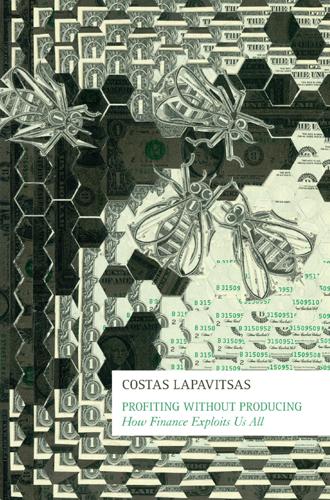
Profiting Without Producing: How Finance Exploits Us All
by
Costas Lapavitsas
Published 14 Aug 2013
The weakness of productivity growth underscores the relatively poor results of GDP growth during the period, shown in figure 2. Looking more closely at figure 6, from the middle of the 1970s to the middle of the 1990s, productivity growth was broadly flat or declining, including in the US, the leading country in introducing the new technologies of the era.14 Robert Solow observed that ‘You can see the computer age everywhere but in the productivity statistics’, and his quip became the ‘Solow Paradox’ characteristic of the new era.15 After 1995, however, significant technological improvements in the microprocessor industry and faster productivity growth in general seemed to materialize for the US economy.
…
There is an intractable problem here posed by new technology: if, say, it is considered that computer ‘output’ has risen because computers have become more powerful and have more functions (reflected in hedonic indices) then it follows that wholesale and retail output would also be considered to have risen. But then the output of the service sector would appear to have increased even if retailers have continued to do exactly what they have always done – selling a given number of boxes of computers per period. 15 Robert Solow, ‘We’d Better Watch Out’, review of Manufacturing Matters, by Stephen S. Cohen and John Zysman, New York Times, 12 July 1987. 16 Leading representatives of the former were Stephen Oliner, Daniel Sichel, Dale Jorgenson, Kevin Stiroh, Mun S. Ho, and William Nordhaus; on the opposite side stood mostly Robert J.
…
Skott, Peter, and Soon Ryoo, ‘Macroeconomic Implications of Financialization’, Cambridge Journal of Economics 32:6, 2008, pp. 827–62. Smaldone, William, Rudolf Hilferding, Dekalb, IL: Northern Illinois University Press, 1998. Smith, Adam, The Wealth of Nations, ed. Edwin E. Cannan, London: Methuen, 1904 (1776). Solow, Robert, ‘We’d Better Watch Out’, review of Manufacturing Matters, by Stephen S. Cohen and John Zysman, New York Times, 12 July 1987. Spufford, Peter, Money and Its Use in Mediaeval Europe, Cambridge: Cambridge University Press, 1988. Spufford, Peter, Power and Profit: The Merchant in Medieval Europe, New York: Thames & Hudson, 2002.
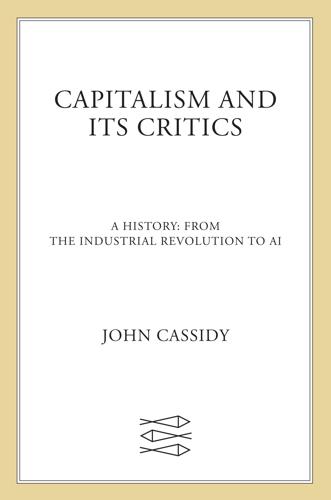
Capitalism and Its Critics: A History: From the Industrial Revolution to AI
by
John Cassidy
Published 12 May 2025
Reviewing the tome, Robinson hailed it as an interesting and important work, albeit one that was “extremely hard to follow.” In some parts of Cambridge, Massachusetts, Harrod’s model (and a similar one derived by Evsey Domar, a Russian-American economist who taught at Harvard) received a cooler reception. One of the skeptics was Robert Solow, a mathematically adept young MIT professor who was a protégé of Paul Samuelson. To Solow, Harrod’s depiction of capitalism as chronically unstable didn’t ring true. “An expedition from Mars arriving on Earth having read this literature would have expected to find only the wreckage of a capitalism that had shaken itself to pieces long ago,” he later recounted.
…
The report’s “imposing apparatus of computer technology and systems jargon conceals a kind of intellectual Rube Goldberg device—one which takes arbitrary assumptions, shakes them up and comes out with arbitrary conclusions that have the ring of science,” Peter Passell, Marc Roberts, and Leonard Ross wrote in The New York Times Book Review.22 In the journal Challenge, under the ironic headline “Is the End of the World at Hand?,” MIT’s own Robert Solow—the same Solow who had spent a decade and a half tussling with Joan Robinson—said “the Doomsday Models are bad science and therefore bad guides to public policy.”23 The most serious problem with their simulations was that they ignored the market price system and technical progress, Solow argued.
…
In October 1973, OPEC introduced its oil embargo on Western countries, and crude oil prices tripled. High energy prices led to significant conservation efforts in advanced countries, including the development of more fuel-efficient motor vehicles and the allocation of more research dollars to renewable energy. On this point, at least, Robert Solow had been proved right: the price system and the profit motive did lead to changes in technology and behavior. Homeowners and businesses started to insulate their buildings, and the rising cost of gasoline prompted the Detroit carmakers to retire their most egregious gas guzzlers, at least temporarily.

Economists and the Powerful
by
Norbert Haring
,
Norbert H. Ring
and
Niall Douglas
Published 30 Sep 2012
Any attempt to model this transformation inevitably points to fundamental problems of the neoclassical theory of capital and income distribution (Keen 2001/2008). MARKET POWER 159 The 1960s and ’70s saw a protracted fight over neoclassical capital theory, the so-called Cambridge Capital Controversy. Neoclassical economists, including Paul Samuelson and Robert Solow from MIT (the Massachusetts Institute of Technology), defended neoclassical capital theory against an attack from economists working in Cambridge, England, chiefly Joan Robinson and Piero Sraffa. The English economists attacked the neoclassical notion that the (relative) price of the two factors of production, labor and capital, determines how much of each is used.
…
Morgan (bank) 54, 59, 70, 87, 105 labor xii, 4–6, 8, 10, 18, 33–4, 137, 139, 141, 143, 146, 153–5, 157–9, 163–5, 167–73, 176, 178–83, 189–94, 197, 200, 203–5 legitimacy 16, 25 Lehman Brothers 17, 90, 94, 96 Leviathan (government) 210 liberty 8, 25, 207 liquidity xi, 66, 103–5, 112 London School of Economics 20, 27, 40, 144 Long-Term Capital Management (LCTM) 66, 92 macroeconomics 14 Madoff, Bernard 217 managerial power approach 119, 120, 124, 126, 132 marginal cost 142–4 marginal product 156–8, 189, 192 marginal rate of substitution 14 marginal utility 5–6, 13, 214 marginalism 1, 4–5 market forces x, 126, 169, 171–2, 180–82 market power xii, 154, 161, 164, 170, 203 Marshall, Alfred 5, 10, 16, 188, 193 Marx, Karl 5, 188, 198 Marxism 5–6, 10, 165 mass production 7, 15, 143, 161 Mazur, Paul 17–18 median voter theory 212, 214 Menger, Carl 5, 12 mercantilism 2–3 Merrill Lynch 90, 112, 133 Methuen Treaty 3 military vii, 3, 19–20, 22, 25, 45, 116, 208, 215 minimum wage 140–41, 154, 158, 183, 188–9, 192–7, 203–4 Mises, Ludwig von 12 monopoly viii, 9, 18, 26, 41, 86–7, 97–9, 142, 145–7, 149–54, 161, 171, 177 monopsony 153–4 Moody’s (ratings agency) 97–9 Morgan Stanley 49, 63, 90, 217 mutual fund 56, 58, 64–6, 68, 97, 134 NASDAQ 55 natural selection 167 negotiating power 160, 179, 205 net present value 159 new welfare economics 14, 19 news 53, 56, 114, 122, 143, 220 Nobel Prize 7, 17, 20, 22–4, 26, 44, 170, 186 Organisation for Economic Cooperation and Development (OECD) 20, 30, 41, 187, 189, 203 Olson, Mancur 23–4 optimal contracting 109, 119–20, 124, 126–7, 132 ordinalism 1, 11, 17, 21 outrage constraint 119–21, 124, 126–7, 136 outsourcing 165, 177, 184–6 over the counter (OTC) (derivatives) 90 Paretian welfare economics 14 Pareto, Vilfredo 12–13, 21, 157 INDEX pay-for-performance 95, 107–8, 111–12, 115, 119, 121–2, 126, 128, 139 pensions viii, 36, 39, 57, 58, 98, 113, 140, 134 perfect competition (economic) x, xii, 141–2, 145–6, 168, 187, 193 perfectly substitutable (economically) x performance-related pay 109, 111; see also pay-for-performance perverse incentive 113, 133 Pigou, Arthur C. 10, 188, 192–3, 198 Pimco (fund) 96, 215 Ponzi (scheme) 95, 217 poststructuralism 8 power viii–xii, 1–4, 8–9, 18, 25, 27–32, 42, 145, 147, 153–4, 159–61, 164, 166–8, 171, 174, 177–9, 184–7, 193, 198, 203–4 corporate 107–40 economic xii, 1, 32, 45, 46, 54, 208, 219 financial 47–106 informational 207–20 managerial (see managerial power approach) political ix, xii, 32, 86, 208, 210, 219 principal–agent theory 107 prisoner’s dilemma 38 private equity 68, 136 productivity (economic) ix, 10, 32, 34–6, 48, 79–80, 101, 137, 141, 146–7, 156, 171, 173, 176, 178, 180, 186, 189, 192, 194, 196, 201, 204–5 professions, the viii, 1, 25 profit xii, 2, 7, 43, 46, 54–6, 59, 61–2, 65, 68, 76, 82–3, 85, 91, 97, 99– 100, 105, 109–10, 112–13, 118, 127–8, 130, 135, 137, 141–3, 145–50, 153, 155, 157, 159–60, 164, 166, 171, 173, 175, 177–9, 184, 186, 197, 205, 215–16 profitability 49, 53, 60, 74, 84, 95, 97, 100, 132–3, 139, 143, 151, 183, 191, 194 245 profit margin 3, 195 profit maximization 120, 143, 147, 149–51 property rights 22, 215 public relations (PR) 15–16 quadratic weighting (inflation) 33 rating agencies x, 97–100 rational choice movement 1, 21–3, 25, 214 raw materials 2–3, 184 redistribution 10, 12, 19, 39, 161, 186, 210, 213 representative agent 14 reserve requirement 82–4, 103–4 risk management 94 Robbins, Lionel 12–13, 17, 21, 210–11 Robinson, Joan 146, 159–60, 208 Ross, Edward 9–10, 18, 38 Rothschild, Mayer Amschel 72–3, 75 S&P 500 110, 120 Samuelson, Paul 159–60 Sarbanes–Oxley Act 92, 99, 123 Schumpeter, Joseph 19 Second (Workingmen’s) International 5 Second World War 2, 18–19, 30, 79–80 Securities and Exchange Commission (SEC) 52–3, 69, 90, 93–4, 97–8, 115, 123–4, 130, 217 securitization 112 selfishness 7, 38, 40, 108, 167, 170, 211, 213 shareholder franchise 133 shareholders xii, 93, 102, 107–10, 112–15, 120–22, 128, 131, 133–6, 138 SMD assumptions/conditions 7, 14 Smith, Adam 3–4, 42, 155, 163, 188, 198 social norms 38, 108, 117, 120, 135, 138–9, 164 social security 36, 39, 188, 198–9 246 ECONOMISTS AND THE POWERFUL socialism 5–6 , 9–10, 19, 24, 27, 193 Solow, Robert 159 Sonnenschein–Mantel–Debreu theorem: see SMD assumptions/ conditions Soros, George 47, 67, 105 spring loading (stock options) 122 Squam Lake Group 44 Sraffa, Piero 141, 144, 159–60 staggered board (of directors) 126, 134 stagnation 32, 101, 218 stakeholders xii, 107–8, 117, 136–7 Standard & Poor’s (rating agency) 97, 99 Stanford University 10, 18, 93 stock option backdating 122 stock options 43, 67, 92–3, 96, 108–10, 112–13, 120, 122–5, 128, 131–3 structural reforms 188–9 subprime xi, 43, 47, 69–71, 82, 88, 90, 95, 97–8, 101, 105, 108, 111, 113, 120, 133, 136, 205, 217 supply and demand 108, 167 sustainability ix, 13 Syracuse University 9 takeover 70, 102, 113, 126, 135 tariffs 3, 16, 84 TARP: see Troubled Asset Relief Program (TARP) taxation 83, 109, 139, 214 Thatcher, Margaret 40 “too big to fail” 83, 105 transaction costs 7, 74, 168–9 transportation 7, 41, 73, 118, 143, 144–5, 169, 186 treasury secretary xi, 69, 71, 87, 90, 96 Troubled Asset Relief Program (TARP) 70 UBS (bank) 105 unemployment 170, 180–81, 188–9, 197–200, 203–5, 213 university 9, 16–17, 20–21, 27, 41, 101, 117, 142 University of Chicago: see Chicago, University of value added 31, 136 Wall Street xi, 38, 42, 54, 63, 67, 69–70, 88, 92–3, 96, 99, 105, 122–3 Walras, Leon 5–7 Warwick Commission 100–101, 103 Washington Mutual (bank) 95–6 wealth viii, xii, 2, 9, 42, 45, 69, 71–2, 96, 101, 110–11, 120, 135, 207–10 welfare economics 14–15 welfarism 10–11 Wieser, Friedrich von 12–13 worker representatives 137 World Bank 27–8, 31 Worldcom 52, 61, 92, 98, 110, 113, 128, 132 Yale University 10, 13

Who Rules the World?
by
Noam Chomsky
Their “Plutonomy Stock Basket,” as they call it, has far outperformed the world index of developed markets since 1985, when the Reagan-Thatcher economic programs for enriching the very wealthy were really taking off.29 Before the 2008 crash for which they were largely responsible, the new post–golden age financial institutions had gained startling economic power, more than tripling their share of corporate profits. After the crash, a number of economists began to inquire into their function in purely economic terms. Nobel laureate in economics Robert Solow concludes that their general impact is likely to be negative, because “the successes probably add little or nothing to the efficiency of the real economy, while the disasters transfer wealth from taxpayers to financiers.”30 By shredding the remnants of political democracy, these financial institutions lay the basis for carrying the lethal process forward—as long as their victims are willing to suffer in silence.
…
Schlosser, Eric School of the Americas Schoultz, Lars Science secrecy Securities and Exchange Commission (SEC) separation of church and state Serbia settler-colonial societies Shalit, Gilad Shamir, Yitzhak Shanghai Cooperation Organization (SCO) Sharon, Ariel Shenon, Philip Shiites Shin Bet Shoigu, Sergei Shultz, George Sinai Peninsula Sisi, Abdul Fattah al- slavery Smith, Adam Smith, Lamar Snowden, Edward Solow, Robert Somalia Sourani, Raji South Africa South America South China Sea Southeast Asia South Korea South Vietnam Soviet Union collapse of Cuba and Israel and nuclear weapons and Spanish-American War Stalin, Joseph Stalingrad, Battle of Stark, USS, attack State Department Policy Planning Staff terrorist list Stearns, Monteagle Stern, Sheldon Stiglitz, Joseph Stockholm International Peace Research Institute (SIPRI) Story, Joseph Strategic Air Command (SAC) Strategic Command (STRATCOM) Strategic Defense Initiative (“Star Wars”) strategic primacy Sudan Suharto Summers, Lawrence SWAPO Sykes-Picot agreement Syria Tacitus Taliban tariffs taxation Taylor, William teachers Temple, Henry John (Lord Palmerston) terra nullius terrorism.

The Sirens' Call: How Attention Became the World's Most Endangered Resource
by
Chris Hayes
Published 28 Jan 2025
* * * — Understanding that attention is a finite and scarce resource helps to explain one of the great economic mysteries of the last fifty years, which is why we haven’t seen productivity grow more than it has. In the 1980s, in the early years of the information revolution, economist Robert Solow famously quipped, “You can see the computer age everywhere but in the productivity statistics.”[20] This proved a bit premature, because as the twentieth century ended, we did see a burst of productivity that clearly flowed from the mass adoption of networked computers. But both before that relatively short period and since, productivity growth has been underwhelming, and nowhere near the explosive rates of the middle of the twentieth century, particularly from 1920 to 1970.
…
See also specific platforms “the feed,” 53 Society for the Protection of the Landscape and Aesthetics of France, 180 Socrates, 5–6 solar energy, 146, 155 solitary confinement, 83–85, 90 solitude, 61, 83–88, 89, 152 Solow, Robert, 168 Sony Walkman, 147–48 Soros, George, 193 South Africa, 84–85, 90, 237–38 spam, 174–78, 180, 181–83 sporting events and collective attention, 145–46, 153 Springsteen, Bruce, 163 standardized test scores, 252 Star and the Fan, 112, 192 Starr, Ringo, 11 starvation, 43, 113, 184 Stoics, 109 Stolen Focus (Hari), 10 strangers and social attention, 96–106, 113 “strong non-human signals,” 128 Strother School of Radical Attention, 265 Subaru Solterra, 173 “subprime attention,” 127–28 Substack, 127 “substantial fungibility,” 120 sugar, 44–45 suicide, 252 Super Bowl, 153 superego, 223, 253–54 supplements model, 16 supply and demand, 132, 134–35 “surfing” the net, 169–70 surveillance capitalism, 172 sweet tooth, 44–45 Swift, Taylor, 232 T tabloids, 39, 123, 143, 209, 211, 224 Taliban, 115–18, 144 “talking sticks,” 199 targeted advertising, 56–57, 172 Tartars (Tatars), 46 tech companies, 13–14, 15.
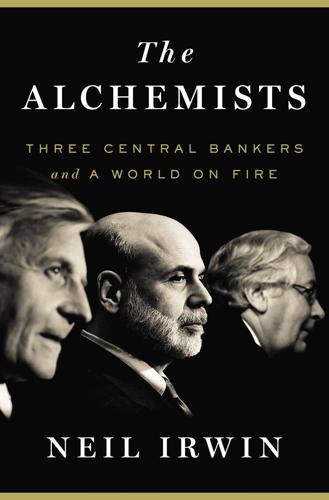
The Alchemists: Three Central Bankers and a World on Fire
by
Neil Irwin
Published 4 Apr 2013
Apart from political pressure, Burns’s actions were influenced by some fundamental economic misunderstandings. It was an era of supreme confidence in the ability of wise policymakers to fine-tune the economy, as well as a time that any amount of unemployment seemed unacceptable, even when the trade-off was higher inflation. Two of the greatest economists of their generation, Paul Samuelson and Robert Solow, argued that even 3 percent unemployment—stunningly low by any historical standard—was a “nonperfectionist’s goal.” Inflation had averaged only 2 percent from 1950 to 1968, but in pursuit of exceptionally low unemployment, the Federal Reserve began tolerating prices rising at a faster pace—first 4.7 percent inflation in 1968, then 5.9 percent in 1969.
…
Bernanke finished two years after them, studying under Stanley Fischer, later an IMF chief economist and head of the Bank of Israel and something of an intellectual godfather to a generation of central bankers. “If you had known Ben Bernanke as a student you would have never picked him as a future central banker,” Robert Solow, a Nobel laureate economist at MIT, later told Bloomberg News. Bernanke didn’t even look the part, Solow added: “He had a lot of hair, and when I say a lot of hair, I mean a lot of hair.” Indeed, in the early years of his career, Bernanke showed little inclination to be anything other than a first-rate academic.
…
See Housing prices Recessions and bank failures, 3, 23, 33–34, 39–40 and end of inflation of 1970s, 70–71 eurozone (2012), 354–55 during Greenspan tenure, 95, 99 Reed, James A., 45 Rehn, Olli, 209–10 Reichsbank, 47–53 creation of, 47 gold for paper money swap, 48–49 Great Depression measures, 58–60 hyperinflation, pre–Nazi era, 11, 50–53 paper money mass issuance (1914–1918), 48–49 Reid, Harry, 146 Rentenmark, origin of, 54 Republicans anti-Bernanke, 184, 190–92, 327–28, 330 QE2, objection to, 256 Reserve Primary Fund, 147–48 Riksbank, 152 Robertson, Linda, 177, 189–90, 193, 195 Romer, Christina, 338 Roosevelt, Franklin Delano gold standard abandoned, 60–61 “try it all” approach, 149–50 Rosengren, Eric, 264, 271, 275 Roumeliotis, Panagiotis, 341–42 Royal Bank of Scotland, 154 Royal Exchange, 31 Rubin, Robert, 94 Ryan, Paul, 256 Sack, Brian, 270 Salary cuts, as deficit reduction, 302–3, 309–10 Salary increases, and inflation, 65–66, 134–35 Salstrom, Sandra, 254–55 Samaras, Antonis, 310, 342, 345, 354 Samuelson, Paul, 65 Sanders, Bernie, 175–76, 189, 197–98 San Francisco earthquake (1906), 40 Sarkozy, Nicolas, 159, 211 bondholders pay bailouts decision, 289–92 on EFSF bank charter, 326 -Merkel relationship, 287–92, 356 Savings & loan bank failures (1980s), 79 Schabowski, Günter, 76 Schacht, Hjalmar Horace Greeley, Great Depression, actions during, 53–54, 57, 60 Schäuble, Wolfgang, 228, 257, 289, 290, 380, 382 Schmidt, Helmut, 325 Schultz, George, 62–63 Schuman, Robert, 74 Schumer, Chuck, 186 Seasonal loans, 40, 42–43 Second Bank of the United States (1816), 37–39 Securities Markets Programme (SMP) Greece bailout, 286–89, 310–11 initial proposal for, 220–23 Ireland bailout, 283–84, 287, 294–96 Italy bailout, 319–22, 347–48 opposition to, 229–32, 320, 322–23 Portugal bailout, 295 reactivation of (2011), 317–18 Spain bailout, 287, 320–21 suspension of, 304–5 Sentance, Andrew, 252 September 11 attack, economic remedies following, 98–99, 130 Sheets, Nathan, 227 Shelby, Richard, 174, 184–85, 261 Shiller, Robert, 112 Skidmore, David, 4 Smith, George Ross, 45 Smith, Michelle, 5, 193 Sócrates, José, 296 Soini, Timo, 297 Solow, Robert, 65, 116 Soros, George, 72–74 South Korea, Group of 20 meeting (2010), 257, 273–74 Spain financial crisis, 317–23 ECB bond buying program, 287, 320–21 fiscal reforms, 353 housing price increase (2005), 100–101 Speer, David, 261 Stagflation, Great Britain (2010–2011), 251–53, 334 Stamp, Josiah, 388 Stark, Jürgen ECB bond buying opposition, 220–21, 229, 320–21 economic orientation, 300 and Greek crisis, 209–10 resignation of, 322–23 Stein, Herbert, 62 Stein, Jeremy, 385 Steinbrück, Peer, 159 Stockholms Banco, 17–24 collapse (1668), 17–18, 23 innovations/failures of, 18–23 lessons learned, 23–24 Stock market.
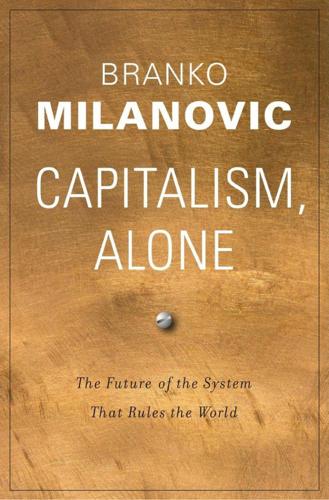
Capitalism, Alone: The Future of the System That Rules the World
by
Branko Milanovic
Published 23 Sep 2019
They argue that the rising share of capital was driven by a decline in the cost of capital goods (think of relatively cheap computers); this increased the use of capital (by replacing low-skilled labor with technology) and drove up its share in net product. But that does not explain the full increase, they argue: part of it is due to increasing monopoly power and markups, a finding that others have confirmed.14 According to Robert Solow, the rising share of capital comes from a change in the relative bargaining power of labor and capital. When organized labor was relatively powerful, as exemplified in the 1949 Treaty of Detroit between the auto workers’ unions and employers, labor was able to push the distribution of income in its favor.15 But when the power of organized labor declined—with the shift toward services as well as toward a global capitalist system that more than doubled the number of wage workers worldwide—the power of labor waned, and the functional distribution of income moved in favor of capital.16 In an interesting take on the evidence, Barkai (2016) has argued that both capital and labor shares have shrunk while a third factor of production, entrepreneurship (which is normally lumped together with capital) has increased in importance.
…
See also Soviet Union Saint-Simon, Henri de, 210 Salanié, Bernard, 39 Samuelson, Paul, 15 Sapio, Flora, 93 Sarkozy, Nicolas, 58 Say, Jean-Baptiste, 199–200 Schularick, Moritz, 31–32 Schumpeter, Joseph: on bright side of capitalism, 176; definition of capitalism and, 12; definitions of democracy and polyarchy, 119; on ethical imperialism, 126; on function of capitalist, 23; on income inequality, 40; on reasons for outbreak of war, 72 Schumpeterian creative destruction, 120 Seabright, Paul, 85 Self-employment income, 233 Shaffer, Mark, 85 Singapore, political capitalism in, 96, 97 Skill premium: increasing, 21; mass education and reduction in, 43 Skin in the Game (Taleb), 182, 240n33 Smith, Adam, 9; on bright side of capitalism, 176, 177, 178; on citizenship, 159; on coordinating interests of capitalists, 210; on dark side of capitalism, 178; on equality in wealth and power and preservation of peace, 214; on function of capitalist, 22–23; hypercommercialization and “invisible hand” and, 227–229; on keeping capital investment close, 148; on mobility of persons and stock, 241n38; on Navigation Act, 114, 248n45; on rebalancing of economic power, 1, 2; tripartite classification of classes and, 17 Smithian “natural” path of development of capitalism, 113–115 Social contract, capitalist behavior and tacit, 179–180, 254n9 Social-democratic capitalism, 13–14, 215; liberal meritocratic capitalism differentiated from, 20 Social effects, of universal basic income, 204–205 Social evolution, 68 Social good, social vices used for, 227–229 Socialism, 216, 221–222; clarification of term, 69 Socialist economies, 69; performance of capitalist economies vs., 84–87 Socialization within capitalist system, 4 Social policies, liberal meritocratic capitalism and new, 42–55; addressing twenty-first income inequality, 42–50; welfare state in era of globalization, 50–55 Social revolutions in Third World, 79–82 Social separatism, system of, 52 Social stability, migrants and, 147 Social transfers, attempting to redress inequality and, 44, 45, 46 Socioeconomic systems, laws governing rise and decline, 68–69 Söderberg, Daniel, 51, 203 Solow, Robert, 25 Song, Zheng (Michael), 120 Song China, merchants and central government in, 105, 115 Soviet Union: “export” of economic and political system, 113; failure of communism in, 83; household surveys in, 232. See also Russia Spirit of Laws, The (Montesquieu), 253n1 Stalin, Joseph, 81 Stalinists, revolution in China and, 81 Stamp, Josiah, 158 Stantcheva, Stefanie, 54 Starbucks, 183 State efficiency, political capitalism and, 118–119, 121, 127 State-led political capitalism.
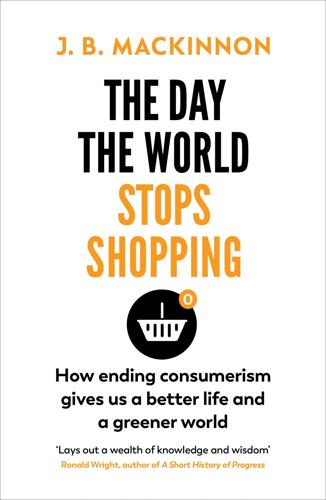
The Day the World Stops Shopping
by
J. B. MacKinnon
Published 14 May 2021
Plug in a typical incandescent bulb from the drugstore, and you can expect it to burn for about a thousand hours; if you leave it on full-time, you can expect it to die about forty-two days later. “We don’t build things today to last,” Bramell said, surely speaking for almost all of us. Most people seem to agree that the products we buy today are subject to what the economist Robert Solow, borrowing from an anonymous German friend, called Das Gesetz der Verschlechtigung aller Dinge, or the Law of the Deterioration of Everything. But it’s important to be sure that this is not nostalgia for an imaginary past. Is it really the case that the products we buy today are worse than they were five, ten or twenty years ago?
…
See also voluntary simplicity “culture of simple comfort,” 175 simple life, stereotype of, 244 simple life, versus poverty, 281 simpler living, 238–39, 241, 244–45 Singapore, 17, 26, 47 Slade, Giles, 146–47 Sleepy’s, 26 Slow Shopping, 89–90 “smart” lighting industry, 148 smetana, 132 Smith, Adam, 9, 85, 212, 245 Smith, Julie, 150–51 socialism, 91 “socket saturation,” 147–48 Solnit, Rebecca, 98 Solow, Robert, 144 Sombart, Werner, 155–56 Soule, Catherine Armstrong, 111–14 Southern Hemisphere, 58, 74 “spark of joy,” 109 “special atmosphere,” 49 spillover, 217 Splendid Chance International, 26 staggering, 50, 65 Stanley, Vincent, 109–11, 113, 115 Stapp, Mark, 139 “star mounds,” 231 Steinbeck, John, 39 Stern, Nicholas, 289 “stimulus” money, 123 Stirnemann, Rebecca, 231–32 Stop Shopping (model), 88–89 Storeygard, Adam, 70–71 Stubbins, Carley, 192 “sufficiency behaviour,” 217 suicide, 105.

Markets, State, and People: Economics for Public Policy
by
Diane Coyle
Published 14 Jan 2020
In particular, how should figures be put on environmental benefits and damage, with no market for beauty or healthy seabirds, and potentially large externalities? The realization that there was no consensus about how to go about this led the US National Oceanic and Atmospheric Administration to establish a commission of eminent economists to consider how to improve the techniques. The commission, chaired by Nobel laureates Kenneth Arrow and Robert Solow, concluded in its 1993 report that—if done with due care—survey-based methods (known as contingent valuation, described below) would enable comparison of costs and benefits in such circumstances. Much of the thinking about CBA since then has taken place in the context of environmental economics and policy.
…
F., 174 Skitovsky, Tibor, 15 slow thinking, 176, 179 smartphones, 81, 210 Smith, Adam, 18, 36, 138, 194, 280 Smith, Vernon, 175 smoking, 137, 152–53 social capital (trust), 137, 138, 147, 155–59, 168–69, 211 social cohesion, 7, 18 social comparison, 189, 190, 191, 195 social discount rate, 312–13, “socialist calculation” debate, 20 Social Insurance and Allied Services (Beveridge), 205 Social Limits to Growth (Hirsch), 161 social media, 51, 91–92, 93, 124, 323 social norms, 137, 138, 147, 152–55, 168–69, 220, 259, 293 social security, 202, 203, 206, 208, 212, 231, 237 social welfare. See welfare economics solar energy, 86 Solow, Robert, 305 Sonny Bono Act (1998), 62 South Korea, 127, 198, 206, 326 Soviet Union, 20, 23, 281 Spain, 144 species protection, 321, 322 speed limits, 273 Spence Michael, 164 spotted owl, 322 SSNIP (small but significant non-transitory increase in price) test, 58 stabilization, as government policy, 6 standard of living, 46, 207, 208, 251 Standard Oil, 95 “state aid,” 55, 133 state capacity, 16–17, 20 stated preference (contingent valuation), 305, 318–25, 326 statistical significance, 301 steel industry, 100, 102, 103, 106, 110, 114, 116, 119–20 Stern Report, 314–15 Stigler, George, 262 strategic bias, 321 strikes, 23, 109 sugar taxes, 272 Sugden, Robert, 174 sunk costs, 105 Sunstein, Cass, 173 superstar effect, 52, 54, 227 surge pricing, 78, 79, 167 surveys, 180–81 Sweden, 30, 85, 102, 115, 217, 275, 284 Switzerland, 237, 239, 250 Sydney Opera House, 276–78 tacit knowledge, 157 target setting, 257, 281–83, 287, 289 tariffs, 263 TaskRabbit, 168 Tata (Indian conglomerate), 103, 119 taxes: on alcohol and tobacco, 19, 25, 137, 152, 228, 272; avoidance vs. evasion of, 271; behavioral motivation for, 198, 199; behavioral response to, 274; credits against, 236, 252, 287; inefficiencies created by, 252; on inheritances, 231, 232; marginal effective rate of, 234, 235, 236–37, 239; on mobile phones, 165; optimal, 229, 231; Pigouvian, 25, 26, 31, 32, 141, 165, 252; on plastic bags, 5; public goods financed by, 27, 202; redistributive, 2, 7–8, 206, 208, 213, 225, 228–29, 232; resentment of, 3, 232; user fees vs., 28, 278, 279–80; value-added, 228 tax farming, 61 taxicabs, 71, 75–80, 263 tax incentives, 101, 129–30, 131, 134 technological disruption, 71, 72, 75–82 Telecom Italia, 107 telecommunications, 56, 91, 105, 130; bundling in, 93; equipment for, 118–19; as natural monopoly, 104; privatization of, 45, 46, 114, 117, 121; regulatory capture and, 68; state-owned, 101, 109 temperance movement, 269, 271 The Ten Commandments (film), 62 terrorism, 209 Tetlock, Paul, 300 Thaler, Richard, 173 Thatcher, Margaret, 22, 23, 70, 100, 109–10, 118, 119, 256, 258 Theory of Moral Sentiments (Smith), 194 third best theorem, 14 Thomas Cook (travel agency), 110 Tinbergen, Jan, 21 Titmuss, Richard, 196 tobacco taxes, 25, 152, 228, 272 toll goods (club goods), 26, 28, 142 toll roads, 26, 29, 278 tort law, 33, 65 total surplus, 47, 48 Toulouse, France, 157 traffic management, 275, 278 tragedy of the commons, 137–42, 148, 161, 165 training, 48, 129, 134 transaction costs, 32, 34–36, 303 Treaty on the Functioning of the European Union, 56 trichloroethylene spill (1987), 320 Trump, Donald, 185 trust (social capital), 137, 138, 147, 155–59, 168–69, 211 “trust busting,” 95 Tullock, Gordon, 260–61 Turing, Alan, 107 Turkey, 116, 117 turnpike trusts, 29, 144 Tutte, Bill, 107 Tversky, Amos, 173 Uber, 78–80, 84, 93, 263 Ulvaeus, Björn, 3 unemployment, 156–57, 212, 223; crime rate linked to, 154–55; in France, 78; policies to reduce, 205, 238; during recessions, 209, 251; among youth, 65–66 unemployment insurance, 202–6, 208, 209, 233, 251 unions, 22, 35, 110, 118, 121, 220, 223 United Kingdom, 3; alcohol consumption in, 19; automatic savings plan in, 187; behavioral policy unit in, 173, 185, 192; blood donation in, 196; competition policy in, 94; contracting out in, 284; cost-benefit analysis in, 305, 313; energy in, 86, 87–88, 89; health care in, 101, 246–49, see also National Health Service (NHS); industrial policy in, 106–7, 127, 129–30; inequality in, 217, 221, 241; minimum wage in, 240; mutual societies in, 203; nationalization in, 22, 101–2; policy evaluation in, 299; poverty in, 215; privatization in, 87–88, 98, 100, 102–3, 114–22, 124–25, 258, 290; public services in, 244, 281, 282–83, 290; road system in, 29, 292–93; taxation in, 198, 228, 232, 236, 252, 272; Universal Credit in, 234; value of a statistical life in, 326; welfare state in, 99; Winter of Discontent (1978–79) in, 23, 109 United States: automatic savings plan in, 185, 187; behavioral policy unit in, 173, 185; blood donation in, 196; competition policy in, 94–95; computer industry in, 107–8; contracting out in, 284, 285; cost-benefit analysis in, 305, 313; farm subsidies in, 267, 268; fracking in, 86; health care in, 210, 249–51; individualism in, 250, 251; industrial policy in, 125, 126–27, 131; inequality in, 217, 219, 223–24, 240, 242; labor force trends in, 221, 222; lobbying in, 265; municipal corporations in, 144; obesity in, 198; policy appraisal in, 300; power blackouts in, 85; social security in, 203; taxation in, 228, 232, 235, 236, 237; value of a statistical life in, 326; vouchers in, 287 U.S.

Capital in the Twenty-First Century
by
Thomas Piketty
Published 10 Mar 2014
Proposed in 1955, this was really a theory of the magical postwar years referred to in France as the “Trente Glorieuses,” the thirty glorious years from 1945 to 1975.9 For Kuznets, it was enough to be patient, and before long growth would benefit everyone. The philosophy of the moment was summed up in a single sentence: “Growth is a rising tide that lifts all boats.” A similar optimism can also be seen in Robert Solow’s 1956 analysis of the conditions necessary for an economy to achieve a “balanced growth path,” that is, a growth trajectory along which all variables—output, incomes, profits, wages, capital, asset prices, and so on—would progress at the same pace, so that every social group would benefit from growth to the same degree, with no major deviations from the norm.10 Kuznets’s position was thus diametrically opposed to the Ricardian and Marxist idea of an inegalitarian spiral and antithetical to the apocalyptic predictions of the nineteenth century.
…
My dream when I was teaching in Boston was to teach at the École des Hautes Études en Sciences Sociales, whose faculty has included such leading lights as Lucien Febvre, Fernand Braudel, Claude Lévi-Strauss, Pierre Bourdieu, Françoise Héritier, and Maurice Godelier, to name a few. Dare I admit this, at the risk of seeming chauvinistic in my view of the social sciences? I probably admire these scholars more than Robert Solow or even Simon Kuznets, even though I regret the fact that the social sciences have largely lost interest in the distribution of wealth and questions of social class since the 1970s. Before that, statistics about income, wages, prices, and wealth played an important part in historical and sociological research.
…
But one logically consistent way of interpreting his thought is to consider the dynamic law β = s / g in the special case where the growth rate g is zero or very close to zero. Recall that g measures the long-term structural growth rate, which is the sum of productivity growth and population growth. In Marx’s mind, as in the minds of all nineteenth- and early twentieth-century economists before Robert Solow did his work on growth in the 1950s, the very idea of structural growth, driven by permanent and durable growth of productivity, was not clearly identified or formulated.31 In those days, the implicit hypothesis was that growth of production, and especially of manufacturing output, was explained mainly by the accumulation of industrial capital.
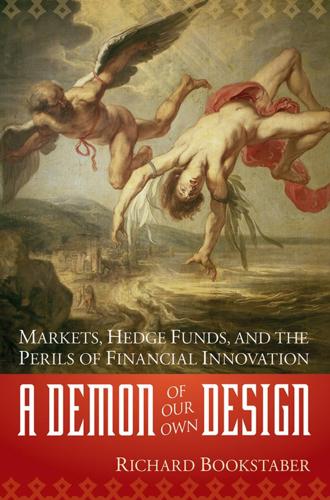
A Demon of Our Own Design: Markets, Hedge Funds, and the Perils of Financial Innovation
by
Richard Bookstaber
Published 5 Apr 2007
He failed to receive a permanent appointment at Harvard, so he headed down the Charles River to MIT. There, joined by other Jewish academics, he became the leading light in an economics department that would have an enormous impact on academia, governmental economic policy, and the financial markets. Two who joined on shortly after his appointment were Robert Solow, a Brooklyn-born economist who did his undergraduate work at Harvard, and Franco Modigliani, who fled fascist Italy in 1939. Over the next 40 years, Samuelson, Solow, and Modigliani worked on some of the most important economic issues of their time. Solow’s most significant contribution involved the application of ordinary differential equations to understand the determinants of economic growth.
…
Treasury spread position, on-the-run/offthe-run trade, 120–124 Samuelson, Paul, 208–209 Santa Fe Institute, 229 Scharf, Charlie, 123–124 Scholes, Myron, 9, 119 Scribe Reports, 201–202 Securities price behavior, 36 volatility calculation, 14 Self-referentiality, 222 Shaw, David E., 165, 189, 243 Shiller, Robert, 179 Shopkorn, Stan, 181 Shuttle disasters, 159–161 Simon, Jim, 165 Singapore International Monetary Exchange (SIMEX), Osaka Exchange (matched positions), 39 Smith Barney, 75 Solow, Robert, 208–209 Soros, George, 179–180 Speculative traders, economic service, 219 Spread trades, holding periods, 83 Standard & Poor’s (S&P) futures contracts, sale, 20 Statistical arbitrage concept, 194 emergence, 182–188 origination, 184 traders, 191–192 Statistics, objective, 134–135 Stavis, Rob, 53, 59, 70–80, 84 Stock clearance/finance, 27–28 StockGeneration, web site, 168 Stock market crash (1929), 137 Stock market crash (1987), 1–2 demons, 7 impact/meditation, 18–20 mechanism, understanding, 28 meltdown, physics, 25–30 postmortem, 13–14 warning signs, 16–18 Strauss, Thomas, 196 resignation, 199 STRIPS, 40–41 Sunbeam, restatements/liability, 135 SuperDOT, linkage, 189 Swap maturity/rate level, interaction, 47 Systems, interactive complexity, 155 Takeovers, impact, 15–16 Tartaglia, Nunzio, 187–189 Thorp, Ed, 188 Three Mile Island, 159 safety systems, dangers, 147–150 Tight coupling, 143 accidents, 154–157 complexity, combination, 256 failure, cascade, 145–146 interactive complexity, relationship, 157–159 origination, 144–145 reduction, 260 Tilley, Jim, 8–9, 46 Time disintermediation, 21 Toevs, Alden, 9 Too big to fail doctrine, 113 Top-down approach, 167 Travelers brokerage unit, 75 Citigroup merger, 125, 140 Shearson American Express, merger, 78 Tribeca Investments, 204 Tulip mania, 174–177 Turnover, demand satisfaction, 173 Two-plus model, 85–86 U.K. tax code, change (1997), 117, 118 Ukraine Radiological Institute, 163 Unanticipated events, 239 Uncertainty, implications, 257 Uncertainty Principle, 223–227 behavioral analogue, 226 Undecidability Theorem, 223–224 Underwriting, profitability, 33–34 Union Bank of Switzerland (UBS), 48 Epstein, impact, 48–49 Goldstein, impact, 116–118 LTCM impact, 118–120 LTCM losses, 113–116, 120 monetary loss, 49 Swiss Bank Corporation, merger, 49 Unwind/unrealized losses, 68 275 bindex.qxd 7/13/07 2:44 PM Page 276 INDEX U.S. arbitrage, losses, 100 U.S. swap market, 92 U.S.
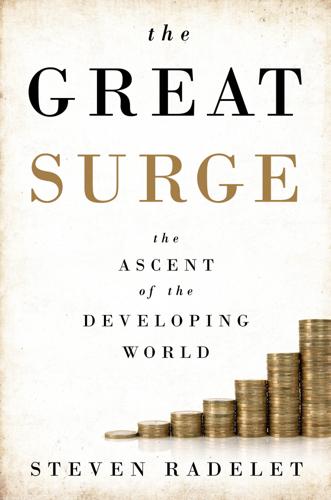
The Great Surge: The Ascent of the Developing World
by
Steven Radelet
Published 10 Nov 2015
In these sectors, foreign firms pay workers two to three times more for basic production jobs and ten times more for supervisory and managerial jobs than for low-skilled work.12 Globalization has been, on the whole, a major force for progress in developing countries during the last two decades, and has provided the opportunities for millions of people to begin to escape poverty, increase their economic opportunities and incomes, and improve their health. A good summary of the evidence comes from the Commission on Growth and Development, an international panel of leading economists and financial experts, including two Nobel Prize laureates (Michael Spence and Robert Solow), and nineteen other experts from around the world. This group examined the forces behind the fastest-growing countries over the last few decades. They observed that rapid growth sustained over decades was not possible before World War II, and concluded (in what they call “the central lesson of this report”) that this rapid economic growth is possible only because the world economy is now more open and integrated.
…
W., 143 Delhi, 287 democracy, 3, 5, 6–7, 9, 16, 21, 22, 23, 97, 146–50, 162, 232, 294, 296, 303, 309 in Africa, 135, 145 Asian values and, 121, 122–23 in Brazil, 186–87 capitalism and, 146, 149 development and, 125 expansion of, 248–49 failures of, 11, 263–64, 273 famines and, 128 and fundamentalist Islam, 265 globalization and, 157 improved governance and, 197–99, 199 lack of attention to increasing, 10 measurement of, 106–15, 110 and oil-exporting countries, 114–15 pessimism over, 120–25 poor countries as, 98 poverty and, 121 in retreat after World War I, 146–47 reversals in, 113–14 rise of, 103–6, 105, 110 slowing down of growth of, 233 demographics, changing, 21 dengue fever, 205 Deng Xiaoping, 43, 185, 289 reforms of, 35, 192 resignation of, ix–x, 123, 134–35 Derg, 100, 187 Desai, Raj, 260 developing countries, 9, 40 challenges to, 294 lack of growth in, 8, 11 as playing substantial role in global markets, 52 skilled leadership needed for, 234 trade between, 47, 262 see also progress in developing countries Development as Freedom (Sen), 19, 127 development assistance, 307–8 development traps, 118 Dhaka, 277 Diamandis, Peter, 300 Diamond, Jared, 13 Diamond, Larry, 110–11, 186 diamonds, 206, 207, 284, 285 Diaoyu, 288 Diarra, Adama, 265 diarrhea, 10, 73, 75, 92, 94, 173, 215 dictatorships, 6, 7, 11, 99–101, 102, 125–29, 143–45, 222–23 private investments and, 223 Dietrich, Simone, 223 Dioura, Cheick, 265 diphtheria, 94, 161 disaster relief, 38 disease, 4, 15, 19, 21, 205, 266–68, 294 attention to, 10 noncommunicable, 268 see also specific diseases Djiguiba, Ansema, 108 Djiguiba, Sulamo, 108 Doe, Samuel, 99, 145 Doha round, 258, 298 Dollar, David, 65, 225 Dominican Republic, 6, 36, 47 aid to, 223 cocoa farmers in, 163 democracy in, 7, 106 exports from, 56 fall of poverty in, 36 growth in, 6, 45, 50, 128 Douglas DC-8, 168 drought, 171, 215 Drought Tolerant Maize for Africa Project, 171 Duarte, José Napoleón, 100 Dubai, 155 Duflo, Esther, 14, 31, 88 Dunning, Thad, 223 Duvalier, François “Papa Doc,” 222 Duvalier, Jean-Claude “Baby Doc,” 127 Duvalier family, 11, 100, 114, 141 East Asia, 5, 7, 50, 167 extreme poverty in, 36 growth in, 141 Easterlin, Richard, 86 Easterly, William, 213 Eastern Europe, 36, 141, 147, 148 trade and, 159 East Germany, x, 134 Ebola, 8, 10, 20, 22, 82, 205, 255, 266 economic growth, 37–38, 47–51, 49, 51, 86, 213 aid and, 224–27 cause of, 52–53 democracy and, 128–29 and poor, 63–65 sustainability of, 61–63 economic reforms, 192–97, 193, 194, 195, 196 Ecuador, 36, 47, 106 education, 4, 5, 6, 16, 24, 31, 77, 85–89, 88, 94–96, 154, 161, 164, 190–91, 191, 232, 247–48, 251, 258, 260–61, 262, 303, 306, 307 in Afghanistan, 215 aid and, 226 in Asia, 201 in Brazil, 187 conflict and, 118–19 of girls, 85–90 health and, 89–93, 205 Egypt: coup in, 113, 124–25, 185 demonstrations in, 281 ORT in, 173 poverty in, 36–37 in Six-Day War, 285 Ehrlich, Paul, 274, 275 Eichengreen, Barry, 236 election monitoring organizations, 110 elections, 198, 262 electricity, 216, 233, 278 electronics, 56, 165 El Salvador, 36, 39, 121 child mortality in, 84 democracy in, 123 dictatorship in, 99–100 war in, 100 End of History and the Last Man, The (Fukuyama), 148–49 energy, 21, 22, 162, 233, 235, 261, 258, 275, 277, 292, 293 environmental degradation, 1, 4, 8, 63, 163 Equatorial Guinea, 114, 184, 223 eRanger “ambulance,” 175 Eritrea, 49, 50 Ershad, Hussain Muhammad, 144 Essay on the Principle of Population, An (Malthus), 270 Essebsi, Beji, 124 Estrada, Joseph, 264 Ethiopia, 141, 144, 159, 285 aid to, 224 China’s example followed by, 266 dictatorship in, 100 growth in, 7, 50, 125, 238, 261 HIV in, 174 individual leadership in, 187 textiles from, 56 Europe, 19, 25, 167, 292, 300 democracy in, 296 leadership needed by, 234 post–World War II boom in, 262 European Union, 202, 259, 297 Executive Index of Electoral Competitiveness, 108 Extractive Industries Transparency Initiative, 306 factories, 165, 235 in Indonesia, 201 Falkland Islands, 100 famine, 4, 10, 128, 232 in Bangladesh, 271 in China, 35 after global food crisis (2007), 12 Fascism, 104, 124, 146, 147, 184, 265, 309 Fate of Young Democracies, The (Kapstein and Converse), 198 fertility rates, 73–74, 80–81, 84–85, 85, 95, 306 finance, 45, 158–61, 163, 234, 241, 305 financial flows, 17, 156, 157, 160, 306 Finland, malaria in, 210 flood, 171, 215, 226 floods, 281 Florecot, 47 food, 56, 79–80, 213, 233, 277, 280, 307 Food and Agriculture Organization, 79, 280 food assistance, 38 food prices, 54, 273, 301–2 food production, 294, 301 food security, 21, 22 Ford Foundation, 170 foreign aid, 10, 12, 18–19, 209–27 bureaucracy of, 222 criticisms of, 218–24 debate over, 213–14, 227 and diversion of government funds, 221–22 growth and, 224–27 monitoring of, 222 as poorly designed, 221 priorities of, 221 foreign direct investment (FDI), 149, 154, 157, 165 foreign exchange reserves, 192 forest loss, 280 Fossati-Bellani, Gabriel, 44 fossil fuels, 301 France, 47, 68, 140 Franco, Itamar, 186 freedom, 127, 131, 161, 198–99, 232 Freedom House, 107–8, 113, 182, 198 Freedom in the World index, 107–8 free markets, 148–49 free trade, 163–64 Friedman, Milton, 213 fuel efficiency standards, 297 Fujimori, Alberto, 185 Fukuyama, Francis, 148–49, 186, 288, 296 fundamentalist Islam, 124 G-7, 298 G-20, 298 Galiani, Sebastian, 227 Gallup, John, 210 Gambia, The, 113, 124, 190 Gandhi, Mohandas K., 293, 294 Gang of Four, 185 Gap, 164 garments, 56, 59 gas, 44, 139 Gates, Bill, 83–84, 213, 217 Gates, Robert, 20 Gdańsk, 103 Gelb, Alan, 205 General Agreement on Tariffs and Trade (GATT), 156, 258 General Electric, 159 genetically modified foods (GMOs), 171–73 genocide, 142 Georgia, 50, 143 growth in, 128, 238 Germany, 250, 298 germ theory, 77 Gerring, John, 129, 248 Getting Better (Kenny), 93 Ghana, 37, 127 aid to, 223 coastal vs. isolated areas in, 201 data entry firms in, 178 democracy in, 106, 122, 188–90 growth in, 6, 7, 22, 45, 50, 128, 261 oil exported by, 53 reforms in, 192 trade encouraged by, 155 Gill, Indermit, 261 Gini coefficient, 66, 70 glasnost, 134 Global Alliance for Vaccines and Immunizations (GAVI), 95, 161 global financial crisis, 12, 52–53, 113, 191, 233, 235, 257, 264, 269, 295, 305 global food crisis, 12, 280–81 Global Fund to Fight AIDS, Tuberculosis and Malaria, 95, 212 Global Health 2035 Commission, 91, 245, 267, 284, 306 global integration, 52 globalization, 17, 19, 131, 150, 158–61, 160, 162, 163–66, 183, 200, 207, 264, 287–88 technology and, 166 Global Malaria Eradication Program, 211–12 gold, 139, 152, 206 Golden Rice, 172 Gorbachev, Mikhail, 133, 134, 143 Gordon, Robert, 257–58 governance, 4, 5, 8, 17, 184, 197–99, 199, 201, 292–93, 294, 304, 307, 309 aid and, 214 and poverty traps, 15 and resource curse, 206 see also democracy Great Britain, 47, 68 colonialism of, 140 Zimbabwe’s independence from, 180 Great Depression, 126, 146 Great Famine, 284 Great Leap Forward, 35, 81, 128, 153 Greece, 105 Green Bay, Wisc., 60 Greenland, 280 Green Revolution, 38, 79, 170–73, 204, 214, 215, 274, 302 Guatemala, 18, 36 coup in, 100 war in, 145 Guinea: demonstrations in, 281 Ebola in, 82 health system in, 266 violence in, 206 Guinea-Bissau, 49, 50 guinea worm, 214 Guns, Germs, and Steel (Diamond), 13 Guntur, 31 H1N1 flu, 20, 82, 267, 269 Hafizibad, 178–79 Haiti, 8, 10, 11, 49, 50, 185, 213 aid to, 224 child mortality in, 82 and democracy, 248 demonstrations in, 281 dictatorship in, 100, 114, 127, 141, 222 earthquake in, 224 health improvements in, 93 lack of growth in, 50 poor governance in, 106, 114 Hansen, Henrik, 226 Harris, Gardiner, 270 Hartwick’s rule, 62 Havel, Václav, 143, 149, 184 Haves and the Have-Nots, The (Milanovic), 65 health, 3, 4, 5, 6, 7–8, 16, 17, 24, 94–96, 154, 161, 164, 166, 178, 232, 233, 234, 245–46, 248, 258, 260–61, 262, 266–69, 303, 306, 307 aid and, 226 in Asia, 201 in Brazil, 187 in China, 201 conflict and, 118–19 education and, 89–93, 205 and poverty traps, 15 technology and, 173–75, 179, 293 health care, 86 health services, 248 Heath, Rachel, 59 He Fan, 298 Henry, O., 97 Hindu nationalists, 287 Hitler, Adolf, 127, 146 HIV/AIDS, 20, 75, 81–82, 83, 94, 95, 173, 174–75, 182, 205, 214, 221, 246, 266 Hobbes, Thomas, 24 Honduras: coup in, 97–98 crime in, 264 war in, 145 Hong Kong: British control of, 153 and globalization, 155 growth in, 147 hookworm, 205 housing, 24, 307 humanitarian relief, 213 human rights groups, 110 Hungary, 7, 143 illiberalism in, 255, 263 protests in, 134 trade encouraged by, 155 Huntington, Samuel, 104, 105, 112, 121, 122, 146, 197, 265, 296 Hussein I, King of Jordan, 187 illiberal democracy, 264 immunization, 94, 178 income, 3, 5, 8, 17, 25, 31, 32, 40, 77, 94, 294 in Africa, 12 in China, 201 climbing, 240–41, 240 doubling of, 4, 5–6, 44 education, health and, 89–93 falling, 11, 49 income inequality, 65–71 between countries, 69–71, 70 within countries, 65–69 incubators, 175 independence from colonialism, 140–43 India, 3, 7, 22, 32–33, 37, 127, 159, 203, 289, 292, 297 colonialism in, 140 data entry firms in, 178 demand in, 53 as democracy, 98, 122, 123, 126 economic reforms in, 192 emigration from, 284 floods in, 281 future of, 234 growth in, 6, 8–9, 17, 21, 45, 50, 71, 128, 235, 237 inequality in, 69–70 infrastructure financing in, 259–60 innovation in, 302 malaria in, 211 natural capital in, 63 Pakistan’s wars with, 141, 145 poverty reduction in, 244 slowdown in growth of, 237, 255, 257, 262 software companies in, 56 terrorism in, 287 trade encouraged by, 155 universities in, 247 water demand in, 279 Zheng He’s trip to, 152 Indian Institute of Technology, 247 Indonesia, 10, 36, 124, 127, 184, 289 agriculture in, 58–59, 204 aid for schools in, 216 aid to, 214, 223 benign dictatorship in, 126 child mortality in, 85 colonial legacy in, 136–40 demand in, 53 democracy in, 106, 112, 114, 115, 122, 123, 124, 250 demonstrations in, 281 as dictatorship, 99, 122 factories in, 201 fertility rates in, 85, 85 growth in, 6, 7, 22, 38–39, 50, 71, 125–26, 128, 147, 233, 238, 242, 262 healthcare in, 95 individual leadership in, 187 Nikes from, 56 population growth in, 85 rice yields in, 215–16 terrorism in, 286 timber, 223 Zheng He’s trip to, 152 industrial equipment, 165 industrial revolution, 24, 25, 77, 135, 166, 300 industry, 45, 56, 260 inequality, 258 infant mortality, 92, 118, 175, 306 in South Africa, 183 infectious diseases, 92 inflation, 11, 192 in Africa, 12 information, 166, 234 information revolution, 175–79, 176 infrastructure, 164, 201, 207, 262 aid projects for, 216 Inkatha Freedom Party, 182, 185 innovation, 234, 258, 292, 294 in China, 236 Institute of World Economics and Politics, 298 institutions, 200, 294, 297–98, 303–4 and resource curse, 206 insurance companies, 241 insurance markets, 305 interest rates, 233, 305 Intergovernmental Panel on Climate Change (IPCC), 282 International Maize and Wheat Improvement Center (CIMMYT), 171 International Monetary Fund (IMF), 102, 235, 237, 239, 258, 259, 260, 298, 309 International Rice Research Institute (IRRI), 171, 215–16 internet, 162, 175, 233, 300 investment, 6, 20, 22, 52, 156, 157, 166, 301, 304–5, 306 in Africa, 12 in technology, 234, 246 Iran, 114, 124 coup in, 100 Zheng He’s trip to, 152 Iraq, 8, 114, 118, 124, 285 US invasion of, 8, 118, 124, 146 Ireland, 284 iron, 25, 53, 159 Islam, 124 fundamentalist, 265 Islamabad, 287 Israel, 106, 285 Istanbul, 201, 206 Istanbul Technical University, 247 Italy, 47, 104 ivory, 152, 206 Jakarta, 137 Jamaica, 49, 50 Jamison, Dean, 246 Japan, 19, 20, 21, 146, 167, 201, 288, 290, 292, 298, 300 as democracy, 122, 123, 126, 250, 296 colonialism in Indonesia, 137 industrialization of, 25–26 leadership needed by, 234 post–World War II boom in, 262 reforms in, 295 slowing of progress in, 250, 255, 257 Jarka, Lamine Jusu, 104 Java, 152, 204 Jensen, Robert, 177 job training, 38 Johannesburg, 58 Johnson, Simon, 13 Johnson Sirleaf, Ellen, 3, 120, 184, 185, 209, 217 Jordan, 285 growth in, 45 individual leadership in, 187 life expectancy in, 78 poverty in, 36 JSI Research and Training Institute, 173 Kabila, Laurent, 185 Kagan, Robert, 253 Kampala, 177 Kaplan, Robert, 11 Kapstein, Ethan, 198 Karimov, Islam, 8, 127, 144, 185 Kathmandu, 203, 206 Kazakhstan, 36, 106, 115, 285 Kelly, James, 254 Kenny, Charles, 11, 93 Kenya, 18, 169 accounting firms in, 56 data entry firms in, 178 horticulture in, 169 Zheng He’s trip to, 152 Kerekou, Mathieu, 144 Kharas, Homi, 240–41, 261 Khatun, Jahanara, 270, 272 Khmer Rouge, 114 Khrushchev, Nikita, 250 Kim, Jim Yong, 231, 242 Kim Il Sung, 100, 144, 184 Kirkpatrick, Jeanne, 124 Kissinger, Henry, 271 Kodari, 203 Kolkata, 203 Korean War, 81, 100, 141, 145 Kosovo, and democracy, 248 Kotler, Steven, 300 Kraay, Aart, 65 Kufuor, John, 189–90 Ku Klux Klan, 124, 265 Kurlantzick, Josh, 263 Kuwait, 47 Kuznets, Simon, 66 KwaZulu-Natal, 182 Kyrgyzstan, 205, 285 labor unions, 102 Lancet, 91, 245, 267, 284, 306 Landes, David, 13 Laos, 184 Latin America, 11, 36, 146 colonialism in, 140 economic growth in, 255 growth in, 50, 141 inequality in, 67–68 megacities in, 277 reforms in, 192 Latvia, growth in, 128 Laveran, Alphonse, 211 leadership, 16, 17–18, 131, 184–87, 200, 201, 234, 303–4 Lebitsa, Masetumo, 57 Lee, Jong-Wha, 87 Lee Kuan Yew, 7, 121, 122, 123, 125, 127 Lensink, Robert, 226 Lesotho, 57, 103 Levine, Ruth, 214 Levi Strauss & Co., 165 Lewis, Arthur, 66 Liberia, 3, 11, 18, 159, 184, 185, 285 aid to, 217 democracy in, 106, 145 Ebola in, 82 growth in, 7, 50 health system in, 266 infrastructure investment in, 216 violence in, 120, 145, 146, 206, 209, 217 Libya, 115 life expectancy, 78–79, 79, 92, 93, 232, 266, 271, 294 Lipset, Seymour Martin, 121 literacy programs, 161, 162, 176, 178–79 literacy rates, 87 Liu Yingsheng, 153 London, 24, 201 Lord’s Resistance Army, 287 Lukashenko, Alexander, 85 Maathai, Wangari, 18 McAfee, Andrew, 166, 300 Macapagal-Arroyo, Gloria, 264 McLean, Malcolm, 167 Madagascar, 49, 50, 263 Mahbubani, Kishore, 241 malaria, 6, 10, 14, 73, 75, 92, 94, 205, 209–13, 221, 246, 302 Malawi, 103, 122, 175, 208 Malaysia, 136 benign dictatorship in, 126 and democracy, 248, 250 forest loss in, 280 malaria in, 211 Zheng He’s trip to, 152 Maldives, 152, 284 Mali, 206 child mortality in, 84 coup in, 114, 264–65 democracy in, 103, 108, 122, 123, 263 economic problems in, 255 as landlocked, 205 poverty in, 122 malnutrition, 73, 80 Malthus, Thomas, 270, 273–74, 275 Mandela, Nelson, 17, 149, 180, 182–83, 184, 198, 309 released from jail, 103, 143, 148 Mandelbaum, Michael, 11 manufacturing, 25, 37–39, 45, 56, 67, 156, 260, 261–62 in China, 235–36 Mao Tse-tung, ix, 35, 81, 102, 123, 127, 134, 185 Maputo, 44 Marcos, Ferdinand, 11, 100, 103, 104, 109, 127, 141, 143, 148, 222 Mariam, Mengistu Haile, 144 Marrakesh, 206 Marshall Islands, 284 Maseru Tapestries and Mats, 57 Massmart Holdings Ltd., 46 Matela Weavers, 57 maternal mortality rates, 246 Mauritania, 281 Mauritius: aid to, 216 child mortality in, 84 as democracy, 98 growth in, 5, 37, 50, 126, 128 Mbasogo, Teodoro Obiang Nguema, 184 Mearsheimer, John, 290–91 measles, 92, 94, 161 Mecca, Zheng He’s trip to, 152 medical equipment, 20, 165 medicine, 21, 31 megacities, 277 Meiji Restoration, 25–26, 146 Melaka, 136 Menchú Tum, Rigoberta, 18 Mexico, 159, 162 default by, 101–2 democracy strengthening in, 115 demonstrations in, 281 emigration from, 284 growth in, 235 Micklethwait, John, 295 middle class, 20, 240–41 Middle East, 36, 184, 256, 265 conflict in, 146 democracy and, 265 financing in, 259 growth in, 50 life expectancy in, 82–83 oil from, 201 trade and, 159 middle-income trap, 261 Milanovic, Branko, 65, 70 Millennium Challenge Corporation, 216 Millennium Development Goals (MDGs), 18, 30–31, 95, 217, 242 Millennium Summit, 217 Mills, John Atta, 189 minerals, 22, 152, 205–6 Ming China, 151–53 minimum wage, 165 mining, 278 Ministry of Finance, Gambia, The 190 Mitteri Bridge, 203 Mobarak, Mushfiq, 59 Mobile Alliance for Maternal Action (MAMA), 178 mobile devices, 47 mobile phones, 157, 175–78, 176 Mobilink-UNESCO, 179 Mobutu Sese Seko, 11, 100, 127, 141, 143, 145, 222 Moi, Daniel Arap, 103 Moldova, 6, 7, 36, 143 Mongolia, 108 aid to, 223 coal and iron ore exported by, 53 democracy in, 104, 122, 123, 144 growth in, 6, 7, 45, 128 Moran, Ted, 164–65 Moreira, Sandrina Berthault, 226 Morocco: demonstrations in, 281 growth in, 6, 50 individual leadership in, 187 inequality in, 67 poverty in, 36 Morrisson, Christian, 25, 27, 28 mosquitoes, 212 Moyo, Dambisa, 12 Mozal aluminum smelter, 44 Mozambique, 11, 18, 43–45, 159 aid to, 214, 216 aluminum exported by, 53 and democracy, 248 demonstrations in, 281 growth in, 6, 50, 261 inequality in, 67 infrastructure investment in, 216 reforms in, 192 state-owned farms in, 195 war in, 100, 145 M-Pesa, 47 Mubarak, Hosni, 113, 125, 185 Mugabe, Robert, 8, 106, 113, 127, 144, 181, 182, 185, 221 Mumbai, 287 Museveni, Yoweri, 112, 187 Musharraf, Pervez, 113 Mussolini, Benito, 104, 146 Myanmar, 9, 22, 112, 144, 184, 208, 263 child mortality in, 82 cyclones in, 281 health improvements in, 93 Namibia, ix, x, 37 democracy in, 135 growth in, 50 life expectancy in, 266 war in, 100, 145 National Academy of Sciences, US, 172 National Constituent Assembly, Tunisia, 124 National Institutes of Health, US, 302 natural capital, 62–63 Natural Resource Governance Institute, 306 Nazarbayev, Nursultan, 106 Nazism, 124, 146, 265, 309 Ndebele tribe, 180 Nepal, 37, 174, 203–4, 208 democracy in, 107, 122, 123 demonstrations in, 281 as landlocked, 202, 205 poverty in, 122 Netherlands, 47 Indonesian colonialism of, 136–37, 138, 139 New Development Bank, 259 New Orleans, La., 201 New York, N.Y., 201, 277 New York Times, 104, 176–77, 270 New Zealand, 25, 78, 167, 202, 231 Nicaragua, 11, 36 democracy in, 104 war in, 100, 145 Niger, 208 agriculture in, 204 democracy in, 124, 263 as landlocked, 202, 205 mobile phones in, 177–78 Nigeria, 115, 159, 243, 245, 287 dictatorship in, 99, 113 health technology in, 175 oil in, 285 per capita wealth in, 62 Nike, 165, 202 Nkomo, Joshua, 181 noncommunicable diseases (NCDs), 268 non-governmental organization (NGOs), 110, 221 Noriega, Manuel, 144 North Africa, 36 growth in, 50 life expectancy in, 82–83 trade and, 159 North American Free Trade Agreement (NAFTA), 156, 162 North Korea, 8, 9, 100, 144, 184, 192, 208, 243 nutrition, 232 Obama, Barack, 297 Obama administration, 297 O’Hanlon, Michael, 299 oil, 44, 53, 62, 67, 114–15, 201, 205, 285 in Equatorial Guinea, 223 in Indonesia, 138, 139 oil crises, 10 open markets, 131 Opium Wars, 153 oral rehydration therapy (ORT), 94, 173, 215 overfishing, 61 overtime regulations, 165 Paarlberg, Rob, 172 Pakistan, 37, 162, 243, 245, 285–86 conflict in, 118, 119 coup in, 113 and democracy, 263 emigration from, 284 factories in, 58 India’s wars with, 141, 145 terrorism in, 287 violence in, 146 Panama, 9 growth in, 50, 128, 238 US invasion of, 144 Panama Canal, 211 Panasonic, 202 Papua New Guineau, 50, 213 Paraguay, 50, 280 Park Chung-hee, 99, 122 patents, 157 Peace Corps, 75, 90, 202 pensions, 38, 241 People Power Revolution, 186 Perkins, Dwight, 235 pertussis, 94, 161 Peru, 159, 185, 285, 287 agriculture in, 56–57 copper exported by, 53 demonstrations in, 281 pharmaceuticals, 20, 165 Philippines, 7, 11, 17, 18, 100, 103, 121, 127, 184, 185, 201, 222, 289, 290, 297 call centers in, 178 corruption in, 264 democracy in, 104, 106, 109, 122, 123, 250, 263 growth in, 242 inequality in, 67 nickel exported by, 53 rice yields in, 215–16 transcribers in, 56 Piketty, Thomas, 68–69 Pinker, Steven, 115 Pinochet, Augusto, 107–8, 122, 141, 143–44, 187 Plano Real (“Real Plan”), 187 Plundered Planet, The (Collier), 292 pneumonia, 73 Poland, 6, 18, 36, 103, 143, 184, 186 protests in, 134 trade encouraged by, 155 universities in, 247 polio, 94, 119, 161, 215 Polity IV Project, 107, 109 pollution, 302 Population Bomb, The (Ehrlich), 274 population growth, 21, 80–81, 84, 95, 233, 234, 272, 273–77, 276 Portfolios of the Poor (Collins et al.), 32, 33–34 Port of Cotonou, 216 Portugal, 105, 123, 136 poverty, 94, 294 definitions and terminology of, 26–27 democracy and, 121 as exacerbated by conflicts, 119, 119 as man-made, 180 poverty, extreme, 5, 8, 25, 26, 27–30, 30, 31–35, 36, 41, 42, 118, 231, 232, 240, 241–45, 244, 256, 271 in China, 35, 36, 242 in Indonesia, 136 in South Africa, 183 poverty, reduction of, 3, 4, 5, 8, 17, 21, 27–31, 28, 30, 34–35 in Africa, 12 in China, 201 after global food crisis (2007), 12 ignorance of, 10 lack of attention to, 10 poverty traps, 14–16 pregnancy, 178 press, freedom of, 198–99 Preston, Samuel, 92 Preston curves, 92 Pritchett, Lant, 89, 235, 262 Programa Bolsa Família, 38, 67 progress in developing countries, x, 3–5, 45–53, 46, 49, 229, 237–39, 238 democratization and, see democracy factors for, 16–19 future of, 21–23 as good for West, 19–21 income growth in, 240–41, 240 investment in, 238 and long historical perspective, 13 and microlevel studies, 13–14 middle class emergence in, 240–41 pessimism about, 9–12 possible stalling of, 255–56 possible tripling of incomes in, 277–78 and poverty traps, 14–16 reduction of poverty in, see poverty, reduction of threats to, 291–92 transforming production in, 262–63 property rights, 142, 303 protein, 280 Protestant work ethic, 120–21 Publish What You Pay, 305 Punjab, 178–79 Putin, Vladimir, 224, 255 Radelet, John, 60 Rahman, Ziaur, 271 Rajan, Raghuram, 225, 237 Rajasthan, 33 Ramos, Fidel, 103 Ramos-Horta, José, 184 Ravallion, Martin, 27, 29, 64, 227, 243 Rawlings, Jerry, 188–89 Rebirth of Education, The (Pritchett), 89 recession (1980s), 10, 191 Reebok, 164 religion, freedom of, 198–99 religious bodies, 110 Reserve Bank, Zimbabwe, 181 resource curse, 54, 163, 206 resource demand, 21, 233, 272, 281 resource extraction, 162–63 resources, 275 in Africa, 261 resource wars, 284–86 retail trade, 37, 45 Return of History and the End of Dreams, The (Kagan), 253 Reuveny, Rafael, 272 Rhodes, Cecil, 180 Rhodesia, 43 rice, 139, 215–16 rickshaw drivers, 32–33 Ridley, Matt, 11 rights, 131, 161, 198–99 rinderpest, 215 Rio de Janeiro, 46, 58, 159, 201 river blindness, 214 roads, 169, 233, 235 aid for, 216 in South Africa, 202 Robinson, James, 13, 140, 249 robotics, 261, 301 Rockefeller Foundation, 170 Rodrik, Dani, 261, 263 Roll Back Malaria Partnership, 212 Romania, 36, 50, 134, 143 Romero, Óscar, 100 Roosevelt, Franklin, 100 Roosevelt, Theodore, 169 Ross, Ronald, 211 Royal Economic Society, 226 Russia, 47, 146, 222, 256 democracy in, 113, 263, 264 infrastructure financing in, 259–60 slowing of progress in, 250, 264 Ukraine invaded by, 192, 233 US aid banned by, 224 Rutagumirwa, Laban, 176–77 Rwanda, 144, 159 aid to, 214, 216, 224 China’s example followed by, 266 growth in, 6, 7, 45, 50, 125, 128, 261 individual leadership in, 187 as landlocked, 207 Sachs, Jeffrey, 14–15, 175, 205, 210, 213, 219 Safaricom, 47 salinity, 171, 215 Sall, Macky, 114 Samoa, 202 sanitation, 73, 77, 216, 303 Sargsyan, Vazgen, 113 Saudi Arabia, 115 savings rate, 201 schistosomiasis, 205 Schlesinger, Arthur, Jr., 121 Schumpeter, Joseph, 249 Second Machine Age, The (Brynjolfsson and McAfee), 166, 300 secular stagnation, 257 seed drill, 25 seeds, 171 semiconductors, 20 Sen, Amartya, 19, 123, 127, 128 Sendero Luminoso, 287 Senegal, 7, 37 aid to, 223, 224 corruption in, 114 democracy in, 123, 124, 263 demonstrations in, 281 growth in, 261 inequality in, 67 Senkaku islands, 288 Seoul, 201 September 11, 2001, terrorist attacks of, 269 services, 67, 260, 261–62 severe acute respiratory syndrome (SARS), 82, 267 Seychelles, 284 Shanghai, 201 Shenzhen, 91 Sherpas, 203 Shikha, 33–34 Shinawatra, Thaksin, 254–55, 264 Shinawatra, Yingluck, 255 Shining Path, 287 shipping, 202 shipping containers, 167–68 shock therapy, 219 shoes, 56, 139, 162, 262 Sierra Leone, 220, 285 democracy in, 104, 107 Ebola in, 82 growth in, 50 health system in, 266 violence in, 146, 206 Silk Road, 206 silks, 152 silver, 152 Simon, Julian, 294 Sin, Jaime, 18, 103 Singapore, 7, 16, 184 benign dictatorship in, 126 and democracy, 122, 248, 250 and globalization, 155 growth in, 125, 139, 147 universities in, 247 Singh, Manmohan, 192 Six-Day War, 285 skills and capabilities, 16, 190–92 slavery, 142, 156, 180, 206 smallpox, 214, 215 Smith, Adam, 151, 156, 200–201 Smith, David, 43 Smith, Marshall, 178–79 SMS text messages, 47, 178 Snow, John, 77 social safety net, 38, 39, 68, 164, 307 Sogolo, Nicéphore, 144 soil, 171, 215 Solow, Robert, 165 Somalia, 8, 9, 99, 119, 213, 243 aid to, 224 power vacuum in, 184 Zheng He’s trip to, 152 Somoza García, Anastasio, 100, 127 Song-Taaba Yalgré women’s cooperative, 178 South Africa, 7, 17, 18, 20, 22, 37, 43, 46, 127, 143, 145, 155, 182–83, 207 aid to, 223 apartheid in, 44, 57, 68, 100, 103, 135, 141, 180, 182 banks in, 56 corruption in, 264 economic growth in, 183, 235, 262 future of, 234 HIV in, 174 inequality in, 68 infrastructure financing in, 259–60 life expectancy in, 266 political turmoil in, 57 roads in, 202 universities in, 247 South Asia, 37, 50 Southeast Asia, 5, 12, 167 colonialism in, 140 growth in, 141 Southern Rhodesia, 180 South Jakarta, 286 South Korea, 36, 127, 159, 184, 201, 288, 290 aid to, 214, 216 benign dictatorship in, 126 democracy in, 104, 122, 126, 250 as dictatorship, 99, 122 and globalization, 155 growth in, 7, 16, 29, 71, 125, 139, 147, 236, 262 individual leadership in, 187 inequality in, 68 lack of resources in, 205 land redistribution in, 68 Soviet Union, x, 50, 126, 133–34, 145, 148, 298, 309 Afghanistan invaded by, 134, 146 collapse of, 16, 81, 103, 131, 135, 142, 156, 250, 251 countries controlled by, 141 dictatorships supported by, 100 malaria in, 210 Spain, 105, 123, 140 speech, freedom of, 198–99 Spence, Michael, 86, 165 Spratly Islands, 289 Sputnik, 147, 250 Sri Lanka, 11, 37 economic problems in, 255 engineers from, 56 malaria in, 211 Zheng He’s trip to, 152 Stalin, Joseph, 127 state-owned farms, 195 Stavins, Robert, 297 steam engine, 25, 300 Steinberg, James, 299 Stern, Nicholas, 213, 292 Stiglitz, Joseph, 213, 227 stock exchanges, 241 Strait of Malacca, 201 student associations, 110 Subic Bay Naval Station, 201 Subramanian, Arvind, 225 Sudan, 114, 115, 185, 206, 208, 285 aid to, 224 China’s example followed by, 266 violence in, 285 Suharto, 99, 112, 122, 126, 138–39, 144 Sumatra, 152 Summers, Lawrence, 88, 227, 235, 246, 257 Sustainable Development Goals, 217 Swaziland, life expectancy in, 266 sweatshops, 58 Sweden, 159 Switzerland, 27, 202 Sydney, 201 Syria, 8, 285 aid to, 224 conflict in, 118, 119, 146, 233, 255 in Six-Day War, 285 Taiwan, 29, 153, 201, 289, 290 aid to, 216 benign dictatorship in, 126 democracy in, 122, 126, 250 and globalization, 155 growth in, 125, 139, 147, 236, 262 individual leadership in, 187 lack of resources in, 205 Tajikstan, 205, 208 Tanzania: aid to, 214, 216 and democracy, 248 fruit markets in, 58 growth in, 45, 50, 238, 240, 261 purchasing power in, 27 reforms in, 192 Zheng He’s trip to, 152 tariffs, 44, 102, 155, 167, 193, 263, 305 Tarp, Finn, 226 tax revenues, 241, 247 Taylor, Charles, 99, 145 technology, x, 17, 19, 22, 94–96, 135, 150, 151–79, 183, 200, 206–7, 234, 245, 258, 294, 301 for agriculture, 170–71 for banking, 175, 179 in China, 154–55, 236 for education, 178–79 globalization and, 156, 166 for health, 173–75, 179, 293 terrorism and, 287–88 telecommunications, 158 Terai, 211 terms-of-trade ratio, 54 terrorism, 19, 20, 21, 146, 286–88 tetanus, 94, 161 textiles, 25, 56, 139, 152 Thailand, 9, 22, 36, 253–55, 265 benign dictatorship in, 126 child mortality in, 84 corruption in, 254, 264 and democracy, 248, 253–54, 255, 263 growth in, 139, 147, 262 protests in, 255, 263 Zheng He’s trip to, 152 Theroux, Paul, 12 Things Fall Apart (Achebe), 72 think tanks, 110 Third Wave, The (Huntington), 121 Thomas, Brendon, 90–91 Tiananmen Square, 148 Tibet, 203 Tigris, 285 timber, 61, 139, 206, 223, 285 Timbuktu, 206 Timor-Leste, 36, 139, 144, 184, 220 aid to, 223 democracy in, 106, 122 infrastructure investment in, 216 poverty in, 122 tin, 139 Tokyo, 201, 277 totalitarianism, 10–11, 16 tourism, 45 toys, 56, 139 trade, x, 6, 17, 20, 22, 52, 156, 157, 162–63, 193, 203, 204–5, 234, 257, 303 in agriculture, 273 Asian economic miracle and, 170, 201 growth of, 157, 158–59, 160 sea-based, 200–201 shipping containers and, 167–68 trade unions, 110 transportation, 166, 261 Truth and Reconciliation Commission, 182 T-shirts, 159, 164 Tuareg, 265 tuberculosis, 75, 94, 161, 205, 214 Tull, Jethro, 25 Tunisia: democracy in, 7, 106, 124, 255, 263 growth in, 50, 238 Turkey, 36, 127, 285 aid to, 223 authoritarian rule in, 255 demand in, 53 democracy in, 106, 123, 124, 263 future of, 234 growth in, 6, 7, 22, 235, 238 protests in, 263 trade encouraged by, 155 universities in, 247 Turkmenistan, 114, 266, 285 Tutu, Desmond, 18, 103, 185 Uganda, 106, 112, 144, 159, 287 aid to, 216 and democracy, 263, 264 growth in, 50 horticulture producers in, 169 individual leadership in, 187 inequality in, 67 infrastructure investment in, 216 mobile phones in, 176–77 Ukraine, 143, 192, 233 Ultimate Resource, The (Simon), 294 unemployment benefits, 38, 164 United Fruit Company, 223 United Nations, 79, 212, 217, 258, 275, 298, 309 United Nations’ International Labour Organization, 57 United States, 19, 47, 68, 148, 231, 292, 300 China’s relationship with, 298–99 countries controlled by, 141 coups supported by, 100 democracy criticized in, 126 democracy in, 112, 296 and dictatorships, 139, 222 Iraq invasion by, 8, 118, 124, 146 leadership needed by, 234 natural capital in, 63 Panama invaded by, 144 post–World War II boom in, 262 protection provided by, 289–90 in World War II, 137 universities, 247 urbanization, 4, 22, 233, 268, 276–77, 279 US Agency for International Development (USAID), 95, 170, 171, 216, 308 Uyuni Sal Flat, 205 Uzbekistan, 8, 145, 185, 281, 285 vaccines, 77, 94, 161, 214, 233, 302 Velvet Revolution, 103 Venezuela, 22, 47, 106, 115 and democracy, 248, 263, 264 economic problems in, 255 natural capital in, 63 Vereenigde Oostindische Compagnie (VOC), 136–37 Vietnam, 36, 106, 144, 289 aid to, 214, 224 China’s example followed by, 266 growth in, 7, 45, 50, 125, 128, 147, 262 individual leadership in, 187 inequality in, 67 life expectancy in, 78 rice yields in, 215–16 textiles from, 56 Zheng He’s trip to, 152 Vietnam War, 100, 138, 141, 145, 289 Vincent, Jeffrey, 61 violence, 6, 20, 290 decline in, 4, 115–20, 116, 117, 119, 145–46 poverty deepened by, 119, 119 and poverty traps, 15 over resources, 284–86 Vitamin A deficiency, 173–74 Viviano, Frank, 152 Wade, Abdoulaye, 114, 224 Wałesa, Lech, 18, 103, 143, 149, 184, 186 Walls, Peter, 181 Walmart, 46 Wang Huan, 90–91 war, 5 attention to, 10 and poverty traps, 15 reduction of, 3, 4, 6 watchdog groups, 110 water, 77, 80, 161, 216, 275, 277–80, 307 water conservation, 233 water pollution, 8 water shortages, 22, 73 Watt, James, 25 Wealth and Poverty of Nations, The (Landes), 13 Wealth of Nations, The (Smith), 200–201 Weber, Max, 120 West Africa, 8, 10, 22, 205 colonialism in, 140 West Bengal, 31 Western Samoa, 75, 202 What We Know (AAAS report), 281–82 “When Fast Growing Economies Slow Down” (Eichengreen et al.), 236 White, Howard, 226 white supremacy, 124 “Why Isn’t the Whole World Developed?”
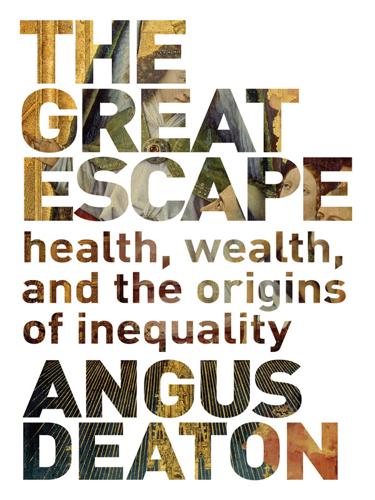
The Great Escape: Health, Wealth, and the Origins of Inequality
by
Angus Deaton
Published 15 Mar 2013
To be able to use rich-country methods of production requires rich-country infrastructure—roads, railways, telecommunications, factories, and machines—not to mention rich-country educational levels, all of which take time and money to achieve. Yet the gaps between rich and poor provide plenty of incentives to make the investment in that infrastructure and equipment, and, as Robert Solow showed in one of the most famous papers in all of economics, average living standards should draw closer over time.4 Why this has not happened is a central question in economics. Perhaps the best answer is that poor countries lack the institutions—government capacity, a functioning legal and tax system, security of property rights, and traditions of trust—that are a necessary background for growth to take place.
…
See also Britain Scott, Sir Walter, x, 86 Sen, Amartya, 11, 28, 37, 116 Sierra Leone, 27, 48, 123, 154, 296, 302 Simon, Julian L., 243–44 Singapore, economic growth in, 235 Singer, Peter, 271, 306 smallpox, 81, 84–86, 104, 307. See also diseases Smith, Adam, 55, 270 smoking, 7, 66, 131–35, 137, 152 Smuts, Jan, 306 Snow, John, 95–96 Social Security, 181, 199 Sokoloff, Kenneth J., 215–16 Solow, Robert M., 234 South Africa: foreign aid received by, 296; HIV/AIDS in, 40; inequality in, 34–35, 40 Stevenson, Betsey, 50 Stone, Richard, 229 Suez Canal, 297 Summers, Robert, 222 Sweden: life evaluation scores in, 48; life expectancies in, 67–68, 70; mortality rates in, 68–70, 68f, 72; smallpox in, 84; vital registration system of, 72 Szreter, Simon, 97 taxes: carbon, 242; in democracies, 295; income, 199–200, 203, 204–5, 212; progressive, 199–200, 261 Taya, Maaouya Ould Sid’Ahmed, 301 technical assistance, 278, 321–22 technological change: in medicine, 99; skill-biased, 191–93; wages and, 194–95; wellbeing increased by, 327–28 Terry, Luther, 131–32 Thomas, Keith, 55 Tinbergen, Jan, 191 tobacco, 7, 66, 131–35, 137, 152 Togo, 48, 296 Tonga, 277, 278 trachoma, 98–99, 103 trade, 313, 322, 323.
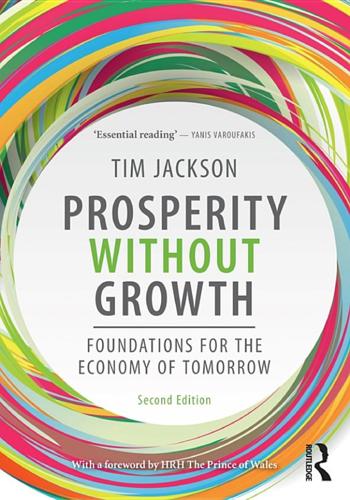
Prosperity Without Growth: Foundations for the Economy of Tomorrow
by
Tim Jackson
Published 8 Dec 2016
Production output depends on three so-called ‘factors of production’: labour, capital and materials. Early growth theories suggested that growth could be predicted mainly on the basis of how much labour and capital was available. But these models failed to account for the ‘residual’ growth after expansions in capital and labour had been factored in. In 1956, economists Robert Solow and Trevor Swan independently argued that this residual could be explained by technological progress (Solow 1956, Swan 1956). 18 On rebound, see: Chitnis et al. (2014), Druckman et al. (2011), Sorrell (2007). 19 See Jackson (1996: chapter 1) for a more detailed discussion of this point; see also Georgescu-Roegen (1972), Daly (1996). 20 See Schumpeter (1934, 1950, 1954).
…
Unto Others – The Evolution and Psychology of Unselfish Behaviour. Cambridge, MA: Harvard University Press. Soddy, F. 1931. Money Versus Man. London: Elkin Mathews & Marrot. Solomon, Sheldon, Jeff Greenberg and Tom Pyszczynski 2014. The Worm at the Core: On the Role of Death in Life. London: Penguin. Solow, Robert 1956. ‘A contribution to the theory of economic growth’. Quarterly Journal of Economics 70(1): 65–94. Soper, Kate 2008. ‘Exploring the relationship between growth and wellbeing’. London: Sustainable Development Commission. Online at www.sd-commission.org.uk/publications.php?id=780 (accessed 19 January 2016).
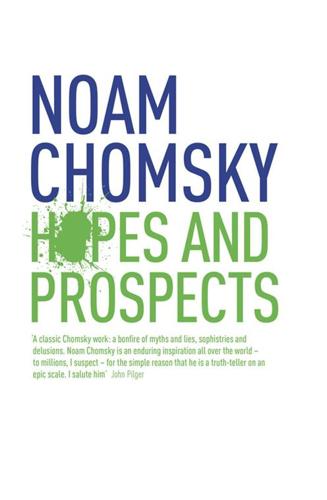
Hopes and Prospects
by
Noam Chomsky
Published 1 Jan 2009
Whether neoliberalism is the enemy of development is debatable, for a simple reason: the economy—particularly the international economy—is so poorly understood and involves so many variables that even when close correlations are found, one cannot be confident about whether there are causal relations, or if so, in which direction. The founder of the modern theory of economic growth, Nobel laureate Robert Solow, commented that despite the enormous accumulation of data since his pioneering work half a century ago, “the direction of causality” is unknown. It is not clear, he concludes, whether capital investment causes productivity, or productivity leads to capital investment; whether openness to trade improves economic growth, or growth leads to trade; and the same problems arise in other dimensions.
…
See 9/11 terrorist attacks settler-colonialism, 22 Sewall, Sarah, 302n20 Shalit, Gilad, 146, 256, 257 Shamir, Yitzhak, 154 Sharon, Ariel, 252 Shelby, Richard, 232 Simon, Steven, 235 Simpson, Cam, 145 Singh, Ajit, 91 Sistani, Ayatollah, 236 slavery, 78, 79, 81, 95 Smith, Adam, 15, 16, 27, 29, 37, 77, 81 maxim, 16, 30, 47, 94, 108, 278 “social cleansing,” 61 social democratic attitudes, 208–9 Solow, Robert, 76 South Africa, 163 South America. See Latin America South American Defense Council, 59 South Korea, 72 South Pacific NWFZ treaty, 168 sovereignty, loss of, 75 Soviet satellites, 271, 272, 275. See also East Germany Soviet Union, 90 Spanish conquerors and colonies, 20–22 “special interests,” 98 Status of Forces Agreement (SOFA), 235–37, 239 Steele, Jonathan, 129 Stevens, John Paul, 33–34 Stiglitz, Joseph, 86, 220 Stimson, Henry, 118 Story, Joseph, 19 STRATCOM, 165–66 structural adjustment, 106 Suharto, 43 Summers, Lawrence, 219–21 Supreme Court, 34 corporate personhood and, 31–35 Syria, 139, 144, 239 Iraq and, 125–26, 239 Obama and, 239, 249 U.S. raid of, 239 Taiwan, 9 Talabani, Jalal, 239 Taliban, 141, 243, 246 Afghanistan and, 141, 238, 242 public opinion regarding, 141, 243 tariffs.
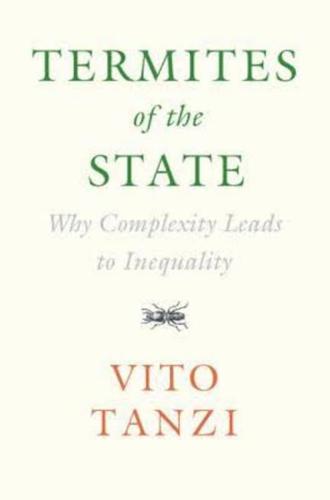
Termites of the State: Why Complexity Leads to Inequality
by
Vito Tanzi
Published 28 Dec 2017
I had also spent another two years working for a CongressionalPresidential Commission (the Outdoor Recreation Resources Review Commission) that was tasked with determining the optimal use for the extensive public land owned by the US federal government. This commission produced several reports that set the stage for the future use of public land. During the years I spent at Harvard, in the first half of the 1960s, some of the leading economists of the time – Paul Samuelson, Robert Solow, Simon Kuznets, Kenneth Arrow, Franco Modigliani, Wassily Leontief, Kenneth Galbraith, Robert Dorfman, Alvin Hansen, Otto Eckstein, James Duesenberry, and several others – were in the Boston area, either at Harvard or at MIT. Richard Musgrave, who was then considered the leading public finance economist in the United States, would come to Harvard a little later and would be the second reader of my doctoral dissertation; I thus completed my public finance preparation under a third refugee from Nazi Germany.
…
The Council of Economic Advisors was led by Walter Heller, an economist with enough personal prestige to play regular tennis with the president of the United States. He was widely known to the public, and, when he discussed economic policies, he spoke in a language that normal citizens could understand. The Council of Economic Advisers, which had prepared the Report, included among its staff two future Nobel Prize winners in economics (James Tobin and Robert Solow) and had also relied on consultants that included two other future Nobel Prize winners (Kenneth Arrow and Paul Samuelson). The Report would attract the kind of attention that could only be dreamed of by the authors of recent reports. The 1962 Report was a clear example of the extent to which the Keynesian Revolution and trust in the government to be able to make policy changes assumed to be beneficial to the citizens had reached their apotheosis, while economists had reached the peak of their prestige.
…
See also Soviet Union corruption in, 120 income inequality in, 306, 322 taxation in, 381–82 “Safety nets,” 207–8 Safety-related regulations, 146–47 Samsung Electronics, 347 Samuelson, Paul generally, 3, 56 on discretion, 71 on disincentives, 48–49 on fiscal rules, 272 on public goods, 175, 176–77 on role of government, 110, 400 Sandel, Michel, 34, 80–81 Scalia, Antonin, 251, 274–75, 345, 359 Scandinavia labor participation in, 47 marginal tax rates in, 376 public spending in, 53 regulations in, 174 welfare policies in, 43, 214 Schlesinger, Arthur M., Jr., 32 School of Public Choice, 5–6, 62, 69, 72, 110, 313–14, 396 Schumpeter, Joseph, 111 Scienza delle Finanze (Italian School), 5–6, 63, 65, 178 Second-best regulations, 145–46 Securitization, 330 Self-regulation of market, 94, 133–34 Seligman, Edwin, 380 Sen, Amartya, 7–8, 159–60, 299–300 Seneca, 102 “Shadow banking,” 108, 119, 242, 329–30 “Shadow financial sector,” 243 “Shadow fiscal policy,” 38–39 “Shadow governments,” 202 Sharapova, Maria, 351–53 Shiller, Robert J., 116 Silicon Valley, 344–45 Simons, Henry C., 119 Singapore public spending in, 121–22, 162 regulations in, 174 taxation in, 381 Sinn, Hans-Werner, 20, 108 Slavery, 249–50, 265–66 Smith, Adam generally, 7–9, 12, 189 on constitutions, 270 on dishonesty, 79 on entrepreneurs, 307 on government intervention, 226, 325 on income inequality, 305, 306, 320, 321 individualism and, 89 “invisible hand of market,” 66, 312–13 on limited role of government, 99 on mercantilism, 70, 123 on social consciousness, 312 on specialization, 91–92 Smoking as externality, 164 Social consciousness, growth and, 312 Social contract, 89–91 Social costs of income inequality, 206 Socialism government failures and, 73–74 public ownership and, 135 types of, 28 Socialization of loss, 83–84 Index Social programs. See Welfare policies Social regulations, 146 Social responsibilities of corporations, 398 “Soft budgets,” 71, 138 Solow, Robert, 3, 56 Sony, 347 Sorensen, Theodore, 2–3 Southeast Asian financial crisis (1997-1998), 109, 243–44 South Korea intellectual property in, 347 public spending in, 121–22, 162 Sovereign debt Buchanan on, 64 easy credit and, 106 in Greece, 241 growth in, 64 in Italy, 241 in Japan, 241 size of, 109 stabilization policies and, 241–42, 244–45 Soviet Union.
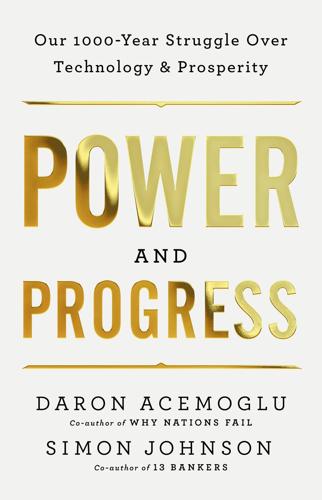
Power and Progress: Our Thousand-Year Struggle Over Technology and Prosperity
by
Daron Acemoglu
and
Simon Johnson
Published 15 May 2023
Smith, Gary, and Jeffrey Funk. 2021. “AI Has a Long Way to Go Before Doctors Can Trust It with Your Life.” Quartz, June 4, last updated July 20, 2022. https://qz.com/2016153/ai-promised-to-revolutionize-radiology-but-so-far-its-failing. Solow, Robert M. 1956. “A Contribution to the Theory of Economic Growth.” Quarterly Journal of Economics 70:65‒94. Solow, Robert M. 1987. “We’d Better Watch Out.” New York Times Book Review, July 12, 36. Sorkin, Amy Davidson. 2013. “Edward Snowden, the N.S.A. Leaker, Comes Forward.” New Yorker, June 9. Spear, Percival. 1965. The Oxford History of Modern India, 1740‒1947.
…
Moreover, much of the growth in both patenting and research spending is driven by new patents in electronics, communication, and software, the fields that were supposed to propel us forward. But look a little closer, and the fruits of the digital revolution are much harder to see. In 1987, Nobel Prize winner Robert Solow wrote: “You can see the computer age everywhere but in the productivity statistics,” pointing out the small gains from investments in digital technologies. Those more optimistic about computers told Solow that he had to be patient; productivity growth would soon be upon us. More than thirty-five years have passed, and we are still waiting.
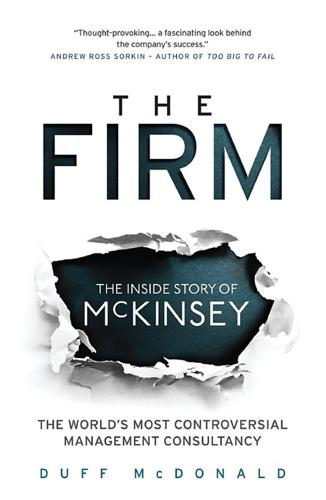
The Firm
by
Duff McDonald
Published 1 Jun 2014
Later work on global capital market developments, the U.S. healthcare system, and energy productivity continues to give McKinsey a voice in conversations to which its competitors are not invited. But it has also given an outlet to the firm’s recurring eruptions of arrogance. When the institute paid significant sums to lure Nobel laureate Robert Solow and other leading economists to its board, then-chairman Ted Hall reportedly professed the belief that the institute itself was doing Nobel-quality work instead of merely buying Nobel-quality window dressing. Marvin Bower instilled the firm’s values system, Ron Daniel perfected its personnel processes and institutionalized the place, and Fred Gluck was the architect of the firm’s knowledge culture.
…
See In Search of Excellence Securities and Exchange Commission (SEC), 315, 316, 317, 318 Securitization of Credit (Rosenthal and Ocampo), 145 Seimens, 148, 161 Servan-Schreiber, Jean-Jacques, 78 7-S framework, 149, 153 sexual discrimination, 207 The Shadow Government (Guttman and Willner), 68, 70 share buyback program, 127 shareholder capitalism, 103–4 shareholder value added (SVA), 289 shareholders committee, McKinsey, 121, 135, 138, 206, 233, 329 Sharer, Kevin, 220 Sharman, Graham, 217, 218 Shaw, Charles, 129 SHC, Inc., 235 Shearson Lehman, 165 Shell Oil, 147–48 Shepard, Steve, 154 Sherman Antitrust Act (1890), 18 Sidebottom, Peter, 254 Silicon Valley, 264, 294 Singh, Manmohan, 312 Skilling, Jeff, 7, 81, 238–46, 248 Sloan, Alfred P., 19, 54 Small Business Administration, 284 Smart Money magazine, 281 The Smartest Guys in the Room (McLean and Elkind), 241, 245 Smith, Adam, 20 Smith, Everett, 58, 76, 80, 94, 100, 101 Smith, Roger, 177, 183, 184 Smith, Yves, 235, 253 society: role of business in, 261–63 Socony Mobil Oil Company, 82, 91 Solow, Robert, 219 Sony Corporation, 114 South African Airlines, 256 Southern California Symphony, 64 Spalding Sporting Goods, 235 Spansion, 309 Special Operating Risk Committee (SORC), McKinsey, 307–8 specialization, 120–23, 142–46, 215 St. Petersburg Hermitage Museum, 228 Standard Oil, 18 State Street, 121 steel industry, 28, 29, 175 Steiner, Tom, 182, 204, 205–6, 216–17, 305 Stern, Stefan, 329 Stewart, Clothilde de Veze, 270 Stewart, MacLain, 83, 230 Stewart, Matthew, 25–26, 28, 84, 89, 112, 151, 184, 206 Stewart, Michael, 307–8 Strategic Planning Associates, 110 strategic planning/thinking: analytical approach to, 113 and BCG as competition for McKinsey, 88–89 BCG role in promotion of, 88–89 Bower’s views about, 41 and business school curriculums, 89–90 Citibank-McKinsey consulting and, 91–92 competition and, 186 decentralization and, 89–90 emergence of, 55–56 as essential to management, 89 focus on, 88–90 Fortune magazine survey about, 140 at GE, 113–15 Gluck and, 153, 197 GM-McKinsey and, 184 goal of, 186 Industrial Prussianism and, 186 as justification for corporate existence, 184 as large source of McKinsey revenue, 73 as learning process, 113 McKinsey knowledge focus and, 139–40 McKinsey’s idea of, 41 nine-box matrix and, 143–45 organizational structure and, 141–42 Peters views about, 151 phases in, 141 as pipe dream, 112–13 Superteam for, 140–42 strategy revolution, 112 Strategy and Structure (Chandler), 77 Sturdivant, Fred, 168, 190–91 succession planning, 66 Sumitomo Bank, 162, 165 Sun Oil, 91 Sunbeam Electric, 53 Superteam, McKinsey, 140–42 Supplementing Successful Management (McKinsey & Company), 45 surveys, McKinsey: as tools, 53–54 Sussex University: as McKinsey client, 77 Swain & Moore, 310 Swedish bank industry, 252 Swift & Company, 24 Swiss banks, 252–53, 286 Swiss Re, 232 Swissair, 2, 58, 86, 255–57 Switzerland: McKinsey activities in, 79, 128, 255–57 Sylvania Electric, 53 Systems Development Corporation, 118 Taj Capital, 312 Talbert, Harold, 68 talent: competition for, 90, 119, 166, 247, 263, 290 Tate & Lyle, 78 Taylor, Frederick Winslow, 26, 28 Taylor, Myron, 31 Taylorism, 26–27 technology, 74, 170, 171, 193, 196, 201–3, 276.

Machine, Platform, Crowd: Harnessing Our Digital Future
by
Andrew McAfee
and
Erik Brynjolfsson
Published 26 Jun 2017
Phase one of the second machine age describes a time when digital technologies demonstrably had an impact on the business world by taking over large amounts of routine work—tasks like processing payroll, welding car body parts together, and sending invoices to customers. In July of 1987 the MIT economist Robert Solow, who later that year would win a Nobel prize for his work on the sources of economic growth, wrote, “You can see the computer age everywhere but in the productivity statistics.” By the mid-1990s, that was no longer true; productivity started to grow much faster, and a large amount of research (some of it conducted by Erik‡‡ and his colleagues) revealed that computers and other digital technologies were a main reason why.
…
C., 69 Shazam, 161 shopping malls, 131, 134 Silberholz, John, 39 silos, 295–96; See also stacks Simon, Herbert, 69 Simons, Jim, 266 singles (music recordings), 145 “Singles Day” (China), 7–8 Skycatch, 99 Sky Futures, 100 Slack, 249 Slee, Tom, 9 smart contracts blockchain and, 292–95 DAO and, 302–5 solutionism and, 297 smartphones; See also iPhone; specific manufacturers as key to rise of O2O platforms, 195 widespread adoption of, 17–18 Xiaomi, 203 smart tags, 290 Smith, Adam, 279 SMS messages, 140, 141 Snijders, Chris, 38, 55–56 soccer coaches, 122–23 social capital, 262–64 social drives, 122 social media; See also specific sites, e.g.: Facebook as data source, 95 “fake news” on, 234 social networking, 8–9 social skills, 122–24, 321–22 social skill task inputs, 321 Solow, Robert, 16 solutionism, 297–99 Songhurst, Charlie, 195 Sony Music Entertainment, 134 speech recognition, 83–84 Spode, E. J., 305 Spotify, 146–48 stacks, 295–96, 298 Stallman, Richard, 243 standard partnership creativity and, 119, 120 defined, 37 demand for routine skills and, 321 HiPPO and, 45, 59 inversion of, 56–60 modified by data-driven decision making, 46–60 structure of, 31 Starbucks, 185 statistical pattern recognition, 69, 72–74, 81–82, 84 statistical prediction, 41 status quo bias, 21 steampunk, 273 Sterling, Bruce, 295, 298 S3 (Amazon Web Service), 143 Stites-Clayton, Evan, 263 STR, 221 “stranger-danger” bias, 210 streaming services, 146–48 Street, Sam, 184 Street Bump, 162–63 Stripe, 171–74, 205 structured interviews, 57 students, gifted, 40 Sturdivant, Jeremy, 286 subscription services, 147–48 suitcase words, 113 Suleyman, Mustafa, 78 “superforecasters,” 60–61 supervised learning, 76 supply and demand; See also demand; demand curves; supply curves O2O platforms for matching, 193 platforms and, 153–57 and revenue management, 47 supply curves, 154–56 Supreme Court, US, 40–41 surge pricing, 55 Svirsky, Dan, 209n Sweeney, Latanya, 51–52 Swift, Taylor, 148 switching costs, 216–17, 219 Sydney, Australia, hostage incident (2014), 55 symbolic artificial intelligence, 69–72 introduction of, 69–70 reasons for failure of, 70–72 synthetic biology, 271–72 systems integration, 142 System 1/System 2 reasoning, 35–46 and confirmation bias, 57 defined, 35–36 and second-machine-age companies, 325 undetected biases and, 42–45 weaknesses of, 38–41 Szabo, Nick, 292, 294–95 Tabarrok, Alex, 208–9 Tapscott, Alex, 298 Tapscott, Don, 298 Tarantino, Quentin, 136n TaskRabbit, 261, 265 taxi companies, Uber’s effect on, 201 TCE (transaction cost economics), 312–16 TechCrunch, 296 technology (generally) effect on employment and wages, 332–33 effect on workplace, 334 as tool, 330–31 Teespring, 263–64 Teh, Yee-Whye, 76 telephones, 129–30, 134–35 tenure predictions, 39 Tesla (self-driving automobile), 81–82, 97 Tetlock, Philip, 59 text messages, 140–41 Thank You for Being Late (Friedman), 135 theories, scientific, 116–17 theory of the firm, See TCE (transaction cost economics) Thierer, Adam, 272 “thin” companies, 9 Thingiverse, 274 Thinking, Fast and Slow (Kahneman), 36, 43 Thomas, Rob, 262 Thomke, Stefan, 62–63 3D printing, 105–7, 112–13, 273, 308 Thrun, Sebastian, 324–25 TNCs (transportation network companies), 208 TØ.com, 290 Tomasello, Michael, 322 Topcoder, 254, 260–61 Torvalds, Linus, 240–45 tourists, lodging needs of, 222–23 Tower Records, 131, 134 trade, international, 291 trading, investment, 266–70, 290 Transfix, 188, 197, 205 transparency, 325 transportation network companies (TNCs), 208; See also specific companies, e.g.: Uber Transportation Security Administration (TSA), 89 Tresset, Patrick, 117 trucking industry, 188 T-shirts, 264 tumors, 3D modeling of, 106 Turing, Alan, 66, 67n Tuscon Citizen, 132 TV advertising, 48–51 Tversky, Amos, 35 Twitter, 234 two-sided networks credit cards, 214–16 Postmates, 184–85 pricing in, 213–16, 220 pricing power of, 210–11 switching costs, 216–17 Uber, 200, 201, 218–19 two-sided platforms, 174, 179–80 Two Sigma, 267 Uber driver background checks, 208 future of, 319–20 information asymmetry management, 207–8 lack of assets owned by, 6–7 as means of leveraging assets, 196–97 network effects, 193, 218 as O2O platform, 186 origins, 200–202 and Paris terrorist attack, 55 pricing decisions, 212–15, 218–19 rapid growth of, 9 regulation of, 201–2 reputational systems, 209 routing problems, 194 separate apps for drivers and riders, 214 and Sydney hostage incident, 54–55 value proposition as compared to Airbnb, 222 UberPool, 9, 201, 212 UberPop, 202 UberX, 200–201, 208, 212, 213n Udacity, 324–25 unbundling, 145–48, 313–14 unit drive, 20, 23 Universal Music Group, 134 University of Louisville, 11 University of Nicosia, 289 unlimited service ClassPass Unlimited, 178–79, 184 Postmates Plus Unlimited, 185 Rent the Runway, 187–88 unsupervised learning, 76, 80–81 Upwork, 189, 261 Urmson, Chris, 82 used car market, information asymmetry and, 207 Usenet, 229, 271 user experience/interface as platforms’ best weapon, 211 and successful platforms, 169–74 users, as code developers, 242 “Uses of Knowledge in Society, The” (Hayek), 235–37 utilization rate, O2O platforms, 196–97 Van Alstyne, Marshall, 148 Van As, Richard, 272–74 Vancouver, Canada, Uber prohibition in, 202 venture capital, DAO vs., 302 verifiability, 248 verifiable/reversible contributions, 242–43 Verizon, 96, 232n Veronica Mars (movie), 262 Veronica Mars (TV show), 261–62 Viant, 171 video games, AI research and, 75 videos, crowd-generated, 231–32 Viper, 163 virtualization, 89–93; See also robotics vision, Cambrian Explosion and, 95 “Voice of America” (Wright), 229–30 von Hippel, Eric, 265 wage declines, 332 Wagner, Dan, 48–50 Waldfogel, Joel, 144 Wales, Jimmy, 234, 246–48 Walgreens, 185 Walmart, 7, 47 Wanamaker, John, 8–9 warehousing, 102–3, 188 Warner Brothers, 262 Warner Music Group, 134 Washington Post, 132 Washio, 191n waste reduction, 197 Watson (IBM supercomputer) health claim processing, 83 Jeopardy!
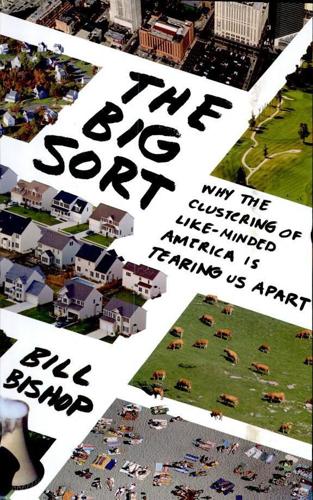
The Big Sort: Why the Clustering of Like-Minded America Is Tearing Us Apart
by
Bill Bishop
and
Robert G. Cushing
Published 6 May 2008
Only a small percentage of those "ideas" have economic value, but a small percentage of such a large number means that the potential for growth and wealth from those new ideas is still limitless. Until 1957, the prevailing theory was that increasing the application of labor and capital—more coal, ore, machines, and workers—made economies grow. That year, economist Robert Solow wrote a paper arguing that labor and capital alone couldn't account for the continuing expansion of the economy. Solow argued that a third factor, technical knowledge, combined with labor and capital to increase economic productivity.*32 In the 1980s, Romer refined that concept. "We now know that the classical suggestion that we can grow rich by accumulating more and more pieces of physical capital like forklifts is simply wrong," he wrote.33 Economic growth wasn't a function of forklifts.
…
See Class Sex discrimination, [>] n Sex education, [>], [>]–[>] Sharpton, AI, [>] Shays, Chris, [>] Sheehan, Cindy, [>] Sheen, Martin, [>] Sheldon, Charles M., [>] Sherif, Muzafer, [>], [>], [>]–[>], [>] Sherman, Roger, [>]–[>] Sierra, Ashley, [>] Silicon Valley, Calif., [>]–[>], [>], [>] Skaggs, David, [>]–[>] Skocpol, Theda, [>], [>]–[>], [>] n Slick, Grace, [>]–[>], [>] Smith, Harold Wayne, [>] Smith, J Walker, [>], [>]–[>], [>]–[>], [>]–[>], [>], [>] Smith, Wendell, [>]–[>] SNCC, [>] Snyder, Dot, [>]–[>] Social capital, [>], [>]–[>] Social class. See Class Social epidemics, [>] Social Gospel, [>]–[>], [>] n, [>], [>], [>], [>], [>], [>] Social networks, [>]–[>], [>] n Socioeconomic status (SES). See Class Solow, Robert, [>], [>] n The Sound of Music, [>] South Dakota, [>] South Florida Sun-Sentinel, [>] Southwest Landowner Conference, [>]–[>] Specter, Arlen, [>]–[>] Spencer, Herbert, [>] Spitzer, Eliot, [>] St. Louis, Mo., [>] Stagflation, [>] Stapleton, Bob, [>]–[>] Starbucks, [>] Stark, Rodney, [>] State Policy Network, [>] Stein, Rob, [>] Stem cell research, [>], [>]–[>] Stetzer, Ed, [>] n Stevenson, Adlai, [>] Stolarick, Kevin, [>], [>], [>] Stoner, James, [>]–[>] Straight-ticket voting, [>]–[>], [>]–[>] n Stranger, [>] Strong, Josiah, [>] Stross, Randall, [>] Student Nonviolent Coordinating Committee (SNCC), [>] Students for a Democratic Society, [>] Success versus integrity, [>]–[>], [>] n Suicide, [>] Sullivan County, N Y., [>] Sundquist, James, [>] Sunstein, Cass, [>], [>]–[>], [>]–[>], [>] n Susan B.
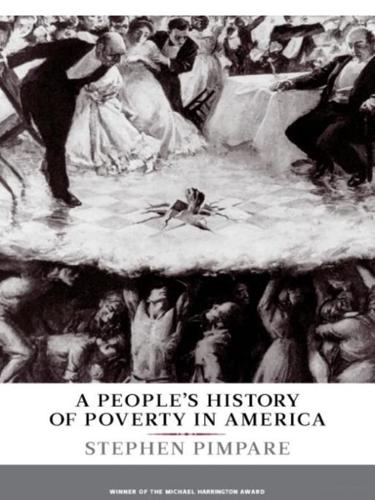
A People's History of Poverty in America
by
Stephen Pimpare
Published 11 Nov 2008
Slaves were typically given the balcony, and poor whites were offered, sometimes quite grudgingly, seats at the very back, until some enterprising philanthropists began fundraising for “free chapels,” segregated houses of worship expressly for the poorer classes, to be erected, if at all possible, next to the poorhouse. As historian Barbara Bellows acerbically observed:Many were quite happy to support efforts to bring the church closer to the poor as long as the church did not bring the poor closer to them.26 Economist Robert Solow makes the case succinctly, responding here to those who have argued that we would do well to leave efforts at relieving poverty to private charity:I cannot see that taking alms from the well-off is any less damaging to “independence” than is a wage supplement from the state, or even the dole. If anything, I would guess that the psychological-sociological balance favors the state.
…
See urban communities of concentrated poverty Smeeding, Timothy Smith, Adam Smith, Billy G. Smith, Mary Social Security actual effects and African Americans and labor market effects and Townsend Plan Social Security Act of 1935 (SSA) Society for the Prevention of Cruelty to Children Society for the Relief of Poor Widows Solow, Robert Soss, Joe soup kitchens South, American history of welfare in New Deal programs in See also poor whites, Southern Southern Poverty Law Center Spargo, John Special Supplemental Nutrition Program for Women, Infants and Children (WIC) Spinks, Jackie Spott, Robert St. Mary’s Settlement and Day Nursery (Chicago) Stack, Carol Stadum, Beverly Stansell, Christine sterilization, forced Student Nonviolent Coordinating Committee (SNCC) subprime mortgage crisis (2007–2008) substance abuse alcohol and diminished expectations and disapprobation directed at the poor drugs and female tramps and homelessness and moral reform in colonial asylums and TANF recipients and welfare eligibility and women on welfare Subway Beggar (Grachow) Sumner, William Graham Supplemental Security Income (SSI) participation rates Sussman, Marvin Syracuse University’s Maxwell School (2004 poll on income inequality) Tally’s Corner (Liebow) Tammany Hall Taylor, Frederick Winslow teen births teenagers and “bum hunting,” Temporary Assistance to Needy Families (TANF) tenant farming Tennessee Valley Authority (TVA) jobs Terkel, Studs Textile Workers Union Thirteenth Amendment Thompson, F.T.
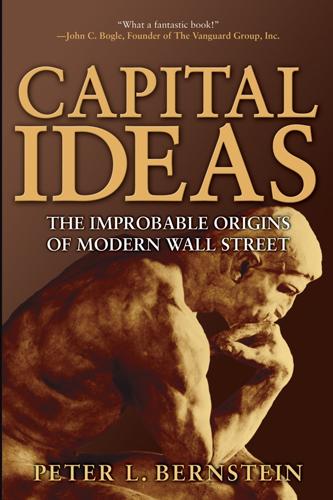
Capital Ideas: The Improbable Origins of Modern Wall Street
by
Peter L. Bernstein
Published 19 Jun 2005
In economics, firms maximized profits and that was that.”7 The hot topic in economics at the time was what was known as optimal growth theory, which sought to show how the economy can best adjust the mix of saving, investment, and consumption to fiscal and monetary policy to attain the highest sustainable rate of real growth. The leading economists in this area included Robert Solow and Kenneth Arrow, both of whom became Nobel laureates. Leland was convinced that the stock market played a role in determining optimal outcomes for the real economy. To prove his point, his doctoral dissertation combined the dynamics of the real economy with the uncertainty of portfolio theory.
…
Reagan, Ronald Regan, Donald Renshaw, Edward Rhea, Robert Ricardo, David Rinfret, Pierre Roberts, Harry Robinson, James Harvey Roll, Richard Roos, Charles Rosenberg, Barr Rosenberg, June Ross, Stephen Rothschild, Nathan Roy, A. D. Rubinstein, Mark Sametz, Arnold Samuelson, Paul Savage, Jimmie Scheinman, William Scholes, Myron Schumpeter, Joseph Schwayder, Keith Schwert, G. William Sharpe, William Shepard, Alan Shiller, Robert Shultz, George Smith, Adam “Smith, Adam” Smith, Edgar Lawrence Solow, Robert Sprenkle, Case Stevenson, Adlai Tobin, James Treynor, Jack Tsai, Gerald Veblen, Thorstein Vertin, James Von Neumann, John Wallis, Allen Wells, Henry Wendt, Lloyd Weston, J. Fred Whitney, Richard Williams, Dave Williams, John Burr Wood, Kimba Working, Holbrook Subject Index ABC of Speculation, The (Nelson) Advanced Theory of Statistics, The (Kendall) Aetna Insurance “Aircraft Compartment Design Criteria for the Army Deployment Mission” (Sharpe) American & Foreign Power American Economic Review (AER) American Express Company American Finance Association American National Bank (Chicago) American Stock Exchange American Telephone and Telegraph (AT&T) Amsterdam Stock Exchange “Analysis of Economic Time Series, The” (Kendall) Apple Computer Arbitrage Arbitrage Pricing Theory (APT) Arthur D.
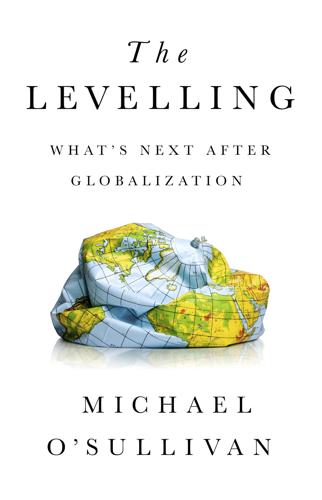
The Levelling: What’s Next After Globalization
by
Michael O’sullivan
Published 28 May 2019
Many developing countries run into the limits of physical infrastructure–led growth without the productivity boosts that come from intangible factors. Intangible Infrastructure There is a strong link between the level of GDP per capita a country enjoys and the quality of its intangible infrastructure. Singapore, the Netherlands, and Sweden are good examples here. The Nobel Prize–winning economist Robert Solow studied the role that intangible factors like technology and human capital play in generating economic growth. For developed countries, Solow suggests that it is largely technological advances (and I would add, a better understanding of how to use technology) and improvements in human capital that determine the level of economic growth.
…
See poles in multipolar world Reich, Robert, 127 religion, 90 Remonstrance of Many Thousand Citizens (Overton), 85–86 “rent economy,” 142 republic, 3, 278 Republican Party (US), 269–270 La République En Marche, 110–111, 117 research, and productivity, 142–143 Revival Bank, 300–301 “Rheinish capitalism,” 202 Richmond Federal Reserve, 214 right-wing parties, 54–55, 105–107 Riksbank, 171, 177 risks (financial) consequences, 206, 208–209 and debt, 173–174, 184–185, 201, 205–207, 209 treaty on, 184, 207–208 The Road to Somewhere (Goodhart), 79–80 Rodrik, Dani, 237–238 Rome and Roman Empire, 151, 152 Romer, Paul, 69 Roosevelt, Franklin D., 291 Roosevelt, Theodore, 293–294 rule of law, and economy, 161–162 Russia, 137, 143–144, 160, 218–219, 296 same-sex marriage, 49–50 Santa Fe Institute, 74 Santolaria, Nicolas, 26 Sawers, John, 249 Scales, Bob, 67 Schott, Peter, 35 Schröder, Gerhard, 107 Schwab, Klaus, 142 science, ideas and paradigm shifts, 71–72 Scotland, 87, 251–253 search engines, 214 Second French Empire, 227 Selassie, Bereket, 281 Shanghai Cooperation Organization (SCO), 245 Shiller, Robert, 65 Shorrocks, Tony, 42 Skilling, David, 271 skyscrapers, as power, 211–212 small-sized nations in multipolar world, 244, 245–246, 259–262 Smoot, Reed, 65 Smoot-Hawley Tariff Act (1930), 65 social change, 47–51 social media, 49, 74, 107, 108–109, 141, 273–274 social mobility, 47 soft vs. hard power, 219–220, 223–224 Solow, Robert, 159–160 Somewhere/Anywhere theory, 79–80 Soros, George, 107 sortition, 109–110 Spanberger, Abigail, 129 Special Drawing Rights (SDR) bonds, 265–266 Spinoza, 94 St. Mary’s Church, 3, 81, 82 Stability and Growth Pact, 195 stock market. See financial markets strength of countries, 158–159, 162–164, 165 Sufi, Amir, 176 Survey of Consumer Finance, 43 Sweden, 6 Syriza, 110 Taleb, Nassim, 69 technology automation issues, 46 in China, 224, 231, 272–273 economy and economic growth, 142, 214 first globalization, 58, 60, 61–62 as force, 58–59 frameworks and standards, 297–299 and globalization, 213–214 and governments, 272–273 and inequalities, 46 interconnections worldwide, 8–9 Levellers as model, 96, 98, 99–100 pace of change, 26 political parties, 115 and productivity, 145 regulation, 275–276 as solution, 26 transparency, 262 Thatcher, Margaret, 133 Thirty Years’ War, 240 314 Action, 129 “Thucydides’s Trap,” 224 TomTom Traffic Index, 50 top 1 percent of wealthy, 40, 42 “total factor productivity,” 144 trade China, 33, 216, 232 and first globalization, 59–60 and globalization, 30, 31, 32–33 and jobs, 35 Levellers’ demands, 89 policy and agreements, 32–33 and politics, 34, 35–36 problems and disputes, 24, 33–34 protectionism, 34 recess, 30, 31, 32 US vs.
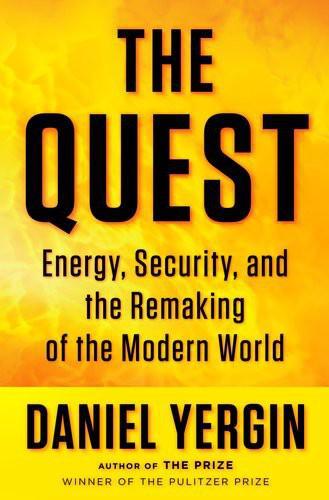
The Quest: Energy, Security, and the Remaking of the Modern World
by
Daniel Yergin
Published 14 May 2011
THE PUBLIC GOOD Spending on R&D has generally been recognized as a government responsibility because it is a public good. Beyond what the private investor can expect, R&D provides benefits in the form of higher economic growth, improved quality of life, and national security. When receiving the Nobel Prize in economics, MIT economist Robert Solow emphasized the central importance of innovation—the transfer of technology “from laboratory to factory”—to economic growth. Energy R&D is required to meet the more specific challenges of energy supply, usage, security, environmental impact—and, increasingly, climate change. The time horizons for energy innovation are often far longer than can be sustained either by companies, under quarterly-profit pressure, or by investment funds, which aim to exit an investment within five years.
…
Chapter 28: Science Experiment 1 Clay Christensen, The Innovator’s Dilemma (Cambridge: Harvard University Press, 2003). 2 Steven Chu autobiography, Nobel Prize Web site. 3 Interviews with Raymond Orbach and John Tully. 4 Chu autobiography, Nobel Prize Web site. 5 Vernon W. Ruttan, Is War Necessary for Economic Growth?: Military Procurement and Technology Development (Oxford: Oxford University Press, 2006), pp. 21–27. 6 Robert Solow, “Growth and After,” Nobel Prize lecture, November 18, 1987; Steven Koonin, “From Energy Innovation to Energy Transformation,” pp. 4, 8–10 (scrubbers); MIT Energy Initiative, The Future of Natural Gas: Interim Report (Cambridge: Massachusetts Institute of Technology Press, 2010) (coal bed methane). 7 DOE, “DOE Nobel Laureates” and “Laboratories,” U.S.
…
Hoboken, N.J.: John Wiley, 2006. Simonds, William Adams. Edison: His Life, His Work, His Genius. Indianapolis: Bobbs-Merrill, 1934. Smith, Adam. Paper Money. New York: Summit Books, 1981. Soares de Oliveira, Ricardo. Oil and Politics in the Gulf of Guinea. New York: Columbia University Press, 2007. Solow, Robert. “Growth and After.” Nobel Prize Lecture. November 18, 1987. Sonnichsen, Ole. The Winner: The Dramatic Story of Vestas. Copenhagen: Gads Forlag, 2009. South Coast Air Quality Management District. The Southland’s War on Smog: Fifty Years of Progress Toward Clean Air. May 1997. Sperling, Daniel, and Deborah Golden.
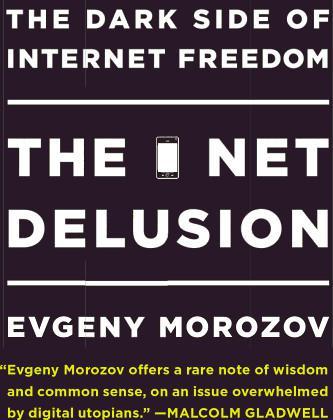
The Net Delusion: The Dark Side of Internet Freedom
by
Evgeny Morozov
Published 16 Nov 2010
Who could have predicted that the development of “labor-saving devices” had the effect of increasing the burden of housework for most women? Similarly, the introduction of computers into the workforce failed to produce expected productivity gains (Tetris was, perhaps, part of some secret Soviet plot to halt the capitalist economy). The Nobel Prize-winning economist Robert Solow quipped that “one can see the computer age everywhere but not in the productivity statistics!” Part of the problem in predicting the exact economic and social effects of a technology lies in the uncertainty associated with the scale on which such a technology would be used. The first automobiles were heralded as technologies that could make cities cleaner by liberating them of horse manure.
…
See also Surveillance Social network(s) and censorship and democracy, threats to and foreign policy and Internet, regulation of and Internet search surveillance and narcissism See also individual social networks; Social network activism; Social network lawlessness; Social network surveillance Social problems Solow, Robert Solzhenitsyn, Aleksandr Somalia Soros, George South Korea “Sovereignty in Cyberspace” (Franzese) Soviet republics The Soviet Story (documentary) Soviet Union collapse of and information technology Spectator Specter, Arlen Speer, Albert Spin. See also Propaganda; Spinternet Spinternet.
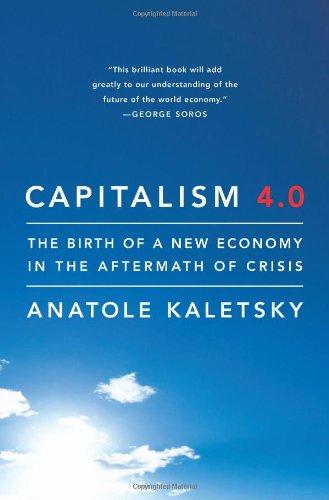
Capitalism 4.0: The Birth of a New Economy in the Aftermath of Crisis
by
Anatole Kaletsky
Published 22 Jun 2010
Better still, the neoclassical synthesis, in contrast to the classical economics of the nineteenth-century, made room for the post-Depression political realities of welfare safety nets and active demand management to stabilize business cycles, by explaining that the Fordist economic machine needed occasional lubrication, “pump-priming,” and “kickstarting” by a benignly probusiness government. Thus the new paradigm was able to co-opt both the Left and the Right. Conservatives were happy to describe the new orthodoxy as the neoclassical synthesis, while progressives such as Paul Samuelson and Robert Solow felt able to call it neo-Keynesian economics. In this process of accommodation to the postwar ideological consensus, however, the most important insight of macroeconomics was lost: Financial instability was no longer recognized as a natural consequence of uncertainty about the future; financial cycles were now merely aberrations caused by imperfections that could, at least in theory, be ironed out by government intervention.
…
./ administration; Lehman Brothers collapse Pension/health entitlements People’s Daily, China Personalities importance Petronius, Gaius Phelps, Edmund Planck, Max Platform Companies (Platco) Plato “Policy Ineffectiveness Proposition” (Sargent/Wallace) Prince, Charles Protectionism Protestant Ethic and the Spirit of Capitalism, The (Weber) Public Choice theory Rajan, Ranghuram Ramo, Joshua Rand, Ann Rational Expectations Hypothesis (REH) Rationality concept Reagan, Ronald See also Thatcher-Reagan revolution Reflexivity description See also Theory of Reflexivity Reich, Robert Reinhart, Carmen Ricardian Equivalence theory, Barro Ricardo, David Robinson, Joan Rogoff, Kenneth Roosevelt, Franklin Rowthorn, Robert Rumsfeld, Donald Samuelson, Paul Sargent, Thomas Sarkozy, Nicolas Savings Schumpeter, Joseph Seabright, Paul Sen, Amartya Shakespeare Shiller, Robert Short sellers Simon, Herbert Simon, John Singh, Jaswant Skidelsky, Robert Slaughter, Anne-Marie Smith, Adam Capitalism 1 and ideas/impact “invisible hand” of competitive markets concept Smith, Vernon Solow, Robert Sorkin, Andrew Ross Soros, George boom-bust cycles and boom-bust cycles/Theory of Reflexivity “market fundamentalism” term/concept South Sea Bubble/effects Sovereign wealth funds Specialization Spence, Michael Stagflation 1970s causes/conditions for description threat of Stiglitz, Joe Stimulus.
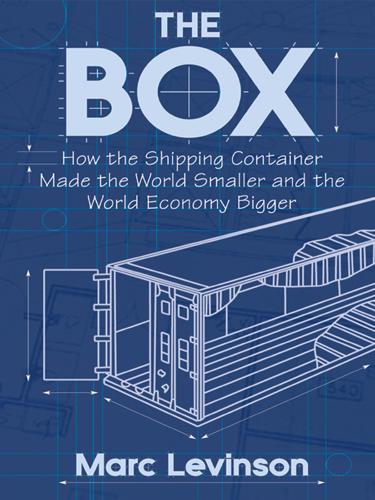
The Box: How the Shipping Container Made the World Smaller and the World Economy Bigger
by
Marc Levinson
Published 1 Jan 2006
On transportation and urban development, see James Heilbrun, Urban Economics and Public Policy (New York, 1974), p. 32, and Edwin S. Mills and Luan Sendé, “Inner Cities,” Journal of Economic Literature 35 (1997): 731. On aviation, see Caroline Isard and Walter Isard, “Economic Implications of Aircraft,” Quarterly Journal of Economics 59 (1945): 145–169. 12. The seminal article along this line was Robert Solow, “Technical Change and the Aggregate Production Function,” Review of Economics and Statistics 39, no. 2 (1957): 65–94. On the problems of innovation, see Joel Mokyr, “Technological Inertia in Economic History,” Journal of Economic History 52 (1992): 325–338; Nathan Rosenberg, “On Technological Expectations,” Economic Journal 86, no. 343 (1976): 528; and Erik Brynjolfsson and Lorin M.
…
“Ocean Shipping Cartels: A Survey.” Review of Network Economics 3, no. 2 (2004). Slack, Brian. “Pawns in the Game: Ports in a Global Transportation System.” Growth and Change 24, no. 4 (1993). Slesinger, Reuben E. “The Pace of Automation: An American View.” Journal of Industrial Economics 6, no. 3 (1958): 241–261. Solow, Robert. “Technical Change and the Aggregate Production Function.” Review of Economics and Statistics 39, no. 2 (1957): 65–94. Stocker, H. E. “Cargo Handling and Stowage.” Society of Naval Architects and Marine Engineers, November 1933. Summers, Clyde W. “Admission Policies of Labor Unions.” Quarterly Journal of Economics 61, no. 1 (1946).
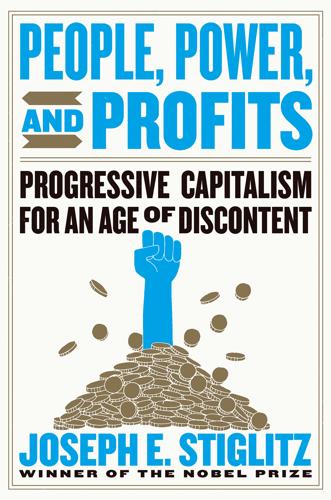
People, Power, and Profits: Progressive Capitalism for an Age of Discontent
by
Joseph E. Stiglitz
Published 22 Apr 2019
Stiglitz, “Human Fallibility and Economic Organization,” American Economic Review 75, no. 2 (1985): 292–96; and Raaj Sah and Joseph E. Stiglitz, “The Architecture of Economic Systems: Hierarchies and Polyarchies,” American Economic Review 76, no. 4 (1986): 716–27. 21.An important set of associated institutions are our educational institutions, which train individuals in how to discover and assess the truth. 22.Robert Solow of MIT showed that the overwhelming fraction of increases in standards of living arises from advances in science and technology, work for which he received the Nobel Memorial Prize in Economics in 1987. His two classic papers were “A Contribution to the Theory of Economic Growth,” Quarterly Journal of Economics 70, no. 1 (1956): 65–94; and “Technical Change and the Aggregate Production Function,” Review of Economics and Statistics 39, no. 3 (1957): 312–20.
…
Holder, 342–43n44 Sherman Antitrust Act (1890), 68 Shiller, Robert, 63–64 shortsightedness, 104–5 short-term interests, 84, 112 short-term stock trading, 207 Silicon Valley, 16, 117 Sinclair, Upton, 144 single payer system, 214 skill-biased technological changes, 304n19 slavery, 161, 271n3 small and medium-sized enterprises (SMEs), 102, 105–6 Smith, Adam, 152 on collusion among businesses, 51, 66 and Enlightenment, 10 and limits of markets, 24 and moral sentiments, 229 Wealth of Nations, 8–9 Snowden, Edward, 127 Social Darwinism, 309–10n42 social insurance programs, 141, 189 “socialist market economy with Chinese characteristics,” 95 social justice government involvement in economy and, 142 and intergenerational transmission of advantage/disadvantage, 199–201 and labor market, 197–99 restoring, 197–201 social media, 96, 131–36; See also Facebook social protection, 188–91 government and, 231 unemployment insurance, 189–90 universal basic income, 190–91 Social Security, 13, 142, 189, 210, 214–16, 242 Social Security Administration, 217 Social Security Trust Fund, 216 society, economic behavior and, 30 soft power, 29, 235–36 solar panels, Chinese, 91–92 Solow, Robert, 263n22 special interests, 146; See also lobbyists specialization, 9 SpeechNow.org v. FEC, 332n29 “splinternet,” 135 split shifts/split scheduling, 66, 197 Standard Oil, 134 standards of living after 1800, 264n23 government-sponsored research and, 232 growth and, 181 increases over past 250 years, 11–12 international comparisons of, 35–37 knowledge and, 183–84, 240, 263n22 tariffs and, 91 Stanford University, 16 Staples, 125 state capitalism, 95 stock market, 112, 207, 214, 236 streaming video, 147–48 structural reforms, 70 student debt, 220 subsidies, 96–97 “sugar high,” from 2017 tax bill, 185, 236–38 suicide, 42 Super PACs, 332n29 supply and demand, labor and, 82, 122, 198 supply chains, 92 supply-side economics, xv, xvii, 25, 195 Supreme Court gene patent cases, 74–75, 127 lack of enforcement power, 241 on limits to freedom of speech, 133 loss of status as fair arbiter, 165–67 and power of money in politics, 169–70 Senate and, 6 Voting Rights Act gutted by, 202 Sweden, 25, 133, 269n45 Switzerland, 193 Syprine, 71 tariffs, 35, 87, 90–93 taxation of data, 131 educational system and, 220 of financial institutions, 207 and free-rider problem, 156 rent-seeking and, 268n43 restoring fairness to system, 205–8 and structural transformation from technological change, 123 and Sweden’s economic success, 25 and technological change, 122 of universities, 16, 184 tax avoidance, 108 tax bill (2017), 85 Affordable Care Act and, 212–13 damage to future generations from, 204 failed ideas behind, 184–85 flaws and loopholes, xvii–xix, 85, 258n6 infrastructure and, 183 public opinion of, 160 real estate interests and, 168–69 regressiveness of, 175, 194, 206 research universities and, 16, 184 share buybacks, 109 “sugar high” from, 236–38 trade deficit and, 90 Trump and, 152 as voodoo economics, xv tax cuts effects of, 268–69n44, 268n43 growth slowed by, 25, 26 under Trump, See tax bill (2017) tax revenue, globalization and, 84–86 teachers, 123, 200, 201 teams and teamwork, 225–26 Tea Party movement, 114, 174, 178 technology AI, See artificial intelligence Big Data, See Big Data challenges posed by, 117–37 customer targeting, 125–26 data regulation, 128–31 effect on individuals/social interactions, 136 employment and, 118–23 job destruction and, 86–87 lower wages and increased inequality from, 122–23 market power and, 73–74, 123–35 privacy and, 127–28 real pace of innovation, 118–19 threat to democracy posed by, 131–35 wealth of nation and, xiv telecom industry, 49 Ten Commandments, 143 term limits, 166, 167 Thaler, Richard, 126 Thatcher, Margaret, xiv–xv Thiel, Peter, 47, 104 Thomas, Clarence, 165 three-fifths clause, 161 Time Warner, 325n17 tolerance, 228 TPP (Trans-Pacific Partnership), 87 trade agreements, 80, 83–84, 87–89, 91, 99 trade deficit, 35, 89–91, 307n32 trade imbalance, budget deficits and, 90 trade liberalization, 82; See also globalization Trade-Related Aspects of Intellectual Property Rights (TRIPS), 89 trade wars, 93–94 transaction costs mortgage reform and, 217 public vs. private sector, 189, 214 of voting, 161 Trans-Pacific Partnership (TPP), 87 transparency, disclosure laws and, 171 Treasury Department, US, 173 trickle-down economics, xxv, 38, 82–83; See also supply-side economics TRIPS (Trade-Related Aspects of Intellectual Property Rights), 89 Trump, Donald, and administration; See also tax bill (2017) and Affordable Care Act, 212–13 attack on checks and balances, 233–34 attack on Enlightenment ideals, 14–22 attack on judiciary, 17, 165 attack on political system, 164 attack on publicly-funded research, 184 attack on truth, 177, 234 attack on truth-telling institutions, 14–18 2008 bank bailout and rise of, 114 and business community, 14–16 cost-benefit analysis under, 205 election of, 3 and globalization, 80–81 and immigration, 181 and lack of consequences for elites in Great Recession, 152 lack of rational discussion of nation’s problems, 240 Nazi’s rise in Germany compared to, 15–16 and need for good governance, 234–35 net neutrality repeal, 147 and protectionism, 89 public institutions undermined by, 231–33 Reagan administration’s parallels with, xvi and “rigged” system, 21 rule of law disregarded by, 80–81 tax “reform,” See tax bill [2017] and TPP, 87 and trade wars, 93–94 Trumponomics, xx; See also tax bill (2017) trust, as essential to economic system, 104 truth Enlightenment’s concern with, 10 Trump’s attack on, 14–18, 234 Tüfekçi, Zeynep, 126 Turing Pharmaceuticals, 296n72 twin deficits, 307n30 Twitter, 132 UBI (universal basic income), 190–91 Ulukaya, Hamdi, 266n33 unemployment automation and, 119–20 labor markets and, 65 market economies and, 23 universal basic income, 190–91 as waste of resources, 193 unemployment insurance, 189–90 unions, 66–67, 86–87 union shops, 67 United Kingdom, independent public media in, 133 US Trade Representative (USTR), 99–100 universal basic income (UBI), 190–91 universal health care, 13 universities income inequality and, 200 and 2017 tax bill, 16, 184 Trump’s attack on, 16–17 University of California, Berkeley, 16 University of Chicago, 68 unskilled workers, See low-skilled workers urbanization, 153, 187 USTR (US Trade Representative), 99–100 usury laws, 145 Valeant, 71 values American, 222 as cause of current problems, 239–40 conservatism vs. embracing change, 226–28 globalization and multiple systems of, 94–97 market economy and, 30 myths and, 224–26 shared, 228–30 social reality vs., 223–28 vertical mergers, 325n17 Visa, 60 Vlingo, 286n34 voodoo economics, xv voter disenfranchisement/suppression, 161–62 voting, 246 voting reform, 161–63 Voting Rights Act (1965), 202 wages after Great Recession, 193–94 class disparities, 38–39 globalization and, 80, 82 market power and, 65–66 new technologies and, 122–23 productivity and, 38 teachers and incentive pay, 201 Wall Street, 173; See also stock market Walmart, 71–72 Walton family, 43, 279n40 wealth concentration among three richest Americans, 5 creating vs. taking, 49–50 curbing the influence on democracy, 176–78 and inequality of opportunity, 44–45 and manipulation of public opinion via new technology, 132 and media control, 133 wealth creation, xiv, 26 wealth income ratio, 54 wealth inequality, 43, 177–78, 206, 238 wealth of nations alternative theories on sources of, 22–31 attack on sources of, 14–22 elements of, xiv, xxiv supply-side economics and, 25 true sources of, 8–9 unfettered markets and, 23–25 Wealth of Nations, The (Smith), 8–9 wealth redistribution, 50, 64 weather-related disasters, 207 Wells Fargo, 103 WhatsApp, 70, 73, 124 women and labor force growth, 181 life expectancy and socioeconomic status, 41 and teacher salaries, 200 wage inequality, 41 work, See jobs work–life balance, 192, 197 World Bank, 80 World Bank human capital index, 36 World Trade Organization (WTO), 83 World War II, 120, 210 Wynn, Steve, 331n26 Yale University, 126 Youn, Monica, 333n35 zero-sum thinking, 19 Zuckerberg, Mark, 117 ALSO BY JOSEPH E.

A Beautiful Mind
by
Sylvia Nasar
Published 11 Jun 1998
Bell, op. cit. 28. Atle Selberg, interview. 29. Eugenio Calabi, interview, 3.2.96. 30. Letter from John Nash to Martha Nash Legg, 11.4.65. 31. Stein, interview. 32. Hörmander, interview. 33. Harold Kuhn, e-mail, 7.97. 34. Paul A. Samuelson, interview. 35. William led Martin, interview, 9.7.95. 36. Robert Solow, professor of economics, MIT, interview, 1.95. 37. Martin, interview. 38. Cathleen Morawetz, interview, 2.29.96. 39. Alicia Nash, interview, 1.3.97. 40. Ibid. 41. John Nash, personal communication, 3.22.96. 42. Eva Browder, interview, 9.6.97. 43. Ibid. 44. A. Nash, interview 45. F. Browder, interview. 46.
…
Also membership application, Institute for Advanced Studies, tall 1958. 14. Letter from Albert W. Tucker to John Nash, 10.8.58. 15. Letter from Albert W. Tucker to Sloan Foundation, 10.8.58. 16. Letter from Albert W. Tucker to Guggenheim Foundation, 11.26.58. 17. Gian-Carlo Rota, interview, 11.14.95. 18. Robert Solow, emeritus professor of economics, MIT, interview, 1.95. 19. Letter from John Nash to Virginia Nash, 10.15.58. 20. New York Times, 11.14.63. 21. Paul S. Cohen won the Fields in 1966 and the Bôcher in 1964. The sketch of Paul Cohen is based on interviews with Raoul Bott, 11.95 and 11.5.96; Lennart Carleson, 10.18.95; Elias Stein, 12.28.95; Felix Browder, 11.2.95; Adriano Garsia, professor of mathematics, University of California at San Diego, 12.31.95; Lars Hörmander, 2.13.97; Jiirgcn Moser, 3.21.96; Jerome Neuwirth, 5.27.97. 22.
…
H., 124 Segal, Irving E., 103 Selberg, Atle, 229, 230, 232, 241, 245, 296, 297, 312 IAS membership arranged by, 308 visiting positions sought through, 309 Selten, Reinhard, 98, 354, 362, 374 at 1961 conference, 297 Nobel deliberations on, 363, 364, 371, 373 Serling, Rod, 301 Serre, Jean-Pierre, 312 set theory, axiomatization of, 81 Shapiro, Harold N., 147, 245, 367 Shapley, Harlow, 39, 100, 152 Shapley, Lloyd S., 39, 99–103, 112, 113, 117, 119, 120, 122, 152, 208, 321, 388 in Econometric Society, 354 Nash’s arrest and, 187 on Nash’s illness, 299–300 in Nobel deliberations, 363, 364 remission noted by, 350 von Neumann prize arranged by, 338–339, 354 Sheldon, Elizabeth, 27–28 Shelley, Mary Wollstonecraft, 273 Shelley, Percy Bysshe, 269 Sherman, Agnes, 284 Sherman, Michael, 284 Sherman Institute, 26 Shubik, Martin, 63, 101, 102, 120, 208, 286 in Econometric Society, 354, 355 Nobel deliberations and, 366 Siegel, Carl Ludwig, 226 Siegel, George, 43, 45 Siegel, Robert, 42 Simon, Herbert, 108, 117 Singer, Isadore M., 142, 144–45, 162, 203 Nash’s McLean commitment and, 260 singularities, canonical resolution of, 318 Slater, J. C, 222–23 Sloan Fellowships, 202, 236, 280 Smith, Adam, 15, 88, 119, 151, 374–75 Smith (Nash), Martha (grandmother), 26 Social Democratic Party (Sweden), 359, 364, 366 Sohlman, Michael, 357 Solomon, Gustave, 144, 180 “So Long, Sucker,” 102 Solow, Robert, 134, 232, 233 Sophocles, 94 Soviet Union, 109, 110, 118, 119, 121 special theory of relativity, 51–52, 70, 86 Spencer, Donald, 93, 129–30, 131, 132, 141, 285, 291, 295 Carrier Clinic visits of, 307 description of, 130 IAS appointment obtained through, 296 Michigan position arranged by, 303, 304 Moore visited by, 341 Sputnik 106, 222 Stahl, Ingemar, 362, 364–72 Stahl, Ingolf, 362 Stanton, Alfred H., 259 Starr, Norton, 344 Stearns, A.
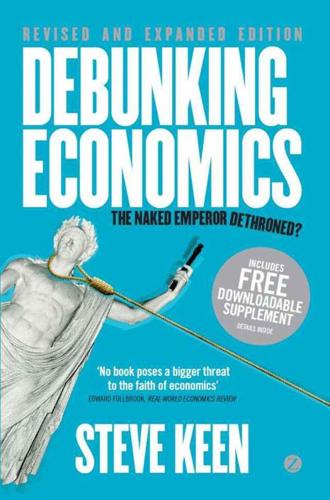
Debunking Economics - Revised, Expanded and Integrated Edition: The Naked Emperor Dethroned?
by
Steve Keen
Published 21 Sep 2011
(Ljungqvist and Sargent 2004: xxvi–xxvii) The problem for early would-be neoclassical macroeconomists was that, strictly speaking, there was no microeconomic model of macroeconomics when they began their campaign. So they developed a neoclassical macro model from the foundation of the neoclassical growth model developed by Nobel laureate Robert Solow (Solow 1956) and Trevor Swan (Swan 2002). They interpreted the equilibrium growth path of the economy as being determined by the consumption and leisure preferences of a representative consumer, and explained deviations from equilibrium – which the rest of us know as the business cycle – by unpredictable ‘shocks’ to technology and consumer preferences.
…
The economy would always be in equilibrium except for the impact of unexpected ‘technology shocks’ that change the firm’s productive capabilities (or his consumption preferences) and thus temporarily cause the single capitalist/worker/consumer to alter his working hours. Any reduction in working hours is a voluntary act, so the representative agent is never involuntarily unemployed, he’s just taking more leisure. And there are no banks, no debt, and indeed no money in this model. You think I’m joking? I wish I was. Here’s Robert Solow’s own summary of these models – initially called ‘real business cycle’ models, though over time they morphed into what are now called ‘Dynamic Stochastic General Equilibrium’ models: The prototypical real-business-cycle model goes like this. There is a single, immortal household – a representative consumer – that earns wages from supplying labor.
…
Shedlock, Mish Shiller, Robert shocks, exogenous short run short-term funding, dependence on Simulink system dynamics program Sippel, Reinhard size, importance of Smith, Adam; The Wealth of Nations Smith, Edgar, Common Stocks as Long Term Investment Smith, Yves social conflict, not taken into account social security social welfare; maximization of social well-being socialism; perceived inevitability of; scientific socialist economies, shortages in society, as sum of individuals soft budget constraint Solow, Robert Sonnenschein, H. F. Sonnenschein-Mantel-Debreu (SMD) conditions Sornette, Didier Soros, George South Sea Bubble speculation; debt-financed; in housing; on stock market Sraffa, Piero; alternative outlook of; and law of diminishing marginal returns; ‘The law of returns under competitive conditions’; neoclassical response to; on aggregation; The Production of Commodities by Means of Commodities; summing up of Sraffian economics stability: negative; of markets stagflation standard deviation measurement state, role in creating money static analysis Steedman, Ian Stevens, Glenn Stigler, George Stiglitz, Joseph stock market: behavior of; Keynes’s view of; volatility of Stoekel, A.

The Rise of the Network Society
by
Manuel Castells
Published 31 Aug 1996
But as soon as we raise this fundamental question we sense the complexity and uncertainty of the answer. Few economic matters are more questioned and more questionable than the sources of productivity and productivity growth.5 Academic discussions on productivity in advanced economies ritually start with reference to the pioneering work of Robert Solow in 1956–7 and to the aggregate production function he proposed within a strict neoclassical framework to explain the sources and evolution of productivity growth in the American economy. On the basis of his calculations he contended that gross output per man doubled in the American private non-farm sector between 1909 and 1949, “with 87 % of the increase attributable to technical change and the remaining 12 % to increased use of capital.”6 Parallel work by Kendrick converged toward similar results.7 However, although Solow interpreted his findings as reflecting the influence of technical change on productivity, statistically speaking what he showed was that increasing output per hour of work was not the result of adding more labor, and only slightly of adding capital, but came from some other source, expressed as a statistical residual in his production function equation.
…
Slouka, Mark (1995) War of the Worlds: Cyberspace and the High-tech Assault on Reality, New York: Basic Books. Smith, Merrit Roe and Marx, Leo (eds) (1994) Does Technology Drive History? The Dilemma of Technological Determinism, Cambridge, MA: MIT Press. Smith, Michael P. and Guarnizo, Luis E. (eds) (1998) Transnationalism from Below, New Brunswick, NJ: Transaction Books. Solow, Robert M. (1956) “A contribution to the theory of economic growth”, Quarterly Journal of Economics, 70: 65–94. —— (1957) “Technical change and the aggregate production function”, Revue of Economics and Statistics, 39: 214–31. Sorlin, Pierre (1994) Mass Media, London: Routledge. Sorokin, P.A. and Merton, R.K. (1937) “Social time: a methodological and functional analysis”, American Journal of Sociology, 42: 615–29.
…
Snyder, Mary Gail So, Alvin social contracts social movements social services social theory, time socialist government society: changing; elite; flexibility; flows; hyperspace; identity; inequality; jobless; secularization; segmentation; spatial patterns; technology; transformation; warfare; Western viewpoints Soete, Luc software software companies Solow, Robert Sony Sorlin, Pierre Sorokin, P. A. Soros, George Southern, R. W. Soviet Union: industrialism–informationalism; innovation; statism; time Soysal, Yasemin Nuhoglu space: elites; information technologies; labor division; placebased; social theory; society; time space of flows; architecture; cultural connectedness; elites; informational city; networks; space of places; time space of places space–time compression Spain; automobile industry; banking; Barcelona; employment patterns; Gonzalez; Internet use; Madrid; small and medium firms; socialist government Specter, Michael Sperry Rand Spielberg, Steven Sproull, Lee Staggs, Hillary Stakhanovism Stalin, Joseph Stalk, G.
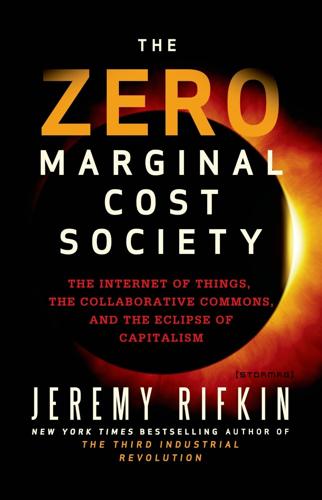
The Zero Marginal Cost Society: The Internet of Things, the Collaborative Commons, and the Eclipse of Capitalism
by
Jeremy Rifkin
Published 31 Mar 2014
When that finish line is crossed, goods and services become nearly free, profits dry up, the exchange of property in markets shuts down, and the capitalist system dies. Until very recently, economists were content to measure productivity by two factors: machine capital and labor performance. But when Robert Solow—who won the Nobel Prize in economics in 1987 for his growth theory—tracked the Industrial Age, he found that machine capital and labor performance only accounted for approximately 14 percent of all of the economic growth, raising the question of what was responsible for the other 86 percent. This mystery led economist Moses Abramovitz, former president of the American Economic Association, to admit what other economists were afraid to acknowledge—that the other 86 percent is a “measure of our ignorance.”3 Over the past 25 years, a number of analysts, including physicist Reiner Kümmel of the University of Würzburg, Germany, and economist Robert Ayres at INSEAD business school in Fontainebleau, France, have gone back and retraced the economic growth of the industrial period using a three-factor analysis of machine capital, labor performance, and thermodynamic efficiency of energy use.
…
F., 100, 104 Science, 155 Scientific American, 81–82, 199 “The Second Enclosure Movement and the Construction of the Public Domain” (Boyle), 181–182 sensors, use of, 11–13, 73–74, 143, 219, 230 Shareable, 238 SharedEarth, 239 sharing economy/good(s). see social capital and the sharing economy Siemens, 14–15 Simmel, Georg, 259 Skoll Foundation, 265–266 smart cities, 12 smart grid(s), 142–144, 149, 205–206, 294 Smart Power Infrastructure Demonstration for Energy Reliability and Security (SPIDERS), 295 “smart” and “sustainable” society. see The Internet of Things (IoT) Smith, Adam, 3, 11, 33, 40–41, 61, 107, 159, 306–307 Smith, Alan, 123 Smith, Zach “Hoken,” 94 social Commons. see Collaborative Commons entrepreneurs, 19, 21, 99, 101, 103, 119, 144–147, 238, 262–269, 298, 309 trust, 234 web, four phases of, 234 social capital and the sharing economy, 223–269 and advertising, the end of traditional, 247–252 and automobile sharing, 225–231 and bike sharing, 227 and a biosphere lifestyle, 297–303 and clothing/accessories sharing, 236 crowdfunding capital, 19, 146, 256–257, 269 democratizing currency, 259–262 and garden sharing, 239–240 and healthcare, 240–247 humanizing entrepreneurship, 263–266 and letting go of ownership, 231–234 and lodging sharing, 234–235 and music sharing, 232 rethinking work, 266–269 shift from exchange value to sharable value, 20 and the sustainable cornucopia, 273–296 and toy sharing, 235 and the transformation from ownership to access, 225–254 Social Darwinism, 63–64 social entrepreneurship, 262–266 Social Psychological and Personality Science, 282 solar power, 81–86, 90, 95, 98, 139–140, 145–148, 215, 227, 253, 256–257, 294–295 Solow, Robert, 71 Spencer, Herbert, 63–64 Spotify, 145 Stallman, Richard M., 174–176, 179, 182, 185 Standard Oil Company, 48–49, 51 The Structure of Scientific Revolutions (Kuhn), 9 suburbanization, caused by auto/rail industry, 53–54, 210 Summers, Lawrence, 7–9 surplus value, 41, 62 survival of the fittest, 63–64, 286 sustainability, 147, 213, 217, 236–237, 249, 274–275, 282, 309 swadeshi, Ghandhi’s idea of, 105–106 Swanson, Richard, 82, 145 Tawney, R.
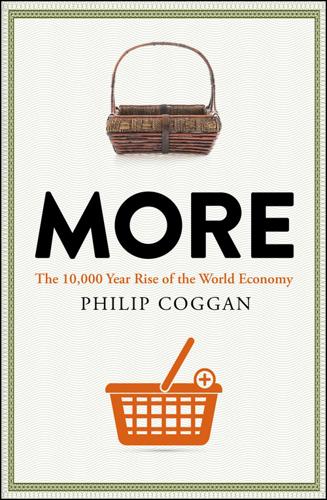
More: The 10,000-Year Rise of the World Economy
by
Philip Coggan
Published 6 Feb 2020
Eventually, however, this capital will produce diminishing returns and in the premodern world, a growing population would eventually be faced with food constraints, as Malthus argued. But instead of relying on more people or stuff, economies can advance by using the existing people and stuff more efficiently. In an article published in 1957, Robert Solow examined the history of the US economy between 1909 and 1949 and found that just one-eighth of the increase in output per worker was down to the availability of more capital, with the rest being the result of increased productivity.2 A crucial insight, attributed to both Kenneth Arrow and Paul Romer, is that knowledge can be subject to increasing returns.
…
Against the Grain: A Deep History of the Earliest States, Yale University Press, 2017 Seabright, Paul The Company of Strangers: A Natural History of Economic Life, Princeton University Press, 2010 Service, Robert The Penguin History of Modern Russia: From Tsarism to the Twenty-First Century, Penguin, 2015 Shiller, Robert Irrational Exuberance, third edition, Princeton University Press, 2015 Siebert, Horst The German Economy: Beyond the Social Market, Princeton University Press, 2014 Skidelsky, Robert John Maynard Keynes: The Economist As Saviour 1920–1937, Papermac, 1994 —— Money and Government: A Challenge to Mainstream Economics, Allen Lane, 2018 Smil, Vaclav Energy and Civilization: A History, MIT Press, 2017 —— “Nitrogen cycle and world food production”, World Agriculture, 2011 Smith, Adam The Theory of Moral Sentiments, Penguin Classics, 2010 (originally published in 1759) —— The Wealth of Nations, Wordsworth Editions, 2012 (originally published in 1776) Solow, Robert M. “Technical change and the aggregate production function”, The Review of Economics and Statistics, vol. 39, no. 3, August 1957 Soto, Hernando de The Mystery of Capital: Why Capitalism Triumphs in the West and Fails Everywhere Else, Black Swan, 2001 Srinivasan, Bhu Americana: A 400-Year History of American Capitalism, Penguin, 2017 Srinivasan, K.
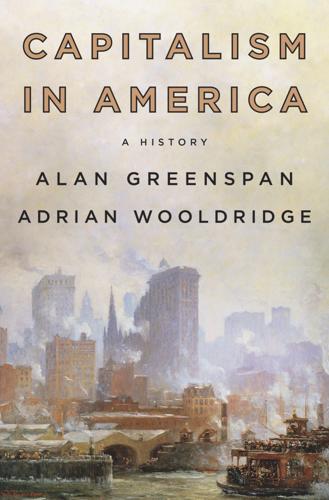
Capitalism in America: A History
by
Adrian Wooldridge
and
Alan Greenspan
Published 15 Oct 2018
The most commonly used measure of productivity is labor productivity, which is measured by output (value added) per every hour worked (OPH). Two big determinants of the level of labor productivity are the amount of capital (plant and equipment) employed in making things and the number of hours people work, adjusted for their level of education and skills. In the 1950s, “growth economists,” led by Moses Abramovitz and Robert Solow, discovered that the inputs of capital and labor do not fully account for all the growth in GDP. They dubbed the unexplained leftover multifactor productivity (MFP) or, sometimes, total factor productivity. The heart of MFP is innovation. MFP arises mainly from innovations applied to the inputs of capital and labor.
…
K., 204 Smith, James Monroe, 87 Smithsonian Institution, 58 Smoot, Reed, 230 Smoot-Hawley Tariff Act of 1930, 191–92, 230–32, 233, 245 Sobel, Robert, 319–20 social Darwinism, 163–65 Social Democratic Party, 188 Social Gospel movement, 177–78 socialism, 188, 276–77 Socialist Party, 184 social pathologies, 398–99 Social Register, 169 Social Security, 246–47, 252–54, 303, 306, 404–8, 440, 442–43 Social Security Act of 1935, 263 social structure, America’s changing, 432–38 “soft” money, 160–61 Solow, Robert, 13 Soo Locks, 51 South, the. See also Confederate States of America integration into national market, 213–16 North vs., 69–90 Southern Agrarians, 61–68, 423 South Sea Company, 135 Southwest Airlines, 330 Soviet Union, 4, 229, 241, 245, 255, 300, 376 Cold War, 279–80, 283–84 space race, 283–84 Specie Payment Resumption Act of 1875, 161 Speer, Albert, 271 Spencer, Herbert, 164, 168, 426–27 Sprague, Frank, 88 Sputnik, 283–84 Srinivasan, Bhu, 86 stagecoaches, 49 stagflation, 4, 301–2, 309–10 stagnation, 4, 399–416, 438 Stalin, Joseph, 4, 16 standardization, 147, 291–93 standard of living, 2, 59, 126, 418–19, 420, 427–30, 435–36 Standard Oil Company, 129, 136, 142 Standard Oil of New Jersey, 143, 149 Standard Oil Trust, 142–43, 176, 182 Standard & Poor’s, 138 Stanford, Leland, 90, 126, 352 Stanford Linear Accelerator System, 354 Stanford University, 126, 285, 350, 351–52, 355 Starbucks, 333 steamboats, 52–53, 54 steel industry, 11, 12, 14–15, 21, 51, 97–101, 123, 127–28, 132, 312, 314–16, 322 U.S. statistics, 315, 315 wholesale prices, 100, 145 steel strike of 1959, 314–15 Steinbeck, John, 225, 262 Stevens, George, 111 Stiles, T.
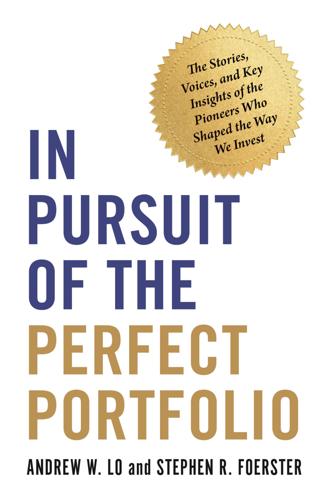
In Pursuit of the Perfect Portfolio: The Stories, Voices, and Key Insights of the Pioneers Who Shaped the Way We Invest
by
Andrew W. Lo
and
Stephen R. Foerster
Published 16 Aug 2021
And that’s what I did. If I had been born ten years later, I would have probably got my PhD in finance.”7 Siegel’s dissertation, completed in 1971, was titled “Stability of a Monetary Economy with Inflationary Expectations.” His committee was a powerhouse of present and future Nobel laureates in economics: Robert Solow, his chair, and members Franco Modigliani and Paul Samuelson. Siegel also acknowledged his fellow students Robert Merton and Robert Shiller (featured in chapters 7 and 9, respectively), also future Nobel Prize winners, who provided encouragement and helped him with the formulation of a key component in his dissertation.
…
Sharpe Associates established by, 74 Sharpe ratio, 74 Shiller, Robert (Bob), 226–54, 292; academic career of, 230–31; on bubbles, 241–43; connections to other pioneers, xiv; cyclically adjusted price-to-earnings ratio and, 246–47; dissertation of, 230; on diversification, 252; early life of, 227–28; education of, 228–30; on efficient markets, 82, 97, 232–36; on Fed leadership’s expression of opinions about market, 237–40; on financial advisers, 253; on financial innovations, 253–54; housing price index of, 247–51; interest in economics, 228; MacroShares and, 250–51; market timing and, 252–53, 318; as Nobel Prize winner, 83, 243, 283; on overvaluation of stock market, 303–4; Perfect Portfolio of, 251–54, 317–18; on price-earnings ratio, 303; publications of, 230, 232–33, 249, 301; on rational expectations, 229–30, 232–34; relationship with Siegel, 300–301; on tulip bubble, 9; unconventional nature of, 231–32 Siegel, Bernard, 281 Siegel, Jeremy, 229, 239, 281–307; academic career of, 285–86; on asset allocation, 295, 306–7; on baby boomer retirement effect on investor portfolios, 299–300; connections to other pioneers, xiv; on cyclically adjusted price-to-earnings ratio, 301–2; dissertation of, 283–84; early life of, 281–82; education of, 282–83; on equity premium, 288–91; on exchange-traded funds, 304–5; on forward exchange rate, 284–85; on growth traps, 298–300; guidelines to successful investing, 305; on overvaluation of stock market, 303; Perfect Portfolio of, 305–7, 318–19; on price-earnings ratio, 297–98, 299, 302, 303, 305, 306, 307; publications of, 229, 281, 283–85, 288–95, 296–300, 305–6; relationship with Friedman, 285; relationship with Shiller, 300–301; on risk, 294–95; on technology sector overvaluation, 295–98; at WisdomTree Investments, 304 Siegel’s Paradox, 284–85 Simon, Herbert, 22 “A Simplified Model for Portfolio Analysis” (Sharpe), 61–62 Sims, Christopher, 230 Singer Corporation, Merton’s investment in, 176 single-index model, 58–61 Sinquefield, Rex, 46, 109 smart beta, Ellis on, 274 SmartNest, 189 Smith, Edgar Lawrence, 292 Smith, Harrison, 124 Société des Moulins de Bazacle, 8 Solow, Robert, 283 South Sea Company, 11–13 S&P/Case-Shiller Home Price Index, 248–51 speculation, investing vs., Markowitz on, 33–34 Sprenkle, Case, 152 “Stability of a Monetary Economy with Inflationary Expectations” (Siegel), 283–84 Standard & Poor’s (S&P), 248, 251 Standard Oil of New Jersey, growth trap and, 298–99 Steinberg, Jonathan (Jono), 304 Steinberg, Saul, 304 Steinberger, Jack, 174 Stewart, Ian, 148 Stigler, George, 166 stock market: bubbles in (see bubbles); business cycles and, Siegel’s interest in, 286–88; cyclically adjusted price-to-earnings ratio and, 246–47; Fed leadership’s expression of opinions about, 237–40; irrational exuberance and, 237–39; Shiller/Siegel controversy over overvaluation of, 302–4; Trump’s election and, 301 stock market crashes: of Black Monday (October 19, 1987), 236–37; Fama on, 245; of 1929, Bogle family and, 114 Stocks for the Long Run (Siegel), 229, 281, 289, 291–95, 300, 305–6 stock splits, Fama’s research on, 90–93 Strange, Robert, 258 “Studies in the Theory of Risk Bearing” (Mossin), 71 Stulz, René, 108, 110–11 substitution swaps, 211 swaps, Leibowitz and Homer’s memorandum on, 211–12 Swensen, David, 219, 269, 270–71 target date funds, 224 Target Date Retirement Income Funds, 196, 197 taxes, 48, 322; Bogle on, 135; corporate, 1964 cut in, 260; Ellis on, 279 technical analysis, 88, 89 technology sector overvaluation, Siegel on, 295–98 terminal wealth, Scholes on, 167 Tesler, Lester, 87 Texas Instruments calculators, 161 Thaler, Richard (Dick): on equity premium, 290; on market efficiency, 245; as Nobel Prize winner, 83, 245, 290; publications of, 245; relationship with Fama, 245 Thales of Miletus, 4–5 Theiler, Max, as Nobel Prize winner, 174 The Theory of Finance (Fama and Miller), 108 The Theory of Interest, as Determined by Impatience to Spend Income and Opportunity to Invest It (Fisher), 15 The Theory of Investment Value (Williams), 15, 23, 28 “The Theory of Speculation” (Bachelier), 83 Thorndike, Doran, Paine & Lewis, 121 three-factor model, 102–5 Three P’s of Investments, 322–23 time value of money, 2 timing: achieving financial goals and, 332; market timing and, 318 Timmons, Bruce, 228 Tobin, James, 22, 39, 231 “To Get Performance, You Have to Be Organized for It” (Ellis), 261 tokens, for ancient record keeping, 2 Toronto Maple Leafs, 141 traditional index funds (TIFs), exchange-traded funds vs., 136–37 transfer prices, Sharpe’s interest in, 55 Treasury bills, Fama’s predictability study of, 105 Treasury bonds, Fama’s predictability study of, 106–7 Treasury Inflation-Protected Securities (TIPS), 193, 197, 198, 311, 322 Trente demoiselles de Geneve, 13–14 Treynor, Jack, 69–70, 347n46; “Market Value, Time, and Risk,” 69; research on option pricing, 149–50 trills, 253–54 Trump, Donald, Siegel and Shiller’s views on stock market effects of election of, 301 tulip bubble, 9–10 Tversky, Amos, 42, 83 Twain, Shania, 141 Twardowski, Jan, 127 underperformance, Ellis on, 272–73 Ur, financial district of, 3 Uspensky, J.

Radical Uncertainty: Decision-Making for an Unknowable Future
by
Mervyn King
and
John Kay
Published 5 Mar 2020
It is easy to understand why economists and statisticians, in search of clear and comprehensive solutions, have sought wide extension of the scope of probabilistic reasoning. The underlying mathematics has a certain simplicity and beauty, and in practice can be applied by those who have acquired the requisite modest technical skill. Arguably the two most brilliant economists of the post-war period, Paul Samuelson and Robert Solow, occupied adjoining offices at MIT for over half a century. As Samuelson relates, ‘When young he [Solow] would say, if you don’t regard probability theory as the most interesting subject in the world, then I feel sorry for you. I always agreed with that.’ 9 The appeal of probability theory is understandable.
…
J., 198 , 201 , 203–4 , 206 , 217 Singell, Larry, 74 , 78 Slaughter, Anne-Marie, 214 Sloan, Alfred, 286–7 , 412 small world models: Arrow–Debreu world, 343–5 ; and behavioural economics experiments, 116 , 141–7 ; and classical statistics, 247 ; and engineering, 352–6 ; and framing of problems, 261 , 362 , 398–400 ; and legal reasoning, 203 , 204 ; and machine intelligence, 173–7 , 185 , 263 ; of Malthus and Jevons, 358–62 ; maps as not the territory, 391–4 ; and narratives, 249–61 , 303–4 , 307–10 , 320–1 , 346 , 385 , 397 ; and non-human species, 274 ; as not ‘the world as it really is’, 96 , 100 , 252–5 , 261 , 309–10 , 320 , 342–5 , 346–51 , 352–5 , 376 , 399–400 ; and optimising behaviour, 112–13 , 116 , 129 – 30 , 155 , 166 , 170 , 334 , 382 , 399–400 ; and policy making, 346–9 ; and risk in finance theory, 421 ; and Savage’s analysis, 112–14 , 249 , 309–10 , 345 ; and styles of reasoning, 137–9 smartphones, 30–1 , 344 Smets, Philippe, 78–9 Smith, Adam, 163 , 254 , 343 , 382 , 387 ; The Wealth of Nations , 172 , 190 , 191 , 249 , 253 Smith, Ed, 263–4 Smith, John Maynard, 158 Snow, Dr John, 283 social choice theory, 440 social insurance, 161 , 192 , 427 social media, 351 social relationships: and altruism, 157 , 158 , 159–60 ; cooperation/collective intelligence, 155 , 162 , 176 , 231 , 272–7 , 279–82 , 343 , 412 , 413–17 , 432 ; economic advantages of cooperating, 159 , 160–1 ; and entrepreneurship, 431–2 ; and evolutionary science, 156–65 , 401 ; human capacity for communication/language, 159 , 161 , 162 , 172–3 , 216 , 272–7 , 408 ; mutualisation of risk, 160 , 162 , 192 , 325–6 ; networks of trust/cooperation/coordination, 17 , 155 , 272 , 274–6 , 432 ; process of forming expectations, 350–1 ; reciprocity in, 190–2 , 328 ; round of drinks phenomenon, 189–90 ; social class structure, 324 ; social kinship groups, 156 , 159–62 , 215–16 , 325 , 328–9 , 413–14 ; and trust, 162–3 , 165 social welfare, xiv–xv , 41 Socratic dialogue, 162 Solomon, King, 196 Solow, Robert, 42 Sony, 28 Soros, George, 36 , 319–20 , 336 South Korea, chaebol of, 276 South Sea bubble, 315 Soviet Union, 276 , 279 , 280 , 281 Spanish flu, 57 spectrum auctions, 257 Spence, Michael, 254 Spencer, Herbert, 157–8 Sperber, Dan, 162 , 272 , 415 St Athanasius, 99 St Francis, 116 , 127 , 130 , 167 Stalin, Joseph, 25 , 219 , 292 standard deviation, 234 Stanford, Leland, 48–9 , 427 Stanford University, 49 stationarity (mathematical/statistical term): as assumed in modelling, 333 , 339 , 340–1 , 349 , 350 , 366–7 , 371–2 , 382 ; and astronomical laws, 70 ; China and Japan’s turn inwards, 419–20 , 430 ; economics as ‘non-stationary’, 16 , 35–6 , 45–6 , 102 , 236 , 339–41 , 349 , 350 , 394–6 ; and the environment, 362 ; evolution as ‘non-stationary’, 407 , 428–9 , 430–1 ; financial sector as non-stationary, 16 , 202–3 , 268–9 , 320–1 , 331 , 333 , 339 , 366–8 , 402–3 , 406 ; and frequency distribution, 58 , 69–70 , 87 , 202 , 247 , 327 ; ‘Goodhart’s Law’, 36 ; and insurance underwriting, 327 ; and mortality tables, 57 , 69 ; and natural phenomena, 39 ; and opinion pollsters’ models, 242 ; and planetary motion, 18–19 , 35 , 373–4 , 392 , 394 ; and progress in science, 429–31 ; and reflexivity, 36 , 394 ; and resolvable uncertainties, 37 ; and risk-averse individuals, 306 ; and scientific reasoning, 18–19 , 35 , 236 , 373–4 , 388 , 392 , 429–31 ; and Value at risk models (VaR), 366–8 statistical discrimination, 207–9 , 415 statistics, xiii , xvi ; 25 standard deviation events, 6 , 68 , 235 , 331 , 366 ; bell-shaped ‘normal’ distribution, 57–8 , 233–5 , 237 ; classical statisticians, 58 , 247 ; false stories and bogus statistics, 242–6 ; frequency distribution, 38 , 40 , 57–8 , 69–70 , 72 , 86 , 87 , 202 , 247 ; lognormal distribution, 237 , 238 ; measures of central tendency , 237 ; models ignoring radical uncertainty, 15–16 ; opinion pollsters’ models, 240–2 , 390 ; power laws, 236–9 ; quota sampling, 240–1 ; random sampling, 234 , 239–41 ; ‘randomised controlled trials’ (RCTs), 243–5 ; regression analysis, 351 ; ‘scale invariance’, 238 ; standard deviation, 234 ; statistical distributions, 232–6 ; tails of ‘normal’ distribution, 14 , 40 , 166 , 233 , 234–5 , 401 ; see also probabilistic reasoning; subjective probabilities Stewkley church, 376 Stiglitz, Joseph, 254 Stockdale, Admiral James, 167–8 , 330 stomach ulcers, 284 Stoppard, Tom, Travesties , 89 strategy weekends, 180–3 , 194 , 296 , 407 string theory, 219 , 357 STS-119 space shuttle, 374 subjective probabilities: and 9 /11 terror attacks, 74–6 , 202 ; Appiah’s ‘cognitive angels’, 117–18 ; and belief in emerging scientific truth, 100 ; and Chicago School, 73–4 , 342–3 ; definition of term, 72 ; details of problem specification, 76–8 ; Ellsberg’s ‘ambiguity aversion’, 135 ; expected utility , 111–14 , 115–18 , 124–5 , 127 , 128–30 , 135 , 400 , 435–44 ; and extension of probabilistic reasoning, 71–2 ; Keynes and Knight, 72 ; and linguistic ambiguity, 98 , 100 ; and narrative complexity, 218–19 ; ‘pignistic probability’, 78–84 , 438 ; Ramsey describes, 73 ; ‘rational expectations theory, 342–5 , 346–50 ; small world-large world distinctions, 112–14 , 116 , 129–30 , 137–9 , 141–7 , 155 , 166 , 170 , 171 , 173–7 , 382 , 400 ; see also small world models; triumph over radical uncertainty, 15–16 , 20 , 72–84 , 110–14 ; two-child problem, 76–8 , 81 , 98 , 139 ; see also axiomatic rationality ‘sudden infant death syndrome’ (SIDS), 197–8 , 200–1 , 202 , 204 Suez crisis (1956), 174 Sumerians, 39 Survation, 242 Suter, Johann, 427 Sutter, John, 48–9 Swiss Re, 325–6 Switzerland, 418–19 , 426 , 428 Syrian conflict, 99 , 428 Tacoma Narrows Bridge collapse (1940), 33 , 341 Taleb, Nassim Nicholas, 14 , 38–9 , 166 , 422 , 438–9 Tay Bridge disaster (1879), 33 , 341 technological advances, 161 , 258 , 275–6 , 315 , 329 , 362 , 373–4 ; America’s innovative hegemony in, 427–8 ; and evolutionary science, 429 , 430 , 431 Tehran embassy siege (1979), 8 terrorism, 7 , 74–6 , 202 , 220 , 230 , 296 Tetlock, Philip, 21–2 , 221–2 , 294–5 Thaler, Richard, 118 , 148 Thales of Miletus, 303–4 , 319 , 320 , 422 Thames embankments, London, 424–5 Thatcher, Margaret, 290–2 , 412 Theranos, 228–9 Thiel, Peter, 361–2 , 427 The Third Man (film, 1949), 418–19 Thompson, Warren, 359 Thorp, Edward, 38 , 83 Tinbergen, Jan, 134 , 341 , 346 Tolkien, J.
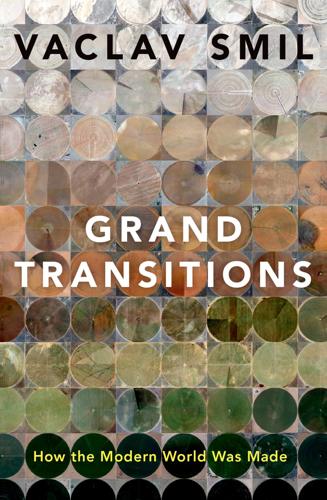
Grand Transitions: How the Modern World Was Made
by
Vaclav Smil
Published 2 Mar 2021
Economists have their list of factors responsible for economic growth: labor input, capital, education, improved allocation of resources, economies of scale, and the growth of knowledge. Where is energy and the environment? Energy is almost always absent; environment appears sometimes, merely in passing. For example, Robert Solow recognized “investment in environmental improvement, which uses resources but does not appear in measured output, though it may of course be very valuable” as a factor that has reduced the growth of economic output (Solow 1987). As a scientist cognizant of energetic and material constraints on everything taking place on this planet I marvel at this disregard—and at the arguments that energy and the environment can be increasingly ignored, the notions expressed in currently fashionable talk about decoupling energy and economic growth and about dematerialization of future economies.
…
R., 109 Siemens, William, 135 Silicon Valley, business concentrations, 64 Singapore economic growth, 160 fertility rates, 36, 43 longevity in, 48–49 population size vs. political influence in, 55–56 service sector employment, 184 The Singularity, 256–57, 289 smartphones, 203, 204 Smil, Vaclav, 218 smog, 58, 207, 228–30 Smollett, Tobias, 196 software development, 186 soils soil acidification, 110, 229, 233 soil contamination, 110, 111 soil erosion, 110 solar energy (photovoltaic (PV) cells), 134–35, 274–75 solid waste disposal, 66 Solow, Robert, 280–81 Somalia, fertility rates, 32 Sombart, Werner, 190–91 South, P. F., 267 South Africa inequalities, 66 material consumption, 286 obesity in, 106 South Korea demographic transitions, speed of, 36 economic growth and development, 45–46, 160 economic sectors, 167–68 fertility rates, 36, 43 happiness rankings, 192–93 industrialization, 179 longevity in, 48–49 manufacturing, 175–76, 180 meat consumption, 92 outbound tourism, 196–97 population aging, 56, 264–65 population size vs. political influence in, 55–56 total dependency ratio, 45 South Sudan, service sector employment, 184 Soviet Union.
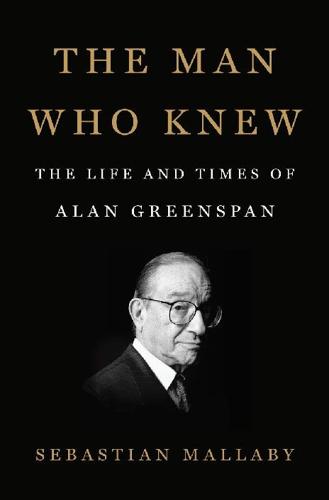
The Man Who Knew: The Life and Times of Alan Greenspan
by
Sebastian Mallaby
Published 10 Oct 2016
Phillips, a New Zealander at the London School of Economics, had documented the trade-off between unemployment and inflation, with the implication that technocrats could engineer permanently low unemployment if they were willing to accept modest inflation; and two years later Paul Samuelson and his MIT colleague Robert Solow, applying the Phillips curve to U.S. data, suggested that an enlightened administration might choose unemployment of 3 percent at the price of inflation of just 4.5 percent. Seizing on this happy verdict, the Kennedy administration promised “full employment,” an objective that would benefit workers, salve racial tensions, and bolster America in its apocalyptic rivalry with the Soviet Union.
…
To quantify the reduction would be to stray far beyond the evidence. Normally Greenspan was a master of evasion. Confronted with an invitation to get himself into trouble, he would meander around the subject, piling clause upon subclause, leaving his audience to suppose that they might have understood if only they had listened harder. The Nobel laureate Robert Solow once compared him to a bespectacled sea squid: sensing danger, Greenspan would flood his surroundings with black ink and then move away, silently.22 But now, confronted by Kent Conrad, Greenspan’s instincts failed. The senator was demanding to know how big the inflation premium in long-term interest rates might be.
…
Alan Greenspan, interview by the author, June 18, 2014. See also Woodward, Maestro, 99. 21. On the length of the meeting see Stephen A. Davies and Dean J. Patterson, “President Meets with Greenspan, Requests Backing to Aid Economy,” Bond Buyer, January 29, 1993. On Clinton’s reaction, see Woodward, Maestro, 99. 22. Robert Solow is quoted in Linton Weeks and John M. Berry, “The Shy Wizard of Money: Fed’s Enigmatic Greenspan Moves Easily in His Own World,” Washington Post, March 24, 1997. 23. Greenspan also predicted that if bond rates fell back toward 5 percent, the result would be “a far greater stimulus effect . . . than any of these numbers we are talking about.”
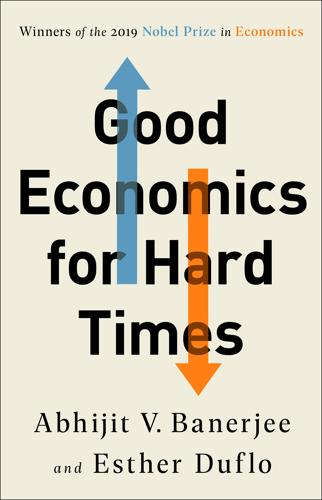
Good Economics for Hard Times: Better Answers to Our Biggest Problems
by
Abhijit V. Banerjee
and
Esther Duflo
Published 12 Nov 2019
Robert Gordon reckons that rising education explains about 14 percent of the increase in labor productivity over the period, and the capital investment that gave workers more and better machines to work with explains a further 19 percent of the increase. The rest of the observed productivity improvement cannot be explained by changes in things economists can measure. To make ourselves feel better, economists have given it its own name: total factor productivity, or TFP. (The famous growth economist Robert Solow defined TFP to be “a measure of our ignorance.”) Growth in total factor productivity is what is left after we have accounted for everything we can measure. It captures the fact that workers with the same education level working with the same machines and inputs (what economists refer to as capital) produce more output today for each hour they work than they did last year.
…
What we can say with some confidence is that there is nothing in the available evidence promising a return to the kind of fast growth in measured GDP that characterized the Trente Glorieuses in Europe and the golden years in the United States. SOLOW’S HUNCH This should not come as a complete surprise. Remarkably, at the height of postwar growth, in 1956 Robert Solow wrote a paper suggesting growth would eventually slow down.23 His basic point was that as per capita GDP goes up, people save more, and therefore there is more money to invest, and more capital available per worker. This makes capital less productive; if there are now two machines in a factory where there was only one, the same workers will have to operate both at the same time.
…
Even the experts seem to have accepted this. In 2006, the World Bank asked the Nobel laureate Michael Spence to lead the Commission on Growth and Development (informally known as the Growth Commission). Spence initially refused, but convinced by the enthusiasm of his would-be fellow panelists, a highly distinguished group that included Robert Solow, he finally agreed. But their report ultimately recognized that there are no general principles, and no two growth episodes seem alike. Bill Easterly, not very charitably perhaps, but quite accurately, described their conclusion: “After two years of work by the commission of 21 world leaders and experts, an 11-member working group, 300 academic experts, 12 workshops, 13 consultations, and a budget of $4m, the experts’ answer to the question of how to attain high growth was roughly: we do not know, but trust experts to figure it out.”83 ENGINEERING MIRACLES?
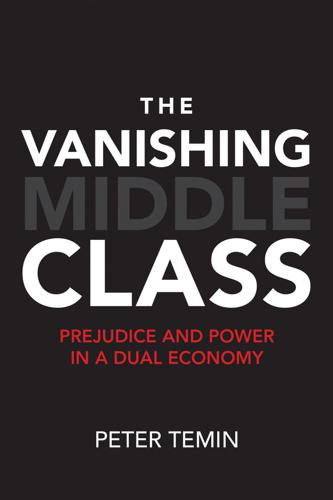
The Vanishing Middle Class: Prejudice and Power in a Dual Economy
by
Peter Temin
Published 17 Mar 2017
New York: Springer ebooks. Smith, Mitch. 2016. “Michigan: Emergency Declared over Flint’s Water.” New York Times, January 5. Sokol, Jason. 2014. All Eyes Are Upon Us: Race and Politics from Boston to Brooklyn. New York: Basic Books. Solow, Robert M. 1956. “A Contribution to the Theory of Economic Growth.” Quarterly Journal of Economics 70 (February): 65–90. Solow, Robert M. 1957. “Technical Change and the Aggregate Production Function.” Review of Economics and Statistics 39 (3) (August): 312–320. Sommer, Jeff. 2015. “Pfizer Didn’t Need an Inversion to Avoid Paying U.S. Taxes.” New York Times, November 25.
…
Holder, 65, 89, 142, 159, 180n11 Slavery, xi–xii, 159 abolitionists and, 51, 54, 58 cities and, 133 Civil War and, ix, 15, 17–18, 51, 65, 88, 94, 107, 180n13 concepts of government and, 88, 94 conservatives and, 56 cross-country comparison and, 148 equal protection clause and, 58, 67, 102 expansion of, 50–51 FTE (finance, technology, and electronics) sector and, 17, 22 indentured servants and, 50 Investment Theory of Politics and, 64 Irish Americans and, 54 legacy of, xiii, 133 Lincoln and, 51 lower human status and, 51 low-wage sector and, 27 public education and, 133 voting rights and, ix white rage and, 51 Snyder, Rick, xv, 36 Social capital bridging vs. bonding, 171n31 cities and, 131–133 dual economy and, 12 inequality models and, 165–166 low-wage sector and, 39, 153 mass incarceration and, 103, 107, 156 public education and, 117, 124, 126–128, 156 Putnam on, 11–12, 39, 165 transition and, 42 Social Security, 33, 45, 52 debt and, 141 government loan for, 174n15 phasing out of, 93 reform for, 69–70 standard of living and, 90–91 Trust Fund of, 69 Solow, Robert M., 162–165, 181n3 Soros, George, 85 South concepts of government and, 88, 91, 94 FTE (finance, technology, and electronics) sector and, 15, 17, 20, 22 Great Migration and, 20 (see also Great Migration) Investment Theory of Politics and, 62–67 Jim Crow policies and, 27, 49, 51–53, 58, 65–66, 104, 107, 154 low-wage sector and, 27–29, 34–35, 142, 170n1 oligarchy of, 88 public education and, 119, 125 race and, 50–59 Reconstruction and, 27, 51, 65, 67 slavery and, 94 (see also Slavery) very rich and, 80–81 voting rights and, 142, 170n1 Southern Strategy, 15, 27, 35, 81, 117, 142 Soviet Union, 22 Spain, 149 Stagflation, 16, 20–21 Stanford University, 57 State Department of Education, 121 State legislatures, 19, 62–63, 95 STEM (science, technology, engineering, and mathematics) Student loans, 43–45, 137, 140, 172n14 Subcontractors, 30–31, 57 Suffrage, 58, 64, 67 Switzerland, 149 Syrian refugees, 148 Tariffs, 21, 32–33 Taxes capital gains and, 24 cities and, 129–130, 134–136 concepts of government and, 89–92, 95 cuts in, 15, 19, 22, 71, 79 debt and, 158, 172n14 dual economy and, 10, 12 Earned Income Tax Credit and, 79 FTE (finance, technology, and electronics) sector and, 15, 17–18, 22–24, 155 government benefits and, 10 incentives and, 10 increase of, 17, 79, 91–92, 103, 141, 155, 174n15 inequality models and, 161–162 Investment Theory of Politics and, 62, 65 Kennedy and, 15 Lewis model and, 153 liberals and, 174n15 loopholes and, 24, 81–82 low-wage sector and, 31, 36 mass incarceration and, 101, 103, 105 one-percenters and, 22–23 Panama Papers and, 82 poll, 58, 65 property, 43, 103, 130 public education and, 46, 117–119, 124, 172n14 Reagan and, 22 reform and, 17, 22 S&L crisis and, 17 sales, 103 Social Security and, 33, 45, 52, 69–70, 79, 90, 93, 141, 174n15 tariffs and, 21, 32–33 very rich and, 79–82 Technology.

Adaptive Markets: Financial Evolution at the Speed of Thought
by
Andrew W. Lo
Published 3 Apr 2017
Science Translational Medicine 8: 327ps6. Mossin, Jan. 1966. “Equilibrium in a Capital Asset Market.” Econometrica 34: 768–783. Murphy, Kevin J. 2012. “Pay, Politics, and the Financial Crisis.” In Rethinking Finance: New Perspectives on the Crisis, edited by Alan S. Blinder, Andrew W. Lo, and Robert Solow, forthcoming. New York: Russell Sage Foundation. Muth, John F. 1961. “Rational Expectations and the Theory of Price Movements.” Econometrica 29: 315–335. Nakamoto, Michiyo, and David Wighton. 2007. “Citigroup Chief Stays Bullish on Buy-outs.” Financial Times, July 9. Nash, John. 1951. “Non-Cooperative Games.”
…
Archived copy available at: https://www.societegenerale.com/sites/default/files/12%20May%202008%20The%20report%20by%20the%20General%20Inspection%20of%20Societe%20Generale.pdf Sociobiology Study Group. 1975. “Against ‘Sociobiology,’ A letter from Stephen Jay Gould, Richard Lewontin and members of the Sociobiology Study Group outlining criticisms of, and objections to, E. O. Wilson’s Sociobiology: The New Synthesis.” New York Review of Books 22: November 13. Solow, Robert M. 1956. “A Contribution to the Theory of Economic Growth.” Quarterly Journal of Economics 70: 65–94. Sorkin, Andrew Ross, Diana B. Henriques, Edmund L. Andrews, and Joe Nocera. 2008. “As Credit Crisis Spiraled, Alarm Led to Action.” New York Times, October 2. Soros, George. 1987. The Alchemy of Finance: Reading the Mind of the Market.
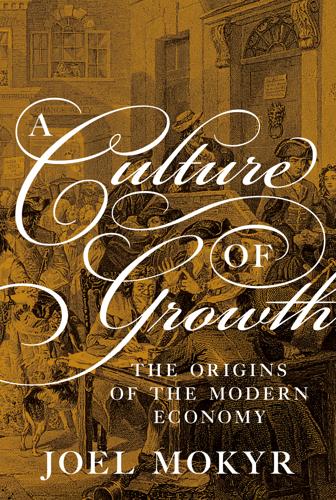
A Culture of Growth: The Origins of the Modern Economy
by
Joel Mokyr
Published 8 Jan 2016
The account below should be seen as part of this tradition. In this book, I propose a new explanation, largely based on events in Europe. It is one that relies on something I call “culture,” but unlike most accounts that rely on this vague concept, the notion of culture I deploy will be circumscribed and defined with precision. The great economist Robert Solow once remarked that all attempts to explain differences in economic performance and growth using culture “end up in a blaze of amateur sociology” (quoted in Krugman, 1991, p. 93, n. 3). Perhaps. But if we are to look for institutions to explain historical development, can culture be far behind?
…
Continental, 241 Chinese, 149, 287-291, 299-302, 316-330, 337-338 ethos of, 201 Islamic, 66, 131, 148 prestige of, 111, 113 role of Industrial Revolution, 6, 99, 268 social prestige of, 109 see also useful knowledge, open science science, Chinese, 290, 338 science and religion, relation between, 115, 133, 134, 228, 231, 238, 245 scientific instruments, 56, 190, 216 scientific progress, and religion, 227, 228 inevitability of, 262 Scientific Revolution, 113, 142, 148, 215, 228, 268, 279 and kaozheng school, 328 multinational effort in, 242 Scotland, 264 Scott, H.M., 178 Scottish universities, 173 secrecy, 184 selection, unit of, 29 Sened, Itai, 5 Servetus, Miguel, 134, 159, 260 Shaftesbury, Earl of, 155 Shakespeare, William, 248 Shank, J.B., 106, 107, 109, 114, 115, 193, 263 Shapin, Steven, 77, 84, 105, 109, 155, 190, 192, 203, 209, 228, 231, 237 Shapiro, Barbara, 55, 76, 100, 216 Shariff, Azim F., 128 Shaw, George Bernard, 59 Shen Kuo, 337 Shennan, Stephen, 49 Shipley, William, 90 Shiue, Carol, 291 shixue movement, 325 and concrete studies, 326 studies, 321 shiyong, and practical knowledge, 326 Siku quanshu, 334 Silberman, Leon, 311 Silesia, 188 Sima Guang, 307, 331 Simonson, Tatum, 44 Sinclair, John, 276 Sivin, Nathan, 287, 304-306, 313, 319, 322, 325, 328, 337 on the Needham puzzle, 318 Skempton, Alec, 125 skepticism, 157, 191 skill-technology complementarity, 121 Slack, Paul, 75, 86, 172, 174, 223, 247, 289 slave societies, 120 slave trade and slavery, abolition of, 277 Slezkine, Yuri, 131 Sloane, Hans, 111, 275 smallpox variolation, 149 Smeaton, John, 84, 125, 185, 280 Smiles, Samuel, 125 Smith, Adam, 52, 60, 63, 65, 102, 115, 168, 200, 248, 276, 277, 282, 283, 330 Newton’s influence on, 103 Smith, Pamela H., 139, 177 Smithian growth, 16, 121, 122 and cultural beliefs, 141 and religion, 132 and technological progress, 291 Sng, Tuan Hwee, 169, 302 Snobelen, Stephen D., 104, 115 social contract, 267 social entrepreneur, 59 social learning, 35 socialization, 34-37, 39 and economic growth, 51 societies improving, 265 scientific, 42 Society of Arts, 90, 265 soda-making process, 270 Solow, Robert, 5 Song dynasty, 287, 296, 301, 303, 307, 314, 334, 337 Song Lixue School, 308 Song Yingxing, 329, 333 Sorbière, Samuel, 95 Sorbonne, 177 Sorel, Georges, 250 Sorrenson, Richard, 108 Spadafora, David, 250, 265 Spain, 169, 220 Spanish Enlightenment, 172 Spence, Jonathan, 323 Spencer, Herbert, 336 Sperber, Dan, 46 spices, 163 Spiegel, Mark A., 123 Spinoza, Baruch, 68, 127, 132, 157, 164, 177, 197, 201, 206, 207, 227, 310, 341 Spolaore, Enrico, 14, 34, 43 spontaneous generation, of plants, 156 Sprat, Thomas, 83, 84, 88, 89, 191, 198, 230, 237, 246 Squicciarini, Mara, 121, 283 St.
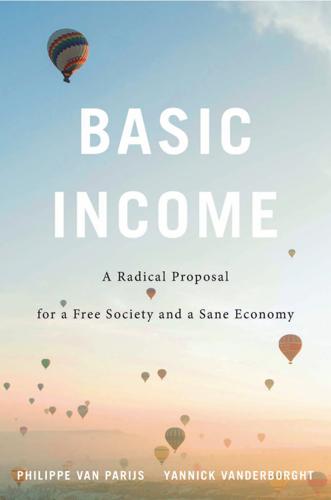
Basic Income: A Radical Proposal for a Free Society and a Sane Economy
by
Philippe van Parijs
and
Yannick Vanderborght
Published 20 Mar 2017
, published the same year, Martin Luther King, Jr. (1929–1968) wrote: “I am now convinced that the simplest approach Â�will prove to be the most effective—Â�the solution to poverty is to abolish it directly by a now widely discussed meaÂ� sure: the guaranteed income.â•‹.â•‹.â•‹.╋╉The dignity of the individual Â�will flourish when the decisions concerning his life are in his own hands, when he has the assurance that his income is stable and certain, and when he knows that he has the means to seek self-Â�improvement.”↜86 89 BASIC INCOME Short-Â�Lived Climax: McGovern’s Demogrant All this helped create a climate in which public authorities felt they had to move ahead. In January 1968, President Lyndon B. Johnson had already set up a Commission on Income Maintenance Programs which included, along with several businessmen, economists Robert Solow and Otto Eckstein. Johnson insisted: “We must examine any and Â�every plan, however unconventional.”87 Published in November 1969, the final report recommended, as an alternative to the existing welfare system, a “basic income support program” that would take the form of a “direct federal cash transfer program offering payments to all, in proportion to their need.”
…
See also Â�Labor parties; Socialist parties Social dividend, 80–81, 148–149, 155, 167, 190–191, 258, 273nn49,51,53, 279n4, 291n26, 297n77 Social insurance programs, 7, 268nn55–57; early conceptions of, 64–66; public assistance and, 66–69 Socialism: 95, 123–124, 193 Socialist parties, 65, 76, 82, 95, 162, 163, 189–194, 202, 203, 209, 268n57, 294n49, 301n21, 304n52, 307nn75–77, 323n61. See also Â�Labor parties; Social-Â�democratic parties Social Security Act of 1935, in U.S., 67, 159 Soininvaara, Osmo, 200 Solow, Robert, 90 Sombart, Werner, 193, 194 Sontoku, Ninomiya, 266n31 South Africa, 69, 204, 228–229, 294n50, 296n60 Sovereign wealth funds, 95, 151–152 Spafford, Jesse, 317n17 Spain, 191, 192, 258n4, 301n19 Speenhamland system, in Â�England, 57–58, 61, 70, 266n25 Spencer, Herbert, 78 Spence, Thomas, 9, 72–73, 74, 78, 149, 270n12, 285n61 Stakeholder grant.

The Measure of Progress: Counting What Really Matters
by
Diane Coyle
Published 15 Apr 2025
This was possible thanks to the availability for the first time of GDP and other national accounts data over many years for an increasing number of countries. The data enabled the first empirically informed theories of economic development and growth. For example, Simon Kuznets, who had worked on economic measurement since the 1930s, was one economist who used the statistics to do this kind of research (Kuznets 1955), as was Robert Solow (1957). Kuznets hypothesised that low-income economies would initially experience increasing income inequality, but at a certain stage in their development inequality would start to decline as growth continued. Solow’s model of growth depending on capital, labour, and “technical progress”—the “residual”—became the workhorse theory of growth for thirty years.
…
We do not know how big α is; how much of a bet do we want to place on its being big enough not to worry? Sustainability is generally thought about in terms of the environment. The unsustainable is never sustained, and the fact that unsustainability is upon us is becoming clearer when it comes to nature. But sustainability is a broader concept. Robert Solow’s (1991) definition was “that we leave to the future the option or the capacity to be as well off as we are” (p181). What w ill it take for my grandchildren to have at least as good a standard of living as I do? 2. https://www.youtube.com/watch?v=Ggo07G1XB6A 208 Ch a p t er E ight image 8.1.
…
Focusing on assets revives an old debate in economics during the 1950s and early 1960s between the “two Cambridges”— Cambridge, Massachusetts, home to MIT and Harvard (where I did my PhD), and Cambridge, England (where I now work). That debate was about whether it made any sense to think of (physical) capital as a single aggregate when this would inevitably be a mash-up of many different 248 Chapter Nine types of physical buildings and equipment. The American Cambridge (led by Paul Samuelson and Robert Solow) said yes, and the concept has become the “K” of production functions and growth accounting. The British Cambridge (particularly Piero Sraffa and Joan Robinson) disputed this, arguing for example that different vintages of capital would embed different generations of technology, so even a straightforward machine tool to stamp out components could not be aggregated with a twenty-year-old equivalent.
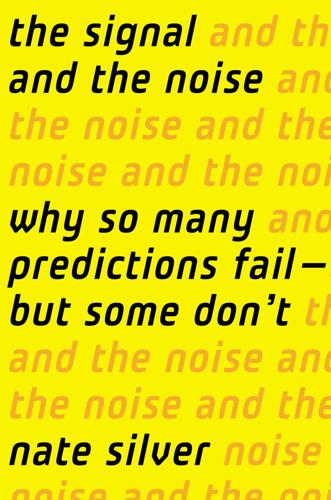
The Signal and the Noise: Why So Many Predictions Fail-But Some Don't
by
Nate Silver
Published 31 Aug 2012
In 1971, for instance, it was claimed that we would be able to predict earthquakes within a decade,29 a problem that we are no closer to solving forty years later. Instead, the computer boom of the 1970s and 1980s produced a temporary decline in economic and scientific productivity. Economists termed this the productivity paradox. “You can see the computer age everywhere but in the productivity statistics,” wrote the economist Robert Solow in 1987.30 The United States experienced four distinct recessions between 1969 and 1982.31 The late 1980s were a stronger period for our economy, but less so for countries elsewhere in the world. Scientific progress is harder to measure than economic progress.32 But one mark of it is the number of patents produced, especially relative to the investment in research and development.
…
September 11, 2001, terrorist attacks, 247–48, 247, 248, 412, 417, 419, 421, 425–28, 429, 431–32, 436, 438, 444, 449, 510–11 as ambitious, 422–23 as unpredicted, 10–11 service sector, 189 Shakespeare, William, 4–5, 418, 460 Shannon, Claude, 265–66 Sharma, Deven, 22, 25 Shaw, Brian, 237 Shiller, Robert, 22, 30, 31, 32, 347–48, 349, 353, 354, 369, 500 shopping malls, 228, 440 short-selling, 355, 360, 361, 501 shortstops, 446, 447 signals, 175, 186 in climatology, 371–73 competing, 416–18, 417 noise vs., 8, 13, 17, 60, 81, 133, 145, 154, 162, 163, 173, 185, 196, 285–86, 295, 327, 340, 371–73, 388–89, 390–91, 404, 448, 451, 453 in predictive models, 388–89 in stock market, 368 of terrorism, 438, 442–45 similarity scores, 84–85 sine wave, 416–17 Singapore, 210 SIR model, 220–21, 221, 223, 225, 389 skill, 79, 312 luck vs., 321–23, 322, 338–39 Skynet, 290 Slate, 353 slowplaying, 304 smallpox, 214, 229, 436, 485 Smith, Adam, 332 Smith, Ozzie, 446 snow, 391, 399, 473 Snowpocalypse, 474 Soaring Eagle Indian Casino, 296–97 Solar Cycle 24, 392, 393 Solow, Robert, 7 Sornette, Didier, 368, 369 Soros, George, 356, 370 South Korea, 372 Soviet Union, 467 disintegration of, 50–51, 66 economy of, 51–52 Spain, 210 Spanish flu, 205, 211, 214, 224, 229 Spanish Inquisition, 4 sports, 63 see also baseball, basketball Stairs, Matt, 92 Standard & Poor’s (S&P), 1, 19, 20–21, 22, 24, 25–26, 41, 43, 45, 463 see also S&P 500 standard deviation, 322 staph infections, 227 statheads, 87–88 biases of, 91–93 scouts vs., 86, 88, 128 statistical significance test, 251, 253, 256, 372n statistics, context and, 79, 84, 91, 100–102, 105, 234, 240 Stenson, Dernell, 85 Stephen, Zackary “ZakS,” 292–93 stereotypes, 298–99 Stiglitz, Joseph, 363 stimulus package, 14, 40, 184, 194, 379, 398, 466–67 stock market, 19, 185–86, 253, 256, 329–70 Bayesian reasoning and, 259–60 competition in, 313, 352, 364 correlations in price movements in, 358 crashes in, 354–56, 354 dynamic group behavior in, 335 fast track in, 368 forecasting service for, 337–38 future returns of, 330–31, 332–33 lack of predictability in, 337–38, 342, 343–46, 359, 364–66 long run vs. short run in, 404 as 90 percent rational, 367 noise in, 362–64 overconfidence in, 359–60, 367 P/E (price-to-earnings) ratio of, 348, 349, 350, 354, 365, 369 public sentiment on, 364–65, 365 signal track in, 368 technical analysis of, 339–40, 341 velocity and volume of trading on, 329–30, 330, 336 see also efficient-market hypothesis stocks, see stock market StormPulse.com, 471–72 strategy, tactics vs., 273–76, 278, 284 stress, effect on decision making, 97–98, 449 strikeouts, 79–80, 91 strike zone, 102 strong efficient-market hypothesis, 341–42 structural uncertainty, 393 structure-finance ratings, 24 subduction zone, 143–44 subjectivity, 14, 64, 72–73, 100, 252, 253, 255, 258-59, 288, 313, 403, 453 subprime mortgages, 27, 33, 464 suburbs, 31 suckers, in gambling, 56, 237, 240, 317–18, 320 suicide attacks, 423–24, 424 see also September 11, 2001, terrorist attacks suited connectors, 301, 306 sulfur, 392, 399–400, 400, 401 Sulmona, Italy, 143, 145 Sumatra, Indonesia, 161, 171, 172 Summers, Larry, 37–38, 39, 40, 41, 466 sunspots, 392, 401 Super Bowl, 185, 371 superstition, 5 Super Tuesday, 336 surveillance, in credit ratings, 23–24 Survey of Professional Forecasters, 33, 179–83, 191, 197–98, 199, 200–201, 466–67, 480, 481, 482 Suzuki, Ichiro, 101 swine flu, 208, 209–12, 218–19, 224–25, 228–29 Sydney, Australia, 222 syphilis, 222, 222, 225 tactics, strategy vs., 273–76, 278, 284 Taleb, Nassim Nicholas, 368n tape, in credit ratings, 24 taxes, 481 Taylor, Brien, 92 technical analysis, 339–40 technological progress, 112, 243, 292–93, 410–11 technology, 1, 313 tectonic plates, 16, 144, 148, 173 Tehran, 147, 151–53 Tejada, Miguel, 99 telescope, 243 television pundits, 11, 47–50, 49, 73, 314, 448 hedgehogs as, 55 temperature records, 393–95, 394, 397–98, 403–4, 404, 405, 506 Tenet, George, 422, 424–25, 510 tennis, 496 Terminator series, 290n terrorism, 511–12 definition of, 428 depth vs. breadth problem in prevention of, 273 frequency vs. death toll of, 429–30, 430, 431, 432–33, 437, 439, 441, 442, 442 in Israel, 440–42 mathematics of, 425–32 see also September 11, 2001, terrorist attacks Tetlock, Philip E., 11, 51, 52–53, 56–57, 64, 67, 100, 157, 183, 443, 450, 452, 467 Texas, 464 Texas hold ’em, 298–302, 464 limit, 311, 322, 322, 324n no-limit, 300–308, 309–11, 315–16, 316, 318, 324n, 495 Texas Rangers, 89 Thailand, 209 Thaler, Richard, 361–62 theory, necessity of, 9, 197, 372-73 Thirty Years’ War, 4 This Time Is Different: Eight Centuries of Financial Folly (Reinhart and Rogoff), 39–40, 43 Thomas Aquinas, Saint, 112 Thomas J.
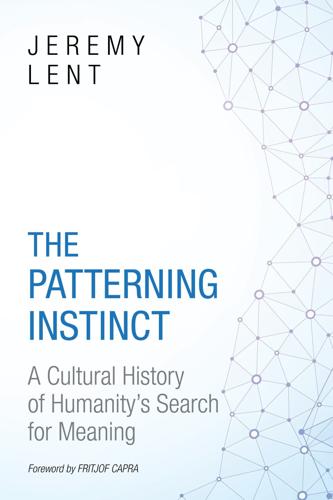
The Patterning Instinct: A Cultural History of Humanity's Search for Meaning
by
Jeremy Lent
Published 22 May 2017
That is why Malthus remains as wrong today as he was two centuries ago.”28 The allure of technology is so intoxicating that sometimes even distinguished economists speak about it as though it has transcended not just Tainter's theory but the very laws of nature. “The world can, in effect, get along without natural resources,” remarked Nobel Prize–winning economist Robert Solow. Another prominent cornucopian, Julian Simon, upped the ante even further. “Technology exists now,” he wrote, “to produce in virtually inexhaustible quantities just about all the products made by nature—foodstuffs, oil, even pearls and diamonds…. We have in our hands now—actually, in our libraries—the technology to feed, clothe, and supply energy to an ever-growing population for the next 7 billion years.”29 Seven billion years?
…
H., 311 Presocratics, 146, 148–49, 158, 236, 243 Priestley, Joseph, 315 Prigogine, Ilya, 366 progress human, 78, 420 moral, 432, 434, 440 technological, 410, 431, 440 Western view of, 16, 29, 400–401, 417, 434 Protestantism, 237–38, 245, 273, 346–47, 378 ethic, Protestant, 237–38, 312, 378 Puritans and, 238 Proto-Indo-European (PIE) culture, 133–39 Anatolian farming hypothesis and, 134, 624 creation myth of, 137–38 dualism, source of, 138, 489 homeland of, 133–35 Kurgan expansion, 138–39 Kurgan hypothesis and, 134, 138–39, 482–83 language family of, 133, 137, 140, 198–99, 205–207, 302 legacy of, 132–33, 140, 302 source of Greek thought, 136, 144, 150 source of Indian thought, 136, 150 source of Zoroastrian tradition, 136, 139, 150 values of, 137–38, 302, 489 See also Aryans Pseudo-Dionysius, 337 psyche, 113, 153 Ptolemy (astronomer), 319–20, 336, 337 Ptolemy (ruler), 223 Pyramid of the Sun (Mexico), 299 Pythagoras cosmology of, 150–51, 153–54, 164 Indian thought and, 154, 164 mathematics, vision of, 336–37, 340, 345 Plato, relationship with, 143 theorem, 208 travels of, 145 qi, 113, 203, 208, 329 Chinese cosmology, as basis of, 180–83 dynamism of, 181–82, 183–84 health, relation to, 181 li (principle), in relation to, 256–58 modern thought, relation to, 258–60, 271–72 in Neo-Confucian thought, 256–58, 260–62, 265, 269 Qin, Emperor, 188 Qin Jiushao, 324 quantum mechanics, 13, 258, 351–52, 353, 363–64 Quran, 246, 320, 321, 323 QWERTY keyboard, 396 Ramesses II, Pharaoh, 215 Randers, Jorgen, 429–30 reason Cartesian view of, 236–37 Chinese view of, 210, 267, 329–30 in Christian Rationalism, 342–47, 352 Christian view of, 231, 237, 338–44, 424 deification of, 158–59, 185, 190, 424–26 emotion, contrasted with, 196, 209–10, 238, 267, 362, 440–41 faith, contrasted with in Christianity, 245, 338–42, 344 in Islam, 320–24, 338 Greek view of, 148–49, 158–59, 169–71, 175, 177, 332, 336–37, 424 human uniqueness, source of, 211, 237 Indian view of, 170–72, 173, 175 Plato's view of, 155–56, 158–59, 184 Romantic view of, 196, 362 Stoic view of, 159 Taoist view of, 190–91, 210 Western view of, 16–17, 286, 440–41 reciprocal altruism, 44 reductionism, 271, 369–70 as mainstream scientific viewpoint, 357, 364, 368–70, 372–73 rejected by Romantic movement, 361–63 systems thinking, contrasted with, 14, 285, 354–55, 357–59, 365, 368–73 Reformation, 234, 245, 346–47 reincarnation in Greek thought, 153–54, 157, 164 in Indian thought, 163–64, 166, 254 religious thought agrarian culture and, 111–12 evolution of, 72–77 fear of death and, 72–73 hunter-gatherers and, 84–85, 87–88 spandrel, as a, 73–77 ren in Confucian thought, 195 in Neo-Confucian thought, 269–71 Renaissance, 251, 340, 344 Republic (Plato), 155 requerimiento, 311 reverse dominance hierarchy, 47, 463 Rhodes, Cecil, 314 Ricci, Matteo, 250, 302–303 Rig Veda (hymns), 134–36, 137, 162–63 Roman Empire, 131 Christianity in, 243–44, 300, 320, 435 decline of, 225–26, 340, 413–15, 435–36 destruction of Plato's Academy by, 159 religious tolerance of, 241, 243–44 slavery in, 299–300 Romantic movement, 196, 361–62 Rousseau, Jean-Jacques human nature, view of, 83, 91, 95, 470 Royal Society, 285–86 rta, 162, 165, 174–75 ruah, 113 Sacred Depths of Nature, The (Goodenough), 264 Sahlins, Marshall, 91 Said, Edward, 17 Saint-Simon, Henri, 388 Sanskrit, 133, 136, 137, 165, 496 Santiago theory of cognition, 14 “sapient paradox,” 69–72 Sapir, Edward, 198 Sapir-Whorf hypothesis, 22, 34, 198–99, 200, 205 Whorfianism, modern, 22, 201–203, 213, 496 satcitananda, 172 Saul, King, 242–43 Schrödinger, Erwin, 366, 368 Science and Civilisation in China (Needham), 185, 257–58, 327 scientific cognition, 332–33, 335–55 Christianity and, 335, 337, 340–42 Christian Rationalism as basis of, 342–44, 349–51 Scientific Revolution and, 332–33, 343, 349–51 truth, belief in universal, 351–55 Western thought, relation to, 354–55 Scientific Revolution, 16, 235, 237, 378 causes of, 318, 330–33 magnitude of, 317–18 NATURE AS MACHINE metaphor and, 282–84 as paradigm shift, 372 scientific cognition and, 332–33, 343, 349–51 sources in Greek thought, 331 uniqueness of, 325–26, 330 scientific worldview, 237, 279, 332, 378 and Christianity, 284, 335, 347–49 Christian Rationalism and, 343 universal validity, belief in, 354–55 See also reductionism; scientific cognition Scotus, John, 341 Seattle, Chief, 288, 513 sedentism, 104–106, 475–76 “selfish gene” hypothesis, 44–45, 284–85, 371, 462 self-organization, 366–68 autopoiesis in, 368, 370 Chinese cosmology and, 185, 258–60, 263, 268, 271–72, 289 cognition and, 14 emergence and, 367–69 fractal geometry and, 263, 364–65, 370, 371 human superorganism and, 427 language and, 57–58 living organisms and, 14, 285, 368–70 machine intelligence and, 422–23 mathematics and, 353–55 qi and, 181 reciprocal causality in, 20, 23–24, 368 reductionism, contrasted with, 285, 354–55 See also complex systems; systems thinking Sepúlveda, Juan Ginés de, 311 shamanism, 88–90, 472 agrarian culture and, 88, 112, 118–19 last common source of Greek and Chinese thought, 88–89, 205 monotheism and, 123 pantheism and, 441 reincarnation and, 163–64 sources in Chinese thought, 180, 472 sources in Greek thought, 146, 150 sources in Indian thought, 163–64, 173–77, 472 Upper Paleolithic art and, 89–90, 472 Shamash, 130 shared intentionality, 45, 51, 428 Shen Kuo, 251 “shifting baseline syndrome,” 414, 419–20, 429, 431, 539 Shiva, 173 Sima Guang, 251–52 Simon, Julian, 417 Singularity, 421–28 artificial intelligence causing, 422–23 dualism and, 424–26 human superorganism and, 426–28 Kurzweil's vision of, 422, 423–26, 538–39 Singularity University, 422 Sivin, Nathan, 325–26, 330, 331, 457–58 slavery, 381, 398, 403–404, 354 Smohalla, 288 social brain hypothesis, 42–45 social intelligence, 46–49, 75, 76 Socrates, 143, 155–56, 167, 169 Solomon, King, 217 Solow, Robert, 417 “Sorcerer's Apprentice” (Goethe), 375, 382, 390, 396 soul Aquinas's view of, 360 Aristotle's view of, 359–60, 368 Chinese thought, relation to, 180, 185, 209–11, 250, 265 in Christian thought, 228–29, 230, 231–33, 234, 238, 250, 360 Gnosticism and, 228 in Greek thought, 34, 153–56, 210, 337 Hellenic view of, 360 in Indian thought (atman), 163, 166–73 in Islamic thought, 246 mind, relation to, 236–37, 424 in Platonism, 223–25 Plato's view of, 154–58, 337, 359 reason, relation to, 337 as software, 425 spirit, compared with, 113, 153, 250 See also reincarnation South Africa, 436 Soviet Union, 286, 385, 399–400 Spencer, Herbert, 314 Spenser, Edmund, 234 Speyer (German town), 246 Diet of, 273 Spinoza, Baruch, 361 spirits agrarian belief in, 112–14, 123 belief in as evolutionary spandrel, 75, 76 in Chinese thought, 113, 118–19, 180–81, 192, 193, 250, 328 in Greek thought, 146, 153, 154 hunter-gatherers’ belief in, 32–33, 84–90, 94, 174 shamanic view of, 88–90, 146, 472 soul, compared with, 113, 153, 250 in Zoroastrianism, 139 Sprat, Thomas, 285–86 stenahoria, 201 stirrups, 301–302 St.
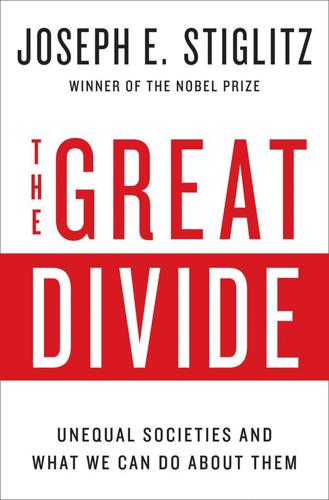
The Great Divide: Unequal Societies and What We Can Do About Them
by
Joseph E. Stiglitz
Published 15 Mar 2015
I was driven to find out why our society worked the way it did. I became an economist not just to understand inequality, discrimination, and unemployment but also, I hoped, to do something about these problems plaguing the country. The most important chapter of my Ph.D. thesis at MIT, written under the supervision of Robert Solow and Paul Samuelson (both of whom were later to receive Nobel Prizes), focused on the determinants of the distribution of income and wealth. Presented in a meeting of the Econometric Society (the international association of economists focusing on mathematics and statistical applications to economics) in 1966 and published in its journal, Econometrica, in 1969, it still often serves half a century later as a framework for thinking about the subject.
…
But the articles are based on a long history of academic research, begun when I was a graduate student at M.I.T. and a Fulbright scholar at Cambridge, UK, in the mid-1960s. Back then—and until recently—there was little interest among the American economics profession in the subject. And so, I owe a great deal to my thesis supervisors, two of the great economists of the twentieth century, Robert Solow (whose own dissertation was on the subject) and Paul Samuelson, for encouraging me in this line of research, as well as for their great insights.4 And an especial thanks to my first co-author, George Akerlof, who shared the 2001 Nobel Prize with me. At Cambridge, we often discussed the determinants of the distribution of income, and I benefited enormously from conversations with Frank Hahn, James Meade, Nicholas Kaldor, James Mirrlees, Partha Dasgupta, David Champernowne, and Michael Farrell.
…
In this view, America’s ingenuity represents its true comparative advantage, which others strive to imitate. But there is a puzzle: it is difficult to detect the benefits of this innovation in GDP statistics. What is happening today is analogous to developments a few decades ago, early in the era of personal computers. In 1987, the economist Robert Solow—awarded the Nobel Prize for his pioneering work on growth—lamented, “You can see the computer age everywhere but in the productivity statistics.” There are several possible explanations for this. Perhaps GDP does not really capture the improvements in living standards that computer-age innovation is engendering.
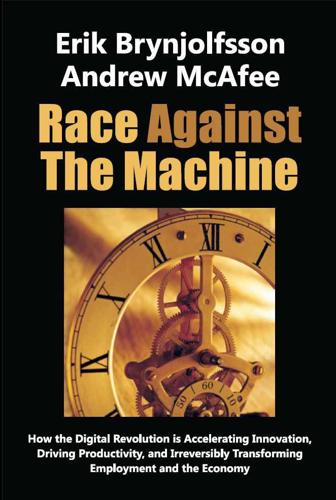
Race Against the Machine: How the Digital Revolution Is Accelerating Innovation, Driving Productivity, and Irreversibly Transforming Employment and the Economy
by
Erik Brynjolfsson
Published 23 Jan 2012
Growing Productivity Of the plethora of economic statistics—unemployment, inflation, trade, budget deficits, money supply, and so on—one is paramount: productivity growth. Productivity is the amount of output per unit of input. In particular, labor productivity can be measured as output per worker or output per hour worked. In the long run, productivity growth is almost the only thing that matters for ensuring rising living standards. Robert Solow earned his Nobel Prize for showing that economic growth does not come from people working harder but rather from working smarter. That means using new technologies and new techniques of production to create more value without increasing the labor, capital, and other resources used. Even a few percentage points of faster productivity growth per year can lead to large differences in wealth over time.
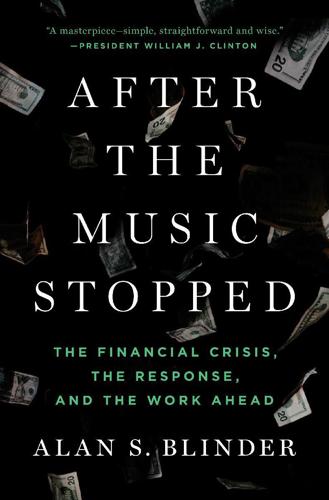
After the Music Stopped: The Financial Crisis, the Response, and the Work Ahead
by
Alan S. Blinder
Published 24 Jan 2013
House of Representatives, Washington, D.C., November 17, 2008. Blinder, Alan S., and Douglas Holtz-Eakin. “Public Opinion and the Balanced Budget.” American Economic Review 74/2 (May 1984): 144–49. Blinder, Alan S., and R. Glenn Hubbard. “Blanket Deposit Insurance Is a Bad Idea.” Wall Street Journal, October 15, 2008. Blinder, Alan S., Andrew Lo, and Robert Solow, eds. Rethinking the Financial Crisis. New York: Russell Sage Foundation, 2012. Blinder, Alan S., and Mark Zandi. “How the Great Recession Was Brought to an End.” Moody’s Analytics, July 27, 2010. www.economy.com/mark-zandi/documents/End-of-Great-Recession.pdf. Board of Governors of the Federal Reserve System, Federal Deposit Insurance Corporation, and U.S.
…
Rothbaum Distinguished Lecture Series, Vol. 11. Norman: University of Oklahoma Press, 2009. Foote, Christopher L., Kristopher S. Gerardi, and Paul S. Willen. “Why Did So Many People Make So Many Ex Post Bad Decisions? The Causes of the Foreclosure Crisis,” in Rethinking the Financial Crisis. Edited by Alan S. Blinder, Andrew Lo, and Robert Solow. New York: Russell Sage Foundation, 2012. Free, Lloyd A., and Hadley Cantril. The Political Beliefs of Americans: A Study of Public Opinion. New Brunswick, N.J.: Rutgers University Press, 1967. Friedman, Thomas L. “Obama Should Seize the High Ground.” New York Times, May 26, 2012. Frum, David.
…
Morgenson, Gretchen, and Joshua Rosner. Reckless Endangerment: How Outsized Ambition, Greed, and Corruption Led to Economic Armageddon. New York: Henry Holt, 2011. Murphy, Kevin J. “Pay, Politics, and the Financial Crisis,” in Rethinking the Financial Crisis. Edited by Alan S. Blinder, Andrew Lo, and Robert Solow. New York: Russell Sage Foundation, 2012. Nakamoto, Michiyo, and David Wighton. “Citigroup Chief Stays Bullish on Buy-Outs.” Financial Times, July 9, 2007. National Commission on Fiscal Responsibility and Reform. Moment of Truth: Report of the National Commission on Fiscal Responsibility and Reform.
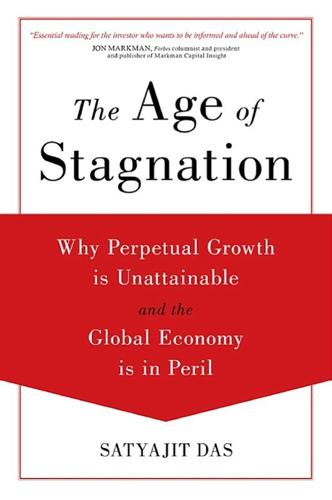
The Age of Stagnation: Why Perpetual Growth Is Unattainable and the Global Economy Is in Peril
by
Satyajit Das
Published 9 Feb 2016
Quantity theory sets out the relationship between money and prices: Q × P = M × V Where: Real Economy = Quantity (Q) × Price of goods and services produced (P) Financial Economy = Money supply (M) × the Velocity (or circulation) of that money (V) Milton Friedman, spiritual patron of monetarist economists, believed that, based on this connection, increasing money supply creates inflation, as higher monetary claims on real goods and services create higher prices. Fellow economist Robert Solow observed that everything reminded Friedman of money supply. He added that while everything reminded him, Solow, of sex, he thought it wise to keep it out of the media. The relationship between the monetary base, credit creation, nominal income, and economic activity is unstable: “Governments can no more control stocks of either bank money or cash than a gardener can control the direction of a hosepipe by grabbing at the water jet.” 11 In practice, increased money supply was offset by reduced velocity, or circulation, of money.
…
Subsequently, speed increased steadily, culminating in jet-engine-powered travel from 1958. But speed has not increased greatly in the last fifty years, with aircraft actually traveling slower than in the 1960s to conserve fuel. Industrial revolution 3 was less important, creating only short-lived improvements in productivity. This prompted economist Robert Solow in 1987 to question why “we can see the computers everywhere except in the productivity statistics.”10 Commencing in the 1960s, industrial revolution 3 focused on computers, evolving through mainframes, minis, and ultimately into laptops, tablets, smartphones, and wearable devices. Computers automated repetitive, routine, and low-value work.
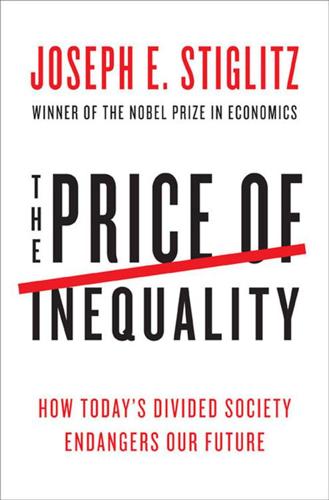
The Price of Inequality: How Today's Divided Society Endangers Our Future
by
Joseph E. Stiglitz
Published 10 Jun 2012
This book, like several of those that preceded it, is an attempt to set the record straight. ACKNOWLEDGMENTS I HAVE BEEN WORKING, AS I NOTED, ON THE ORIGINS AND consequences of inequality since my days as a graduate student, and in the almost fifty years since beginning my studies, I have accumulated enormous intellectual debts, too many to enumerate. Robert Solow, one of my thesis advisers, and with whom I wrote an early paper on distribution and macroeconomic behavior, had written his own thesis on inequality. The influence of Paul Samuelson, another of my thesis advisers, will be apparent in the discussion of globalization in chapter 3. My first published papers on the subject were written with my fellow graduate student George Akerlof, with whom I shared the 2001 Nobel Prize.
…
Other papers growing out of this early work include two with George Akerlof, with whom I shared the 2001 Nobel Prize, “Investment, Income, and Wages” (abstract), Econometrica 34, no. 5, suppl. issue (1966):118, and “Capital, Wages and Structural Unemployment,” Economic Journal 79, no. 314 (June 1969): 269–81; one with my thesis supervisor, Robert Solow, “Output, Employment and Wages in the Short Run,” Quarterly Journal of Economics 82 (November 1968): 537–60; and another chapter from my thesis, “A Two-Sector, Two Class Model of Economic Growth,” Review of Economic Studies 34 (April 1967): 227–38. 21. I describe some of the influences contributing to the evolution of my thinking, especially about the role of information imperfections, in my Nobel lecture, “Information and the Change in the Paradigm in Economics,” in Les Prix Nobel; The Nobel Prizes 2001, ed.
…
See Arjun Jayadev and Mike Konczal, “The Boom Not the Slump: The Right Time for Austerity,” Roosevelt Institute, August 23, 2010, and their forceful critique of Alberto Alesina and Silvia Ardagna, “Large Changes in Fiscal Policy: Taxes Versus Spending,” NBER Working Paper no. 15438, 2009. The IMF has come to similar conclusions. See also Olivier J. Blanchard, David Romer, Michael Spence, and Joseph E. Stiglitz, eds., In the Wake of the Crisis: Leading Economists Reassess Economic Policy (Cambridge: MIT Press, 2012), and in particular the article by Robert Solow, “Fiscal Policy,” pp. 73–76. See also Jaime Guajardo, Daniel Leigh, and Andrea Pescatori, “Expansionary Austerity: New International Evidence,” IMF working paper, July 2011. 44. See Domenico Delli Gatti, Mauro Gallegati, Bruce C. Greenwald, Alberto Russo, and Joseph E. Stiglitz, “Sectoral Imbalances and Long Run Crises,” paper presented to the International Economic Association meeting, Beijing, July 2011, and forthcoming in its proceedings.
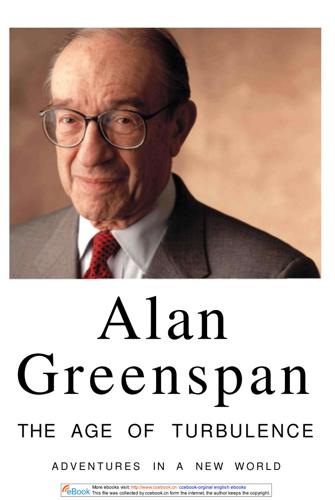
The Age of Turbulence: Adventures in a New World (Hardback) - Common
by
Alan Greenspan
Published 14 Jun 2007
It takes time to apply new ideas and often decades before those ideas show up in productivity levels. Paul David, a professor of economic history at Stanford, wrote a seminal article in 1989 that addressed the puzzle of why, in the famous words of Nobel laureate economist and then-MIT professor Robert Solow, computers were "everywhere but in the productivity statistics." It was David's article that heightened my interest in long-term productivity trends. He pointed out that it often took decades for a new invention to be diffused sufficiently widely to affect the levels of productivity. As an *Ten years later, in 1975, Moore revisited his analysis and reported, "I had no idea this was going to be an accurate prediction, b u t amazingly enough instead o f t e n doublingfs], we got nine over t h e ten years."
…
INDEX Schubert, Franz, 298 Schumann, Robert, 20 Schumer, Chuck, 405 Schumpeter, Joseph, 48, 5 1 , 167, 174 science education, 399, 403, 405 Scotland, 2 6 0 - 6 1 , 265 Scowcroft, Brent, 65 Second Treatise of Civil Government (Locke), 252n Securities and Exchange Commission, 33, 257, 375, 431 Securities Industry and Financial Markets Association, 83 n Seevers, Gary, 64 Seidman, Bill, 116 self-interest, 256, 262, 368, 490 Sen, Amartya, 253 Senate, U.S., 7, 8, 64, 115, 156, 158, 199, 222, 223 Banking Committee of, 8, 10, 150, 239 Bentsen in, 144, 145^46 Budget Committee of, 70, 185, 217, 219 Clinton budget and, 148, 149 Ethics Committee of, 115 Republican control of 211 service economy, 173, 315, 4 0 1 , 470 Shanghai, 2 9 8 , 3 0 1 , 3 0 8 Shaw, Artie, 23, 27 Sheiner, Bill, 26 Shevardnadze, Eduard, 135 Shultz, George, 9 1 , 92-93, 312 Siegman, Charlie, 189 Siemens, 381 silicon, 11,12 Silicon Valley, 127, 164, 167, 181, 271, 504 Silva, Luiz Inacio Lula da, 340, 341 Silva, Mario (Murray Goldsmith), 20 Simon, Bill, 67, 91 Simons, James, 405 Singapore, 13, 188, 253, 275, 276, 311, 312 education in, 399, 400 Singh, Manmohan, 318-19, 321-22 Sitaryan, Stepan, 128, 129, 130 skilled workers, shortage of, 3 9 9 ^ 0 0 , 404-7, 409, 413,505 Skilling, Jeffrey, 423 Skinner, Richard Dana, 44 Smith, Adam, 10, 250n, 257, 260-66, 276, 370, 502 invisible hand of, 15, 89, 262, 325, 367, 488 Smith, John, 283 Snow, John, 238, 241 Snowe, Olympia, 222 socialism, 126, 130-31, 139, 141, 252, 272, 281, 300 in China, 295 Fabian, 264-65, 266, 283-84, 317, 480, 499, 501 in India, 265, 316-19, 382, 501 social safety nets, 13, 272, 305, 4 8 1 , 504 in Europe, 276-77, 2 8 0 - 8 1 , 283, 285, 286, 291 Social Security, 109, 143, 146-47, 237, 280, 41 In, 412-14,415-19,504 budget surplus and, 185, 186, 215 defined-benefit plans vs., 421-22 indexing of, 94, 125 "lockboxes" and, 417 reform of, 94-96, 211, 215, 217, 218, 220, 241 Social Security Board of Trustees, 411 "soft landing," use of term, 155-56, 163 software, 164, 169, 493-94, 495 solar power, 453 Solidarity, 125, 132 Solomon, Claire, 23 Solow, Robert, 474 Song of Love, 20 Sonthi Boonyaratglin, 313 South Korea, 13, 188-89, 190, 260, 334n China compared with, 384, 477 Soviet bloc, former, 132, 309, 326 market capitalism and, 12, 502 Soviet Union, 40, 88-89, 122, 123-31, 134-41, 182,251,281,298,300,333 AG's travels to, 119, 123-30, 135-37, 190 arms race and, 129-30 collapse of, 8, 12,40, 123-24, 135-41, 161, 190, 250, 259, 275, 315, 329, 365, 366, 382 food shortages in, 126, 136 military of, 136, 137 nuclear power in, 453 nuclear weapons of, 8, 34 in space race, 155 as superpower, 137 transition to market economy in, 136-39 see also Russia space race, 155 Spain, 273, 351 specialization, 262, 502 U.S. current account deficit and, 347, 353, 356, 359, 361 Spencer, Herbert, 278-79 Sperling, Gene, 158, 170, 182-83, 186 stabilization fund, 259, 330 stagflation, 6 0 - 6 1 , 72 Stalin, Joseph, 126, 127, 281, 299, 504 Standard Oil of New Jersey, 336, 438 Standard Oil trust, 444 standards of living, 13, 256, 257, 259n-60n, 265, 275,335,337,356,391 central planning and, 127 in China, 251, 297, 299 competition and, 268-69, 3 9 2 - 9 6 democracy and, 332 in East Asia, 3 1 3 , 3 1 5 in East vs.
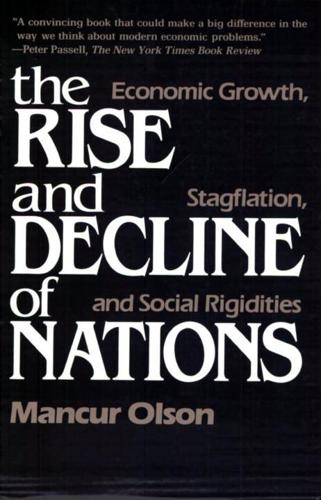
The Rise and Decline of Nations: Economic Growth, Stagflation, and Social Rigidities
by
Mancur Olson
If the arguments are to explain the high and prolonged levels of unemployment that sometimes occur, they also require enormous changes in the supply of labor from relatively modest changes in perceived real wages. Tne models of the kind I have just described fail to persuade even many monetarist economists, and of course they do not convince Keynesians. Robert Solow. for example, finds "these propositions very hard to believe, and I am not sure why anyone should believe them in the absence of any evidence.'' But they have attracted a huge amount of attention among macroeconomists; my hunch is that there is an intuitive perception that the models eventually could help economists to work out something better.
…
Those who provided crucial help and encouragement in the earlier and more primitive stages of this effort needed special patience, and I am especially thankful for that. John Flemming, coeditor of the Eco nomic Journal, was an extraordinarily generous and penetrating early critic, and I am sorry that I have never sent him the ready-to-publish article that I led him to expect. Robert Solow was another invaluable source of early encouragement and help, as were Moses Abramovitz, Samuel Brittan, Sir Alec Cairncross, Walter Eltis, Daniel Patrick Moynihan, Daniel Newlon, and Thomas Wilson. Those who have done or are doing complementary or collaborative work have also been particularly helpful, most notably Kwang Choi, Jean-Francois Hennart, Gudmund Hernes, Dennis Mueller, and Peter Murrell.
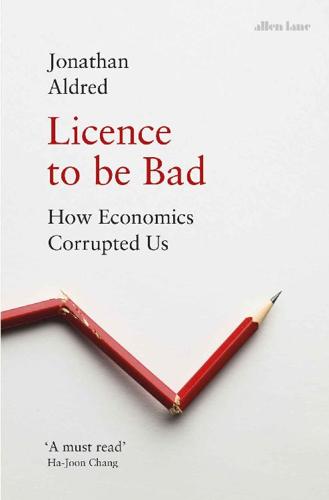
Licence to be Bad
by
Jonathan Aldred
Published 5 Jun 2019
As Isaac Newton wrote to his rival Robert Hooke: ‘You have added much several ways … If I have seen further it is by standing on the shoulders of Giants.’ Moving from the individual perspective to the whole economy, the point stands. Attempts to trace the source of economic growth find that most of it is due neither to increases in labour productivity nor to investment. Coming from different theoretical perspectives, Nobel laureate economists Robert Solow and Herbert Simon reached the same conclusion: most growth ultimately stems from the economic consequences of advances in knowledge. George Akerlof, another Nobel economist, emphasizes that ‘our marginal products are not ours alone … [they] are due almost entirely to the cumulative process of learning that has taken us from stone-age poverty to twenty-first century affluence’.16 Were it not for ingrained hero myths, this might seem too obvious to state.
…
‘Gary Becker – The Man Who Put a Price on Everything’, Financial Times, 6 May 2014), while John Kay (2003) notes drily that ‘no parody is required’ (The Truth about Markets (London: Penguin), 186). 5 Becker, G. (1991, enlarged edn), A Treatise on the Family (Cambridge: Harvard University Press), 124. 6 Ibid., 98. 7 Herfeld, Catherine (2012), ‘The Potentials and Limitations of Rational Choice Theory: An Interview with Gary Becker’, Erasmus Journal for Philosophy and Economics, 1, 73–86. 8 Becker, G. (1976), The Economic Approach to Human Behavior (Chicago: University of Chicago Press), 5. 9 Ibid., 8. 10 Becker (1991), 339. 11 Interview with Gary Becker in Region, June 2002, Federal Reserve Bank of Minneapolis: https://www.minneapolisfed.org/publications/the-region/interview-with-gary-becker. 12 Friedman, M. (1953), Essays in Positive Economics (Chicago: University of Chicago Press), 21. 13 Becker (1976), 5. 14 Robert Solow in R. Swedberg (ed.) (1990), Economics and Sociology (Princeton: Princeton University Press), 276. 15 Davies, W. (2014), The Limits of Neoliberalism (London: Sage), 86. 16 Becker, G. (1976), The Economic Approach to Human Behavior (Chicago: University of Chicago Press), 10. 17 Blinder, A. (1974), ‘The Economics of Brushing Teeth’, Journal of Political Economy, 82 (4), 887–91.
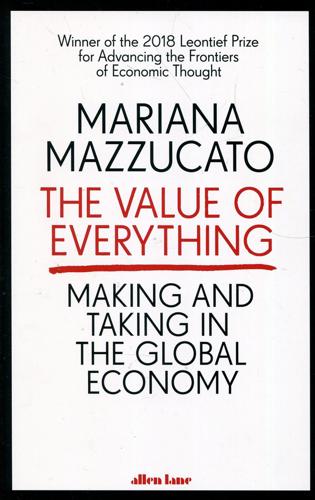
Value of Everything: An Antidote to Chaos The
by
Mariana Mazzucato
Published 25 Apr 2018
While Marx's interest in technological change led him to look at the crises that capitalism would experience due to the effect of innovation on capital's ability to create surplus value (or, to put it another way, if machines replace labour, how will the exploitation of labour - the source of profits - occur?), later economists focused mainly on the positive side of innovation that Schumpeter had underscored: its role in increasing the productive capacity of national economies. In 1987 Robert Solow, a professor at the Massachusetts Institute of Technology, won the Nobel Prize in Economics for showing that improvements in the use of technology explained over 80 per cent of economic growth. Following many before him who were readers of Schumpeter, Solow argued that economic theory had to better understand how to describe technological change.2 Practising what they preached, they explored what forces drive technological change.
…
Collective value creation entails a risk-taking public sector - and yet the usual relationship between risks and rewards, as taught in economics classes, does not seem to apply. So the crucial question is not just about accounting for government value but also rewarding it: how should rewards from investment be divided between the public and private sectors? As Robert Solow showed, most of the gains in productivity of the first half of the twentieth century can be attributed not to labour and capital but to the collective effort behind technical change. And this is due not only to improved education and infrastructure, but also, as discussed in the previous chapter, to the collective efforts behind some of the most radical technical changes where the public sector has historically taken a lead role - ‘the entrepreneurial state'.72 But the socialization of risks has not been accompanied by socialization of rewards.

Surviving AI: The Promise and Peril of Artificial Intelligence
by
Calum Chace
Published 28 Jul 2015
Some people argue that the fears are over-done because technology is not actually advancing as fast as the excitable folk in Silicon Valley suppose. It is true that economists have long struggled to record the productivity improvements that would be expected from the massive investments in information technology of the last half-century; this failure prompted economist Robert Solow to remark back in 1987 that “You can see the computer age everywhere but in the productivity statistics.” (Of the various explanations for this phenomenon, the one which seems most plausible to me is that there is an increase in productivity, but for some reason our economic measurements don’t catch it.
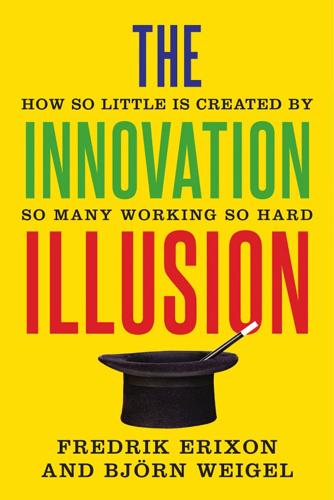
The Innovation Illusion: How So Little Is Created by So Many Working So Hard
by
Fredrik Erixon
and
Bjorn Weigel
Published 3 Oct 2016
If you get bored by all those who just repeat the conventional wisdom about the economy and how it evolves, pick any work from these economic thinkers and you will immediately be reinvigorated: David Autor, Tyler Cowen, Deirdre McCloskey, Malcolm Gladwell, David Graeber, Deepak Lal, Joel Mokyr, Matt Ridley, Richard Sennett, Robert Solow, Lawrence Summers, Peter Thiel, and Martin Wolf. Their works have contributed to our thinking for this book. Likewise, there are many successful investors and entrepreneurs whose thinking about innovation and business creation have inspired us. Innovation happens through entrepreneurship and it is impossible to grasp innovation without understanding the business motivations behind it.
…
Bhattacharya, Dhritiman, Nezih Guner, and Gustavo Ventura, “Distortions, Endogenous Managerial Skills and Productivity Differences.” Review of Economic Dynamics, 16.1 (2013): 11–25. Bhide, Amar, “The Hidden Costs of Stock Market Liquidity.” Journal of Financial Economics, 34.1 (1993): 31–51. Bhide, Amar, The Origin and Evolution of New Businesses. Oxford University Press, 2000. Blanchard, Olivier, Robert Solow, and Beth Anne Wilson, “Productivity and Unemployment.” Paper. Massachusetts Institute of Technology, 1995. Blanchflower, David G., and Andrew J. Oswald, “Well-Being, Insecurity and the Decline of American Job Satisfaction.” Conference paper, Apr. 1999. At http://www.dartmouth.edu/~blnchflr/papers/JobSat.pdf.
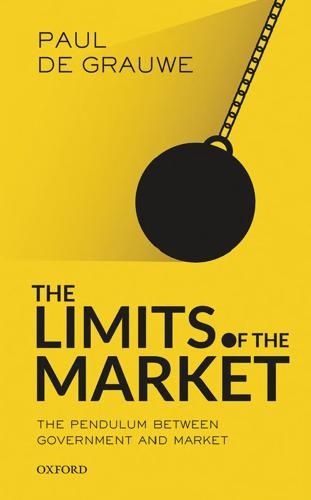
The Limits of the Market: The Pendulum Between Government and Market
by
Paul de Grauwe
and
Anna Asbury
Published 12 Mar 2017
So far the digital revolution { See Robert Gordon’s fascinating recent book, The Rise and Fall of American Growth: The US Standard of Living since the Civil War (Princeton, NJ: Princeton University Press, ). T HE U TO PIA OF SE LF - RE GUL ATIO N of the s has had remarkably little observable effect on growth in productivity in the country where it began. This has led Robert Solow, the great American economist who won the Nobel Prize for his contribution to the theory of economic growth, to the conclusion that the new technologies are visible everywhere except in productivity growth statistics. We see a similar trend in other developed countries, including those of the EU, as represented in Figure ..
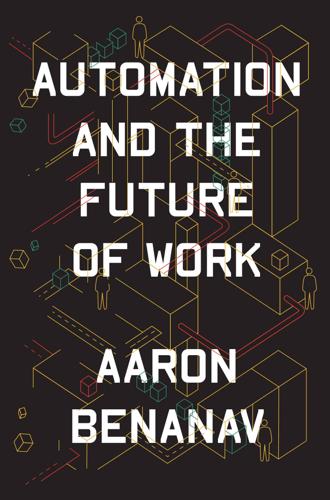
Automation and the Future of Work
by
Aaron Benanav
Published 3 Nov 2020
It is on this basis that commentators typically cite rapidly rising labor productivity, rather than an influx of low-cost imports from abroad, as the primary cause of industrial job loss in advanced economies.10 On closer inspection, however, this explanation also turns out to be inadequate. Manufacturing productivity has been growing at a sluggish pace for decades, leading economist Robert Solow to quip, “We see the computer age everywhere, except in the productivity statistics.”11 Automation theorists discuss this “productivity paradox” as a problem for their account—explaining it in terms of weak demand for products, or the persistent availability of low-wage workers—but they understate its true significance.
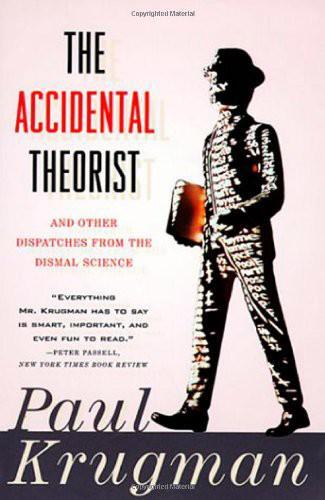
The Accidental Theorist: And Other Dispatches From the Dismal Science
by
Paul Krugman
Published 18 Feb 2010
Earth in the Balance Sheet: Economists Go for the Green Like most people who think at all about how much burden their way of life places on Spaceship Earth, I feel a bit guilty. But on Earth Day in 1997 my conscience was clearer than usual—and so were those of 2,500 other economists. A few months earlier, an organization called Redefining Progress enlisted five economists—the Nobel laureates Robert Solow and Kenneth Arrow, together with Harvard’s Dale Jorgenson, Yale’s William Nordhaus, and myself—to circulate an “Economists’ Statement on Climate Change,” calling for serious measures to limit the emission of greenhouse gases. To be honest, I agreed to be one of the original signatories mainly as a gesture of goodwill, and never expected to hear any more about it; but the statement ended up being signed by, yes, more than 2,500 economists.

The End of Indexing: Six Structural Mega-Trends That Threaten Passive Investing
by
Niels Jensen
Published 25 Mar 2018
As discussed already, at the most fundamental level, economic growth is the sum of how fast the workforce is growing (or shrinking), and how much the output per hour changes, which brings us back to the simple equation I introduced earlier in the book: ∆GDP = ∆Workforce + ∆Productivity In practical terms, though, several factors affect output. Economic growth theory was first developed by Robert Solow whilst at MIT back in the 1950s. He assumed that total output was a function of three variables. In addition to the contribution from changes in the workforce, he also assumed that capital and land affect output, both of which are an implicit part of ∆Productivity in the equation above. Consequently, he developed the following production function: GDP = f(W,C,L) + e where W denotes the workforce, C is capital, L is land, and e is the noise coming from missing factors.

The Second Curve: Thoughts on Reinventing Society
by
Charles Handy
Published 12 Mar 2015
What is certain is that the social disruption that followed the new technologies then will almost certainly be replicated now. The old power structures get demoted. New ones emerge, but take time to assume their responsibilities. Productivity falls for a time as we adapt to new technology and the new areas and types of work, a phenomenon known as the Solow effect after the economist Robert Solow, who first noticed this phenomenon. All these signs are already appearing in most developed societies. Work is being redistributed to smaller units which are less productive at first. It will take time for them to adjust and to grow. What seems certain is that old solutions are unlikely to work any more.

The Lights in the Tunnel
by
Martin Ford
Published 28 May 2011
.* As I pointed out in the previous section, more sophisticated machines also make production more efficient and that results in lower prices and, therefore, more money left in consumers’ pockets. Consumers then go out and spend that extra money, and that creates jobs for more workers who are likewise operating machines that keep getting better. *[ The idea that long-term economic growth is, to a large extent, the result of advancing technology was formalized by economist Robert Solow in 1956. Economists have lots of different theories about how long-term growth and prosperity come about, but nearly all of them agree that technological progress plays a significant role. ] Again, the question we have to ask is: Can this process continue forever? I think the answer is no, and the very unpleasant graph that follows illustrates this.
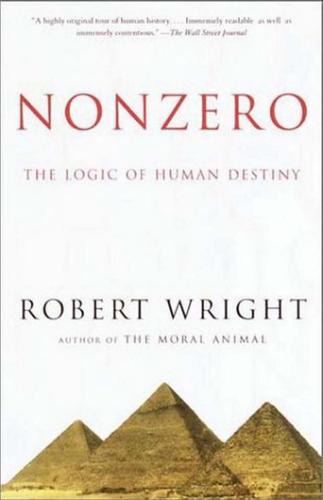
The Moral Animal: Evolutionary Psychology and Everyday Life
by
Robert Wright
Published 1 Jan 1994
(Originally published, 1776.) Smith, Bruce D. (1995) The Emergence of Agriculture. Scientific American Library. Smith, Merritt Roe, and Leo Marx, eds. (1994) Does Technology Drive History? MIT Press. Smith, Michael E. (1997) “Life in the Provinces of the Aztec Empire.” Scientific American, September, pp. 74–83. Solow, Robert M. (1957) “Technical Change and the Aggregate Production Function.” Review of Economics and Statistics 39:312–20. Soros, George (1999) “Empower the IMF.” Civilization, June/July. Spence, Jonathan (1990) The Search for Modern China. W. W. Norton. Spencer, Herbert (1851) Social Statics. John Chapman.
…
religion ancient civilizations and chiefdoms and economic development and life’s meaning and Marxist view of Protestant Reformation recovery from social collapse and virus analogy see also God religious determinism reproductive independence revolution of the intellectuals Ridley, Matt right action Rise of the West, The (McNeill) risk diffusion Roman Empire barbarians and barbarism of Romans demise of eastern half’s survival economic decline tax apparatus Rousseau, Jean-Jacques Russian Empire Sabloff, Jeremy Sahlins, Marshall Sargon of Akkade savagery see also hunter-gatherer societies Schelling, Thomas Schmandt-Besserat, Denise Schrödinger, Erwin Science and Civilization in China (Needham) segmentary societies segregation distorters Selfish Gene, The (Dawkins) sensory technology sentience: see consciousness Serbia serfdom Service, Elman servomechanisms sexual selection Shang civilization Sherif, Muzafer Shih Huang-ti Shleifer, Andrei Shoshone Indians Silk Road Siriono people slavery Sleidan, Johann slime mold Smith, Adam Smith, John social complexity: of barbarian communities civilizational history and in hunter-gatherer societies measures of micro-environmental variation and non-zero-sum interactions and population growth/density and social status and warfare and writing and social Darwinism social evolution: see cultural evolution social life social status agriculture’s origins and Big Man societies and global concord and natural selection and social complexity and Solomon Islanders Solow, Robert M. Soni (Big Man) South American civilization South Asian Coalition on Child Servitude sovereignty, loss of Spencer, Herbert Stalin, Joseph standard of living Starr, Chester state-level societies core criteria of statehood writing and Stewart, Potter stock exchanges Strayer, Joseph subsidy power Sumerian writing Sun Tzu superempowered angry man supranational governance: see global governance supranational organizations Szathmáry, Eörs Tahitians Taliban organization Tareumiut Eskimos Tasaday people Tasmanians teaching technological determinism technology: agriculture’s origins and Chinese technological development redistributive effects social instability and technological revolution of Middle Ages warfare and see also specific technologies Teilhard de Chardin, Pierre on future of goodness on global consciousness scientific vision telecasting telegraph technology teleology telephone technology Tennyson, Alfred, Lord Tenochtitlán Teotihuacán textile technology theocracy thermodynamics, second law of “Tit for Tat” program Titus, Roman emperor Toba barbarian confederacy tolerance Toltec civilization tool use, in animals Toynbee, Arnold trade disputes tragedy of the commons transportation, economic development and tribalism benign forms of Jihad vs.
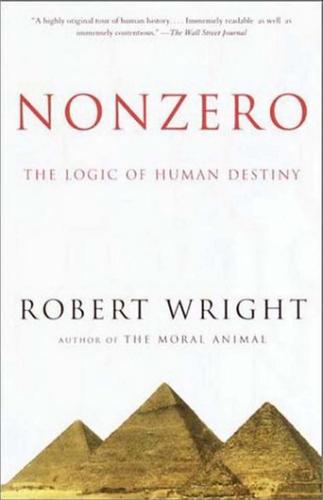
Nonzero: The Logic of Human Destiny
by
Robert Wright
Published 28 Dec 2010
(Originally published, 1776.) Smith, Bruce D. (1995) The Emergence of Agriculture. Scientific American Library. Smith, Merritt Roe, and Leo Marx, eds. (1994) Does Technology Drive History? MIT Press. Smith, Michael E. (1997) “Life in the Provinces of the Aztec Empire.” Scientific American, September, pp. 74–83. Solow, Robert M. (1957) “Technical Change and the Aggregate Production Function.” Review of Economics and Statistics 39:312–20. Soros, George (1999) “Empower the IMF.” Civilization, June/July. Spence, Jonathan (1990) The Search for Modern China. W. W. Norton. Spencer, Herbert (1851) Social Statics. John Chapman.
…
religion ancient civilizations and chiefdoms and economic development and life’s meaning and Marxist view of Protestant Reformation recovery from social collapse and virus analogy see also God religious determinism reproductive independence revolution of the intellectuals Ridley, Matt right action Rise of the West, The (McNeill) risk diffusion Roman Empire barbarians and barbarism of Romans demise of eastern half’s survival economic decline tax apparatus Rousseau, Jean-Jacques Russian Empire Sabloff, Jeremy Sahlins, Marshall Sargon of Akkade savagery see also hunter-gatherer societies Schelling, Thomas Schmandt-Besserat, Denise Schrödinger, Erwin Science and Civilization in China (Needham) segmentary societies segregation distorters Selfish Gene, The (Dawkins) sensory technology sentience: see consciousness Serbia serfdom Service, Elman servomechanisms sexual selection Shang civilization Sherif, Muzafer Shih Huang-ti Shleifer, Andrei Shoshone Indians Silk Road Siriono people slavery Sleidan, Johann slime mold Smith, Adam Smith, John social complexity: of barbarian communities civilizational history and in hunter-gatherer societies measures of micro-environmental variation and non-zero-sum interactions and population growth/density and social status and warfare and writing and social Darwinism social evolution: see cultural evolution social life social status agriculture’s origins and Big Man societies and global concord and natural selection and social complexity and Solomon Islanders Solow, Robert M. Soni (Big Man) South American civilization South Asian Coalition on Child Servitude sovereignty, loss of Spencer, Herbert Stalin, Joseph standard of living Starr, Chester state-level societies core criteria of statehood writing and Stewart, Potter stock exchanges Strayer, Joseph subsidy power Sumerian writing Sun Tzu superempowered angry man supranational governance: see global governance supranational organizations Szathmáry, Eörs Tahitians Taliban organization Tareumiut Eskimos Tasaday people Tasmanians teaching technological determinism technology: agriculture’s origins and Chinese technological development redistributive effects social instability and technological revolution of Middle Ages warfare and see also specific technologies Teilhard de Chardin, Pierre on future of goodness on global consciousness scientific vision telecasting telegraph technology teleology telephone technology Tennyson, Alfred, Lord Tenochtitlán Teotihuacán textile technology theocracy thermodynamics, second law of “Tit for Tat” program Titus, Roman emperor Toba barbarian confederacy tolerance Toltec civilization tool use, in animals Toynbee, Arnold trade disputes tragedy of the commons transportation, economic development and tribalism benign forms of Jihad vs.
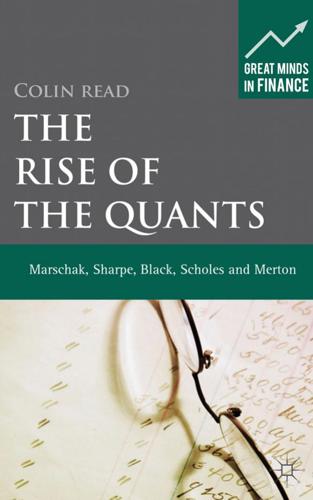
The Rise of the Quants: Marschak, Sharpe, Black, Scholes and Merton
by
Colin Read
Published 16 Jul 2012
Given this technical aspect of equations of motion in finance, it should come as no surprise that the institution most associated with the study of physics and engineering in the USA should likewise be a hotbed for dynamic models in the decision sciences. This shared vocation of MIT was demonstrated across its economics faculty. For instance, Robert Solow went on to win a Nobel Prize for his work in growth theory, which models how economic systems grow and evolve over time. And the first American economist to win the Nobel Prize was Samuelson, who was universally renowned as the person who brought mathematical rigor to the decision sciences. MIT developed a certain flavor of scholars with strong and sophisticated mathematical skills.
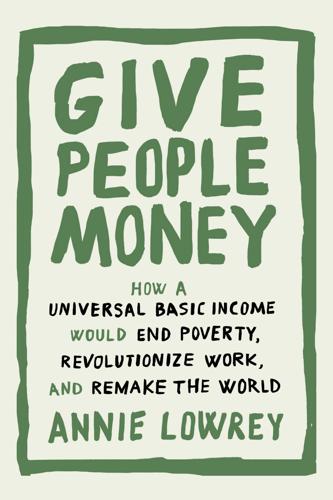
Give People Money
by
Annie Lowrey
Published 10 Jul 2018
In the 1890s and early 1900s, American businesses and families started hooking into the power grid, brightening buildings at night and paving the way for an astonishing array of consumer and industrial goods, from door buzzers to space shuttles. Yet, as the economist Chad Syverson has noted, for roughly a quarter century following its introduction, productivity growth was relatively slow. The same is true for the first information technology era, when computers started to become ubiquitous in businesses and homes. As the economist Robert Solow—hence the Solow residual—quipped in 1987, “You can see the computer age everywhere but in the productivity statistics.” In most cases, productivity did speed up once innovators invented complementary technologies and businesses had a long while to adjust—suggesting that the innovation gains and job losses of our new machine age might be just around the corner.
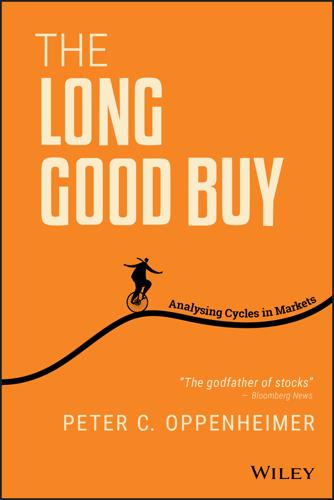
The Long Good Buy: Analysing Cycles in Markets
by
Peter Oppenheimer
Published 3 May 2020
In the same way, a transfer of transportation away from the internal combustion engine to electrification may be technically possible, but will require an integrated power supply system and refuelling points before it can be fully adopted. Concerns about the lack of productivity growth and, therefore, the misvaluation of companies associated with technology, were widespread in the 1980s. In 1987, Nobel Laureate Robert Solow argued that ‘you can see the computer age everywhere except in the productivity statistics’.12 These concerns faded when many economies saw a dramatic improvement in productivity in the 1990s. But the weakness in productivity growth in many economies since the Great Recession and the financial crisis has once more stimulated this debate.
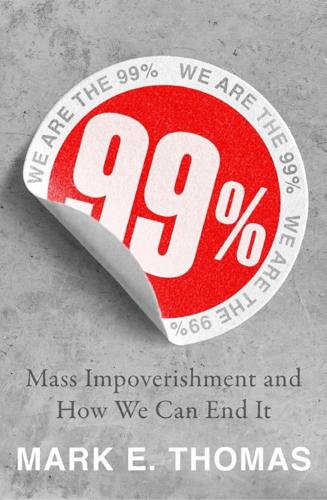
99%: Mass Impoverishment and How We Can End It
by
Mark Thomas
Published 7 Aug 2019
Although it is known that all of these simplifying assumptions are untrue in the real world, proponents of DSGE models refer to them as having micro-foundations. In other words, they are supposedly founded in an understanding of microeconomics. This is their great virtue. As the distinguished (and Nobel Prize-winning) economist Robert Solow put it in his testimony to the US House of Representatives Committee on Science and Technology in 2010: Here we are, still near the bottom of a deep and prolonged recession, with the immediate future uncertain, desperately short of jobs, and the approach to macroeconomics that dominates serious thinking, certainly in our elite universities and in many central banks and other influential policy circles, seems to have absolutely nothing to say about the problem… I do not think that the currently popular DSGE models pass the smell test.
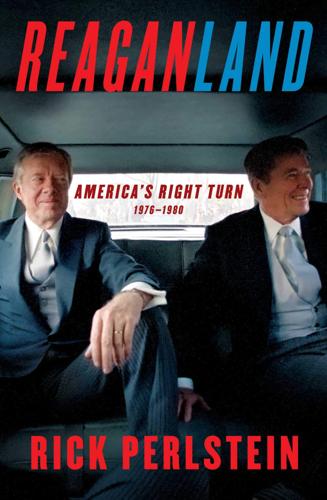
Reaganland: America's Right Turn 1976-1980
by
Rick Perlstein
Published 17 Aug 2020
Some members of the Fed governing committee, after joining the unanimous vote in October, changed their minds by November. The president of the Federal Reserve Bank of Minneapolis argued at a meeting of the now neutered Federal Reserve Open Markets Committee that no one could predict whether the program would have the intended results. The president of the American Economic Association, Robert Solow of MIT, said that a “monetary policy designed to stop inflation by inducing a downturn” was “disproportionately costly”: “The effect on prices is small and long delayed.… It is burning down the house to roast the pig.” There was no policy discussion about how the transition might be eased for those whose economic houses had been incinerated through no fault of their own, to roast somebody else’s pig.
…
cover of Time “The Squeeze of ’79,” Time, October 22, 1979. Friedrich Hayek “Sifting for Lessons of the Crash,” NYT, November 1, 1979. Paul Volcker offered similar “Volcker Asserts U.S. Must Trim Living Standard,” NYT, October 18, 1979. Two economists “The Forgotten Dollar Stages a Comeback,” Business Week, October 22, 1979. Robert Solow of MIT “The Threatening Economy,” NYT, December 30, 1979. Newsweek praised “Shock Treatment for Inflation,” Newsweek, October 22, 1979. Alan Greenspan enthused Sidney Blumenthal, The Rise of the Counter-Establishment: The Conservative Ascent to Political Power (New York: Times Books, 2007), 108.
…
Cleon, 32 “Sky is Falling” speech, 64 Skylab (space station), 419, 559, 572, 579 Slade, Dot, 78 slasher films, 420 Sloan, Alfred P., 285 Smeal, Eleanor, 244, 265, 488, 489, 884 Smith, Bailey, 23, 843, 872, 877 Smith, Howard K., 29, 774–775 Smith, Ian, 221, 391 Smith, Loren, 510 Smith, Maxine, 349 Smith-Richardson Foundation, 291 Smothers, Clay, 172, 494–495, 906 SNCC. See Student Nonviolent Coordinating Committee Snyder, Tom, 394, 695 Soap (sitcom), 171 Social Security Carter on, 290, 896, 898 Goldwater on, 750 Reagan on, 290, 750, 853, 898 women and, 153, 174 Solow, Robert, 635 Solzhenitsyn, Aleksandr, 844 Somoza García, Anastasio, 391, 597 Son of Sam (serial killer), 117, 126, 132, 133, 149 Sorensen, Theodore, Carter and, 47 South Africa, 231, 614–615 South African Freedom Foundation, 614, 615 South Carolina, 346–347, 364, 395, 692, 723, 735, 736, 739, 747, 750 South Dakota, 395, 598, 782, 784–786, 815 Southern Baptist Convention, 23, 24, 28, 171, 605 Southern Baptists, 52 Southern Christian Leadership Conference, 884 Soviet Might/American Myth: U.S. in Retreat (documentary), 293, 426, 595–596 Soviet Union in Afghanistan, 698–700, 710–711 Ford on, 21–23 ICBMs, 43, 426 Kissinger’s arms agreement and, 43 nuclear power, 504 Reagan and, 667, 672 SALT II, 342, 425–428, 444, 500, 501, 519, 561–562, 595, 597, 599, 643, 699, 711, 723, 877, 882 Winter Olympics (1980), 732 SP Program, 505–506 Spencer, Brenda, 420 Spencer, Stuart, 799 Sperling, Godfrey, 367, 510, 618 The Spirit-Controlled Woman (LaHaye), 73 The Spirit of Houston, 265 “Spooks for Bush,” 864 Spotlight magazine, 831 Stack, Robert, 668 stagflation, 287 Stahl, Leslie, 807 Stallone, Sylvester, 166 Stangeland, Arlan, 69, 71 Stanley, Charles, 605, 625, 722, 770–771 Stapleton, Ruth Carter, 73, 154, 257, 297 Star Wars movies, 119 Startup, Maurine and Elbert, 73 State of the Union (movie), 737–738 Staubach, Roger, 91 Stearns, Rick, 690 steel industry, 685, 762, 880 Steiger, William, 260, 261, 275, 277, 292 Steiger amendment, 262, 275, 276, 335 Stein, Herbert, 292 Steinem, Gloria, 128, 183, 187 Stellman, Mandy, 175, 177 sterilization laws, 820–821 Stevens, Ted, 199, 458, 589, 688, 692 Stevenson, Adlai, 10 Stevenson, Adlai, III, 524 Stewart, Gordon, 569, 573, 582 Stewart, Jimmy, 668 Stigler, George, 292 Stockdale, Jim, 511 Stockman, David, 113, 279, 755, 793, 887, 894 Stokes, Louis, 818, 819 Stone, Ann, 96 Stone, Richard, 597 Stone, Roger, 96, 109, 387, 457, 747, 856 Stonewall Inn raid, 84 STOP ERA, 78, 79, 81, 265 Strategic Arms Limitation Treaty.
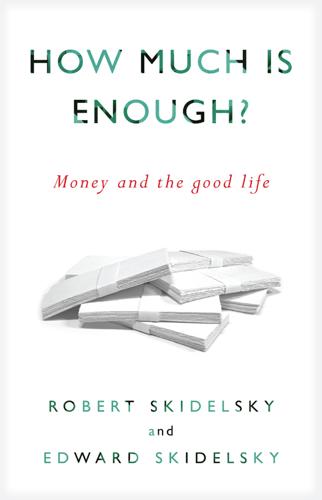
How Much Is Enough?: Money and the Good Life
by
Robert Skidelsky
and
Edward Skidelsky
Published 18 Jun 2012
Capitalism has achieved incomparable progress in the creation of wealth, but has left us incapable of putting that wealth to civilized use. How did we come to set up a system in which the love of gain was released from its moral constraints, and why has it become almost impossible to get it back under control? This is the subject of the next chapter. * Keynes anticipated Robert Solow’s growth model, in which growth of GDP is explained by the growth of the factor inputs capital and population, and the rate of technical progress. Like most economists, Keynes assumed diminishing returns to capital—each additional piece of capital would produce less output than the last—with capital saturation setting in.

The Cost of Inequality: Why Economic Equality Is Essential for Recovery
by
Stewart Lansley
Published 19 Jan 2012
As Gordon Brown admitted in his own account of the crisis, Beyond the Crash, ‘The crises of economic policy in the past century teach us that the conventional wisdom of the day can easily become the misjudgement of history.’433 An increasing number of leading political and economic figures have called for a fairer distribution of national wealth. In 2006, before the onset of the credit crunch, the Nobel-prize winning economist Robert Solow claimed that an economy that doesn’t distribute its gain more widely is ‘poorly performing’. In the same year Ben Bernanke said that corporations should ‘use some of those (higher) profit margins to meet demands for higher wages from workers. 434 In 2007 Germany’s finance minister called on European companies to ‘give workers a fairer share of their soaring profits.’435 In 2007, Robert Shiller warned that: ‘The most essential long-term economic problem of this century is the risk that income inequality will get substantially worse… The mere prospect of a winner-takes-all world ought to strike fear into our hearts.’436 It was a theme echoed at the 2011 World Economic Forum at Davos.
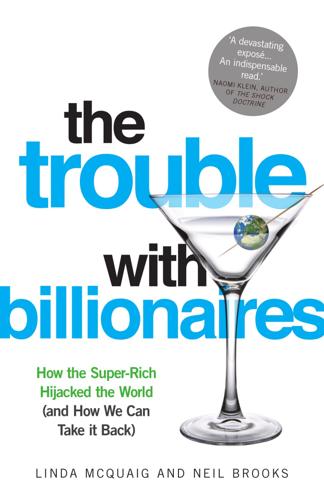
The Trouble With Billionaires
by
Linda McQuaig
Published 1 May 2013
At Harvard, long a bastion of classical economics, a new crop of young economists was transforming the university into a hotbed of Keynesian activism. That new crop included many who would go on to be senior policy advisers and prominent commentators in the postwar years – John Kenneth Galbraith, Paul Samuelson, James Tobin and Robert Solow. Galbraith recalled that while classical economics continued to be taught in Harvard classes by day, ‘in the evening and almost every evening from 1936 onwards almost everyone in the Harvard community discussed Keynes’.12 The ideas were even reaching a popular audience. There was an enormous popular appeal in the way Keynes put the problem of unemployment front and centre, whereas the classical school treated employment as a mere byproduct of achieving good economic fundamentals, a reward for good clean living.
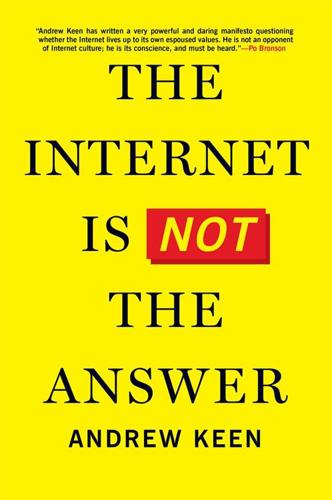
The Internet Is Not the Answer
by
Andrew Keen
Published 5 Jan 2015
Up till then, it was assumed that technological innovation was beneficial for society. Vannevar Bush, in the “Science, the Endless Frontier” report he wrote for Roosevelt in 1945, took it for granted that constant scientific and technological progress would inevitably lead to both more jobs and general prosperity. And this optimism was reflected in the work of the MIT economist Robert Solow, whose 1987 Nobel Prize in Economics was awarded for his research showing that over the long term, labor and capital maintained their share of rewards in a growing economy. But even Solow, whose research was mostly based on productivity improvements from the 1940s, ’50s, and ’60s, later became more skeptical of labor’s ability to maintain its parity with capital in terms of reaping the rewards of more economic productivity.
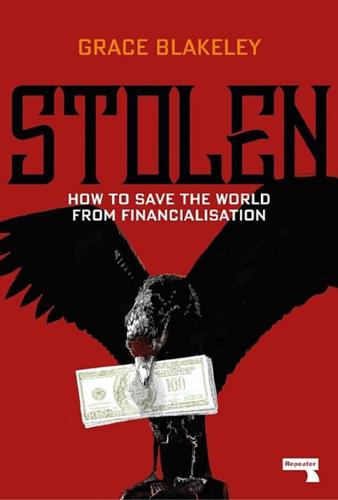
Stolen: How to Save the World From Financialisation
by
Grace Blakeley
Published 9 Sep 2019
Even neoclassical economists themselves can’t quite say why the marginal productivity theory of income distribution — which is the name of their particular understanding of the relationship between wages and productivity — should be true. When asked to justify his assumptions about the relationship between productivity and wages, the architect of one of the most famous neoclassical growth models — Robert Solow — remarked: “I could not find a good reason, but since theory and facts were broadly in accord, nobody bothered much with the assumption”.23 Today, with facts no longer in accord with the assumption, it might be time to rethink the theory. What if, rather than slowing productivity driving falling wages, falling wages are leading to falling profits, lower levels of investment, and slowing productivity?
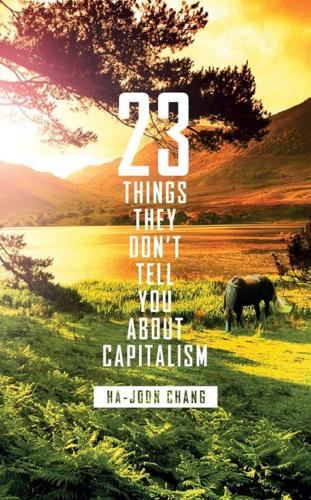
23 Things They Don't Tell You About Capitalism
by
Ha-Joon Chang
Published 1 Jan 2010
Thanks to the internet, I have been able to write a whole book with my friend and sometime co-author, Professor Ilene Grabel, who teaches in Denver, Colorado, with only one face-to-face meeting and one or two phone calls.5 However, for many other people, the internet has not had much impact on productivity. Studies have struggled to find the positive impact of the internet on overall productivity – as Robert Solow, the Nobel laureate economist, put it, ‘the evidence is everywhere but in numbers’. You may think that my comparison is unfair. The household appliances that I mention have had at least a few decades, sometimes a century, to work their magic, whereas the internet is barely two decades old. This is partly true.
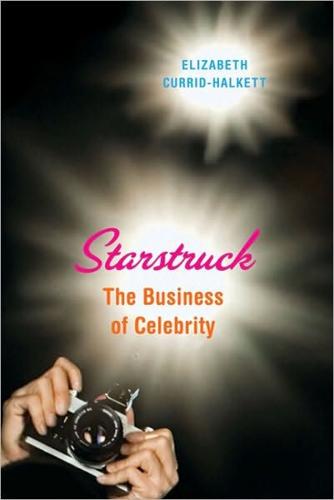
Starstruck: The Business of Celebrity
by
Currid
Published 9 Nov 2010
Sinatra, Frank Sitrick, Michael Slashdot Slumdog Millionaire (film) Smart, Barry Smith, Will Snowball (Schroeder) soccer Soccernomics (Kuper and Szymanski) Social Issue Research Center social media; democratic celebrities and; see also Facebook; MySpace; Twitter social networks; in Bollywood; see also networks, celebrity Solow, Robert M. Sontag, Susan Sotheby’s South Beach (Florida) Southern California, University of South Korea South Park (TV show) So You Think You Can Dance (TV show) Spears, Britney; bad behavior of; celebrity residual of; comments on blog postings on,; economic impact of; paparazzi and; volume of media mentions of Spears, Jamie Lynn Spice Girls; see also Beckham, Victoria Spielberg, Steven Spitzer, Eliot sports; celebrity residual in; networks in; relative celebrity in; see also baseball; football; soccer Sports Illustrated Sports Network SPPS Clementine Springsteen, Bruce Stallabrass, Julian Staller, Ilona (Cicciolina) Starbucks starlets Starr, Freddie Starr, Ringo Star Search (TV show) Star Trek TV shows and movies Stiller, Ben Streep, Meryl Stuckism art movement Studdard, Ruben Studio 54 (New York) Style Rookie subcultures Submission (film) Sudan Summers, Harvard Sun (tabloid) Sun Country Classic Sundance Film Festival Sunday Times supermodels superstar effect Surowiecki, James Sutton, Willie Szymanski, Stefan tabloids; American Idol winners in; Aniston in; bad behavior coverage in; British; covers; events covered by; Hilton in; Indian; paparazzi and; publicists and; sports stars in; superstar effect and; among top two hundred best selling magazines talent; in art world; celebrity residual versus; geography of stardom and; networks and; relative celebrity and; Star Currency and Talese, Gay Talley, André Leon Target stores Tate Modern (London) Tatler magazine Tavistock Group Taylor, Elizabeth Teixeira, Mark Teller, Juergen Tequila, Tila Texas Rangers Thakoon fashion house Thousand Years, A (Hirst) Timberlake, Justin Tipping Point, The (Gladwell) TLC TMZ Tokyo; World Cup in Tonight Show, The Topshop Torre, Joe Torvalds, Linus Total Request Live (TRL) trainers Transformers (film) Treasury bonds TriBeCa Film Festival Tron (film) Tron Guy Trump, Donald Trump, Melania Tucker, Ken Turner, Graeme Turner Prize Tussaud, Madame (Marie Grosholtz) Twentieth Century-Fox Twilight Saga films Twitter Underwood, Carrie Ungaro Union Square Cafe (New York) United Kingdom; art scene in; awards shows in; fantasy war games in; film premiers in; political elite in; press in; publicists in; reality TV in; sports celebrities in; see also London United Talent Agency Universal Pictures Urban Decay US Weekly; casual shots of stars in; circulation of; endorsement deals announced in; mentions of Winslet versus Aniston in U2 Vaccaro, Sonny Van Gogh, Theo Vanity Fair magazine; Oscar party hosted by Vaughn, Vince Verardi, Vincenzo VH1 Vicious, Sid Viper Room (Los Angeles) Virgin brand Vogue magazine; online Voltaire von Furstenberg, Diane Von Teese, Dita Walker, Kara Walk of Fame (Hollywood) Wallace, David Foster Wall Street Journal Wal-Mart Warhammer Warhol, Andy Warhol Economy, The (Currid-Halkett) Washington, D.C.
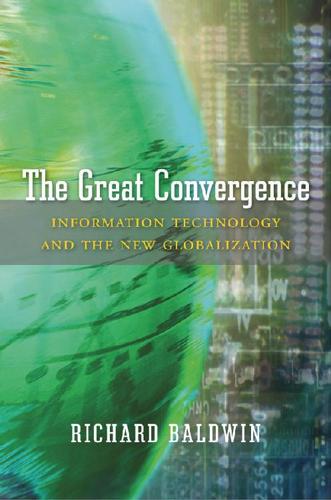
The Great Convergence: Information Technology and the New Globalization
by
Richard Baldwin
Published 14 Nov 2016
European incomes grew at just 0.03 percent per year for those seventeen centuries—that converts to a rise of 3 percent income growth per century. Asian growth was even slower. Asian incomes rose just 25 percent during the whole seventeen centuries covered in Figure 35. FIGURE 35: GDP per capita stagnated in most parts of the world from year 1 to 1700. Nobel Prize–winning economist Robert Solow taught us that human ingenuity is what fuels long-run growth. New ideas, new products, and new ways of arranging work directly boost output and income per worker. The inventions also lift incomes indirectly by making it worthwhile to invest in productivity-enhancing machines and skills. This is why incomes languished in the pre-globalized world.
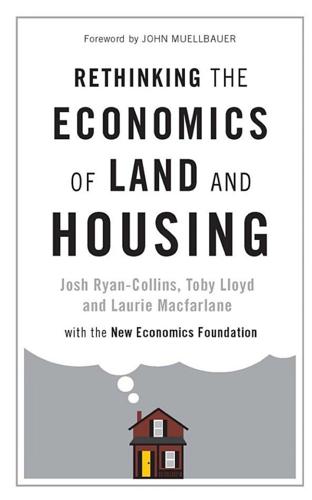
Rethinking the Economics of Land and Housing
by
Josh Ryan-Collins
,
Toby Lloyd
and
Laurie Macfarlane
Published 28 Feb 2017
Sloman, J., and A. Wride. 2009. Economics. 7th ed. Harlow: Prentice Hall. Smith, Adam. 1776. An Inquiry into the Nature and Causes of the Wealth of Nations. W. Strahan and T. Cadell. Snowdon, Christopher. 2010. The Spirit Level Delusion: Fact-Checking the Left’s New Theory of Everything. Ripon: Little Dice. Solow, Robert M. 1956. ‘A Contribution to the Theory of Economic Growth’. The Quarterly Journal of Economics 70 (1): 65–94. Stephens, Mark. 1993. ‘Housing Finance Deregulation: Britain’s Experience’. Journal of Housing and the Built Environment 8 (2): 159–75. Stephens, Mark. 2007. ‘Mortgage Market Deregulation and Its Consequences’.
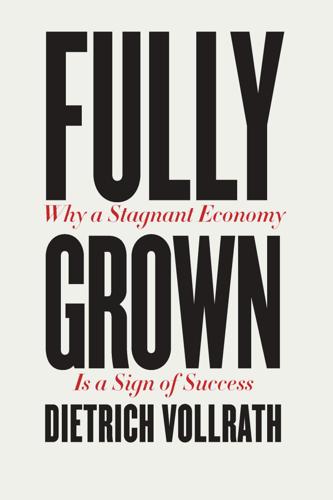
Fully Grown: Why a Stagnant Economy Is a Sign of Success
by
Dietrich Vollrath
Published 6 Jan 2020
Because rival inputs cannot be shared, the percentage increase in output doesn’t equal the percentage increase in an input. Given that the standard inputs also tend to depreciate over time, it eventually becomes impossible to accumulate them fast enough to keep ahead of the depreciation, meaning that economic growth would end up disappearing if we didn’t have more and more nonrival ideas and plans, something Robert Solow figured out back in 1956, in a paper that is the foundation of nearly all theories of economic growth. Romer built on Solow’s work by not only noting that nonrival inputs were different than rival inputs but also asking why anyone would bother to dream up these nonstandard ideas and plans in the first place.

The Weightless World: Strategies for Managing the Digital Economy
by
Diane Coyle
Published 29 Oct 1998
Unnecessary documents with beautiful graphics are generated, delivering little additional information for a lot of extra effort. Impatient shoppers spend minutes waiting for an under-trained sales clerk to figure out how to enter a purchase on the terminal, which will control the inventory, and for their credit card to be validated. Economists have dubbed this the productivity puzzle. Nobel Laureate Robert Solow famously joked: ‘You can see the computer age everywhere but in the productivity statistics’.7 So why have computers not generated extra growth in output? There are at least three answers: under-measurement of the output of industries using information technology; over-estimation of the importance of computers relative to all other types of capital equipment; and over-optimism about how quickly new technologies spread.
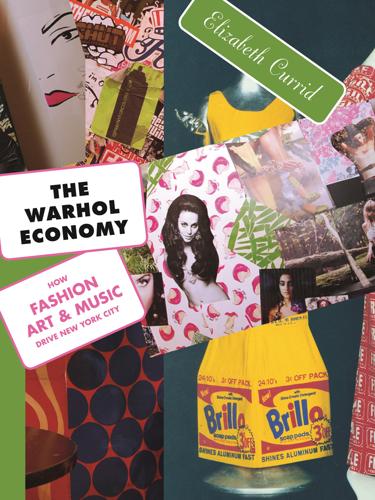
The Warhol Economy
by
Elizabeth Currid-Halkett
Published 15 Jan 2020
Silver, Daniel, Terry N. Clark, and Lawrence Rothfield. (2005). “A Theory of Scenes.” Working Paper, University of Chicago. Simmel, Georg. (1957; originally 1904). Fashion. American Journal of Sociology 62, 6: 541–58. Sisario, Ben. (2006). Where the Beat Goes On. New York Times, October 27. Solow, Robert M. (1956). A Contribution to the Theory of Economic Growth. Quarterly Journal of Economics 70, 1: 65–94. Stansell, Christine. (2000). American Moderns: Bohemian New York and the Creation of a New Century. New York: Metropolitan Books, Henry Holt. Stark, David. (2000). “For a Sociology of Worth.”

The Meritocracy Trap: How America's Foundational Myth Feeds Inequality, Dismantles the Middle Class, and Devours the Elite
by
Daniel Markovits
Published 14 Sep 2019
All these data suggest that meritocratic skills, for all the returns that they yield superordinate workers, yield little or no net social product, or boost in total output as compared to a world that had carried midcentury America’s democratic regimes of training and work forward into the present. As the economist Robert Solow, whose work on economic growth won him the Nobel Prize, once wryly admitted, it is “somewhat embarrass[ing] . . . that what everyone feels to have been a technological revolution, a drastic change in our productive lives, has been accompanied everywhere . . . by a slowing-down of productivity growth, not by a step up. We can see the computer age everywhere but in the productivity statistics.” Robert Solow, “We’d Better Watch Out,” New York Times, July 12, 1987 (reviewing Stephen S. Cohen and John Zysman, Manufacturing Matters: The Myth of the Post-Industrial Economy).
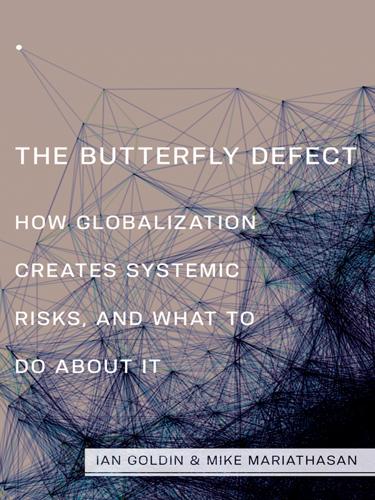
The Butterfly Defect: How Globalization Creates Systemic Risks, and What to Do About It
by
Ian Goldin
and
Mike Mariathasan
Published 15 Mar 2014
Smith, Gavin J. D., Dhanasekaran Vijaykrishna, Justin Bahl, Samantha J. Lycett, Michael Worobey, Oliver G. Pybus, Siu Kit Ma, Cheung Chung Lam, Jayna Raghwani, Samir Bhatt, et al. 2009. “Origins and Evolutionary Genomics of the 2009 Swine-Origin H1N1 Influenza A Epidemic.” Nature 459: 1122–1126. Solow, Robert M. 1956. “A Contribution to the Theory of Economic Growth.” Quarterly Journal of Economics 70 (1): 65–94. Soramäki, Kimmo, Morten L. Bech, Jeffrey Arnold, Robert J. Glass, and Walter Beyeler. 2007. “The Topology of Interbank Payment Flows.” Physica A: Statistical Mechanics and Its Applications 379 (1): 317–333.
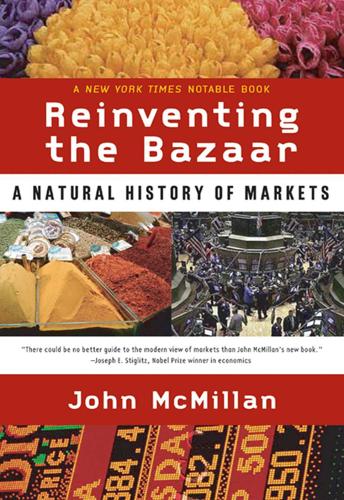
Reinventing the Bazaar: A Natural History of Markets
by
John McMillan
Published 1 Jan 2002
Fixing an underperforming economy, as Russia shows, is a lengthy and sometimes painful process. There is uncertainty about what policies will work. We still have a lot to learn about what a country must do to achieve economic growth. “There is not some glorious theoretical synthesis of capitalism that you can write down in a book and follow,” as Nobel economist Robert Solow said. “You have to grope your way.”22 While there is no recipe book for economic success, the broad-brush growth studies summarized in this chapter and the more close-up analyses in the earlier chapters yield some lessons. Growth requires getting the institutions right. This means the state must take appropriate actions.
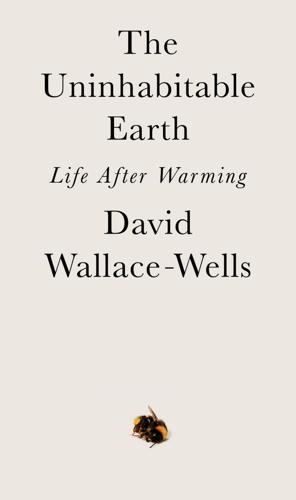
The Uninhabitable Earth: Life After Warming
by
David Wallace-Wells
Published 19 Feb 2019
* * * — That technology might liberate us, collectively, from the strain of labor and material privation is a dream at least as old as John Maynard Keynes, who predicted his grandchildren would work only fifteen-hour weeks, and yet never ultimately fulfilled. In 1987, the year he won the Nobel Prize, economist Robert Solow famously commented, “You can see the computer age everywhere but in the productivity statistics.” This has been, even more so, the experience of most of those living in the developed world in the decades since—rapid technological change transforming nearly every aspect of everyday life, and yet yielding little or no tangible improvement in any conventional measures of economic well-being.
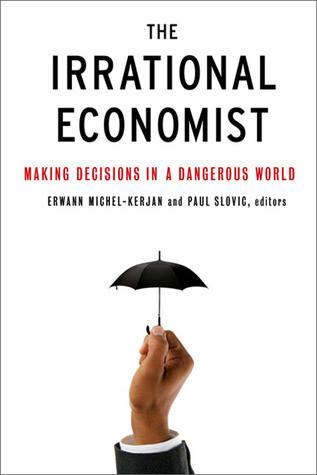
The Irrational Economist: Making Decisions in a Dangerous World
by
Erwann Michel-Kerjan
and
Paul Slovic
Published 5 Jan 2010
I had to depart from that format, Kunreuther not being just another academic economist. HOWARD KUNREUTHER, A GREAT MIND AND A TRUE PIONEER IN THE STUDY OF DECISION MAKING IN A DANGEROUS WORLD Howard Kunreuther was trained as what many would consider a very rational economist. He received his PhD in economics from MIT in 1965. Among his advisors was Robert Solow, the famous macro-economist who was later awarded the Nobel Prize. Kunreuther easily could have taken the path of hard modeling and theoretical research. But he was deeply interested in how people behave. Soon enough, he started challenging the usual rational model of decision making by looking at how people make decisions in risky environments (at that time, he studied potential victims of major floods and earthquakes).
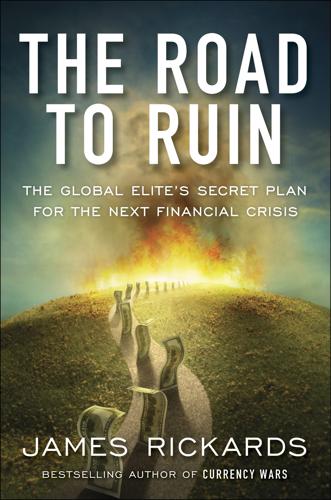
The Road to Ruin: The Global Elites' Secret Plan for the Next Financial Crisis
by
James Rickards
Published 15 Nov 2016
What unites Historical school members are not their conclusions, which vary widely (to the point of contradiction), but rather their inductive method, which relies on close consideration of long-term processes and impressions drawn from that consideration. Earlier adherents to the Historical school include Walter Bagehot, Max Weber, and Karl Marx. Schumpeter is the last pure representative of this school, although Hyman Minsky, Alan Greenspan, and Nobelist Robert Solow were all strongly influenced by him. The Historical school’s inductive method and use of history have today been brushed aside by neo-Keynesian equations and an Austrian insistence on money agency. Yet Schumpeter’s insights into capital formation through entrepreneurship, and its disruptive impact on prevalent business models—creative destruction—seem in sync with the age of Amazon and Netflix.

Austerity: The History of a Dangerous Idea
by
Mark Blyth
Published 24 Apr 2013
Milton Friedman and Rose Friedman (1962), Capitalism and Freedom (Chicago: University of Chicago Press, 1982), vii. 140. Alesina and Ardanga, “Large Changes,” 15. 141. Ibid., 3. 142. Ibid., 4. 143. Ibid., 5. 144. Ibid., 9. 145. Ibid., 12. 146. Ibid. 147. Ibid., 13. 148. Ibid. It was, I think, Robert Solow who once remarked, Why is it in such models that when the government buys a typewriter it’s a dead loss, yet when the worst author buys one, so long as he resides in the private sector, it leads to growth? 149. Alberto Alesina, “Fiscal Adjustment: Lesson From History.” Paper prepared for the Ecofin meeting in Madrid, April 15, 2010, available from http://www.economics.harvard.edu/files/faculty/2_Fiscal%20Adjustments_lessons.pdf. 150.

Trees on Mars: Our Obsession With the Future
by
Hal Niedzviecki
Published 15 Mar 2015
The answer comes through an analysis of productivity. Productivity is the measurement of how efficient we are at generating goods and services. “Labor productivity can be measured as output per worker or output per hour worked.”27 Up until very recently, it was a trusted axiom—one shown to be true by economist Robert Solow, who was awarded a Nobel Prize in 1987 for establishing it—that rising productivity leads to rising living standards. If your country’s overall productivity was going up—if you could make more stuff faster and increase the gross national product produced per worker—your country’s living standards were going up.

The AI Economy: Work, Wealth and Welfare in the Robot Age
by
Roger Bootle
Published 4 Sep 2019
In particular, they don’t conform to the traditional pattern of technological advance that has underpinned economic progress over the last two centuries, namely the replacement of human labor by machines. You would have thought that computerization most definitely did conform to this paradigm. Yet the Nobel Prize-winning economist Robert Solow famously remarked in 1987: “you can see the computer age everywhere but in the productivity statistics.” 29 (Mind you, the pickup in US productivity in the late 1990s suggests that the gains from computers were real but, as with many other advances, delayed.) The American entrepreneur and venture capitalist, Peter Thiel, has put recent technological disappointment more pithily.

The Glass Half-Empty: Debunking the Myth of Progress in the Twenty-First Century
by
Rodrigo Aguilera
Published 10 Mar 2020
This gives them more “bang for their buck” even if they are more expensive. But despite the fact that many of these items eventually become part of the basic basket of goods, their ultimate contribution to productivity is dubious at best; productivity growth in many Western countries has slowed down or even turned negative in the post-crisis years.17 When economist Robert Solow famously griped in 1987 that “you can see the computer age everywhere except in the productivity statistics”, little did he imagine how much money people would be spending two decades later to have a mini-computer in their pockets whose main use was to flag a taxi or play Candy Crush. Figure 3.3: The winners and losers of globalization Notes: This is the elephant chart showing the growth in incomes across every ventile of world population, plus the top 1 percent.

Boom: Bubbles and the End of Stagnation
by
Byrne Hobart
and
Tobias Huber
Published 29 Oct 2024
Congressional Budget Office, Washington, DC, March 2013. https://www.cbo.gov/sites/default/files/113th-congress-2013-2014/workingpaper/44002_TFP_Growth_03-18-2013_1.pdf. Silverstein, Arthur M. “‘The End Is Near!’: The Phenomenon of the Declaration of Closure in a Discipline.” History of Science 37, no. 4 (1999). Solow, Robert M. “A Contribution to the Theory of Economic Growth.” Quarterly Journal of Economics 70, no. 1 (February 1956): 65–94. https://doi.org/10.2307/1884513. Sornette, Didier. “Nurturing Breakthroughs: Lessons from Complexity Theory.” Journal of Economic Interaction and Coordination 3 (2) (2008): 165.

The Wealth and Poverty of Nations: Why Some Are So Rich and Some So Poor
by
David S. Landes
Published 14 Sep 1999
—Kenneth Arrow “David Landes has written a masterly survey of the great successes and failures among the world’s historic economies. He does it with verve, broad vision, and a whole series of sharp opinions that he is not shy about stating plainly. Anyone who thinks that a society’s economic success is independent of its moral and cultural imperatives obviously has another think coming.” —Robert Solow “Mr. Landes writes with verve and gusto…. This is indeed good history.” —Douglass C. North, Wall Street Journal “You cannot even begin to think about problems of economic development and convergence without knowing the story that Landes tells…. I know of no better place to start thinking about the wealth and poverty of nations.”
…
Crane Brinton, Alexander Gerschenkron, Richard Pipes, David and Aida Donald, Benjamin Schwartz, Harvey Leibenstein, Robert Fogel, Zvi Griliches, Dale Jorgensen, Amartya Sen, Ray Vernon, Robert Barro, Jeff Sachs, Jess Williamson, Claudia Goldin, Daniel Bell, Nathan Glazer, Talcott Parsons, Brad DeLong, Patrice Higonnet, Martin Peretz, Judith Vichniac, Stephen Marglin, Winnie Rothenberg). Nor should I forget the extraordinary stimulation I received from a year at the Center for Advanced Study in the Behavioral Sciences in Palo Alto. This was in 1957-58, and I was the beneficiary of a banner crop of economists: Kenneth Arrow, Milton Friedman, George Stigler, Robert Solow (four future winners of the Nobel Prize!). Get a paper past them, and one was ready for any audience. And then, in addition to those colleagues mentioned above, others at home and abroad. In the United States: William Parker, Roberto Lopez, Charles Kindleberger, Liah Greenfield, Bernard Lewis, Leila Fawaz, Alfred Chandler, Peter Temin, Mancur Olson, William Lazonick, Richard Sylla, Ivan Berend, D.

The Third Industrial Revolution: How Lateral Power Is Transforming Energy, the Economy, and the World
by
Jeremy Rifkin
Published 27 Sep 2011
When neoclassical economists talk about productivity and economic growth as a measure of output per unit of input, the inputs they have in mind are capital and labor. Yet, when economists analyze the actual economic growth in the United States and other industrial countries, the amount of capital invested per worker accounts for only about 14 percent of the increase, leaving 86 percent of the growth unaccounted for. Robert Solow, whose theory of economic growth landed him a Nobel prize, says quite candidly that the missing 86 percent is “a measure of our ignorance.”17 It took a physicist to explain the apparent enigma. Reiner Kümmel, of the University of Wuerzburg in Germany, constructed a growth model that included energy, along with capital and labor inputs, and tested it against growth data over a period between 1945 and 2000 in the United States, the United Kingdom, and Germany, and found that energy was the “missing factor,” accounting for the rest of the productivity and economic growth.18 Robert Ayres, a professor of environment and management at the INSEAD business school in Fountainebleau, France, who was trained in physics and devoted much of his professional career to studying energy flows and technological change, and Benjamin Warr, a research assistant, constructed their own three-factor input model and tested it against the economic growth curve during the entire twentieth century in the United States, and then carried out subsequent studies of the United Kingdom, Japan, and Australia.

The Digital Doctor: Hope, Hype, and Harm at the Dawn of Medicine’s Computer Age
by
Robert Wachter
Published 7 Apr 2015
This phenomenon is known as the “productivity paradox” of information technology. 38 The name comes from the fact that Gross and Tecco decided to launch the organization while sitting in Harvard Business School’s Rock Hall. Chapter 26 The Productivity Paradox You can see the computer age everywhere but in the productivity statistics. —Nobel Prize–winning MIT economist Robert Solow, writing in 1987 Between the time David Blumenthal stepped down as national coordinator for health IT and became CEO of the Commonwealth Fund, he returned to Boston from 2011 to 2013 to manage the transition of Partners HealthCare from a homegrown electronic health record to the one made by Epic.

The Code of Capital: How the Law Creates Wealth and Inequality
by
Katharina Pistor
Published 27 May 2019
Yet they too underestimate the role of law in the process of wealth creation.29 By grafting the modules of the legal code of capital onto an asset, its holder obtains a right over and above others; her claims enjoy greater durability and face fewer obstacles to lock in past gains by converting them into state money. Last, these special rights are universal and can therefore be enforced against the world. Exceptions prove the rule; some economists have recognized that restricting the world to things one can see and touch can be highly misleading. The eminent scholar Robert Solow, for example, remarked in 1987 that “you see the computer revolution everywhere except in the productivity data.”30 Since then, efforts have been made to measure intangibles for national accounts, firm productivity, and shareholder wealth. As the saying goes, “that which is measured, improves,” but in this case, the reverse seems to hold: because there seems to be something of value here, we must be able to measure it.31 Measuring and valuing intangibles has become more important since the more conventional “bricks and mortar” capital in the form of land, factories, machines, and other tangibles has been in decline.

Palace Coup: The Billionaire Brawl Over the Bankrupt Caesars Gaming Empire
by
Sujeet Indap
and
Max Frumes
Published 16 Mar 2021
His father was a factory worker at Western Electric and his mother was a homemaker. He attended Wesleyan University in Connecticut, then spent two years as a research assistant at the Federal Reserve Bank of Boston before joining the economics PhD program at MIT. Loveman grew close to Professor Robert Solow, a towering figure in macroeconomics who had won the 1987 Nobel Prize. In 1988, Loveman was considered the top American PhD student in labor economics. His thesis explored the difference in unemployment rates between the United States and Europe. Accepting the HBS professorship made his academic work more practical than theoretical.

Green Philosophy: How to Think Seriously About the Planet
by
Roger Scruton
Published 30 Apr 2014
Mill, Principles of Political Economy, book 4, ch. 6, ‘Of the Stationary State’, London, 1848. 358 Herman Daly, Steady-State Economics, San Francisco, 1977; Beyond Growth, Boston, 1996. 359 Ridley, op. cit., p. 249, dismisses it as ‘Pareto piffle’. In all its forms it is hard to reconcile the steady-state economy with models of economic growth (such as that developed by Robert Solow) in which the expansion of technological knowledge is seen as the principal growth factor. 360 David W. Orr, ‘Four Challenges of Sustainability’, Conservation Biology, 16.6, 2002, pp. 1457–60. And see Orr’s influential book Earth in Mind: On Education, Environment, and the Human Prospect, Washington DC, 1993. 361 See the discussion by Daniel Bonevac, ‘Is Sustainability Sustainable?’

The Most Powerful Idea in the World: A Story of Steam, Industry, and Invention
by
William Rosen
Published 31 May 2010
An idea—a separate condenser, for example, or a spinning jenny—might be costly for one inventor to develop, but it wasn’t long (not even the fourteen years of a patent) before it became de facto public property, and inspired others to improve upon it. Marshall’s “spillovers” were intriguing but remained anecdotal until the 1950s, when the Nobel Prize–winning economist Robert Solow incorporated something very like it into an equation known as the fundamental equation of growth. Working from a contemporary economic model that had shown that capital, labor, and land could be substituted for one another—as one component grew more expensive, producers could substitute one for the other—Solow was able to calculate the rate at which average workers increase their output.

Machines of Loving Grace: The Quest for Common Ground Between Humans and Robots
by
John Markoff
Published 24 Aug 2015
This results in a system of almost unlimited productive capacity which requires progressively less human labor.”15 The resulting National Commission on Technology, Automation, and Economic Progress would include a remarkable group ranging from Reuther, Thomas J. Watson Jr. of IBM, and Edwin Land of Polaroid, to Robert Solow, the MIT economist, and Daniel Bell, the Columbia sociologist. When the 115-page report appeared at the end of 1966 it was accompanied by 1,787 pages of appendices including special reports by outside experts. The 232-page analysis of the impact of computing by Paul Armer of the RAND Corporation did a remarkable job of predicting the impact of information technology.

Naked Economics: Undressing the Dismal Science (Fully Revised and Updated)
by
Charles Wheelan
Published 18 Apr 2010
“A-Rod” will help the Yankees win games, which will fill stadiums, sell merchandise, and earn television revenues. Virtually no one else on the planet can do that as well as he can. As with other aspects of the market economy, the price of a certain skill bears no inherent relation to its social value, only its scarcity. I once interviewed Robert Solow, winner of the 1987 Nobel Prize in Economics and a noted baseball enthusiast. I asked if it bothered him that he received less money for winning the Nobel Prize than Roger Clemens, who was pitching for the Red Sox at the time, earned in a single season. “No,” Solow said. “There are a lot of good economists, but there is only one Roger Clemens.”

Against the Gods: The Remarkable Story of Risk
by
Peter L. Bernstein
Published 23 Aug 1996
The following people also made significant contributions to my work and warrant my deepest appreciation: Kenneth Arrow, Gilbert Bassett, William Baumol, Zalmon Bernstein, Doris Bullard, Paul Davidson, Donald Dewey, David Durand, Barbara Fotinatos, James Fraser, Greg Hayt, Roger Hertog, Victor Howe, Bertrand Jacquillat, Daniel Kahneman, Mary Kentouris, Mario Laserna, Dean LeBaron, Michelle Lee, Harry Markowitz, Morton Meyers, James Norris, Todd Petzel, Paul Samuelson, Robert Shiller, Charles Smithson, Robert Solow, Meir Statman, Marta Steele, Richard Thaler, James Tinsley, Frank Trainer, Amos Tversky,* and Marina von N. Whitman. Eight people generously undertook to read the manuscript in its entirety and to give me the benefit of their expert criticisms and suggestions. Each of them, in his own way, deserves major credit for the quality of the content and style of the book, without bearing any responsibility for the shortcomings it contains.

Culture and Prosperity: The Truth About Markets - Why Some Nations Are Rich but Most Remain Poor
by
John Kay
Published 24 May 2004
See stock market Sheehan, George, 123,244 Shiller, Bob, 336 Shockley, William, 268 shoe factory, 279-81 shortages, 127-28, 173,231,232 Silicon Valley, 26, 91, 118,268 silver market, 100, 150 Simon, Herbert, 134,219, 360 Singer, Hans, 285 Index skills, 28, 304, 321 Sloan, Alfred, 79 Smith, Adam, 17-19,57,83,84, 86, 88, 179, 197-99,256,302,311,338 contribution of, 18, 69, 198 interpretations of, 126, 197-98 mercantilism vs., 177, 178 social capital, 172 social contract, 247,251 social insurance, 241-42, 350 socialism, 10, 96,312 social sciences, 324, 332-33, 337 sociobiology, 217 Solow, Robert M., 278, 284, 338, 360 Son~89, 119,120,261,268 Soros, George, 150, 151 South Korea, 32, 34, 53, 64, 280, 281 Soviet Union collapse of, 114, 287-88, 306 failings of, 9, 97-98, 105, 108, 110-14, 127,173-74,278,288,306-7 scientific research, 269 See also Russia specialization, 86-92 and convexity, 180-81 and teamwork, 252 See also competitive advantage; division oflabor speculation, 78, 103, 150, 151, 170,341 role of, 244-45 Spence, Michael, 207, 360 Spitzer, Eliot, 11,218 spontaneous order, 20, 125-34, 152, 199, 265,311 and coordination, 126-28, 146-47, 173, 198,320 definition of, 173 and disciplined pluralism, 308 and mathematical models, 179, 330 and networks, 263 and price emergence, 151 queue example, 128-29, 147 standard ofliving.

The End of Alchemy: Money, Banking and the Future of the Global Economy
by
Mervyn King
Published 3 Mar 2016
Sims, Christopher (2013), ‘Paper Money’, American Economic Review, Vol. 103, No. 2, pp. 563–84. Smith, Adam (1759), Theory of Moral Sentiments, A. Millar, London. —— (1766), Lectures on Jurisprudence, B, Report dated 1766, p. 493. —— (1776), Wealth of Nations, W. Strahan and T. Cadell, London. Smith, Ed (2012), Luck: What it Means and Why it Matters, Bloomsbury Publishing, London. Solow, Robert M. (1956), ‘A Contribution to the Theory of Economic Growth’, Quarterly Journal of Economics, 70(1), pp. 65–94. Stiglitz, Joseph (2014), ‘Reconstructing Macroeconomic Theory to Manage Economic Policy’, National Bureau of Economic Research Working Paper 20517, mimeo, Cambridge, Massachusetts. Summers, Lawrence H. (1983), ‘“On the Economics of Private Money” by Robert G.

Year 501
by
Noam Chomsky
Published 19 Jan 2016
II (Princeton, 1990) Daws, Gavan, Shoal of Time (Macmillan, 1968) Debo, Angie. And Still the Waters Run (1940; Princeton, 1991, updated) Deere, Carmen Diana, et al. In the Shadows of the Sun (Westview, 1990) Demarest, David, ed. “The River Ran Red”: Homestead 1892 (Pittsburgh, 1992) Dertouzos, Michael, Richard Lester, and Robert Solow. Made in America (MIT, 1989) Dimerstein, Gilberto. Brazil: War on Children (Latin America Bureau, London, 1991) Drèze, Jean, and Haris Gazdar. Hunger and Poverty in Iraq, 1991 (Development Economics Research Programme, London School of Economics, No. 32, Sept. 1991) Drinnon, Richard. White Savage: the Case of John Dunn Hunter (Schocken, 1972) —Facing West (Minnesota, 1980) Du Boff, Richard.

Against Intellectual Monopoly
by
Michele Boldrin
and
David K. Levine
Published 6 Jul 2008
We are grateful for Pres-ton McAfee’s analysis of the Rambus case; Alessandro Nuvolari’s advice, especially about steam power; Ivan P’ng’s example of the wheeled suitcase; Eric Rasumussen’s analysis of marketing and copyright; Jean-Laurent Rosenthal’s leads on the history of copyright; and George Selgin and John Turner’s corrections to our story of James Watt. Many people contributed examples, comments, and references, especially Serguey Braguinski, Tim Erickson, Jack Hirshleifer, Bronwyn Hall, Andrea Moro, G. Moschini, Ed Prescott, Paul Seabright, Malik Shukayev, Robert Solow, William Stepp, Stefano Trento, and Edward Welbourne. We learned an immense amount from our fellow bloggers at http:// www.againstmonopoly.org: John Bennett, Andrea Moro, Michael Perelman, Sheldon Richman, and William Stepp. We are grateful also to the Slashdot Web site (http://slashdot.org) and its many contributors for a set of detailed comments on an early version of some of the chapters.

Money Free and Unfree
by
George A. Selgin
Published 14 Jun 2017
Only if panic becomes general—if depositors lose confidence in the entire banking system—will depositors switch to holding high-powered money, weakening all depository institutions in the process.8 Thus, a crucial (though often implicit) assumption in the pro-lender-of-last-resort literature is, to quote Robert Solow (1982: 238), that “any bank failure diminishes confidence in the whole system,” leaving no private banks in a position to stem a panic. This is a very strong assumption, especially in view of the paucity of support one finds for it in history. In U.S. experience, Arthur Rolnick and Warren Weber (1986) found no evidence of any contagion effects from bank runs during the free-banking era (1837–60).

Second World: Empires and Influence in the New Global Order
by
Parag Khanna
Published 4 Mar 2008
The offenses we have offered to our world environment since the establishment of our independence have been ones arising as a rule not from any desire on our own part to bring injury to others or to establish power over them, but from our attempts to strike noble postures and to impress ourselves.” Kennan, American Diplomacy, 158, 169. America’s mantle of supremacy cannot reliably be based on its riches when, as Nobel laureate Robert Solow writes, “The notion that God intended for Americans to be permanently wealthier than rest of world becomes less and less likely as time goes on.” (New York Times, December 14, 2003.) Indeed, the more that American superiority is viewed in material terms, particularly military terms, the more that other systems can justify their ideologies in the name of achieving equal material and military heft.

Connectography: Mapping the Future of Global Civilization
by
Parag Khanna
Published 18 Apr 2016
.*1 — SUPPLY CHAINS WERE ONCE thought of as spurring a race to the bottom; now it is clear they are how countries race to the top. Even China and India needed to open to foreign investment to attract supply chains, stimulate reforms, and generate the capital necessary to spread development. As the Nobel laureates Robert Solow and Edmund Phelps have pointed out, foreign firms pay higher wages, bring in new technology, and boost worker skills and productivity. They inject dynamism and capitalize on people’s resourcefulness. They help countries turn their Scrabble pieces into words. The fact that so much infrastructure (such as utilities and affordable housing) and access to markets come from the private sector has engendered a new dynamic between capital and labor, governments and markets.

Model Thinker: What You Need to Know to Make Data Work for You
by
Scott E. Page
Published 27 Nov 2018
Behavioral Ecology 14: 116–126. Smith, Vernon. 2002. “Constructivist and Ecological Rationality.” Nobel Prize lecture. Sneppen, Kim, Per Bak, Henrik Flyvbjerg, and Mogens Jensen. 1994. “Evolution as a Self-Organized Critical Phenomenon.” Proceedings of the National Academy of Sciences 92: 5209–5213. Solow, Robert M. 1956. “A Contribution to the Theory of Economic Growth.” Quarterly Journal of Economics 70, no. 1: 65–94. Spence, A. Michael. 1973. “Job Market Signaling.” Quarterly Journal of Economics 87, no. 3: 355–374. Squicciarini, Mara, and Nico Voigtländer. 2015. “Human Capital and Industrialization: Evidence from the Age of Enlightenment.”

Why Nations Fail: The Origins of Power, Prosperity, and Poverty
by
Daron Acemoglu
and
James Robinson
Published 20 Mar 2012
Acemoglu and Robinson provide an enormous range of historical examples to show how such shifts can tilt toward favorable institutions, progressive innovation, and economic success or toward repressive institutions and eventual decay or stagnation. Somehow they can generate both excitement and reflection.” —Robert Solow, Nobel laureate in economics, 1987 Copyright © 2012 by Daron Acemoglu and James A. Robinson All rights reserved. Published in the United States by Crown Publishers, an imprint of the Crown Publishing Group, a division of Random House, Inc., New York. www.crownpublishing.com CROWN and the CROWN colophon are registered trademarks of Random House, Inc.

Not Working: Where Have All the Good Jobs Gone?
by
David G. Blanchflower
Published 12 Apr 2021
See also flexible work schedules; gig economy; part-time work Semuels, Alana, 16 Sentence, Andrew, 321 Shadforth, Chris, 29, 84 Shapiro, Leo, 185 Sharot, Tali, 123 Shaw, George Bernard, 240 Shiller, Robert, 169–70, 339 shortages, 2–3, 47 Silver, Nate, 267–69 single-parent households, 72 Skidelsky, Robert, 80, 173, 176 skills, 34; deterioration of, 42; middle-level, 102 Slichter, Sumner, 182 Slovak Republic, 41, 79, 133, 141, 251 Slovenia, 78, 116, 133, 251, 280, 283 Smiffys (dressmakers), 186–87 Smith, Harry Leslie, 37 Smith, Jeff, 343 Smith, Noah, 169, 234 Smith, Steve, 180 Smith, Vernon, 115–16 smoking, 27, 44, 45, 275 Smoot-Hawley Tariff Act (1930), 317 Snaith, John, 272 Social Security, 293, 342 Social Security Disability Insurance (SSDI), 217 Société Générale, 188 “Society at a Glance” (OECD), 330 Solow, Robert, 168, 182 Song, Jae, 109 Soros, George, 326 Sorrentino, Constance, 183 South Africa, 330 South Carolina, 288 South Dakota, 227 South Sea Bubble, 81 soybeans, 319 Spade, Kate, 231 Spain, 38, 154, 326–27; business and consumer confidence in, 196, 321–22; governments mistrusted in, 331; Great Recession in, 78, 84–85; housing in, 39, 84–85, 92; immigration to, 238, 253; inequality viewed in, 116; left nationalism in, 284; obesity in, 224; physical pain in, 219; quality of life perceptions in, 76–77; real earnings in, 61; underemployment in, 49, 131–32, 136; unemployment in, 88, 132, 134, 213, 342 Speth, Ralf, 188 Spicer, Sean, 334 Spletzer, J.

The Ministry for the Future: A Novel
by
Kim Stanley Robinson
Published 5 Oct 2020
It’s a number put on an ethical decision. Mary: A number which can’t be justified on its merits. Dick: Right. This often gets admitted. No one denies future people are going to be just as real as us. So there isn’t any moral justification for the discounting, it’s just for our own convenience. Plenty of economists acknowledged this. Robert Solow said we ought to act as if the discount rate were zero. Roy Harrod said the discount rate was a polite expression for rapacity. Frank Ramsey called it ethically indefensible. He said it came about because of a weakness of the imagination. Mary: But we do it anyway. Dick: We kick their ass. Mary: Easy to do, when they’re not here to defend themselves!

Slouching Towards Utopia: An Economic History of the Twentieth Century
by
J. Bradford Delong
Published 6 Apr 2020
Barack Obama, “2004 Democratic National Convention Speech,” PBS NewsHour, July 27, 2004, www.pbs.org/newshour/show/barack-obamas-keynote-address-at-the-2004-democratic-national-convention. 5. J. Bradford DeLong, “This Time, It Is Not Different: The Persistent Concerns of Financial Macroeconomics,” in Rethinking the Financial Crisis, ed. Alan Blinder, Andrew Lo, and Robert Solow, New York: Russell Sage Foundation, 2012. 6. Warren Buffett, Berkshire-Hathaway chairman’s letter, February 28, 2002, Berkshire-Hathaway, www.berkshirehathaway.com/2001ar/2001letter.html. 7. Olivier Blanchard and Lawrence Summers, “Hysteresis and the European Unemployment Problem,” National Bureau of Economic Research (NBER) working paper 1950, NBER Macroeconomics Annual 1 (1986): 15–78, available at NBER, www.nber.org/papers/w1950. 8.